So what does one do to celebrate the accomplishment of a major birding goal that was several years in the making…go to Disney Land? Take an Owl victory lap, visiting some favorite Owls? No, these are not the thoughts of a birder. There’s always a queue of birding priorities, and now that FEPO was knocked off, another bird demanded immediate attention. It nearly cut short the FEPO experience, though I vowed not to let it. That bird was Arizona’s first record of a White-throated Thrush, a vagrant from Mexico. Obviously such a bird had created quite a stir in the state and even national birding scene just a few weeks prior to my visit. I watched the reports with amusement and wasn’t too concerned with it. I was undaunted in my FEPO pursuit and was not about to let another Mexican bird scrap those plans. And besides, the Thrush had hung for weeks, entertaining several hundred birders by now. It would be there, but would I?
Seeing as how FEPO was found immediately and enjoyed thoroughly, we had ample time to swing over to Madera Canyon to try for THE THRUSH. But first, we had a windy desert road to drive and a lifer Cassin’s Sparrow to nab thanks to Caleb, the sharp-eyed chauffeur. This was a nice little bonus that I did not foresee.
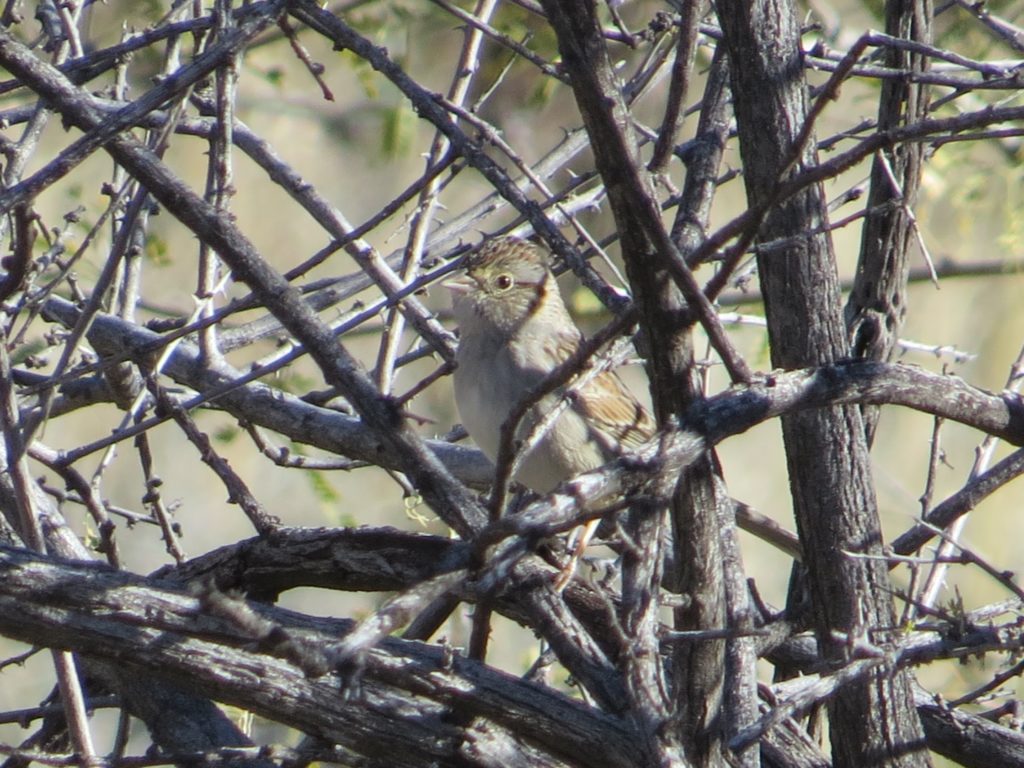
The mood on the way to Madera was light and easy. We got the FEPO. I honestly didn’t care if we dipped on the Thrush. But with that said, I still wanted to see it pretty bad too. It’s an insanely good bird, and just like the Fan-tailed Warbler, SE AZ opportunity was knocking. Once again I found myself in the intersection of right place and right time. Thrush or not, it’s always the right time to go to Madera Canyon.
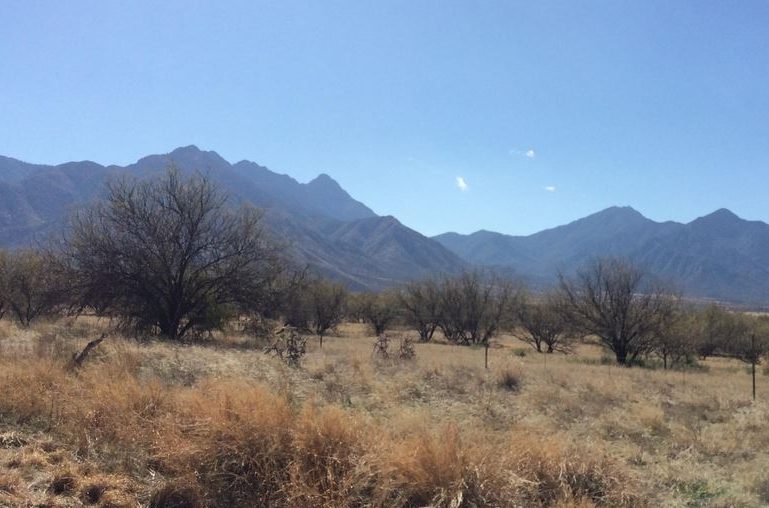
After we parked at the Proctor Road parking lot, we followed a paved trail where it had been seen. Like a bird dog, Caleb immediately disappeared from the trail in search of quarry. Again, Tommy was in total relaxation mode as the Boy was whacking the bushes for the White-throated Thrush and a Black-capped Gnatcatcher for me. Tommy and I idly strolled the trail, hoping to turn American Robins and Hermit Thrushes into the one thrush species that counted. Mexican Jays were loud and huge but not worth looking at, considering. We talked with other birders there trying to get the latest on the Thrush. Best we heard was that it was seen a couple hours prior. That was good news. It was around, and the Boy was on it. Some birders we visited with told us about a snoozing Whiskered Screech-Owl further up trail. The Owl victory lap idea was taking hold, distracting Tommy, Gordon, and me from the new major target of the day. Plus, you know, Caleb was out there, somewhere, handling things.
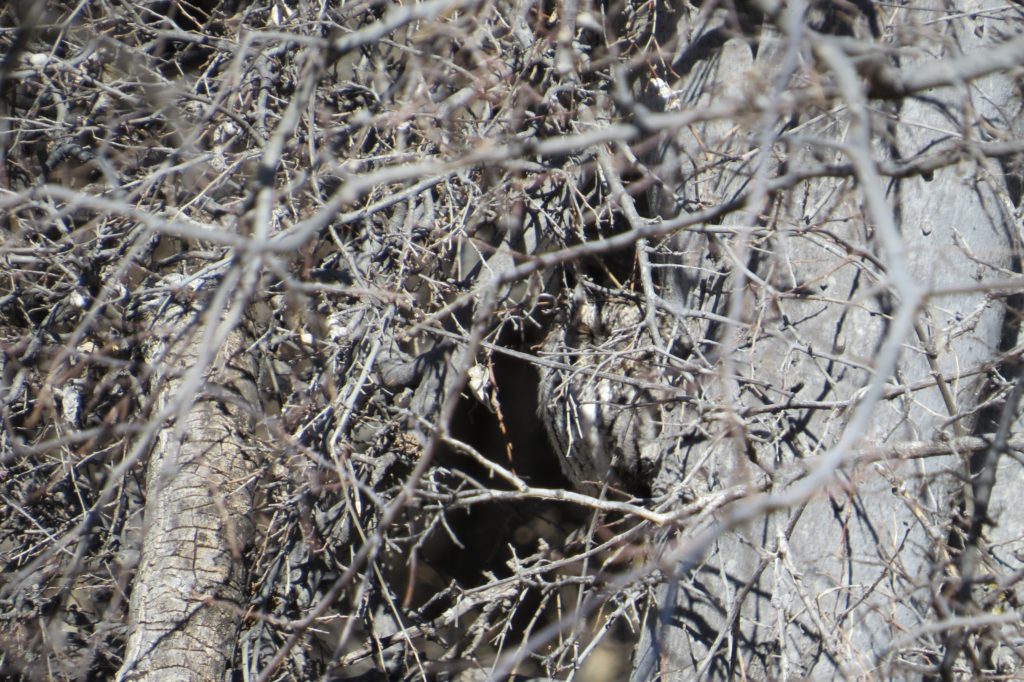 How someone spotted this thing I’ll never know. I could barely find it with multiple people pointing to it.
How someone spotted this thing I’ll never know. I could barely find it with multiple people pointing to it.
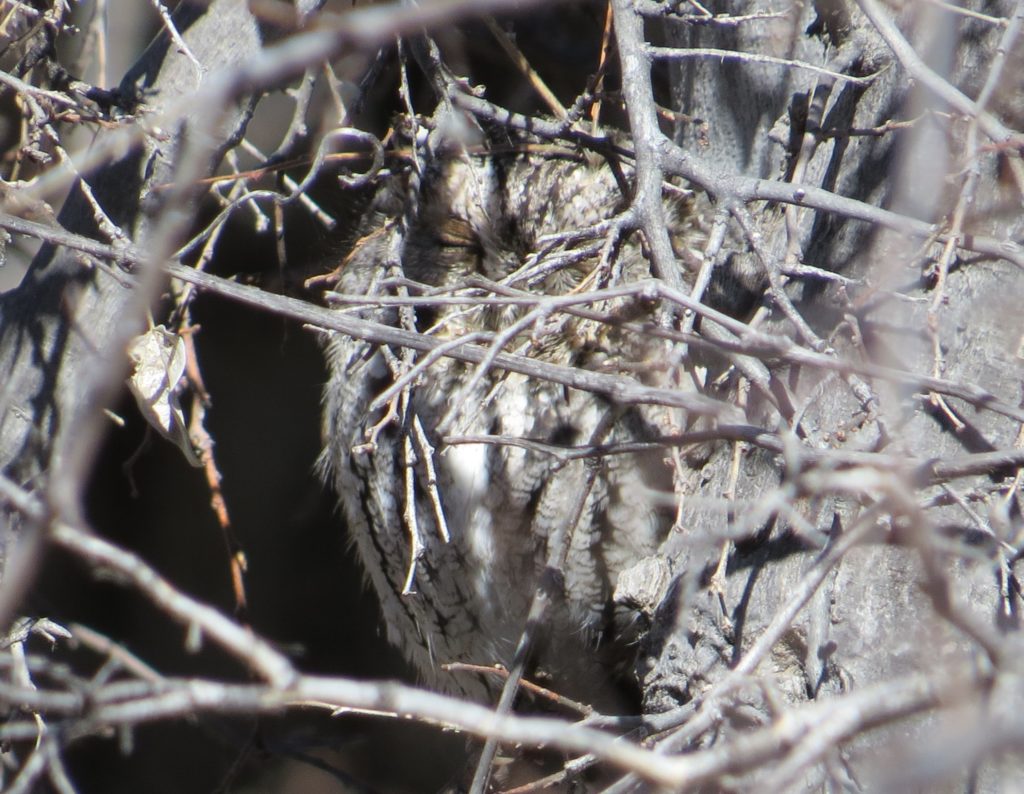 Tommy and I had barely resumed our Thrush sorting when I asked Tommy whatever happened to Caleb. I no sooner said those words, and the Boy came sprinting down the path toward us hollering (without breaking stride) that the Thrush had been spotted further up the trail. Caleb continued running and proclaiming the good news to everyone and their cousin, birders or not, that the White-throated Thrush was present.
Tommy and I had barely resumed our Thrush sorting when I asked Tommy whatever happened to Caleb. I no sooner said those words, and the Boy came sprinting down the path toward us hollering (without breaking stride) that the Thrush had been spotted further up the trail. Caleb continued running and proclaiming the good news to everyone and their cousin, birders or not, that the White-throated Thrush was present.
Tommy and I hustled up to the spot and caught a quick glimpse of it in the open on the ground before it retired to the treetops in terrible light. Pretty neat regardless.
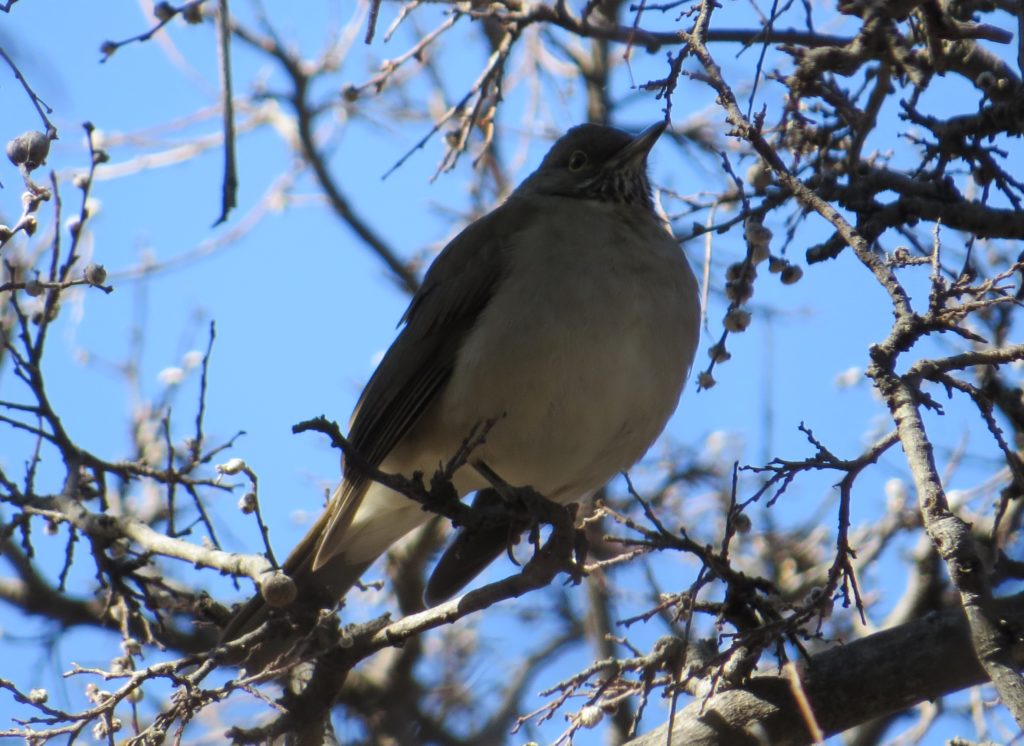
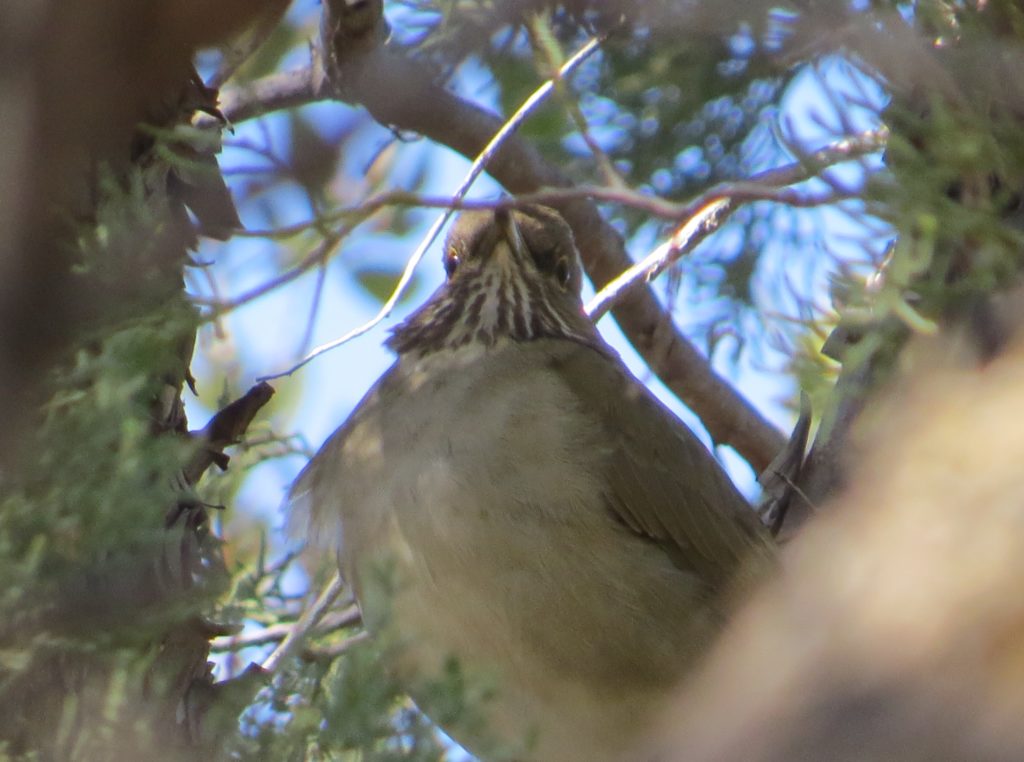
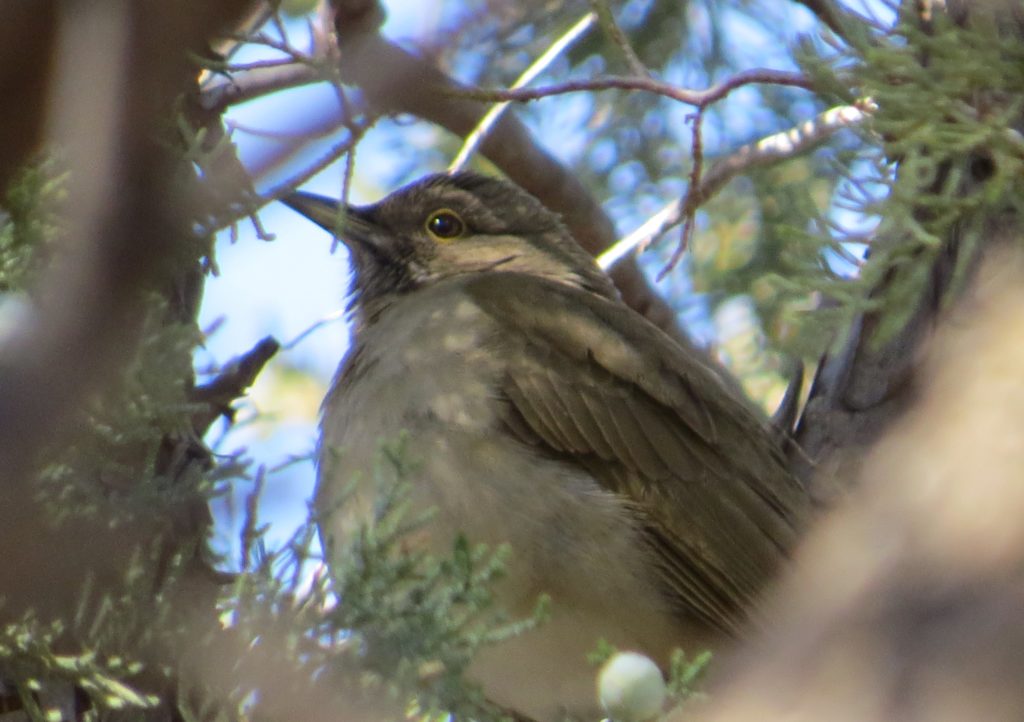 A bit of serendipity happened at the parking lot on the way out when a birder recognized Tommy. Turns out that birder was Linda Grant, the original finder of the famous Thrush. Linda had come back for better photos after her first ones were harried as bird photos can be when you realize you have a Mega and need to get the word out immediately. Tommy had written a great blog post on Linda’s discovery of the White-throated Thrush and on over two dozen birders’ reactions to the find. Linda and her husband were able to tell Tommy how much they enjoyed the post, and Tommy clearly enjoyed meeting this hero to hundreds of birders. A cool moment.
A bit of serendipity happened at the parking lot on the way out when a birder recognized Tommy. Turns out that birder was Linda Grant, the original finder of the famous Thrush. Linda had come back for better photos after her first ones were harried as bird photos can be when you realize you have a Mega and need to get the word out immediately. Tommy had written a great blog post on Linda’s discovery of the White-throated Thrush and on over two dozen birders’ reactions to the find. Linda and her husband were able to tell Tommy how much they enjoyed the post, and Tommy clearly enjoyed meeting this hero to hundreds of birders. A cool moment.
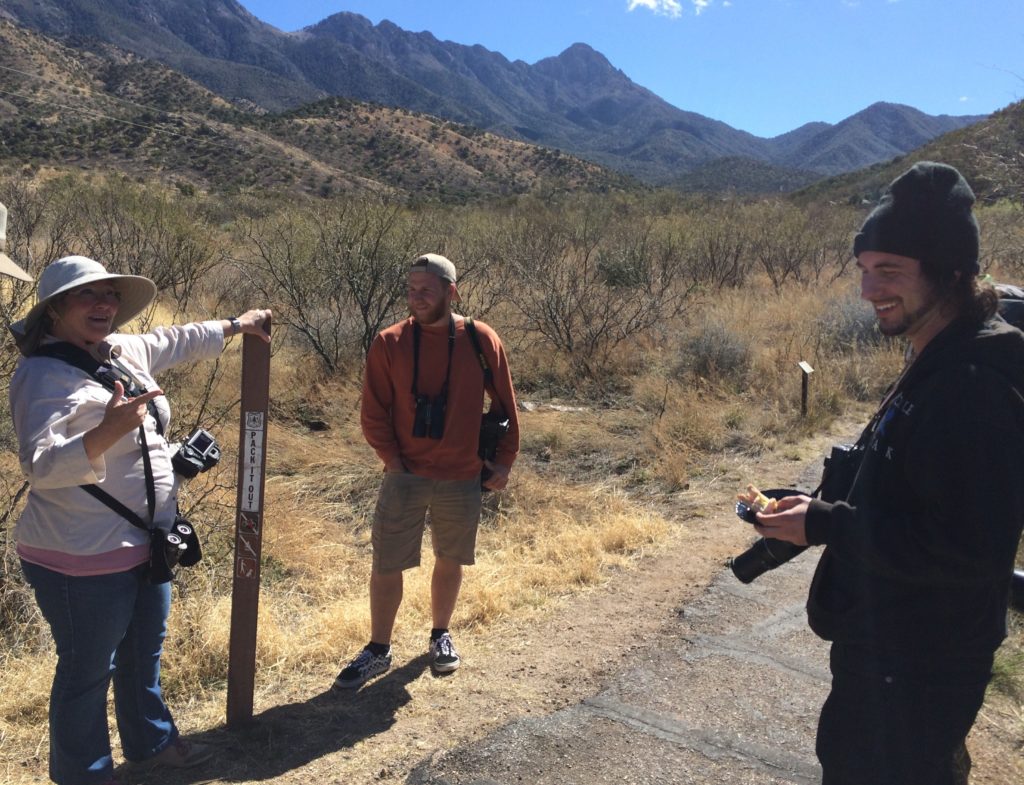
The intensity of Madera Canyon never ceases to amaze me. One would think that things would be pretty chill after my lifer FEPO and WTTH with a side helping of Whiskered-Screech. But it wasn’t. A stunning male Elegant Trogon had been spending the winter in the lower elevations near the White House Picnic Area, and fellow Thrush seekers had said it was around this day. Since that brief encounter with a Trogon a few years back higher up on the Super Trail, I have wanted a better experience with this bird.
This was the day. We saw the ELTR paparazzi staked out at a pyracantha tree loaded with berries along the road. The tree is a favorite buffett of the Trogon. Unfortunately we were told the Trogon had just flown off, but not to worry because it would be back. I’m an impatient birder, especially when borrowing time against a family vacation. So I looked into the oak woods in the direction people said it flew. And that’s when I spotted it–one lady up on the hillside aiming a massive camera at a random spot in the trees. There would be only one reason for that. I scrambled up the rocky hillside and quickly found her target.
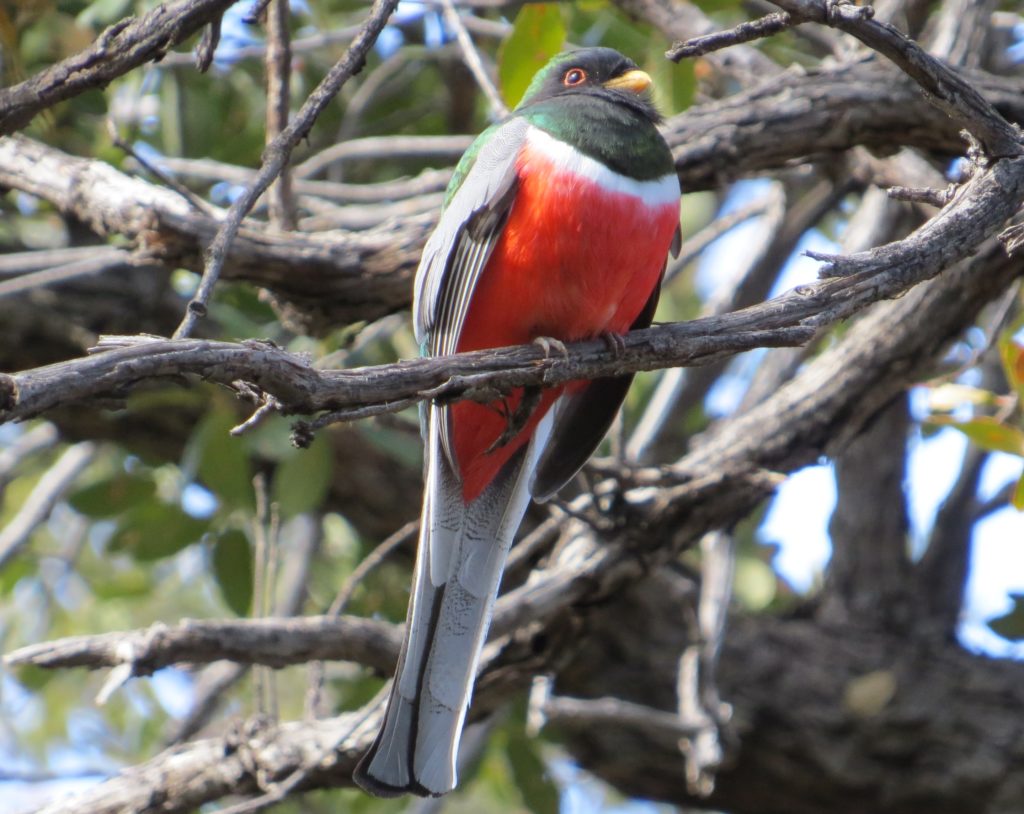 The Trogon was incredibly tame and would sit for long periods of time on a perch before moving a short distance, easy to find and easy to approach. SE AZ never ceases to amaze me. This was a stunning moment. And, AZ birders will have to forgive me, but this was just as big a thrill or bigger than the Thrush.
The Trogon was incredibly tame and would sit for long periods of time on a perch before moving a short distance, easy to find and easy to approach. SE AZ never ceases to amaze me. This was a stunning moment. And, AZ birders will have to forgive me, but this was just as big a thrill or bigger than the Thrush.
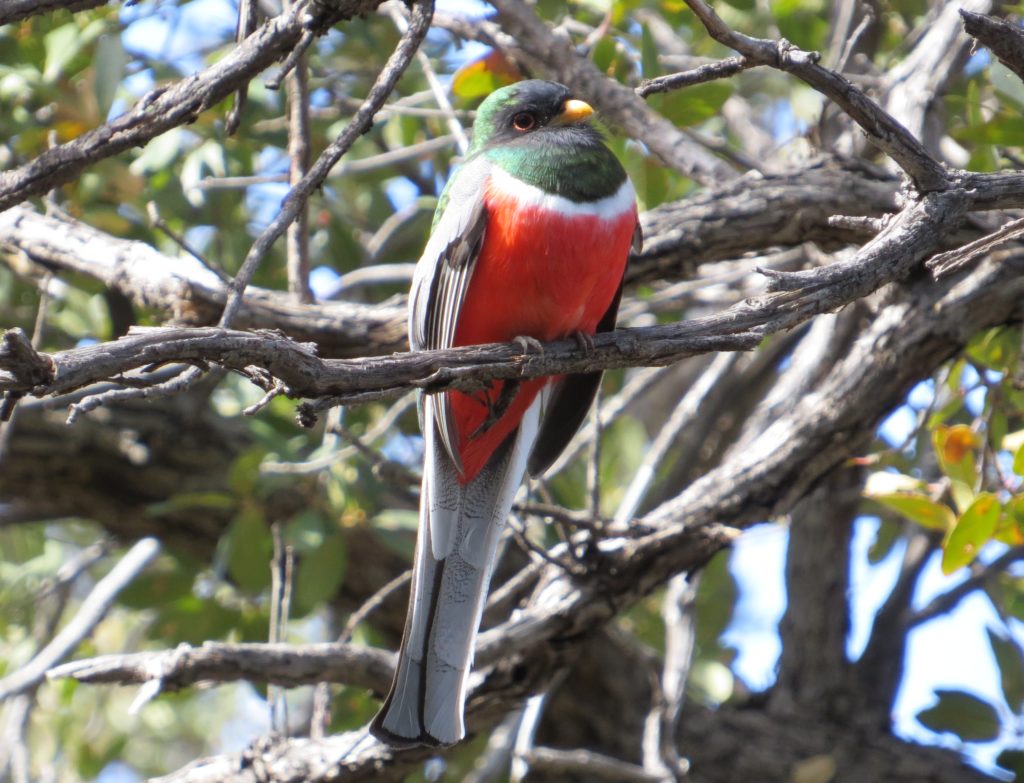 In 2015 my only real photo of the Elegant Trogon was from the back. This was a refreshing and a much yearned for change. I, of course, got to see the back this time too and once again admire that coppery tail that it was once named for.
In 2015 my only real photo of the Elegant Trogon was from the back. This was a refreshing and a much yearned for change. I, of course, got to see the back this time too and once again admire that coppery tail that it was once named for.
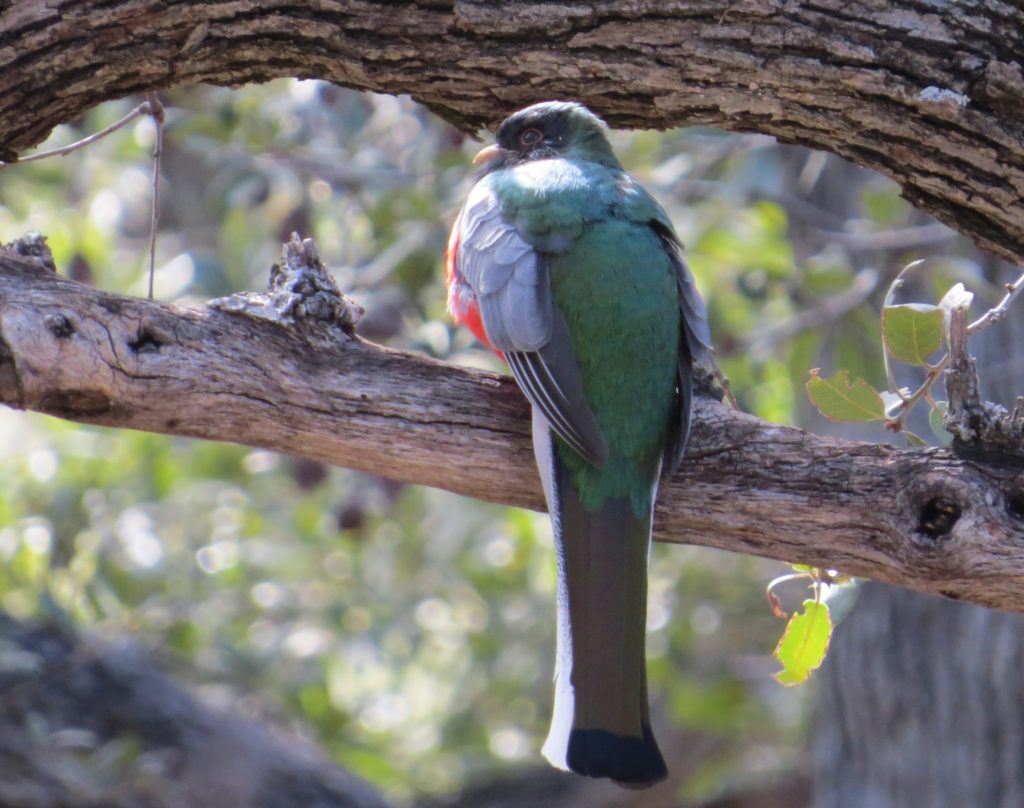
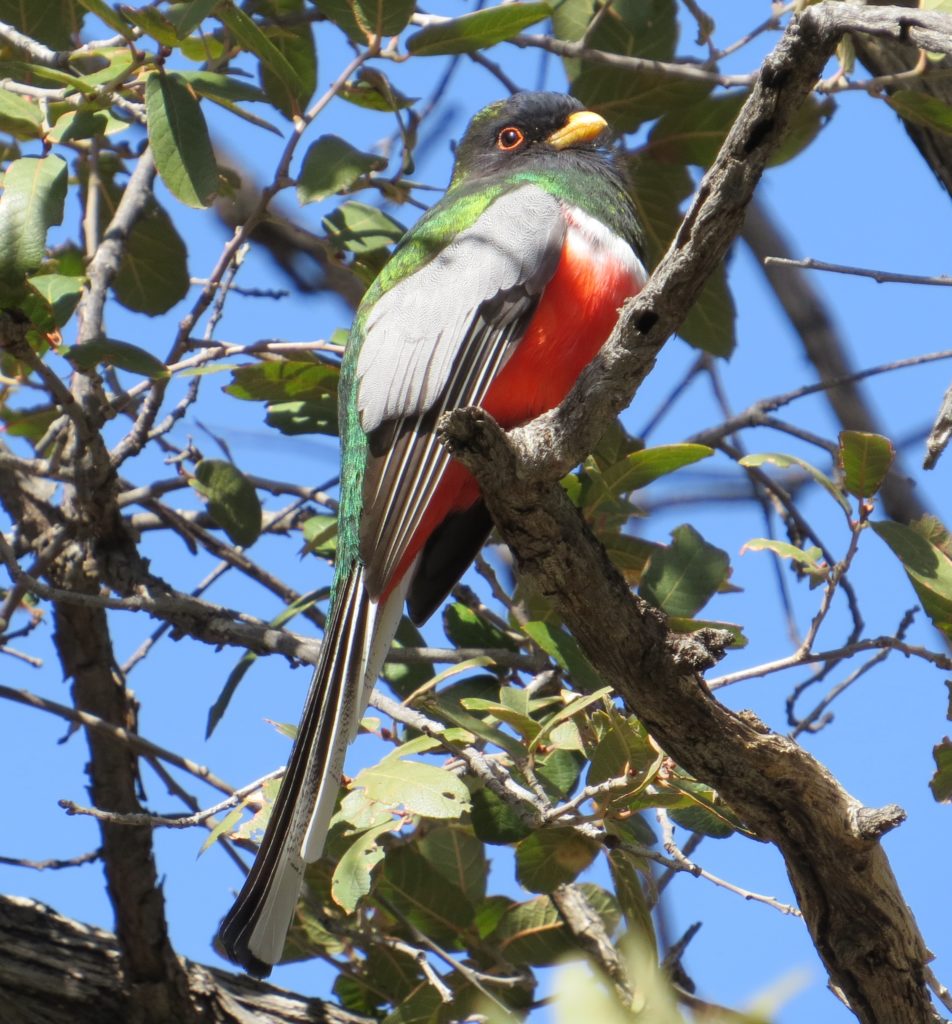
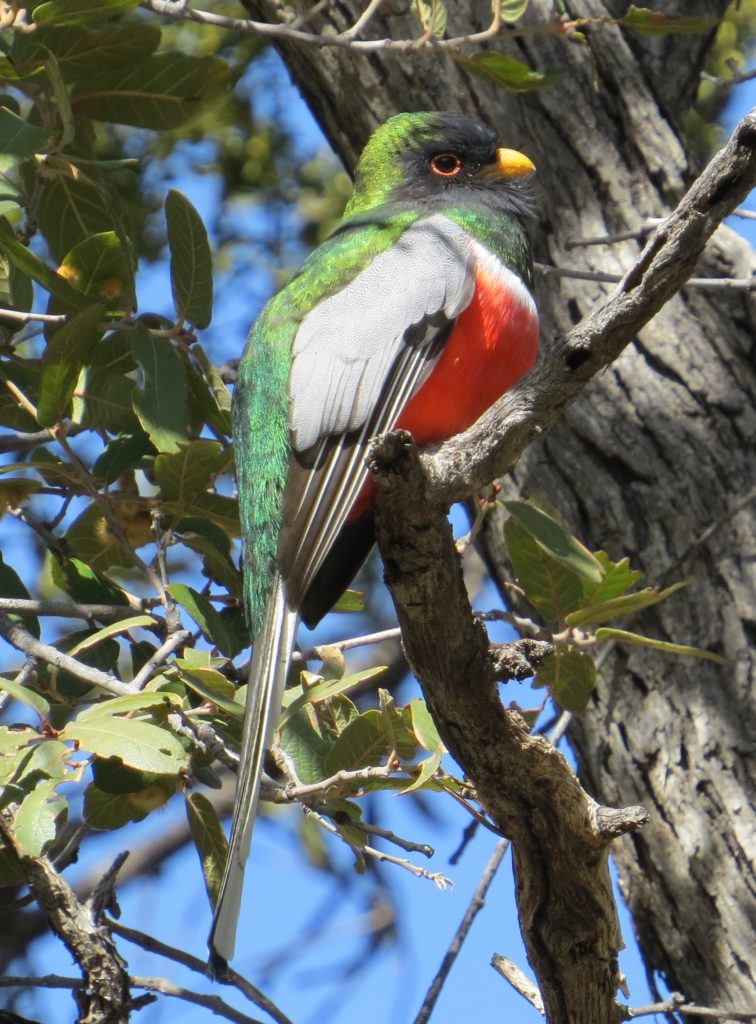 This was a Trogon-crushfest, enjoyed by even the most experienced of locals…
This was a Trogon-crushfest, enjoyed by even the most experienced of locals…
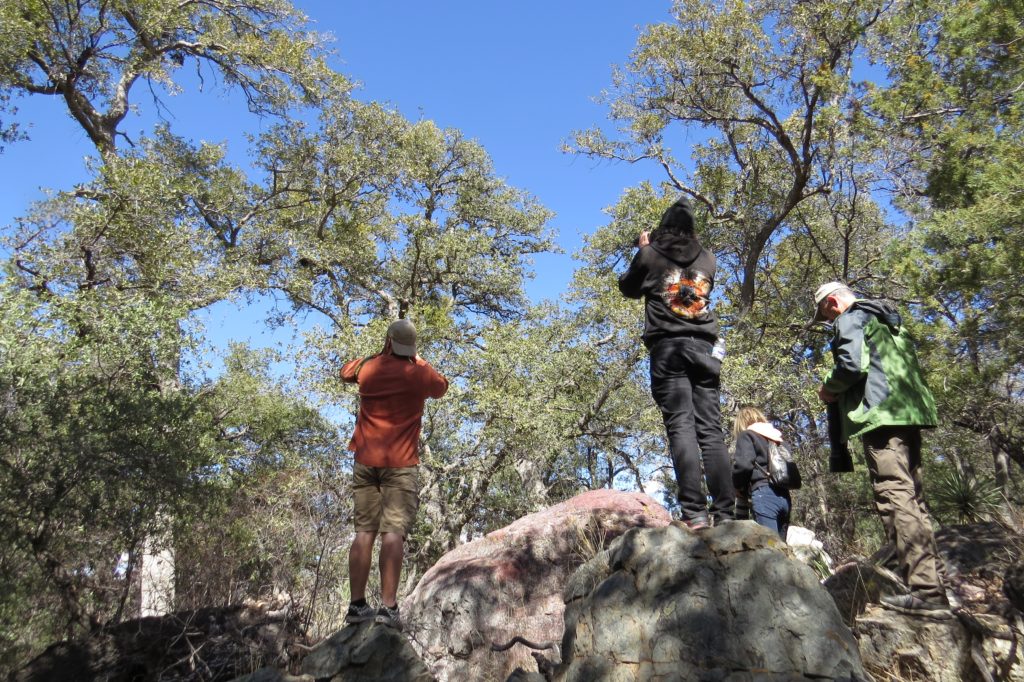
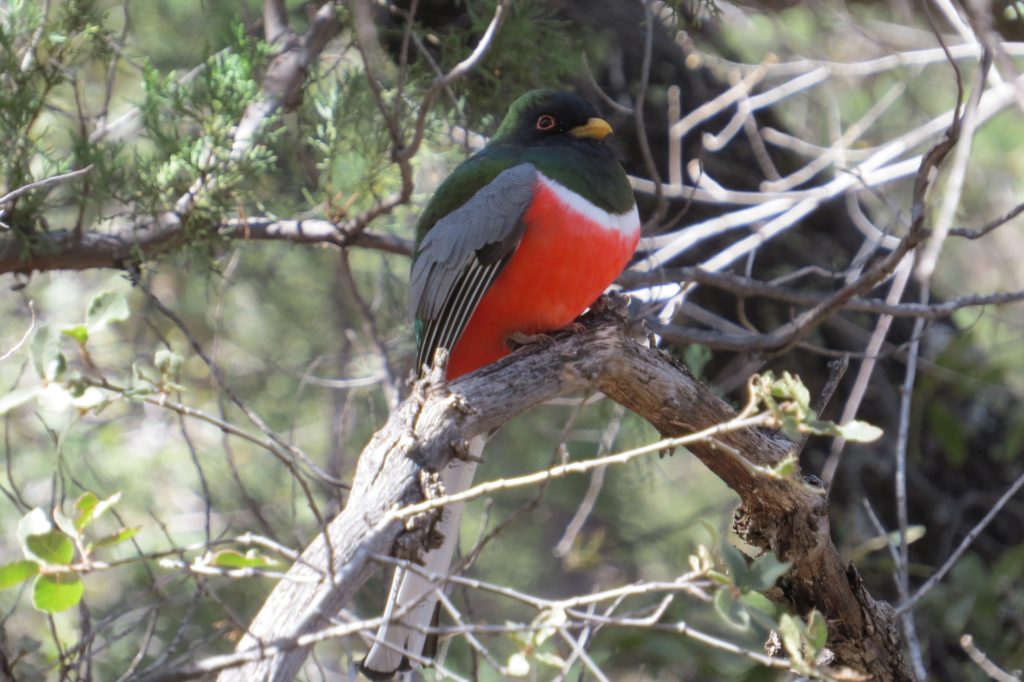
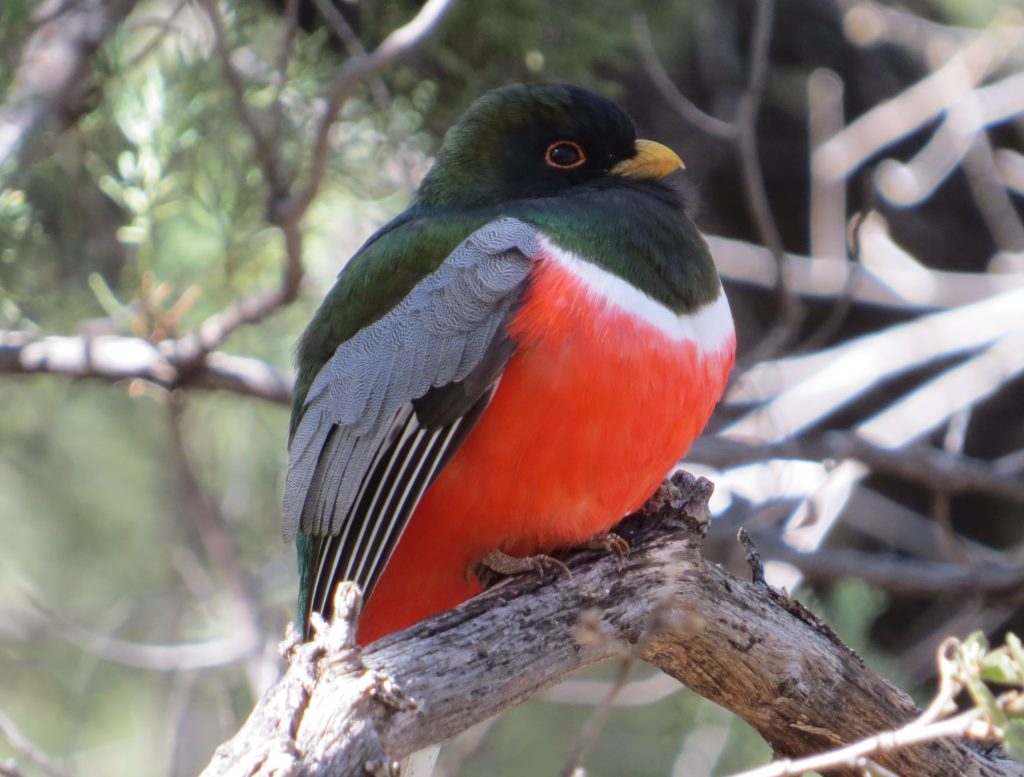 Obviously I had a hard time prying myself away from that bird, but the clock was ticking and the birding queue had a new line leader. Would I have liked to go to the Santa Rita Lodge and try to get a better look at a Blue-throated Hummingbird? Yes. Would I have liked to pick up some fresh Trogon gear at the gift shop? Also yes. But did I? Sadly, no. Time was slipping by, and the one bird I needed was in nearby Green Valley. Lawrence’s Goldfinches have irrupted this winter all over the place, and the Canoa Ranch was a stronghold for them. I needed to grab this bird while I could since this was the year for that bird. I have never seen reports of them in other years on my visits. But first we made a quick stop down by Proctor Road to look for a Black-capped Gnatcatcher. No dice, again.
Obviously I had a hard time prying myself away from that bird, but the clock was ticking and the birding queue had a new line leader. Would I have liked to go to the Santa Rita Lodge and try to get a better look at a Blue-throated Hummingbird? Yes. Would I have liked to pick up some fresh Trogon gear at the gift shop? Also yes. But did I? Sadly, no. Time was slipping by, and the one bird I needed was in nearby Green Valley. Lawrence’s Goldfinches have irrupted this winter all over the place, and the Canoa Ranch was a stronghold for them. I needed to grab this bird while I could since this was the year for that bird. I have never seen reports of them in other years on my visits. But first we made a quick stop down by Proctor Road to look for a Black-capped Gnatcatcher. No dice, again.
Thankfully, the LAGOs were where they were supposed to be, if only for a minute.
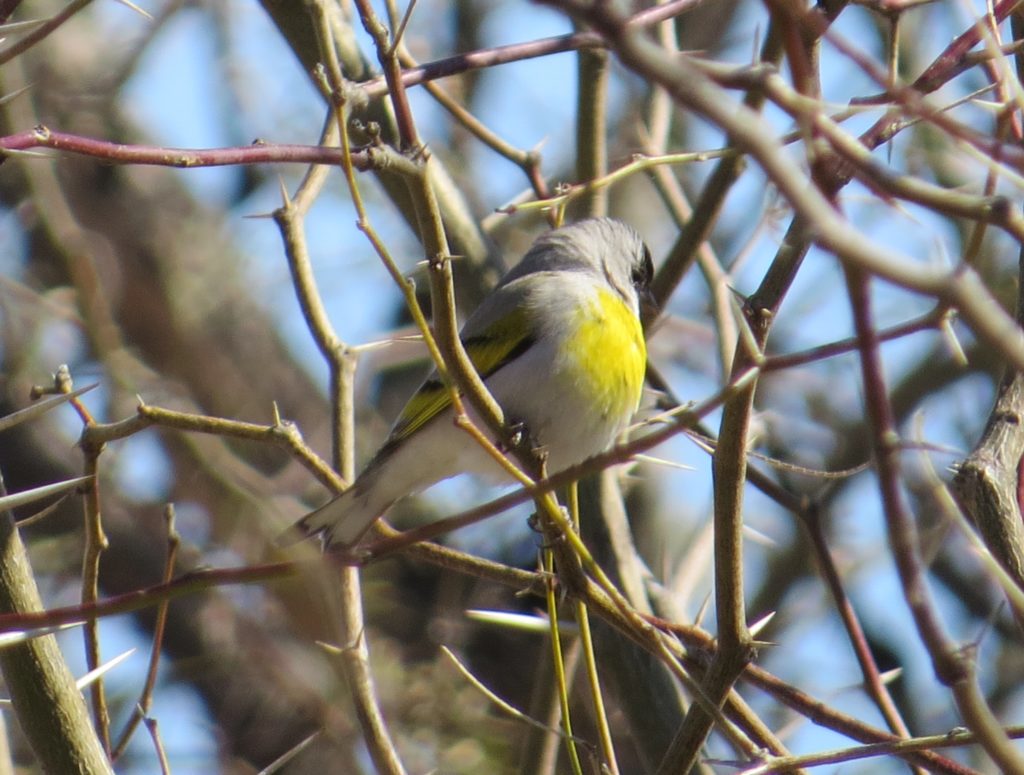 It was now time to bust back to Mom and Dad’s. Mom was putting on a spread for the birders and non-birders. By the end of the day we were all stuffed–with good food and good birds.
It was now time to bust back to Mom and Dad’s. Mom was putting on a spread for the birders and non-birders. By the end of the day we were all stuffed–with good food and good birds.
We scarcely had time to sleep off the food/bird coma as Dad, Gordon, Tommy, and I had a date with destiny early the next morning. After putting it off for many years, it was finally time to reconcile my staggering AZ Thrasher deficit. I was finally going to the Thrasher Spot, a place west of Phoenix known by every serious birder. It’s even marked on Google Maps. Thrashers had never been my thing as I always opted for the flashier and owlier birds of AZ, so it never made it to the top of the queue. But now with five potential life birds out there with practically nothing else for me to pursue in the state, I was eager to finally go. I’m glad I saved this little cache of lifers for so long. I don’t think I would have appreciated it nearly as much in my early birding career.
Now most people might look at this and see a wasteland with random fire pits and broken plastic chairs with the rising steam from the Palo Verde nuclear plant as a backdrop, steam from a plant not cooled by a natural body of water but by treated sewage from nearby municipalities… But a birder sees a beautiful landscape, full of opportunity. For at the center of this photo sits the lightly colored LeConte’s Thrasher, singing his song above the scrub.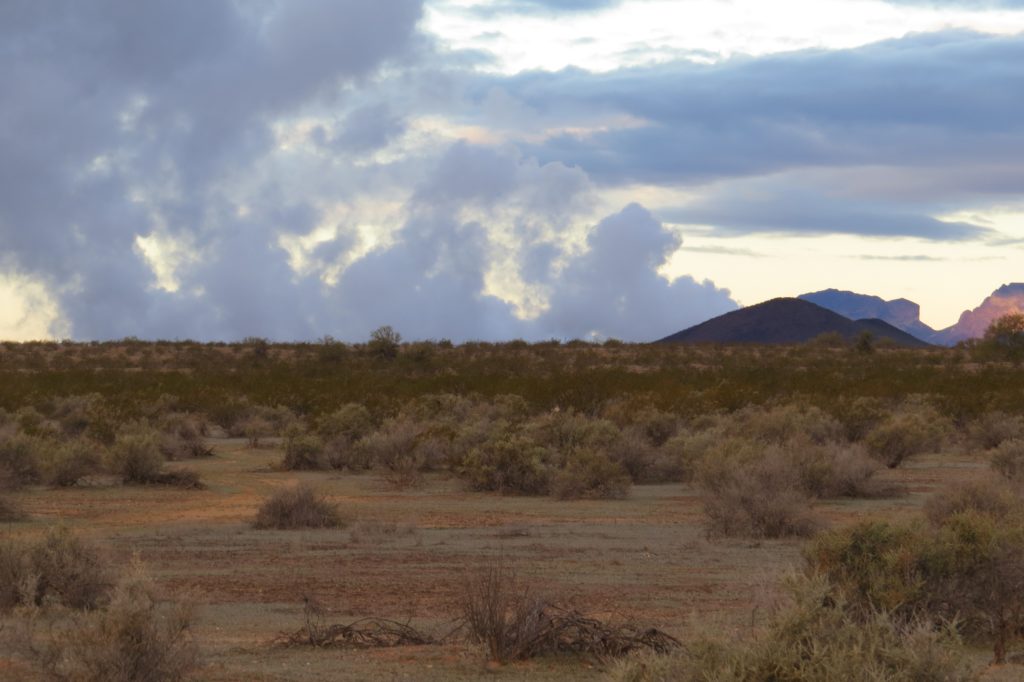
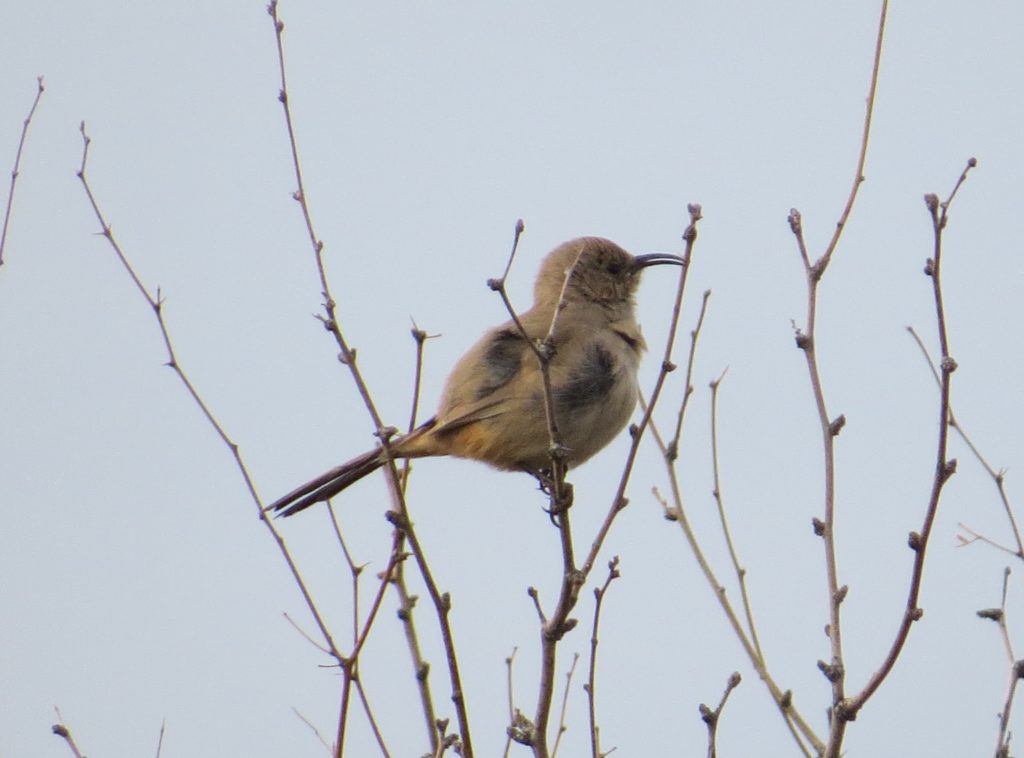 It was one lifer down with four to go. Two thoughts struck me on my first visit to the Thrasher Spot. One was that I couldn’t believe how flat the ground was.
It was one lifer down with four to go. Two thoughts struck me on my first visit to the Thrasher Spot. One was that I couldn’t believe how flat the ground was.
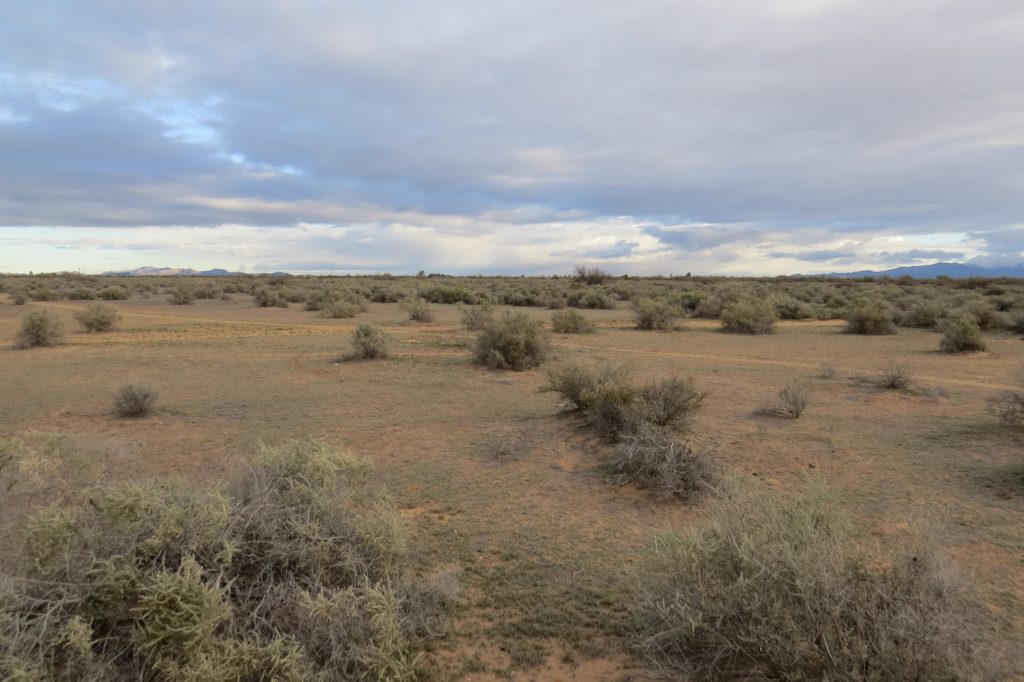
The other was that I had an expectation of easy lifering in short order with minimal walking. From other blogs I’ve read over the years, I had this thought that we’d just walk a short ways and crush all the Thrashers and the two Sparrows in the same bush. I couldn’t have been more wrong. At least the walking was easy.
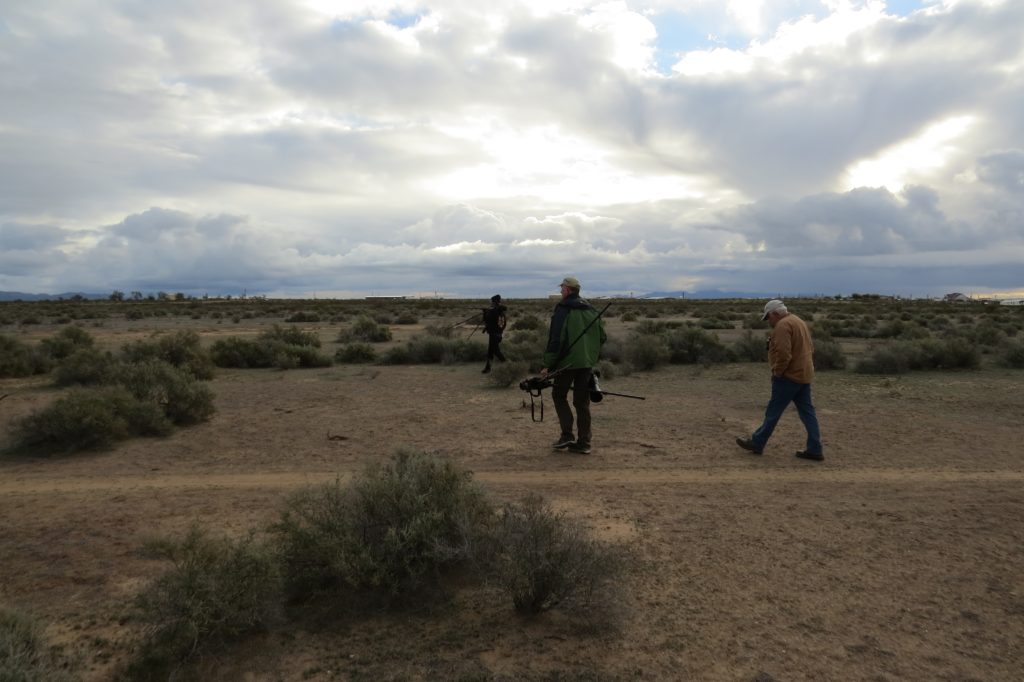 Though not completely unexpected, there were sightings of a couple different old men wandering alone and somewhat aimlessly trying to tally some Thrasher lifers for themselves. At least I wasn’t as late to the party as these guys. The sparse saltbush- studded landscape was not only good habitat for the occasional septagenerian but also for numerous Sagebrush Sparrows (lifer) that would run with tails held high from bush to bush. I was shocked to learn they didn’t respond to pishing. What kind of Sparrows are these anyway? Good looks at these birds and the others were tough to come by. Pressing on and going wider in our search efforts, we eventually locked up a Bendire’s Thrasher lifer.
Though not completely unexpected, there were sightings of a couple different old men wandering alone and somewhat aimlessly trying to tally some Thrasher lifers for themselves. At least I wasn’t as late to the party as these guys. The sparse saltbush- studded landscape was not only good habitat for the occasional septagenerian but also for numerous Sagebrush Sparrows (lifer) that would run with tails held high from bush to bush. I was shocked to learn they didn’t respond to pishing. What kind of Sparrows are these anyway? Good looks at these birds and the others were tough to come by. Pressing on and going wider in our search efforts, we eventually locked up a Bendire’s Thrasher lifer.
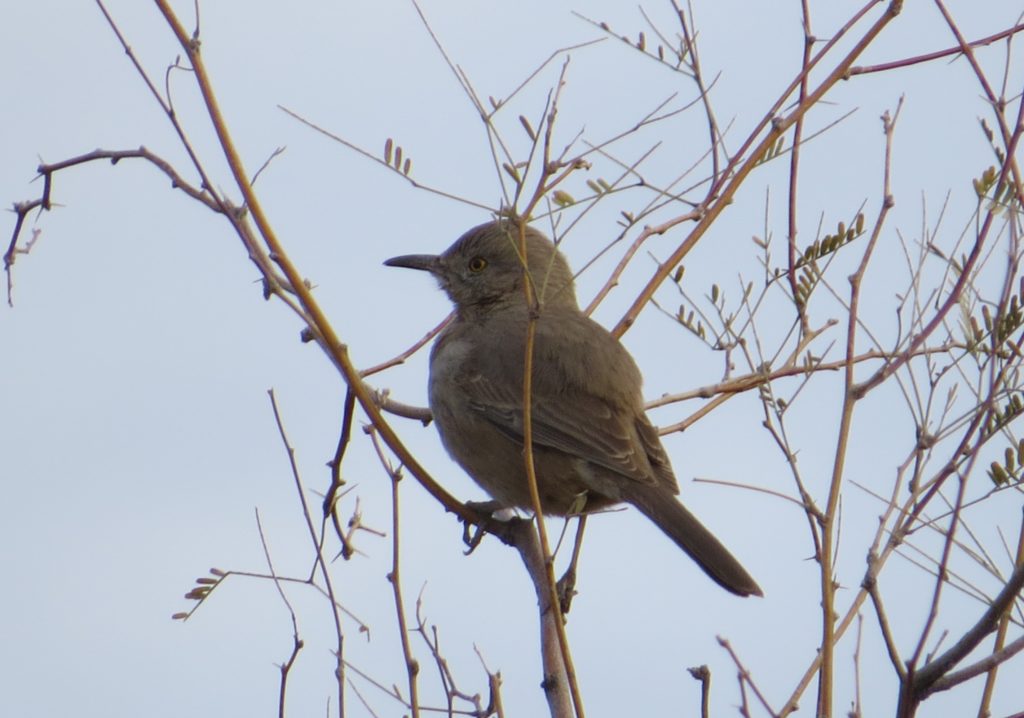 By this time, the sun was finally showing itself and warming up our frozen bodies. The birds seemed to enjoy it too as we finally started to get some good looks of perching Sagebrush Sparrows.
By this time, the sun was finally showing itself and warming up our frozen bodies. The birds seemed to enjoy it too as we finally started to get some good looks of perching Sagebrush Sparrows.
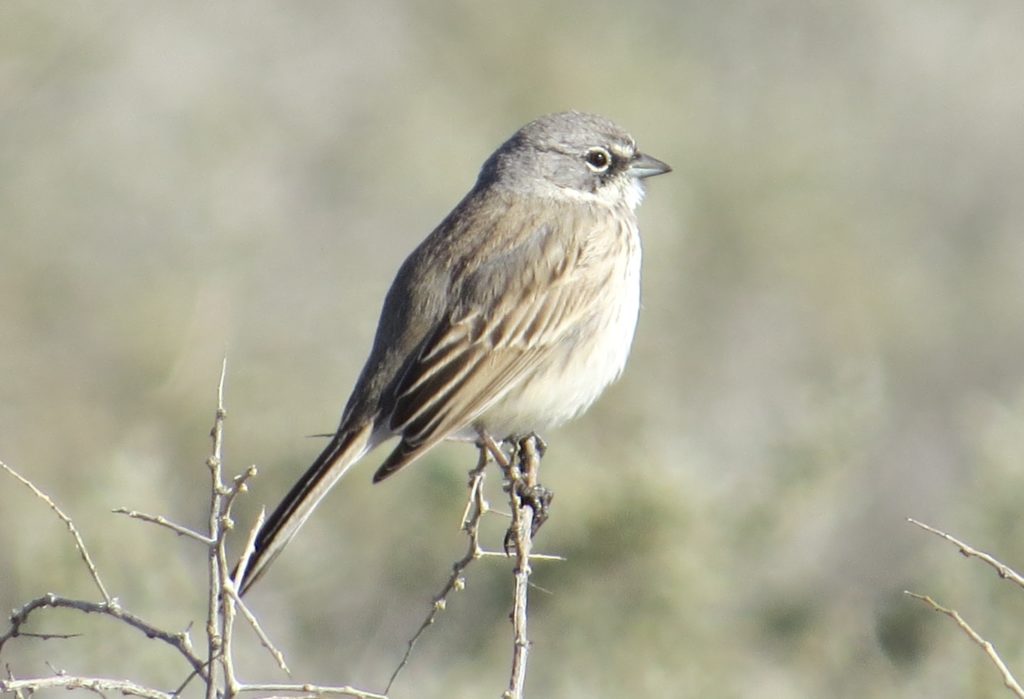 Tommy was able to spy the more rare doppelganger Bell’s Sparrow to make my fourth lifer of five for the morning. The Bell’s is told apart from the Sagebrush Sparrow by its bolder, thicker malar stripe and its unstreaked back.
Tommy was able to spy the more rare doppelganger Bell’s Sparrow to make my fourth lifer of five for the morning. The Bell’s is told apart from the Sagebrush Sparrow by its bolder, thicker malar stripe and its unstreaked back.
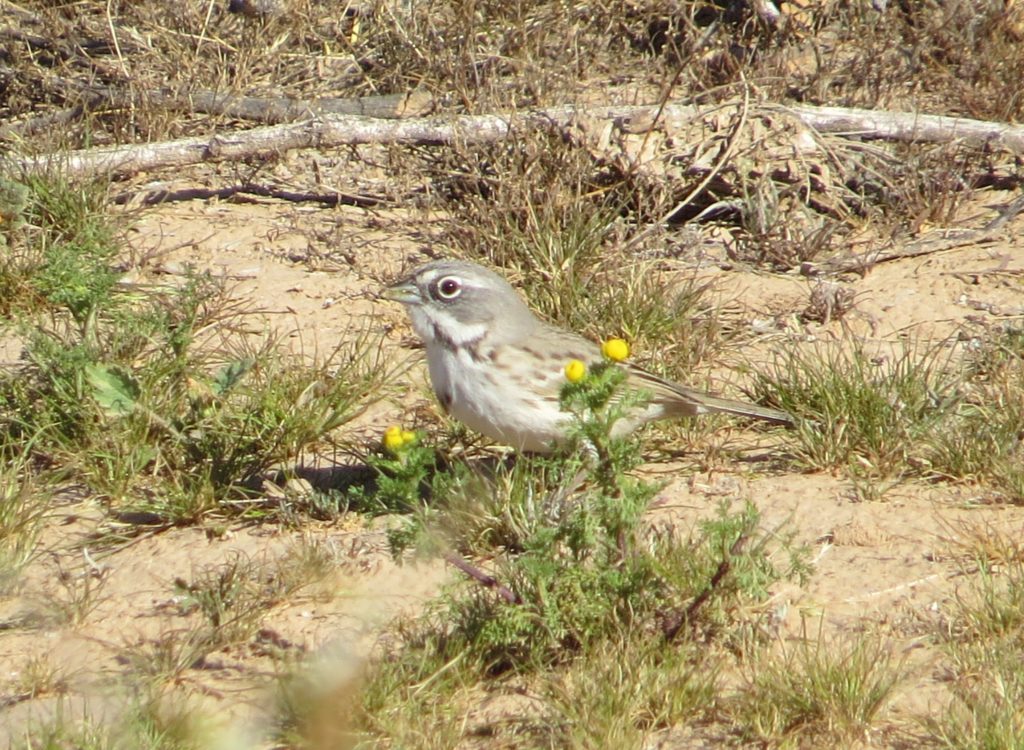
Despite our best efforts and lots more walking, we could not rustle up a Crissal Thrasher. It was time to head out and leave the Thrasher Spot behind. It had been a satisfying experience. On the way home there were a couple more pitstops. Gordon knew just where to go to get me a Common Ground-Dove lifer at a large stand of overgrown palm trees.
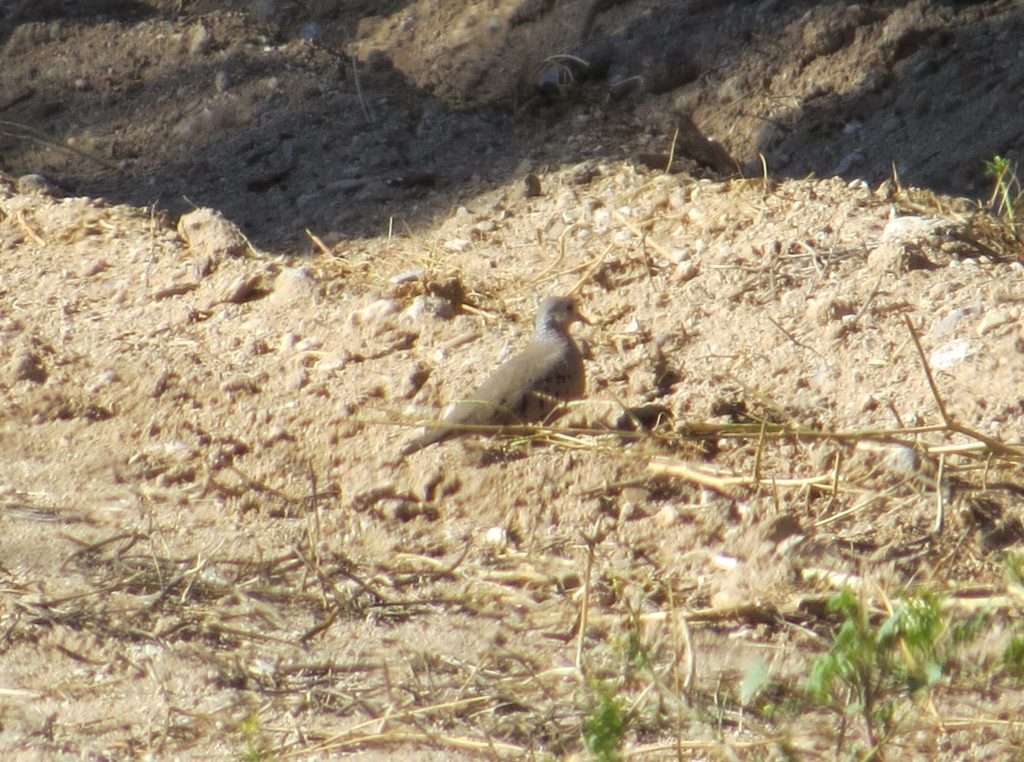 I repaid Gordon by spotting a raptor flying over us. I casually asked the guys what it was since they were making an eBird checklist. Turns out it was a Crested Caracara, a county bird for Gordon and only the second one Tommy has seen in Maricopa County.
I repaid Gordon by spotting a raptor flying over us. I casually asked the guys what it was since they were making an eBird checklist. Turns out it was a Crested Caracara, a county bird for Gordon and only the second one Tommy has seen in Maricopa County.
Our next and final stop was a dead end road that was great for all kinds of birds, including the occasional Burrower (my Maricopa BUOW).
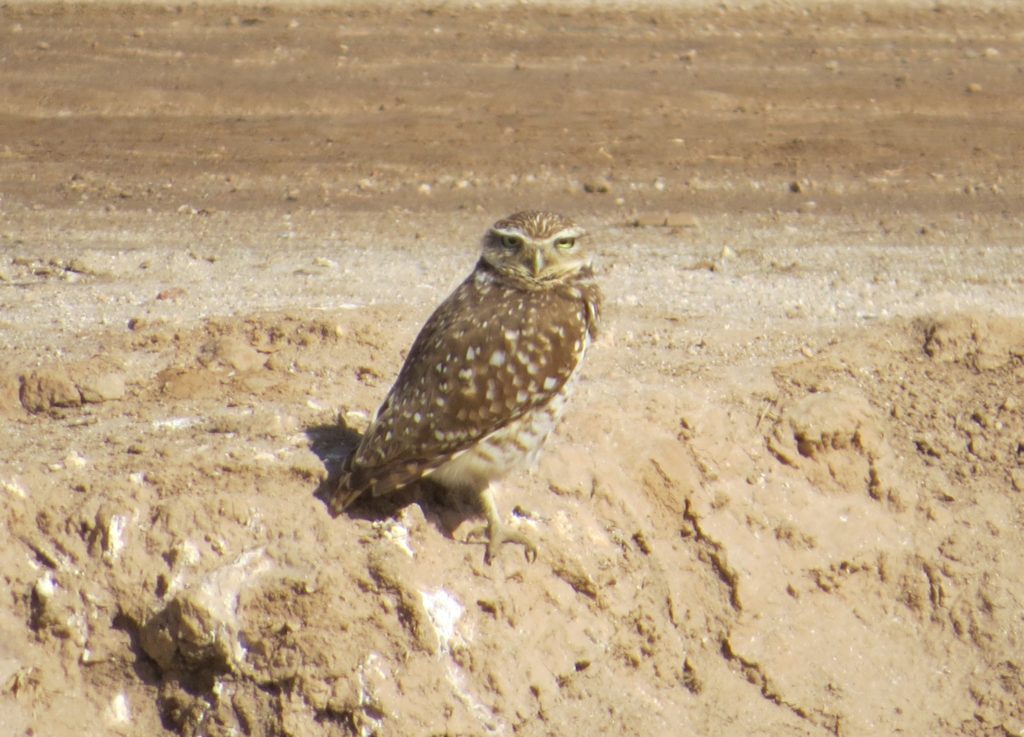 At the end of the dead end road, Tomy finally heard it–a Crissal Thrasher. Unfortunately no views were had of the true curve-billed Thrasher. So it goes. It’s hard to have any misgivings or least find anyone sympathetic whining about not seeing a CRTH when the birding had been sooo good. What’s next, Arizona? After 123 life birds in eight trips, I seriously have no idea and no plans.
At the end of the dead end road, Tomy finally heard it–a Crissal Thrasher. Unfortunately no views were had of the true curve-billed Thrasher. So it goes. It’s hard to have any misgivings or least find anyone sympathetic whining about not seeing a CRTH when the birding had been sooo good. What’s next, Arizona? After 123 life birds in eight trips, I seriously have no idea and no plans.

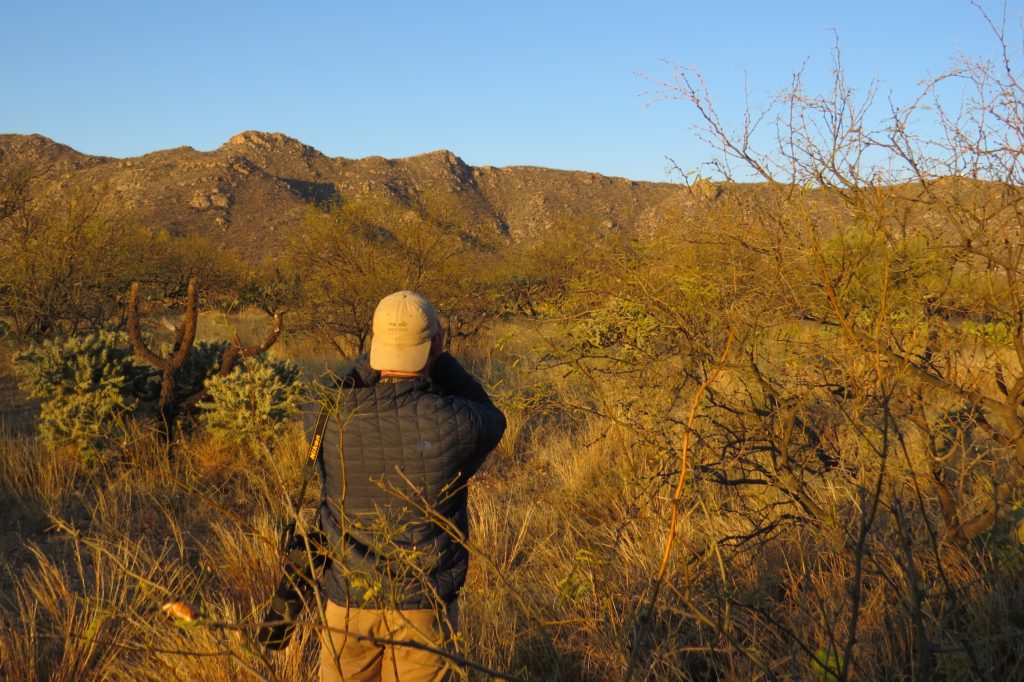
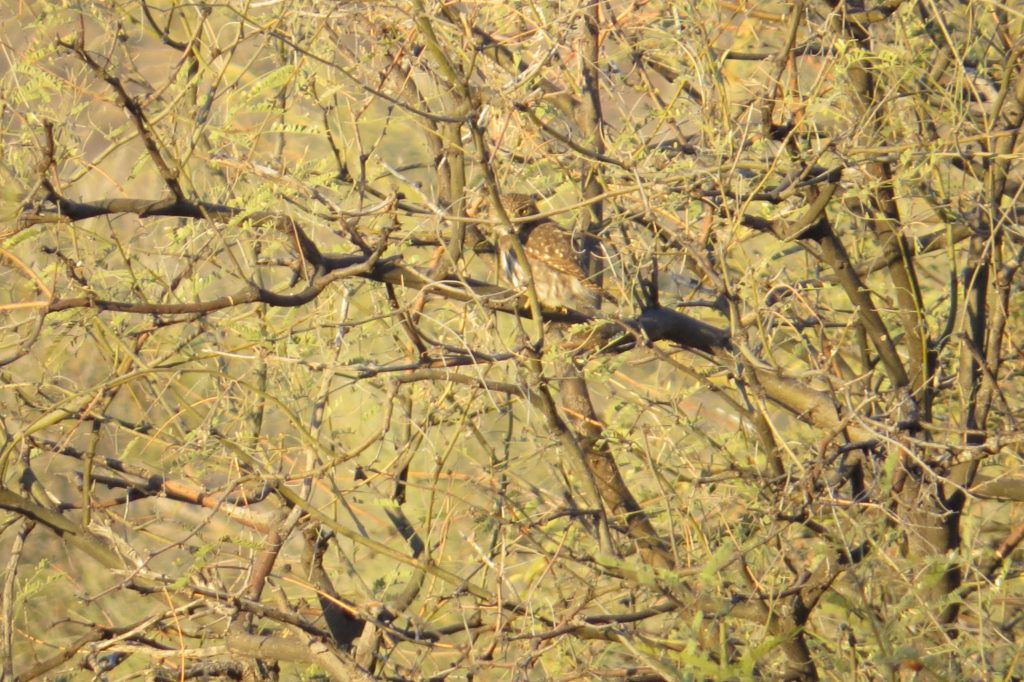
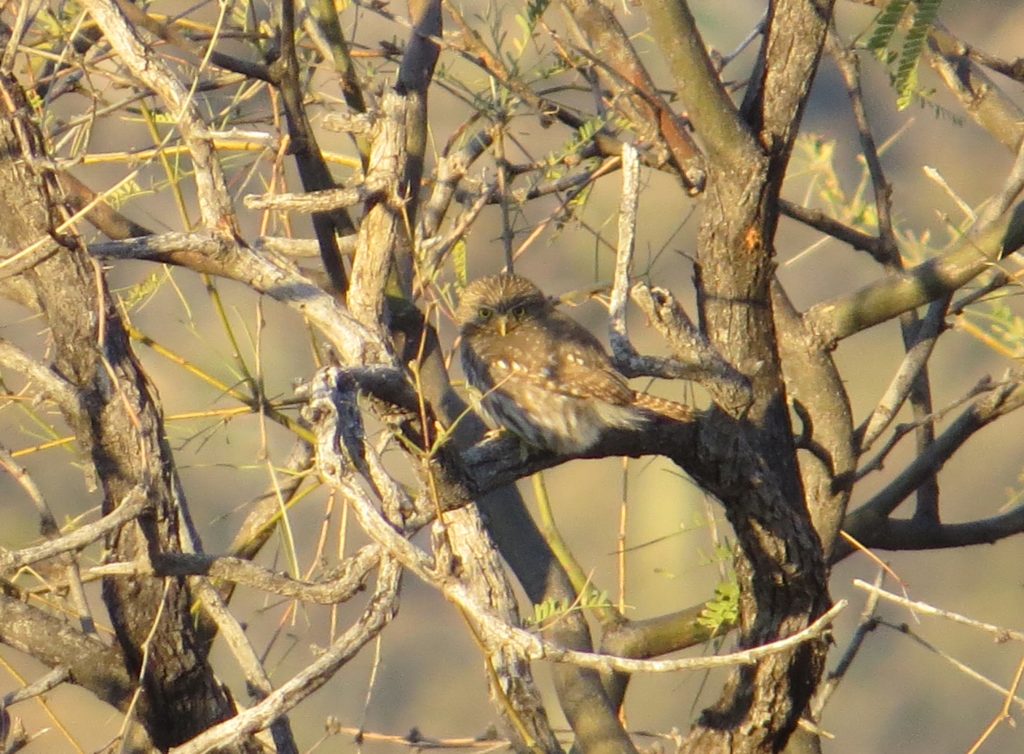
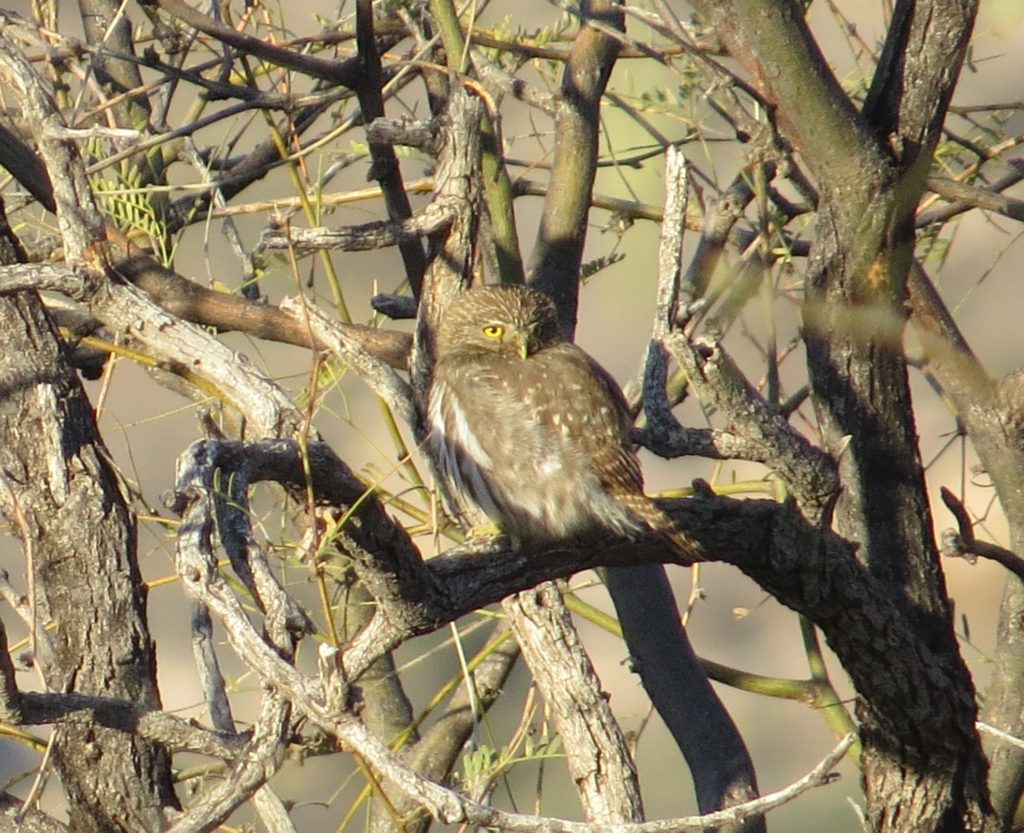
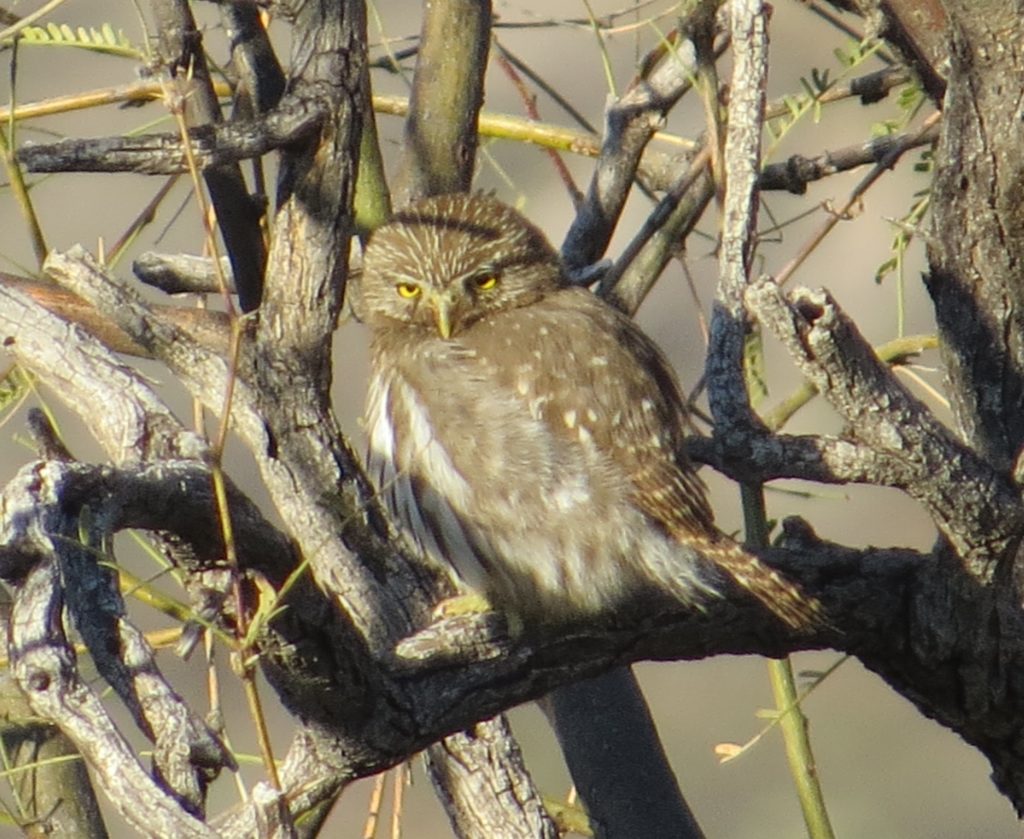 Note the black, false “eyes” on the back of its head to ward off predators.
Note the black, false “eyes” on the back of its head to ward off predators.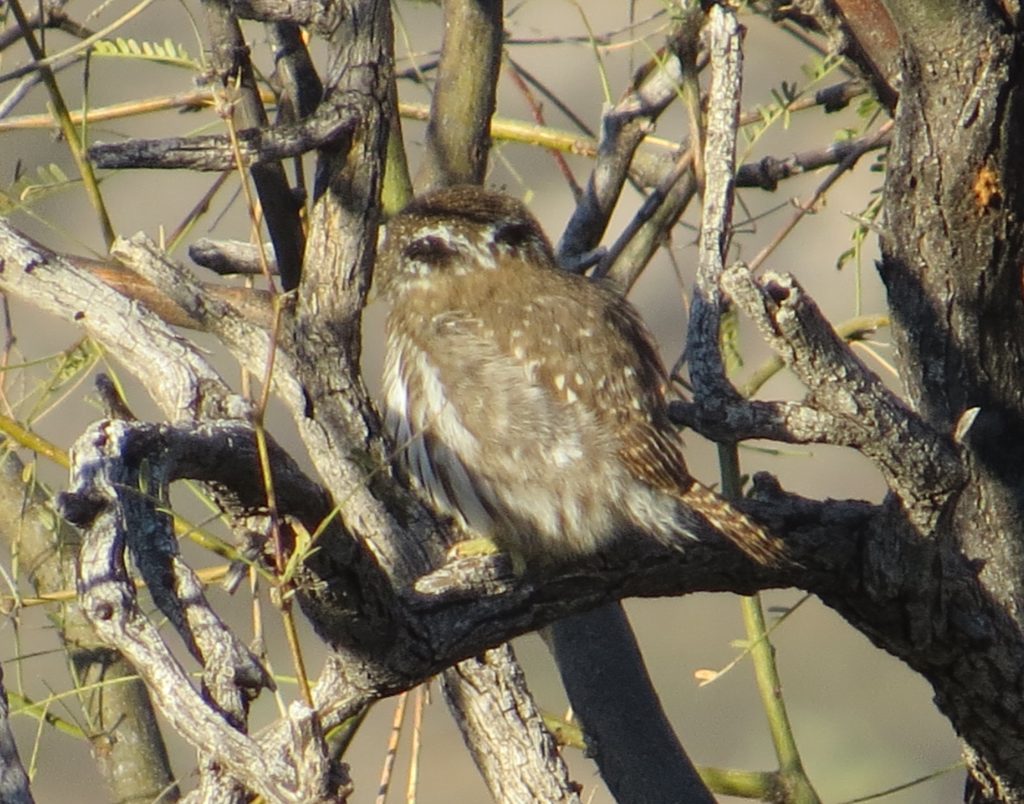 Here you can see a white throat patch that is visible when it vocalizes.
Here you can see a white throat patch that is visible when it vocalizes.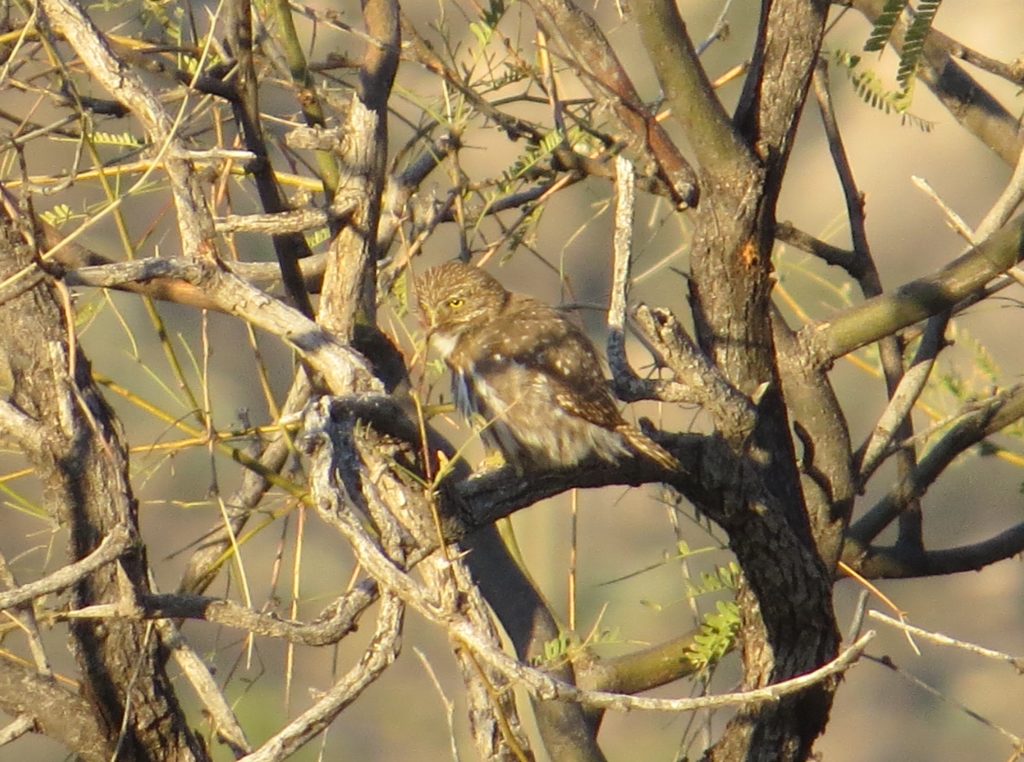 This is a short clip of the FEPO vocalizing.
This is a short clip of the FEPO vocalizing.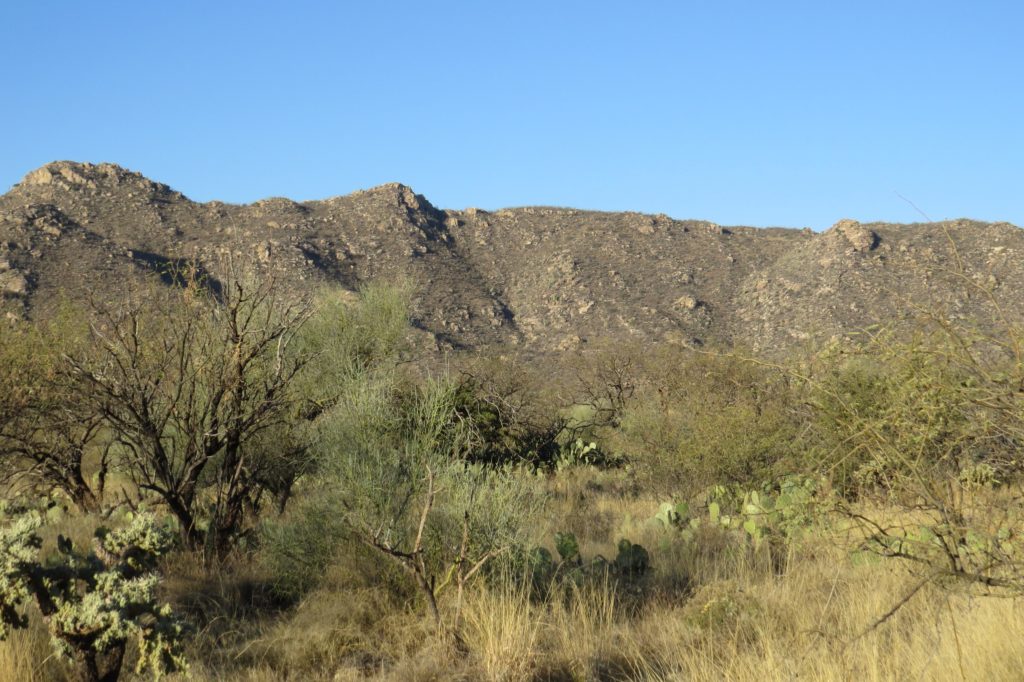
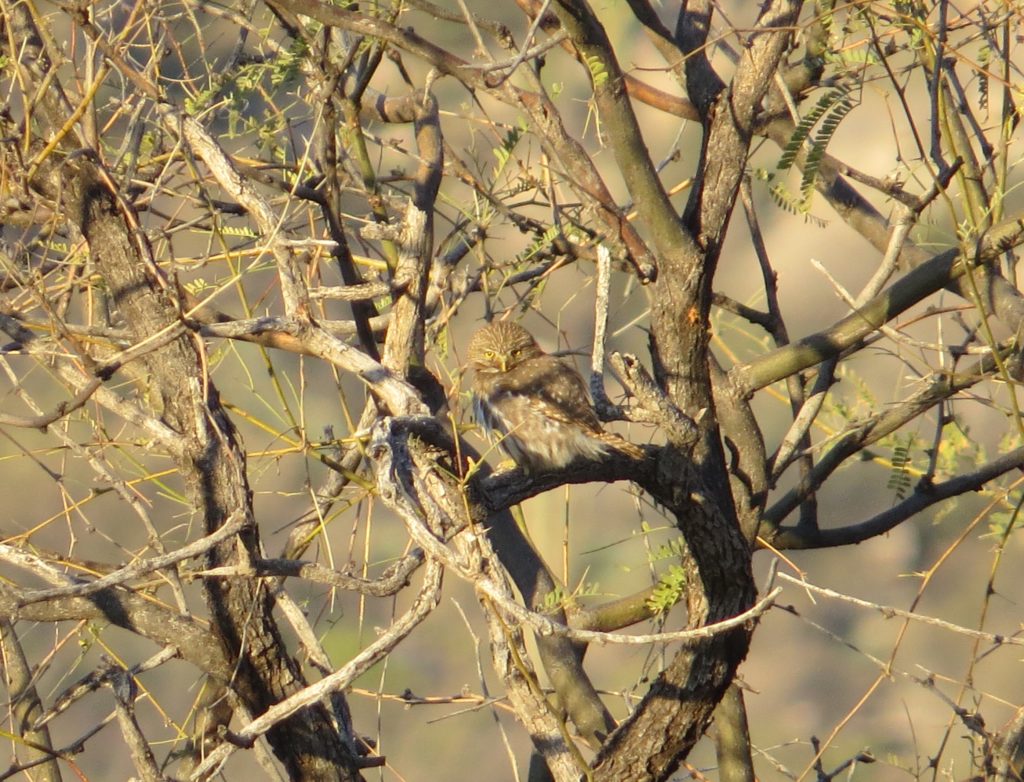 We enjoyed this Owl for the better part of an hour. For most of that time it stayed on this perch but eventually flew off. We did track it down again, but it went into deeper, thicker vegetation with worse views.
We enjoyed this Owl for the better part of an hour. For most of that time it stayed on this perch but eventually flew off. We did track it down again, but it went into deeper, thicker vegetation with worse views.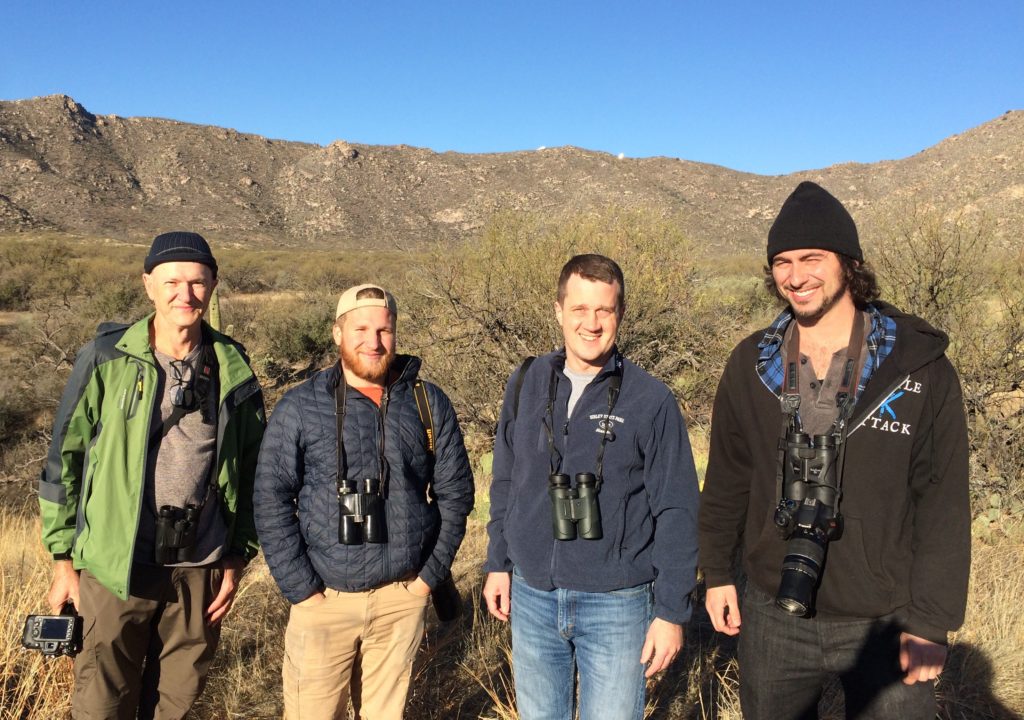 The views here are spectacular, even more so after just freshly lifering on Ferruginous Pygmy-Owl to complete the 19-Owl sweep. I don’t know about the rest of the guys, but there was definitely a bonce in my step on the way out.
The views here are spectacular, even more so after just freshly lifering on Ferruginous Pygmy-Owl to complete the 19-Owl sweep. I don’t know about the rest of the guys, but there was definitely a bonce in my step on the way out.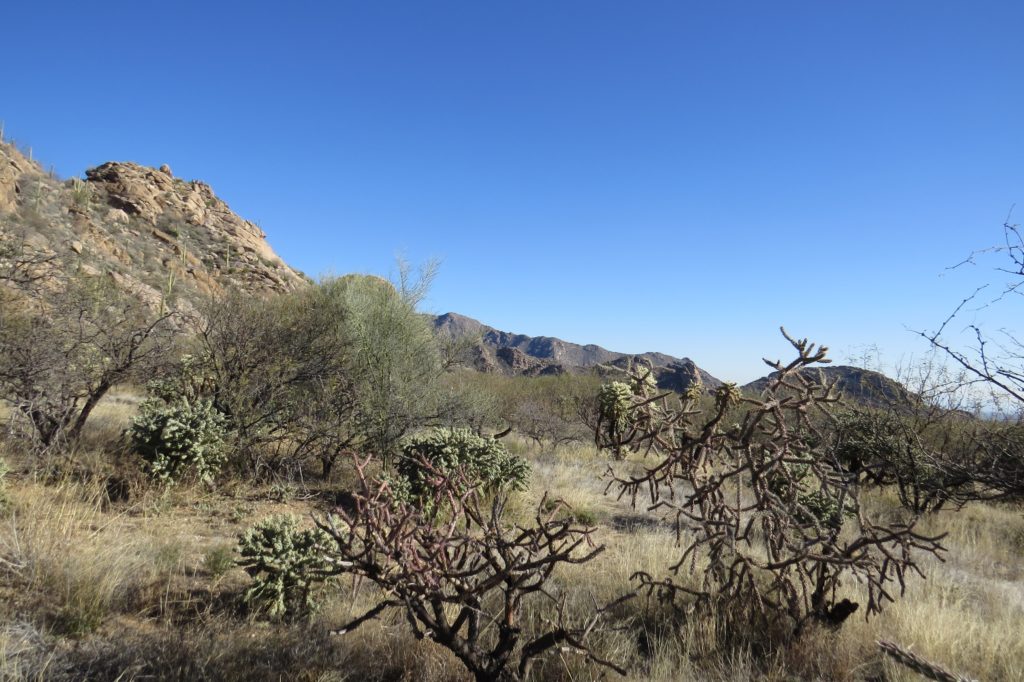
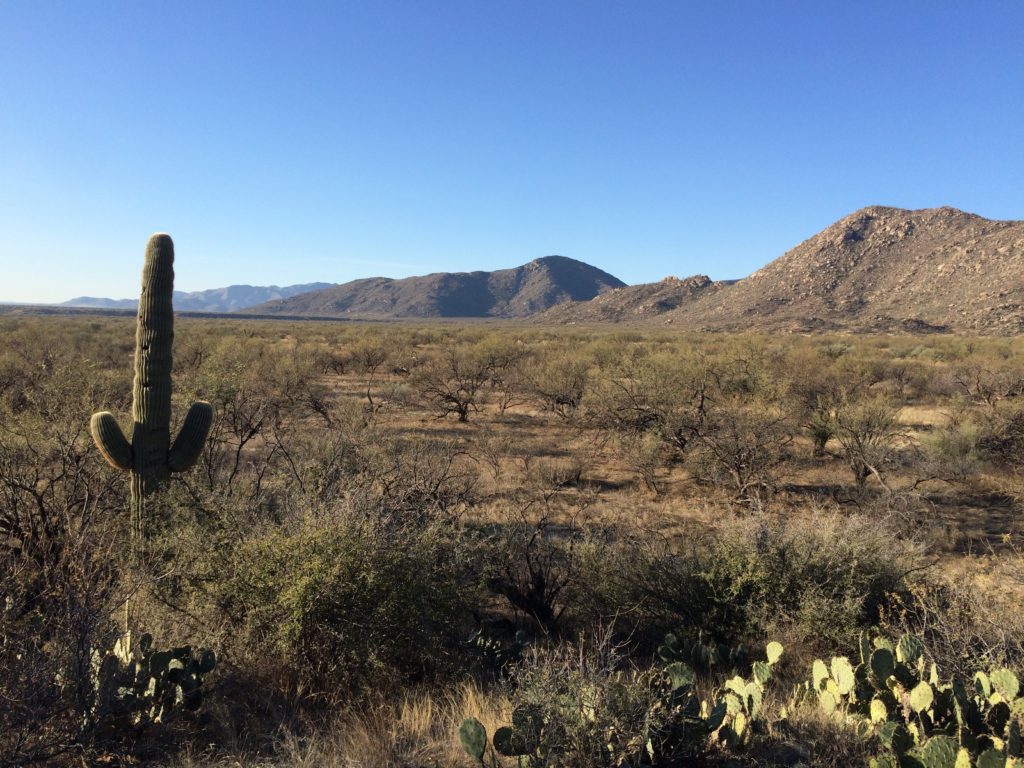
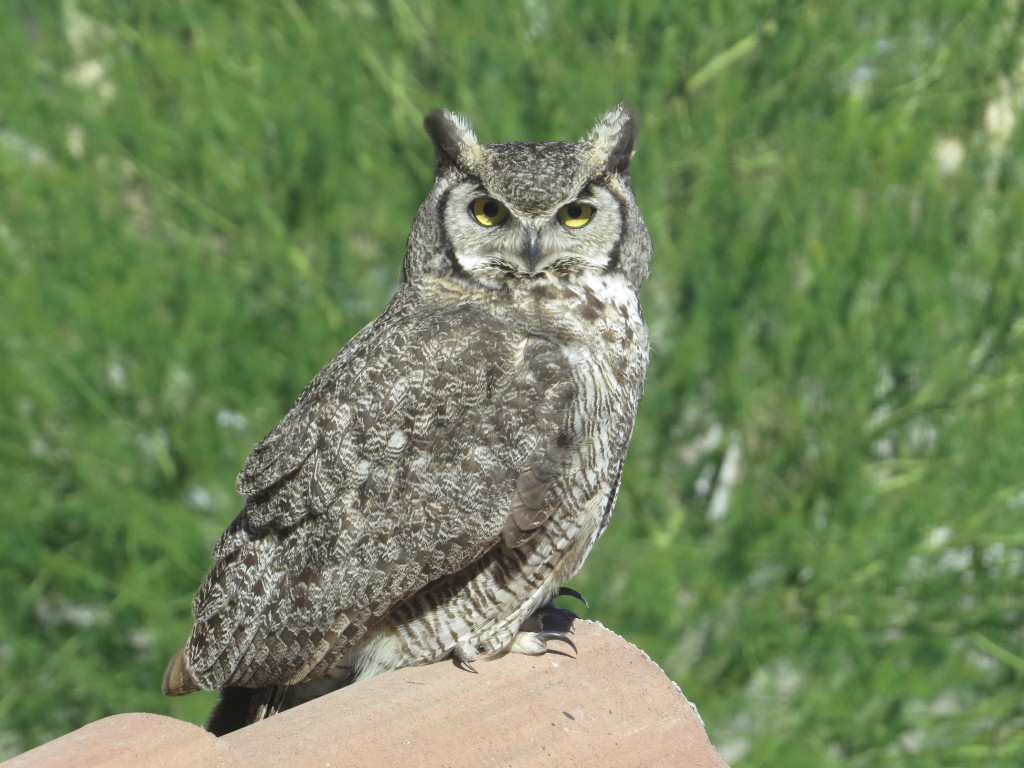
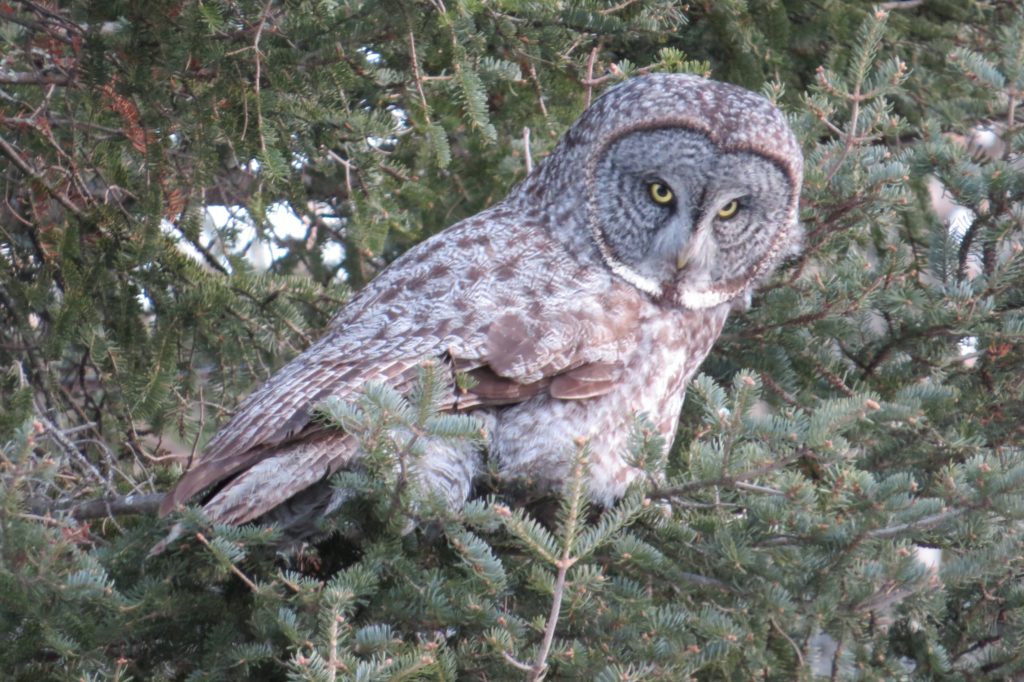
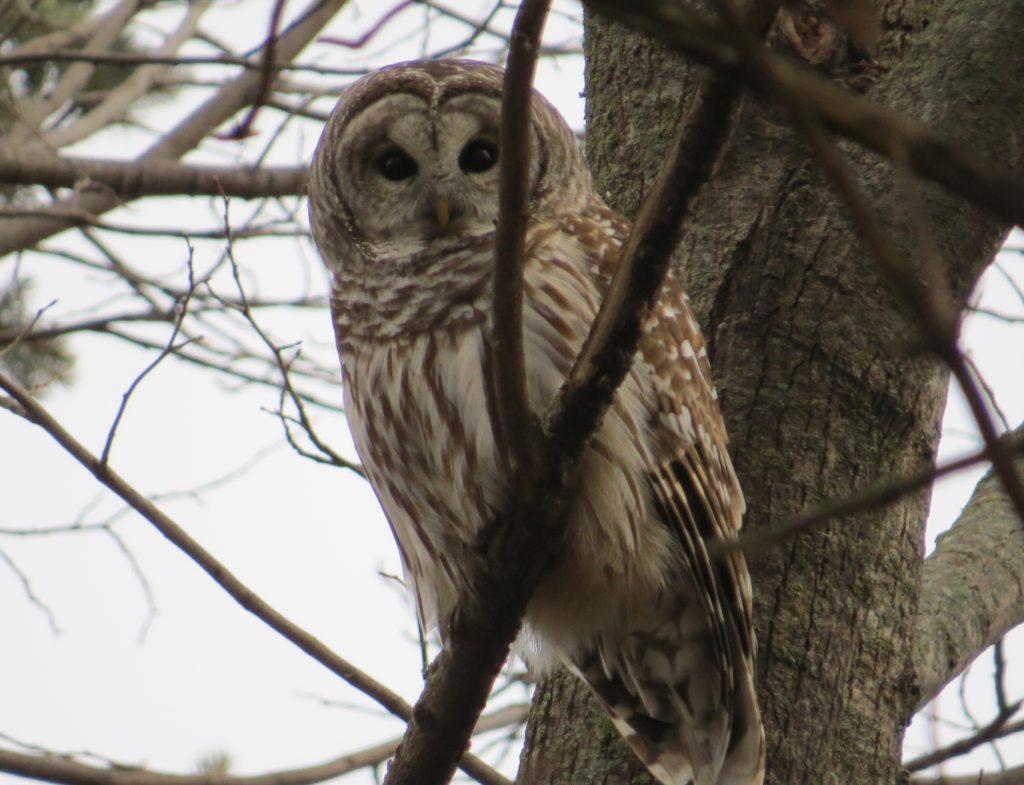
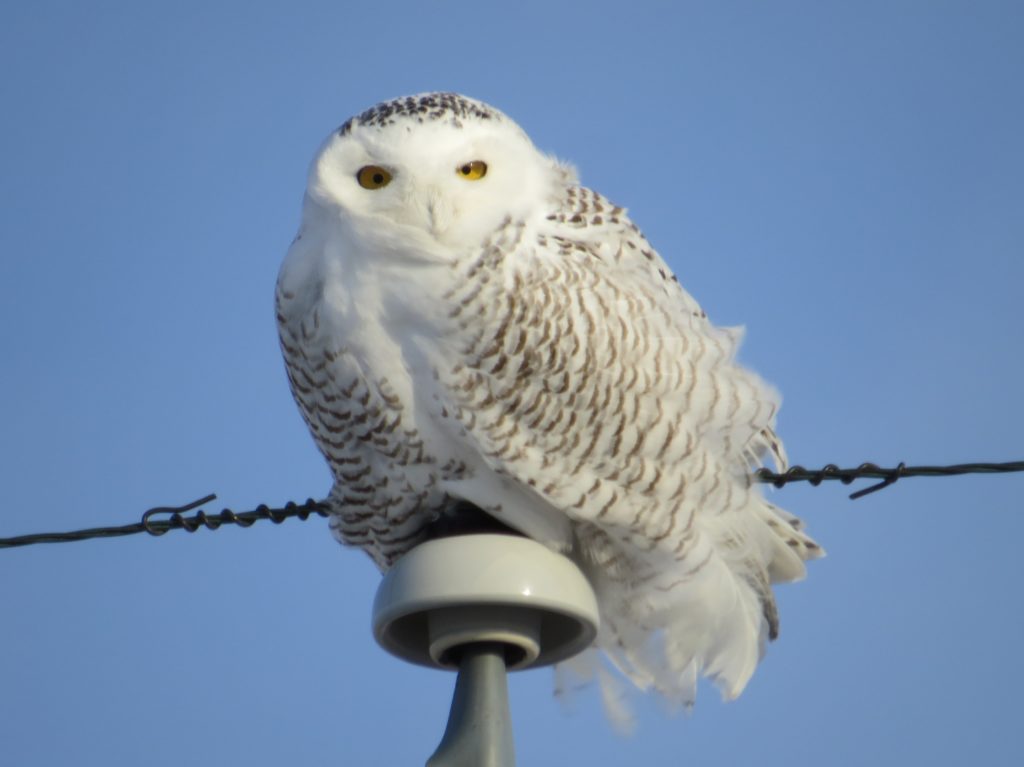
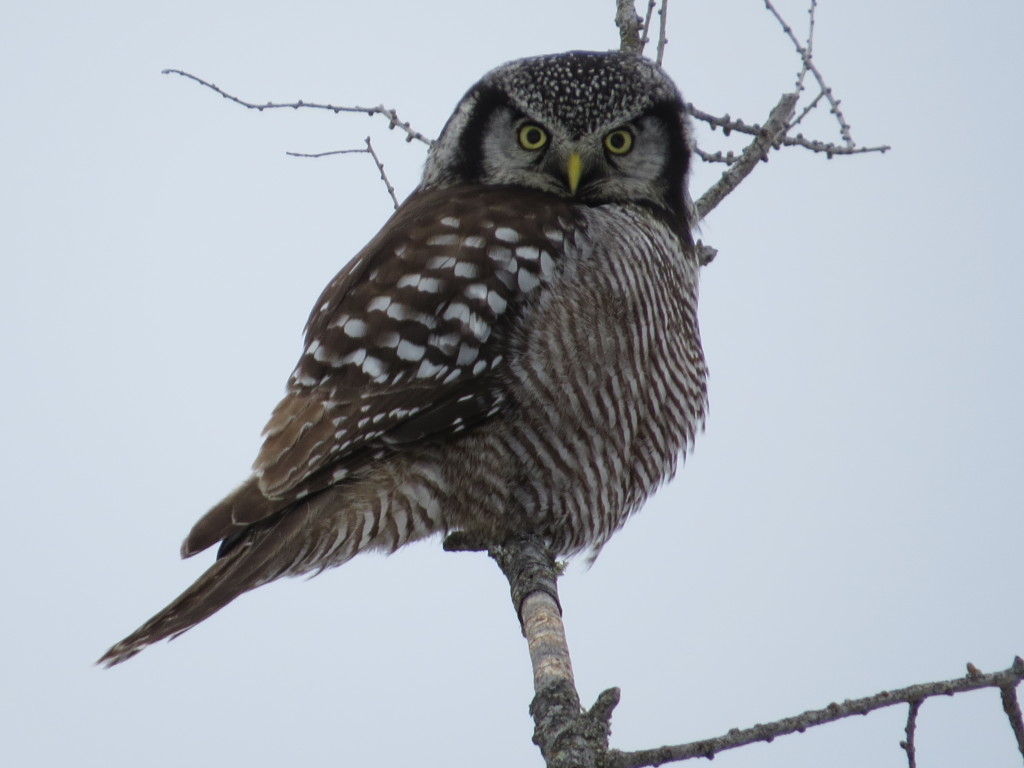
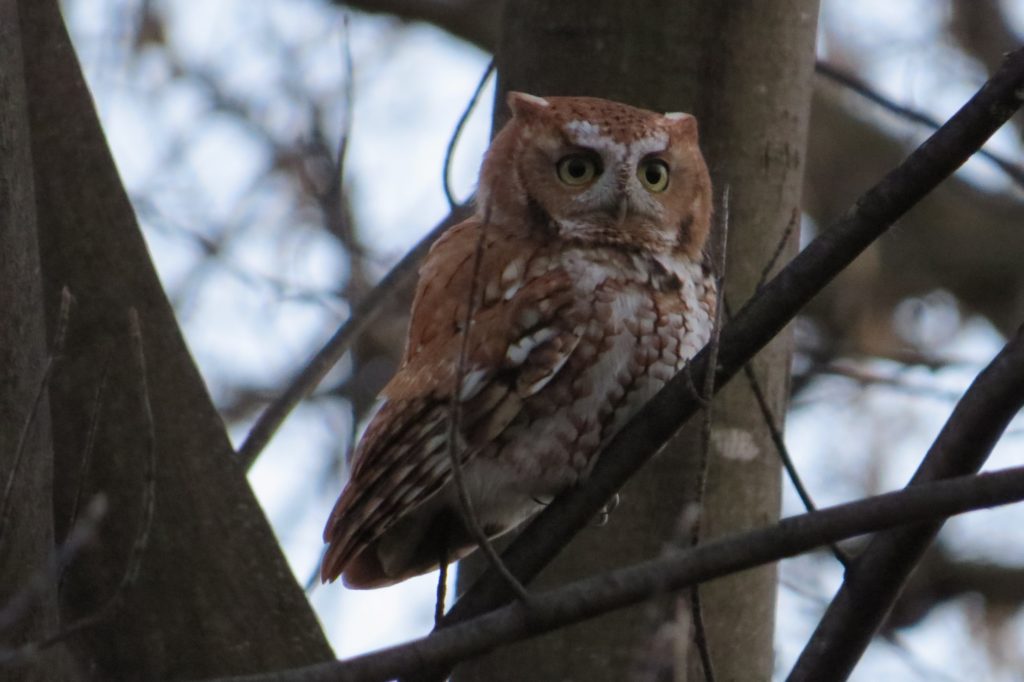
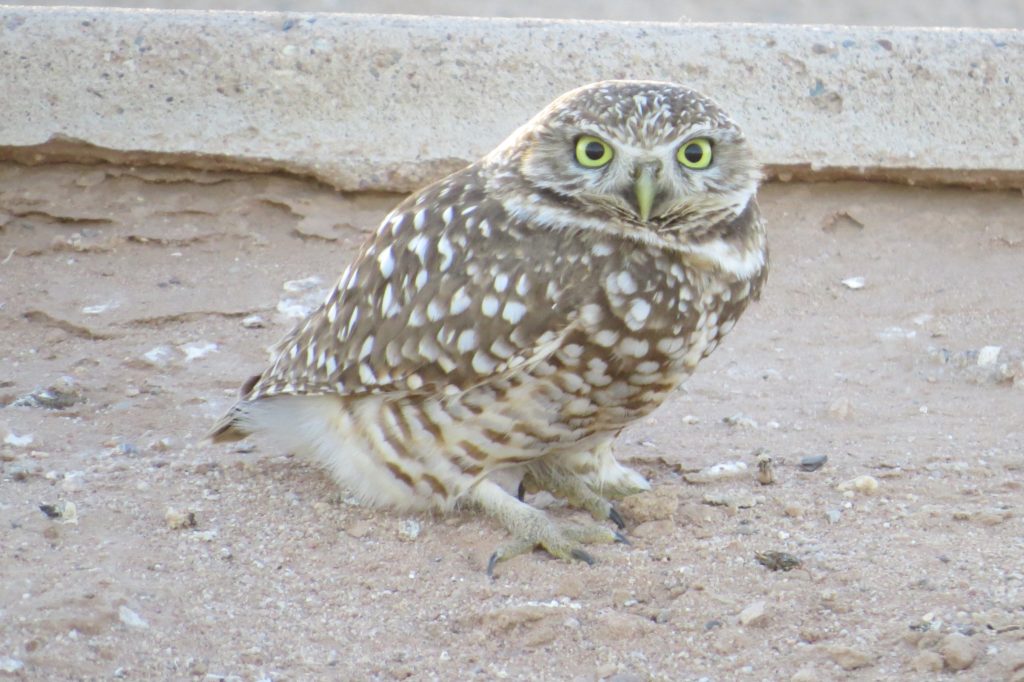 #8 Long-eared Owl
#8 Long-eared Owl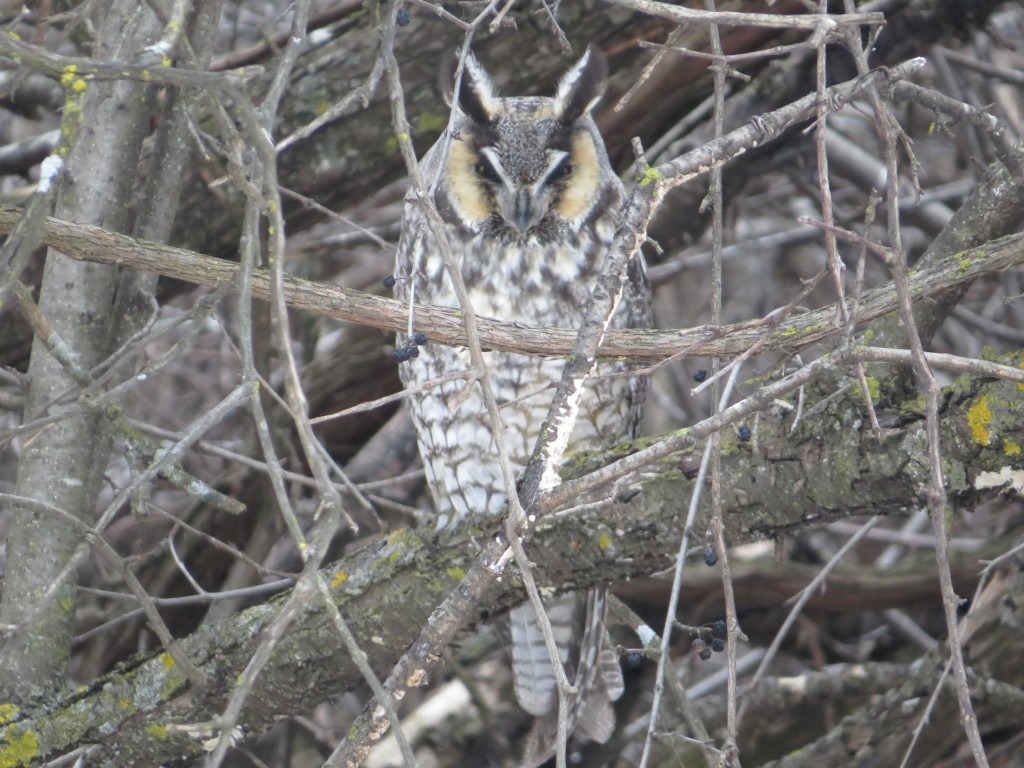
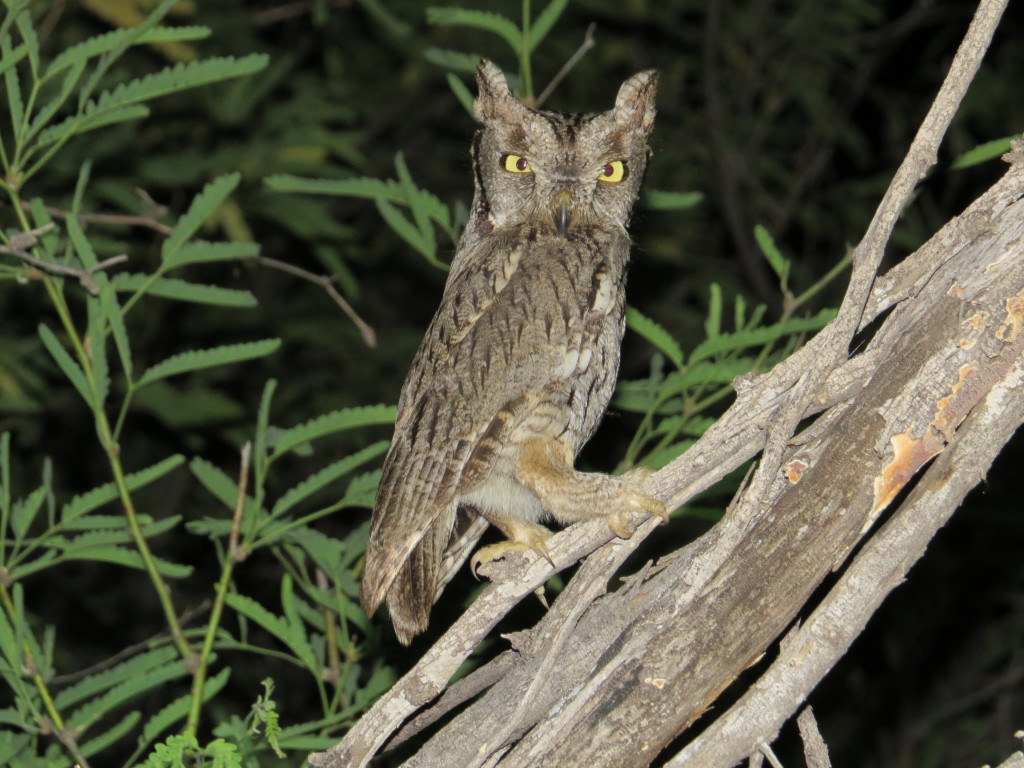
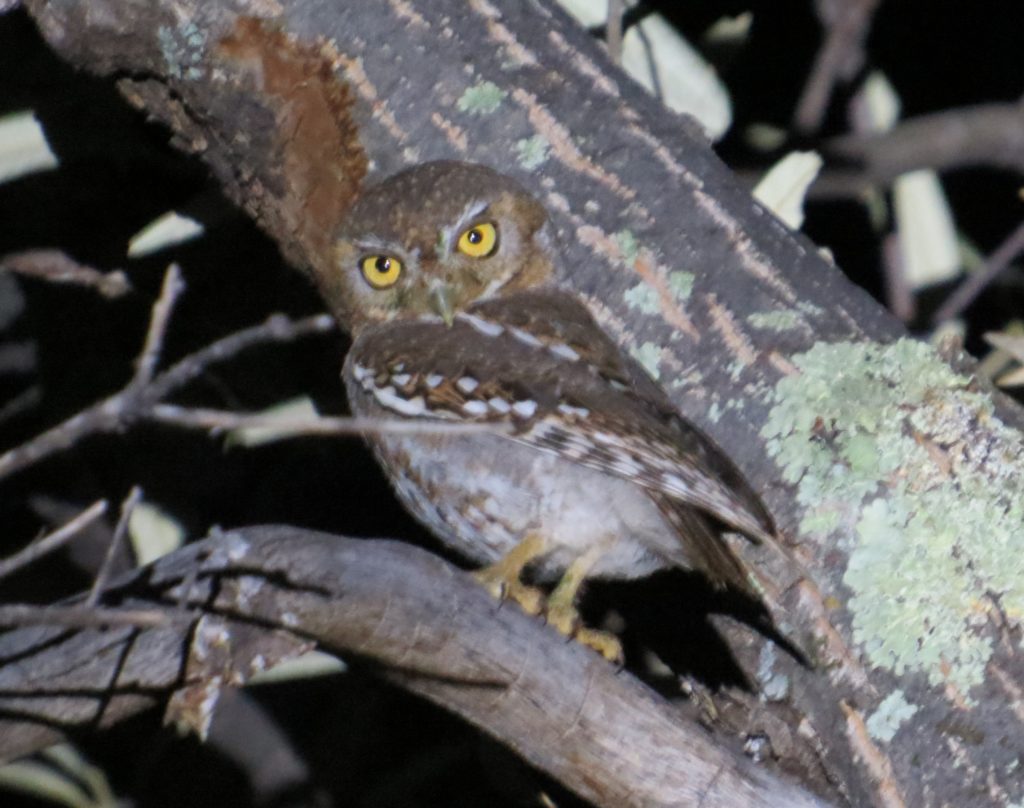
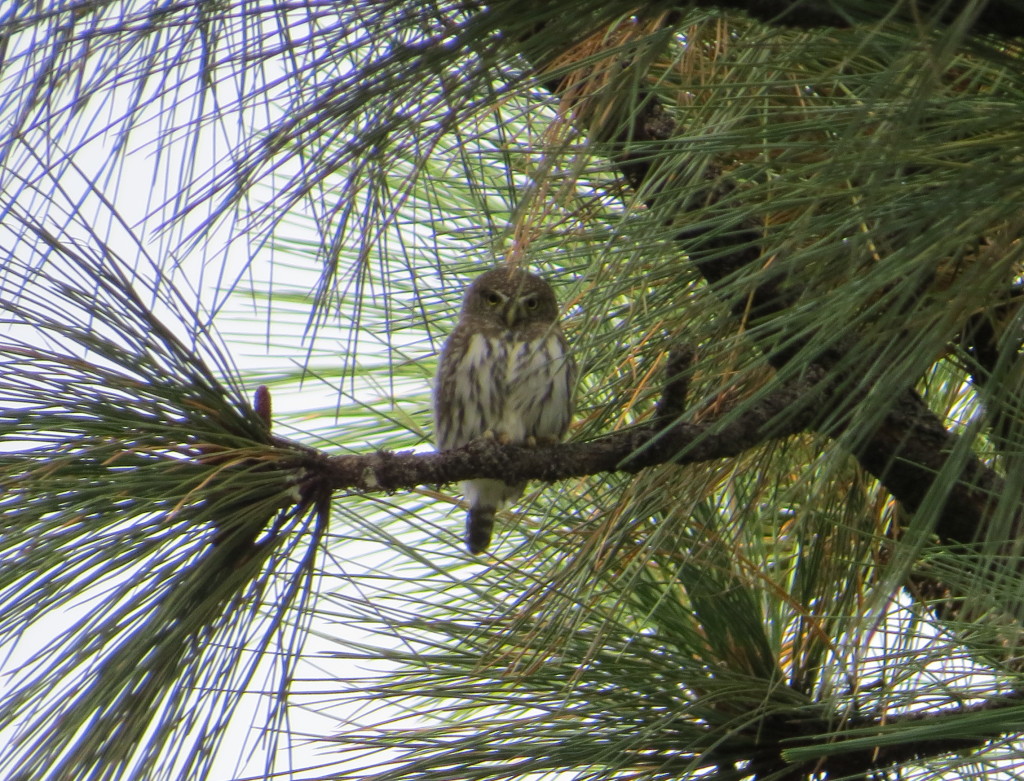
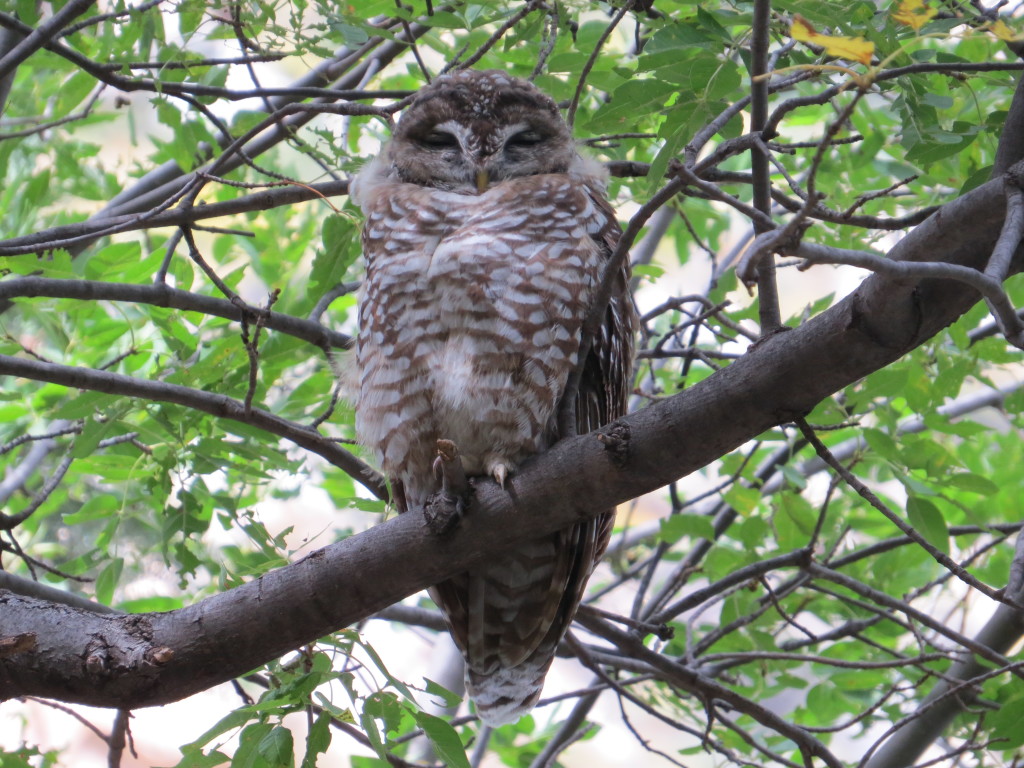
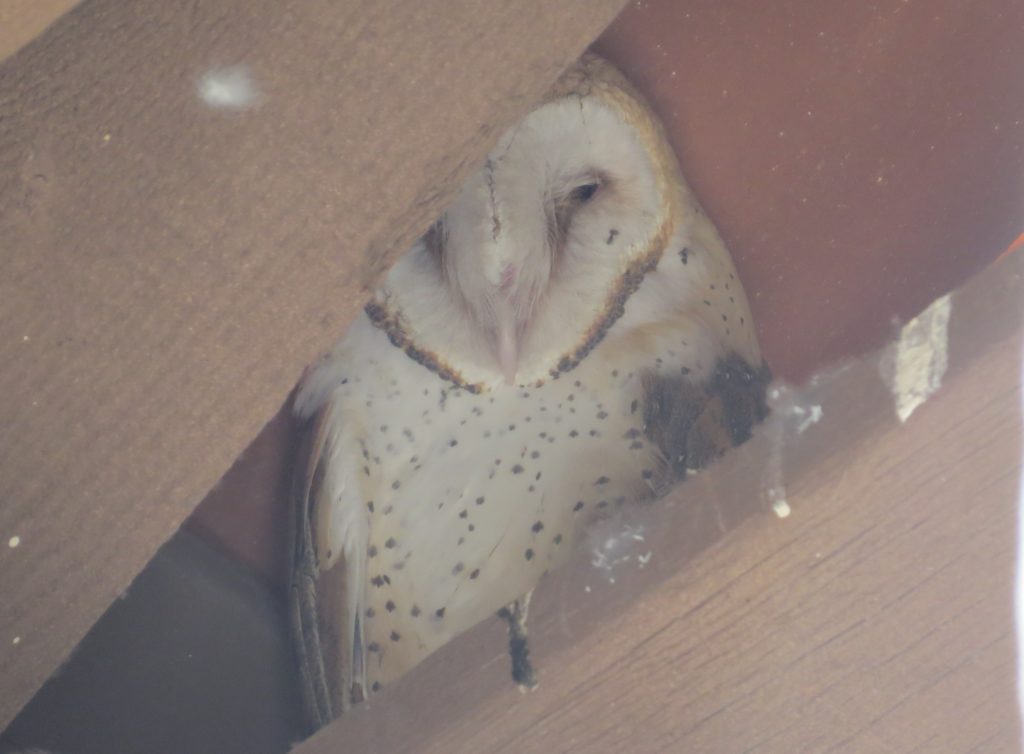
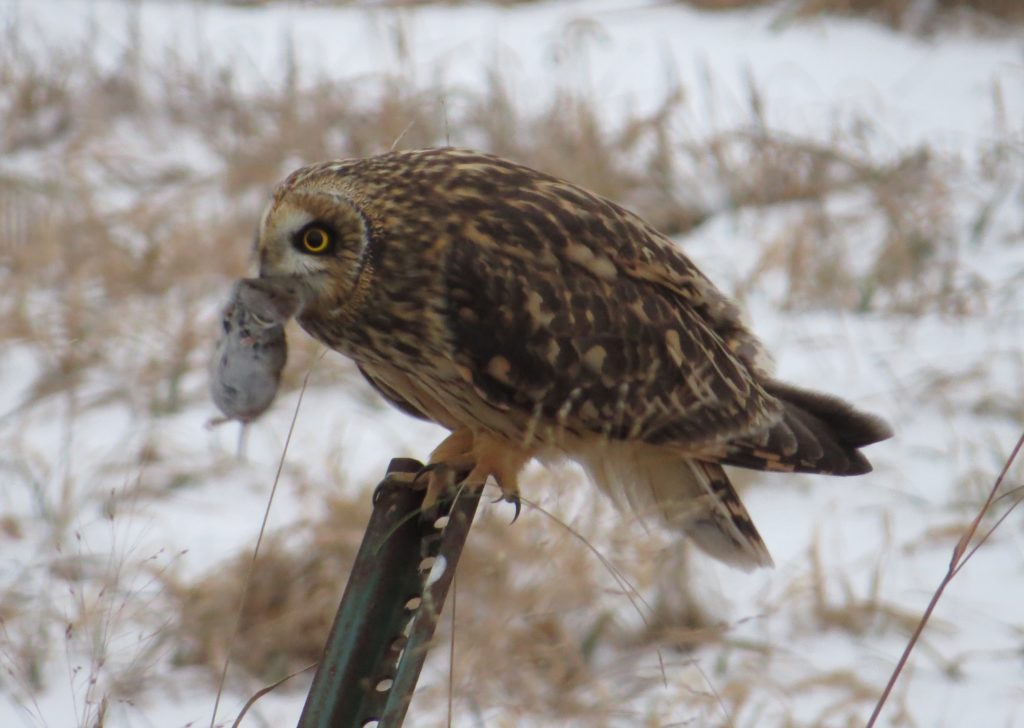 #15 Northern Saw-whet Owl
#15 Northern Saw-whet Owl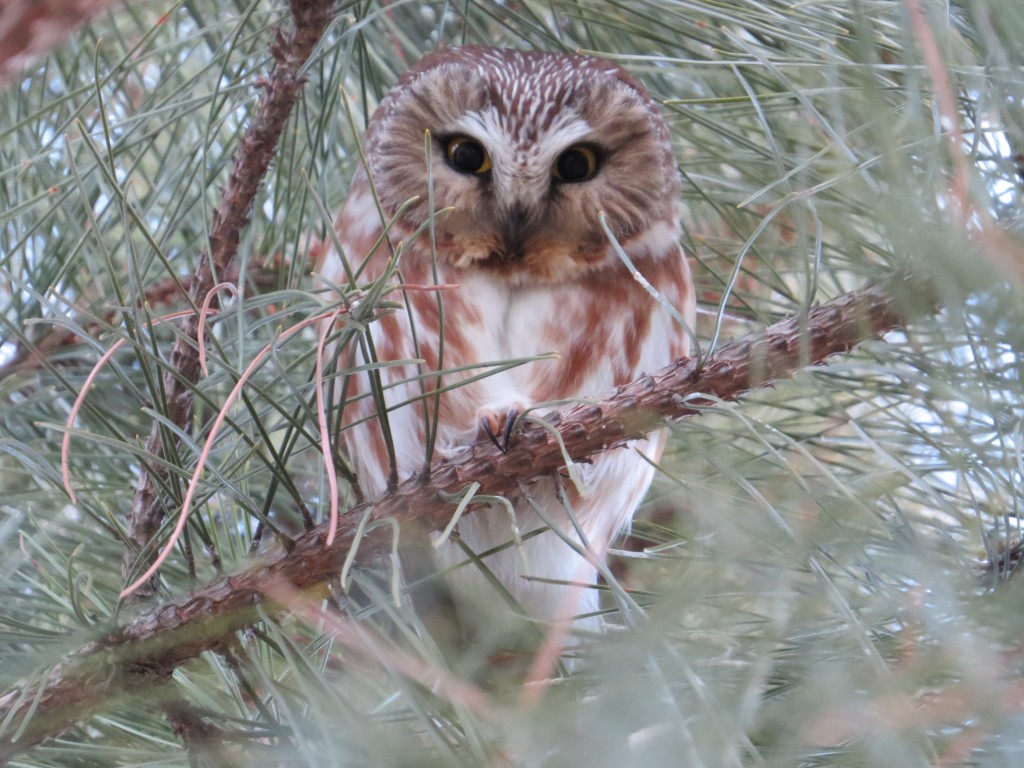
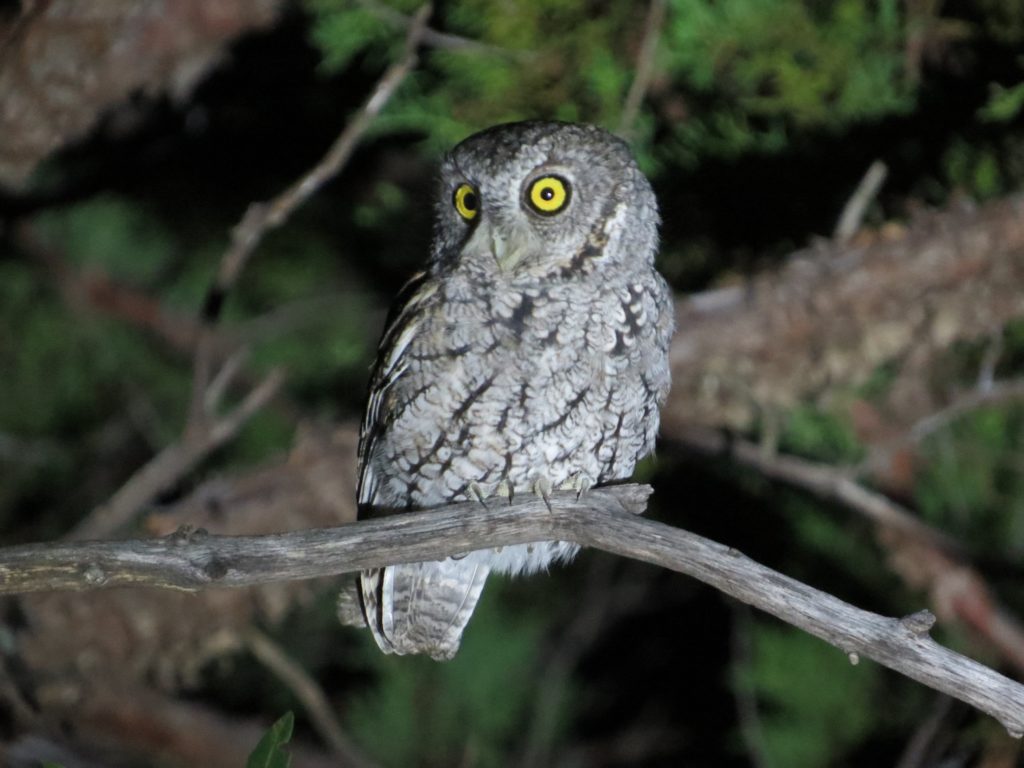
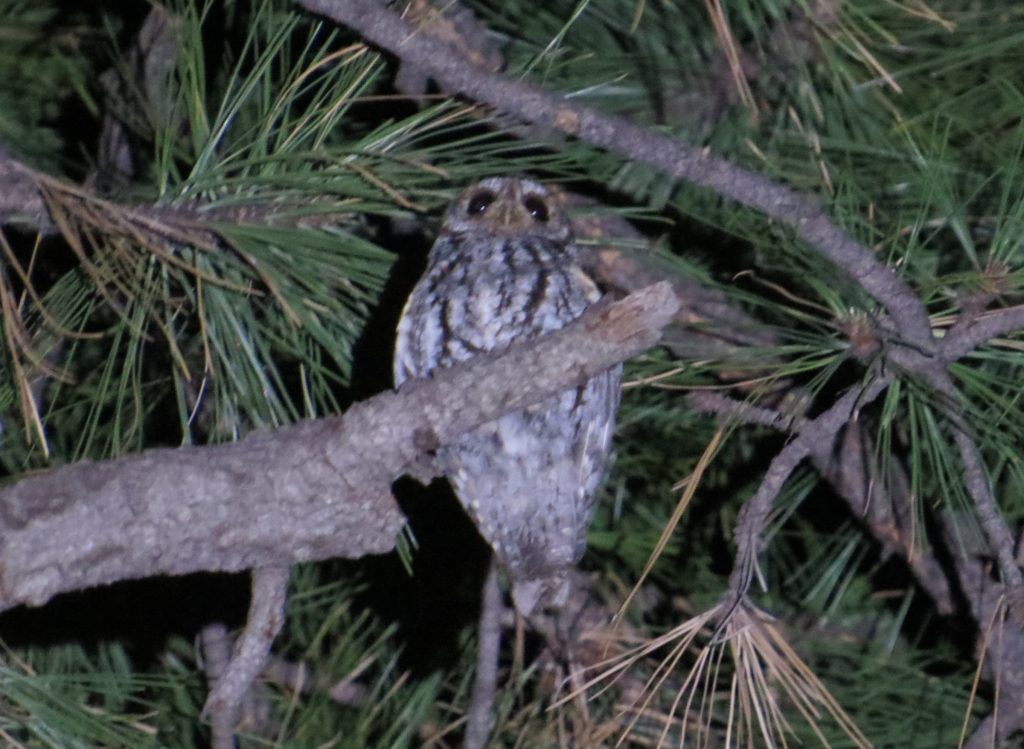
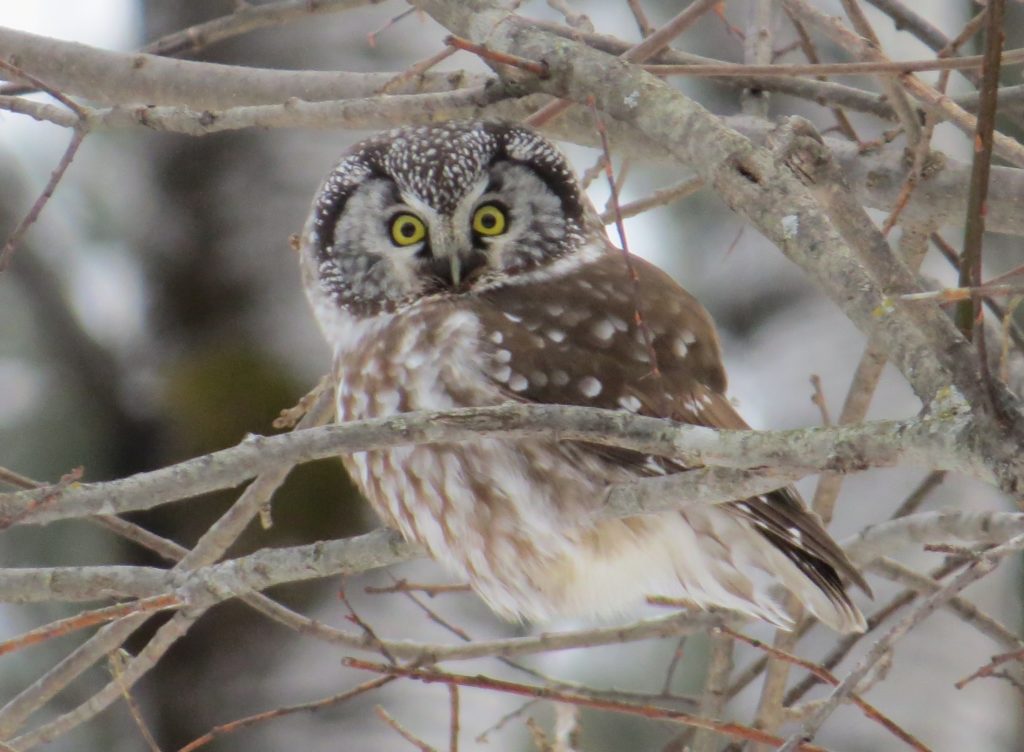
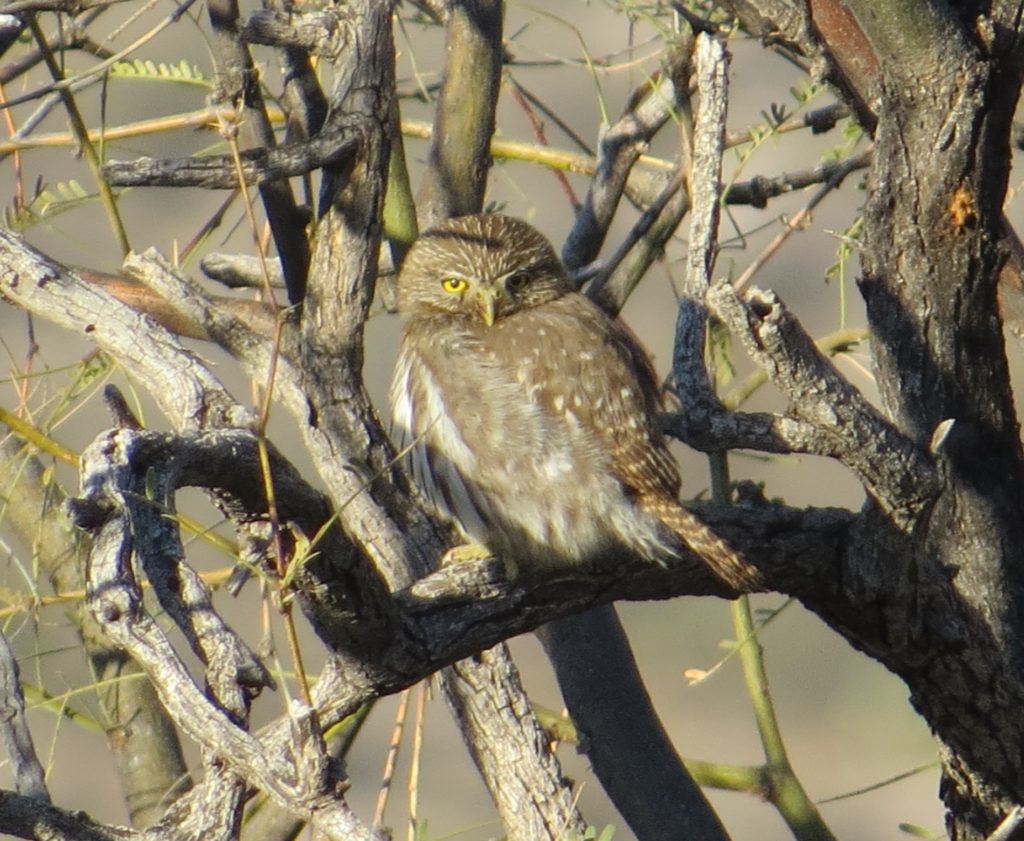
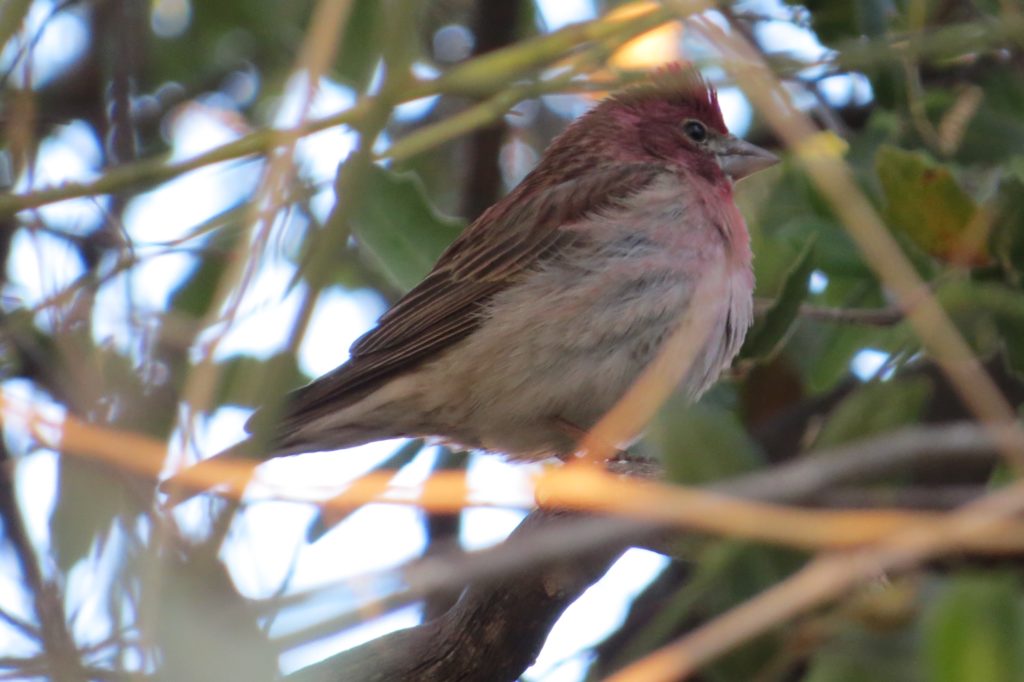
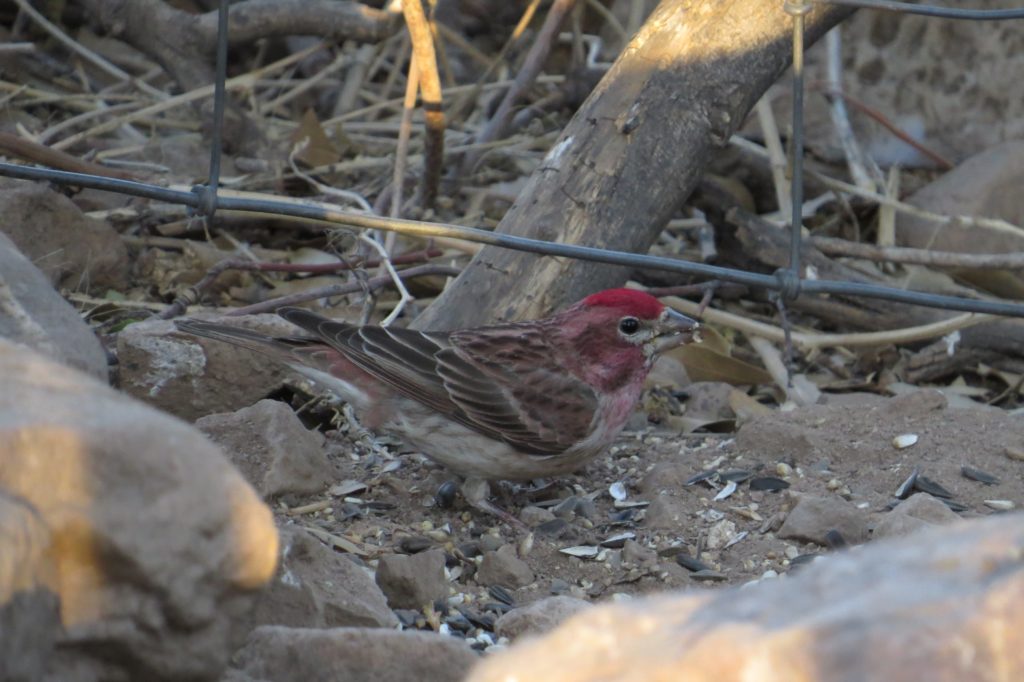 We barely had any time to enjoy the Cassin’s Finch warm-up band before the real head-banging act materialized suddenly, shocking and awing a crowd too afraid to move or breathe, lest the show be over for good.
We barely had any time to enjoy the Cassin’s Finch warm-up band before the real head-banging act materialized suddenly, shocking and awing a crowd too afraid to move or breathe, lest the show be over for good.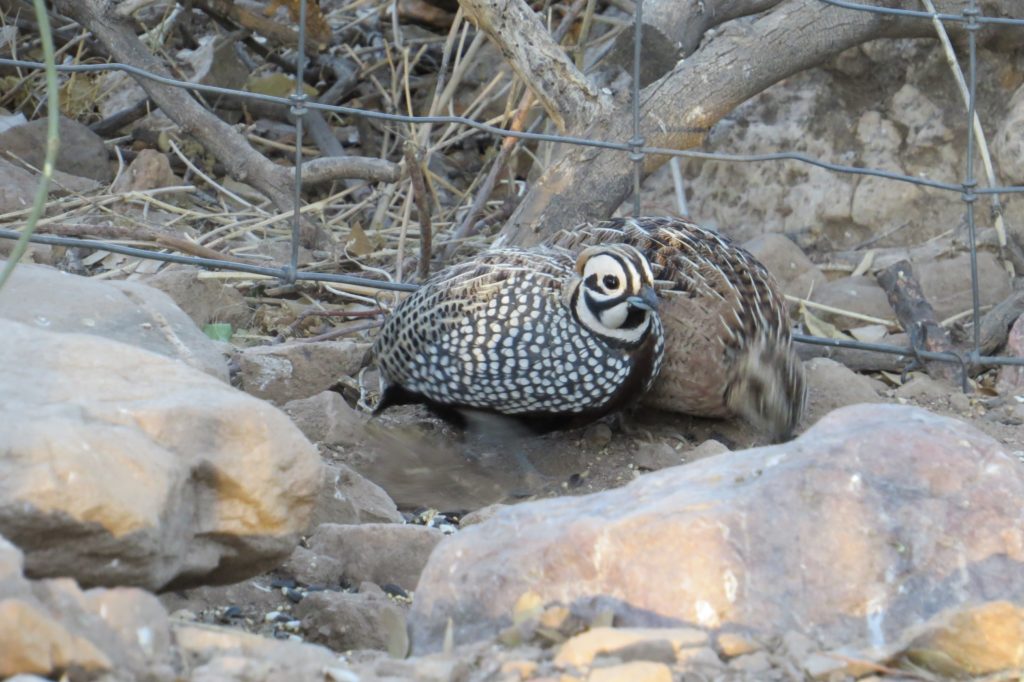
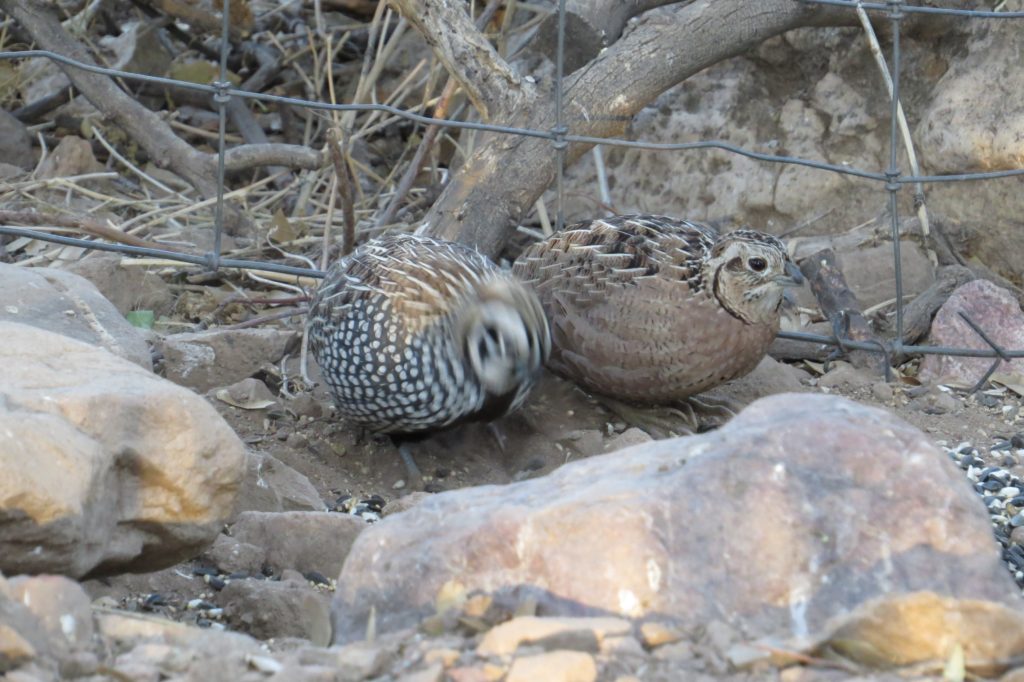
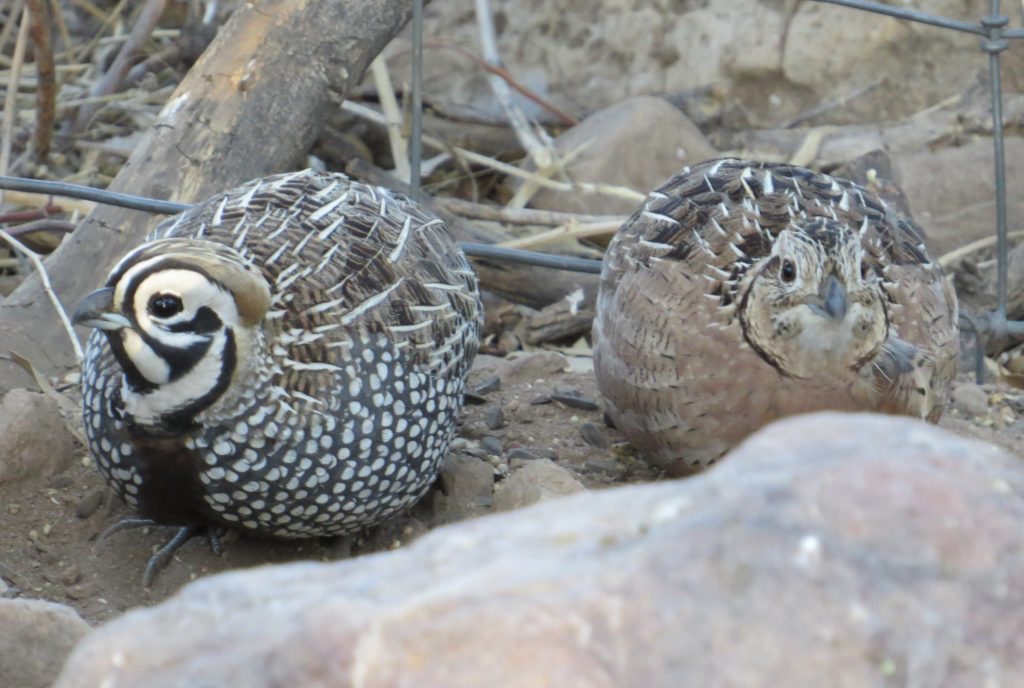
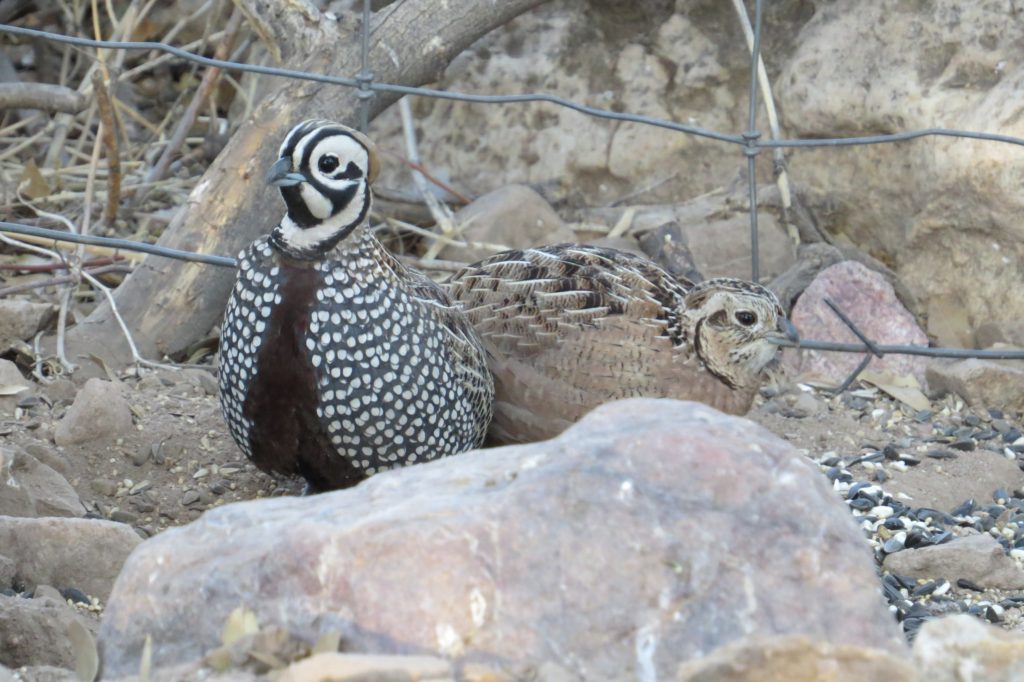
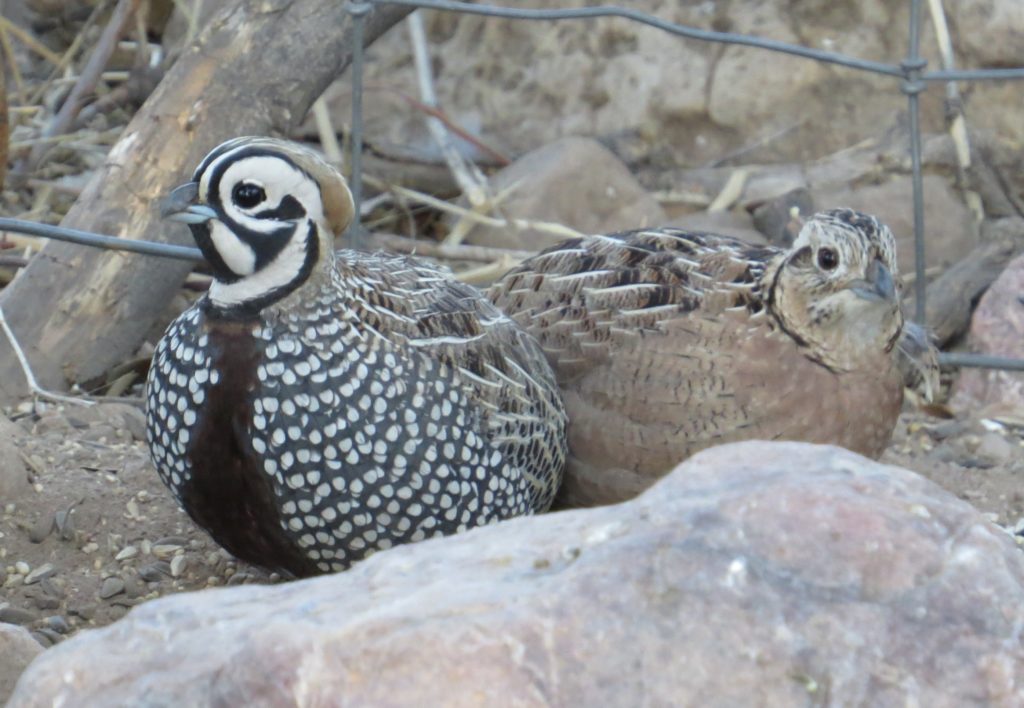 It was not the Ferruginous Pygmy-Owl I craved, but the Montezuma Quail was one of those birds that can make an entire trip. Not only was it a key lifer for Steve and me, but this was Tommy’s first time photographing this species. It was a high for the entire group.
It was not the Ferruginous Pygmy-Owl I craved, but the Montezuma Quail was one of those birds that can make an entire trip. Not only was it a key lifer for Steve and me, but this was Tommy’s first time photographing this species. It was a high for the entire group.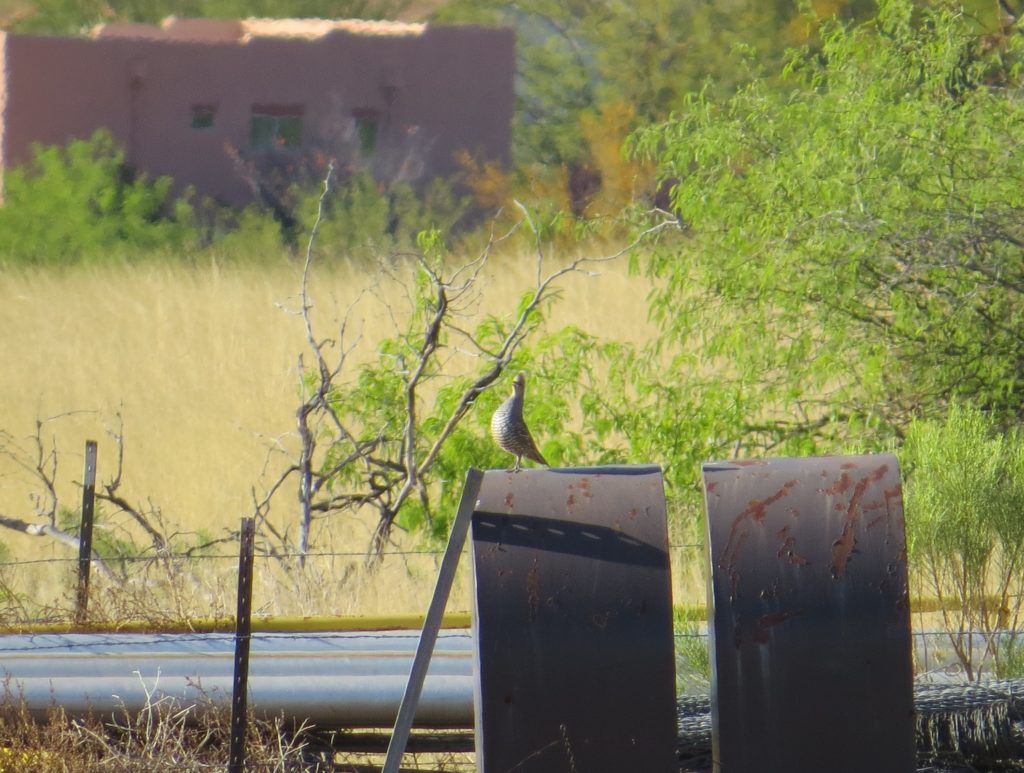 On our to-do list was to hit up Miller Canyon next to try to get Steve a Spotted Owl lifer, among others. This whole time that Fan-tailed Warbler report was still on all of our minds. Strangely, there had been no word the previous day or this morning. It was odd considering it was such a mega rarity. I finally heard from Chris Rohrer that the Warbler had been seen Saturday by numerous people AND that it was still there this morning. We decided to do Miller Canyon as planned since we were so close. What hadn’t been decided yet was if we were going after the Warbler. A chase to the Chiricahuas in far southeastern AZ would mean the FEPO plans would have to be nixed–we had originally planned to try for FEPO again Sunday night and Monday morning before we flew out. Though the Warbler would have been a lifer for Tommy, he graciously said the decision was mine to continue with the FEPO plans or abandon them. Steve also said it didn’t matter to him as he was enjoying a plethora of new birds wherever we went. As we hiked up Miller Canyon, I didn’t know what to do. It made it tough for me to enjoy some of the canyon’s residents, many of which were lifers for Steve.
On our to-do list was to hit up Miller Canyon next to try to get Steve a Spotted Owl lifer, among others. This whole time that Fan-tailed Warbler report was still on all of our minds. Strangely, there had been no word the previous day or this morning. It was odd considering it was such a mega rarity. I finally heard from Chris Rohrer that the Warbler had been seen Saturday by numerous people AND that it was still there this morning. We decided to do Miller Canyon as planned since we were so close. What hadn’t been decided yet was if we were going after the Warbler. A chase to the Chiricahuas in far southeastern AZ would mean the FEPO plans would have to be nixed–we had originally planned to try for FEPO again Sunday night and Monday morning before we flew out. Though the Warbler would have been a lifer for Tommy, he graciously said the decision was mine to continue with the FEPO plans or abandon them. Steve also said it didn’t matter to him as he was enjoying a plethora of new birds wherever we went. As we hiked up Miller Canyon, I didn’t know what to do. It made it tough for me to enjoy some of the canyon’s residents, many of which were lifers for Steve.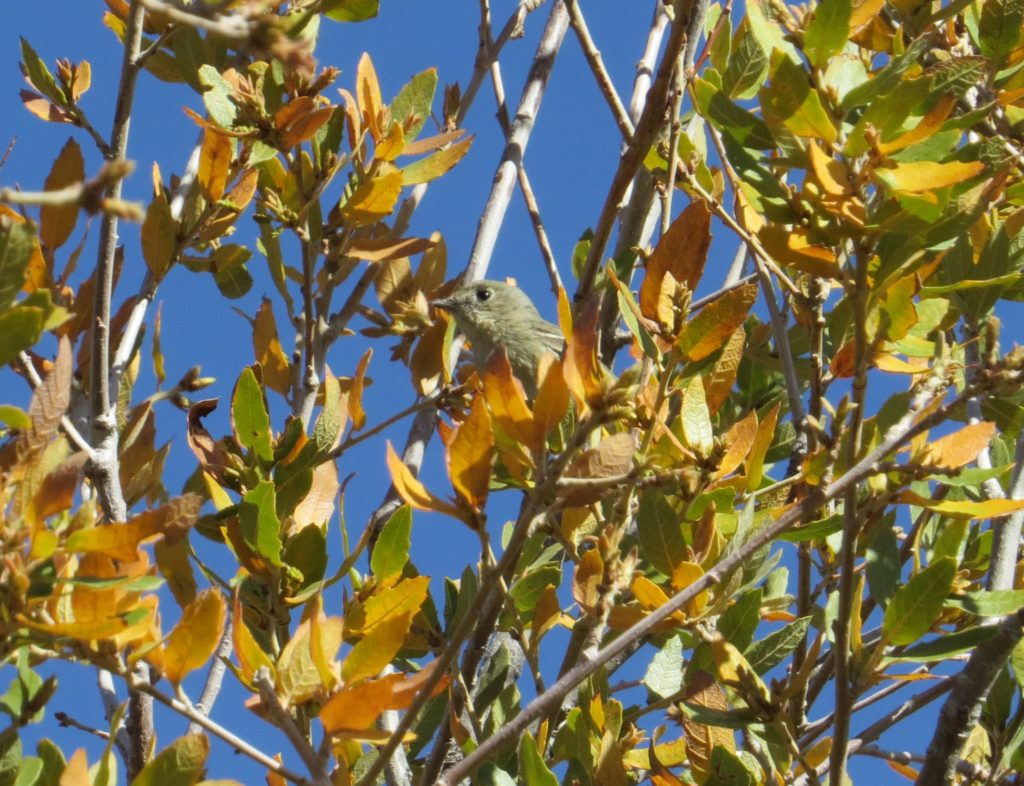
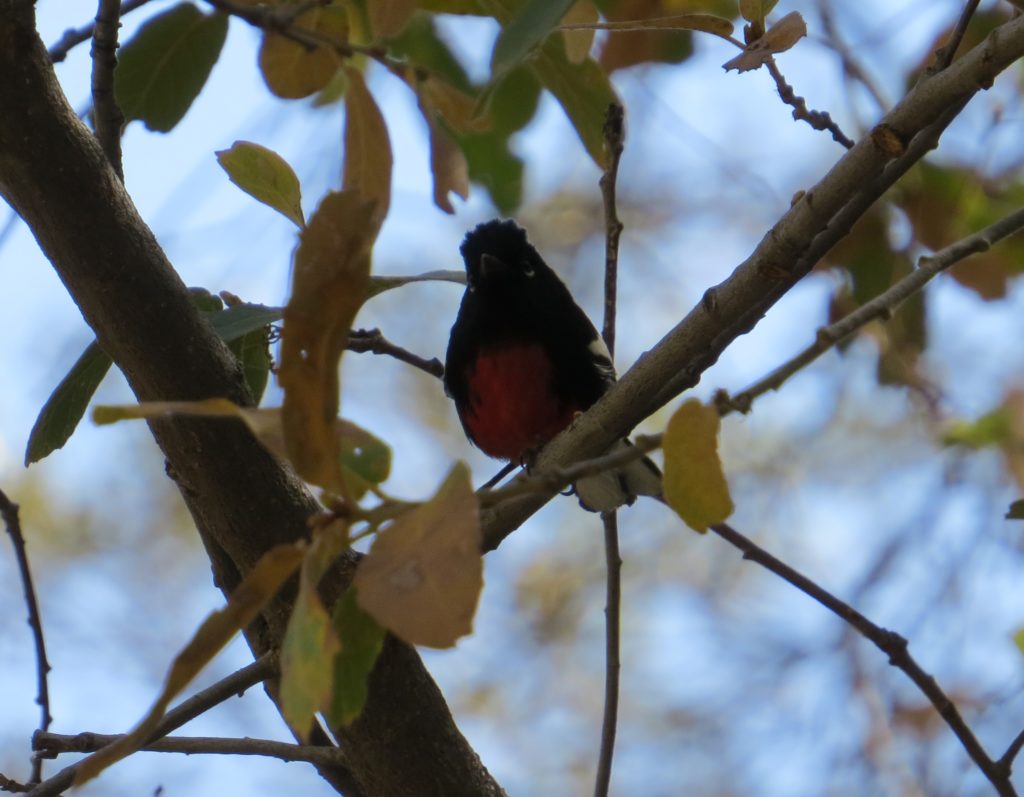
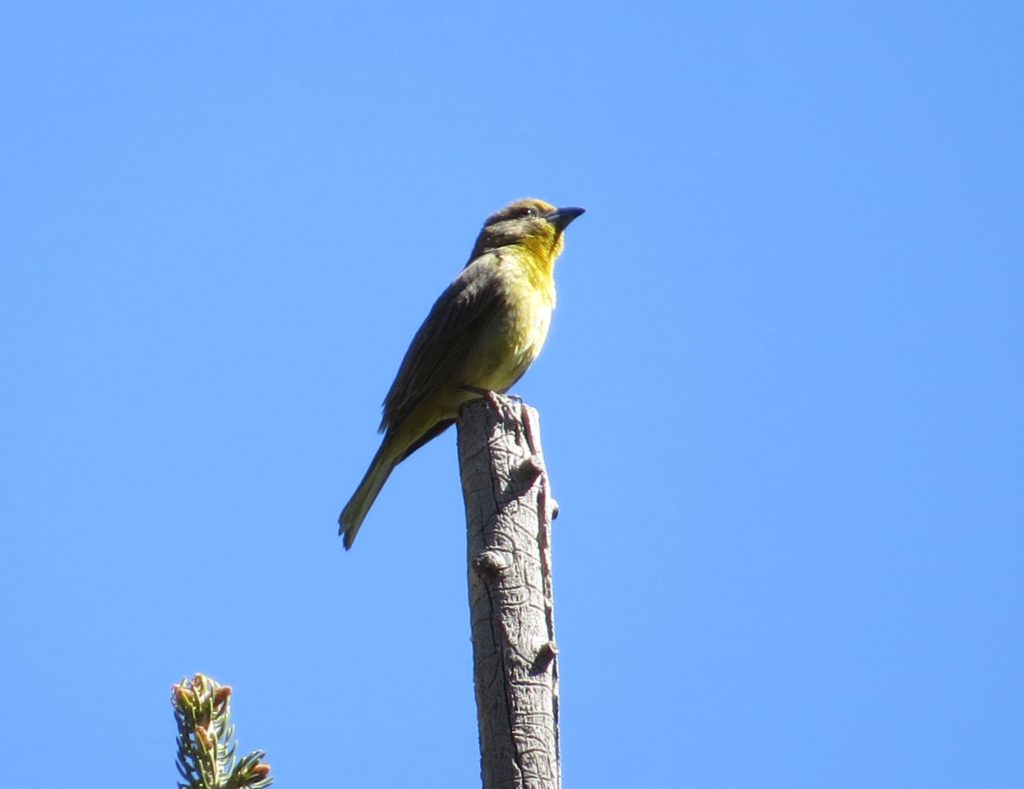
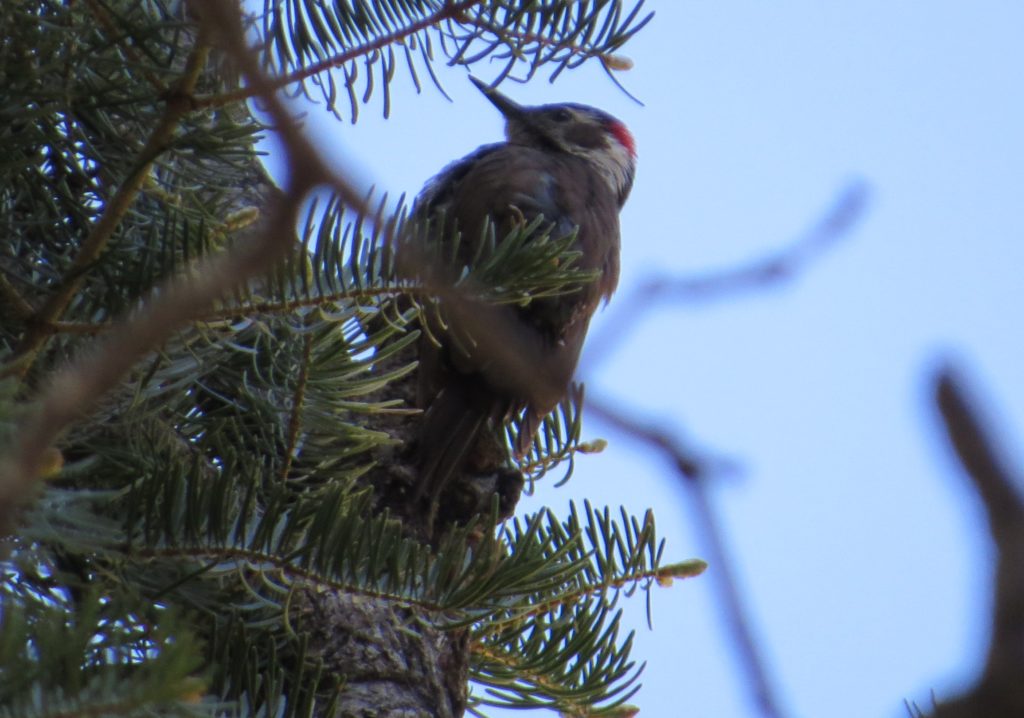
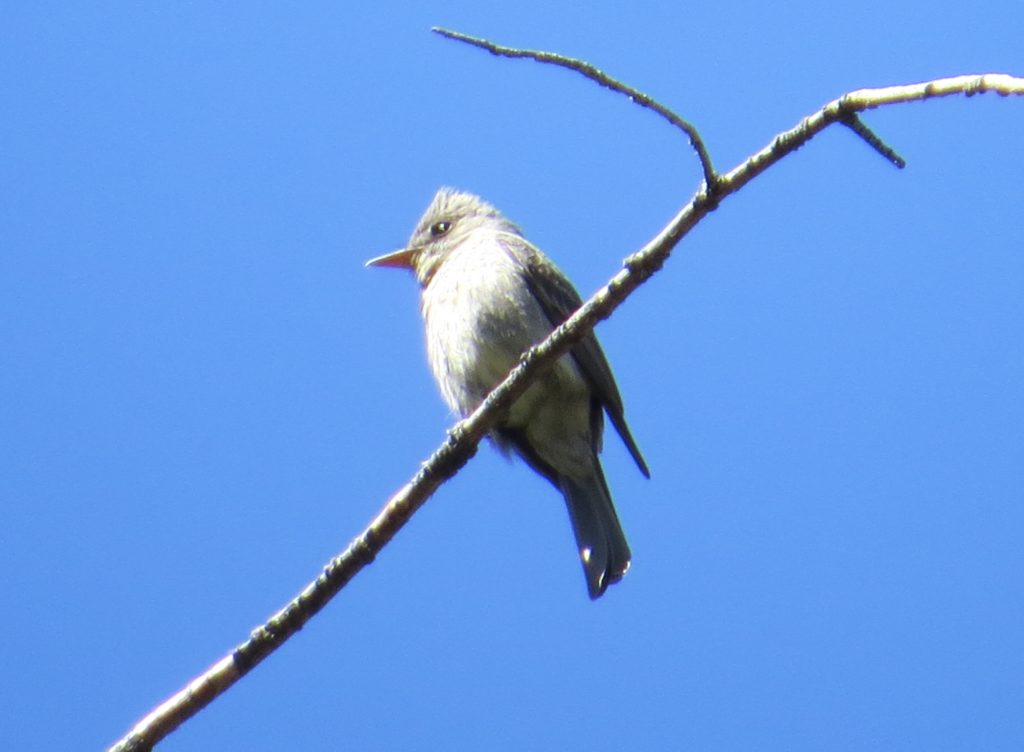
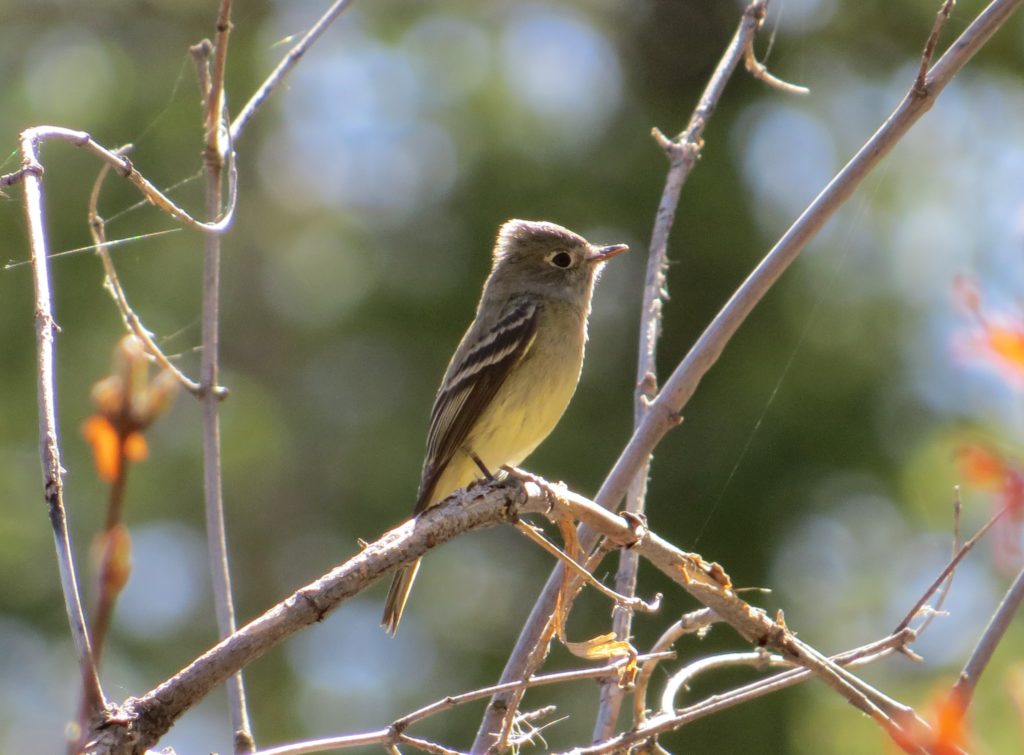 Another ID question prolonged the decision. Anybody know what species this lizard is?
Another ID question prolonged the decision. Anybody know what species this lizard is?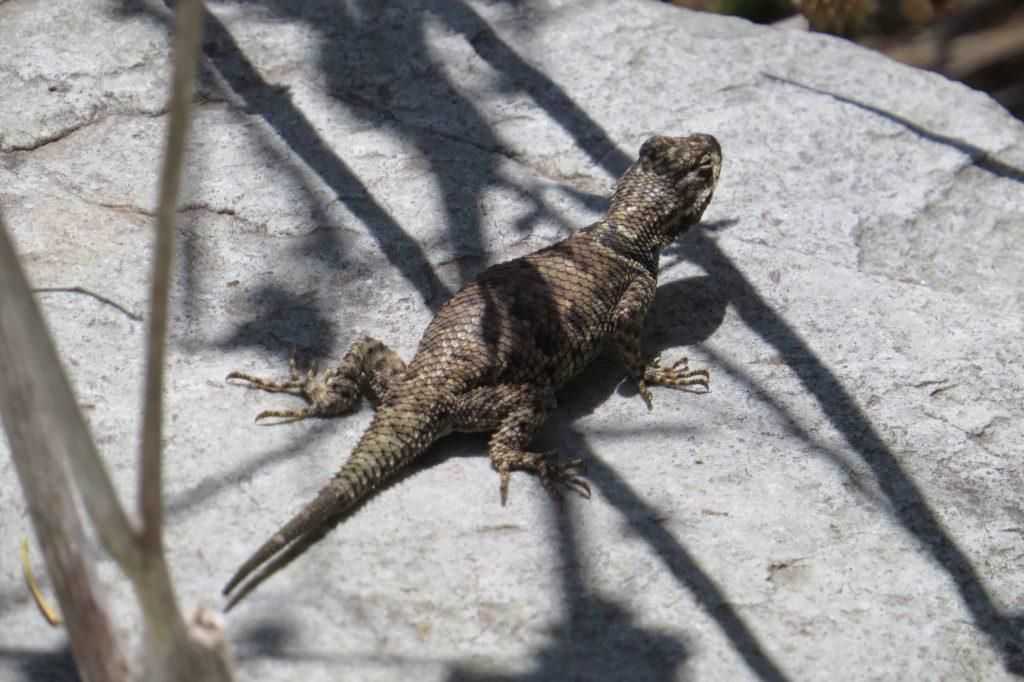
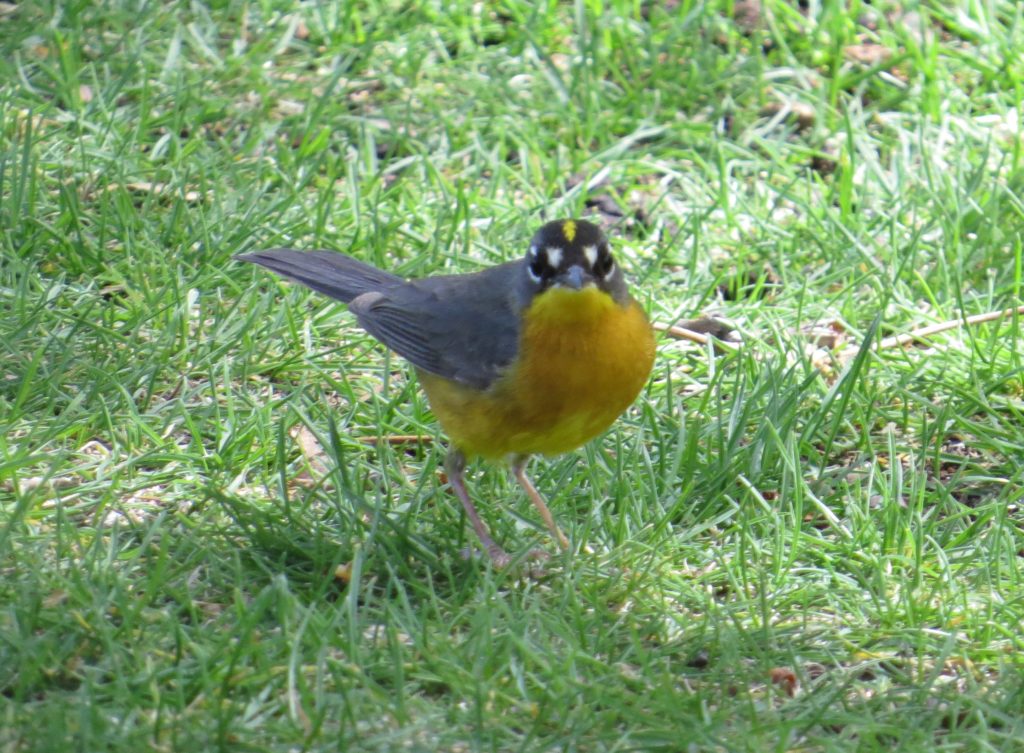
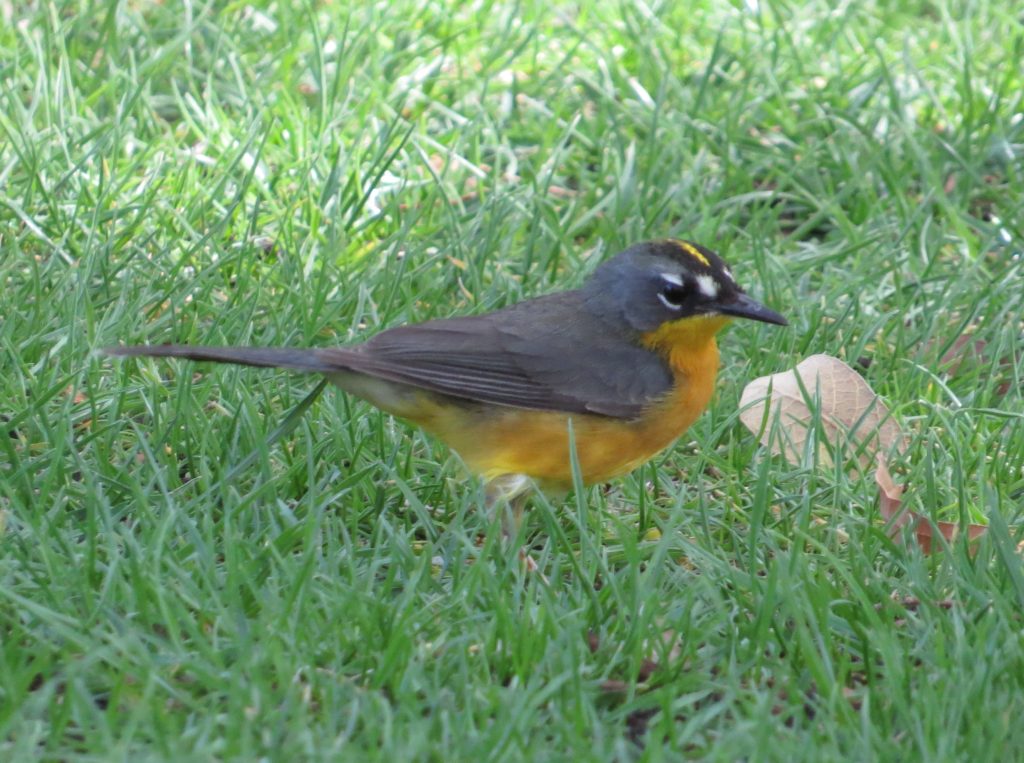 If the Fan-tailed Warbler weren’t enough, the regulars of Rick’s yard were worthy of their own awe. The place was positively buzzing with bird activity. Among the many species of birds were a couple more lifers for me, the bulky Blue-throated Hummingbird and a Calliope Hummingbird. Both were quick sightings that didn’t allow for photos. This gorgeous male Scott’s Oriole was cooperative, though. It was a nice redemptive photo from my lifer butt-shot in Hunter Canyon a few years ago.
If the Fan-tailed Warbler weren’t enough, the regulars of Rick’s yard were worthy of their own awe. The place was positively buzzing with bird activity. Among the many species of birds were a couple more lifers for me, the bulky Blue-throated Hummingbird and a Calliope Hummingbird. Both were quick sightings that didn’t allow for photos. This gorgeous male Scott’s Oriole was cooperative, though. It was a nice redemptive photo from my lifer butt-shot in Hunter Canyon a few years ago.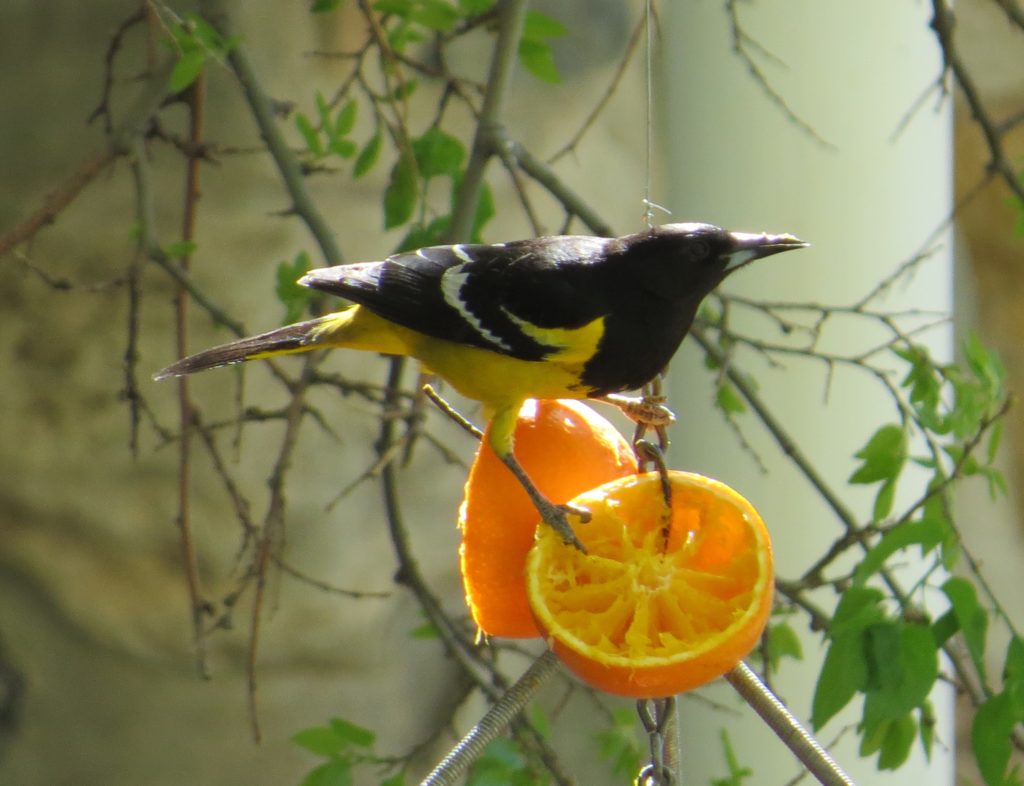 While we were at Rick’s yard visiting with Rick and his wife, there was another young birder there from New Mexico. I forget his name, but it was this kid’s 14th birthday, and his parents had driven him several hundred miles for his birthday to see this mega rarity. Cool parents, huh? The kid was no slouch birder either as he was identifying birds left and right. In fact, as we were leaving, he spotted two raptors overhead and announced they were Zone-tailed Hawks! That was a lifer for Steve and me and one that we were hoping for.
While we were at Rick’s yard visiting with Rick and his wife, there was another young birder there from New Mexico. I forget his name, but it was this kid’s 14th birthday, and his parents had driven him several hundred miles for his birthday to see this mega rarity. Cool parents, huh? The kid was no slouch birder either as he was identifying birds left and right. In fact, as we were leaving, he spotted two raptors overhead and announced they were Zone-tailed Hawks! That was a lifer for Steve and me and one that we were hoping for.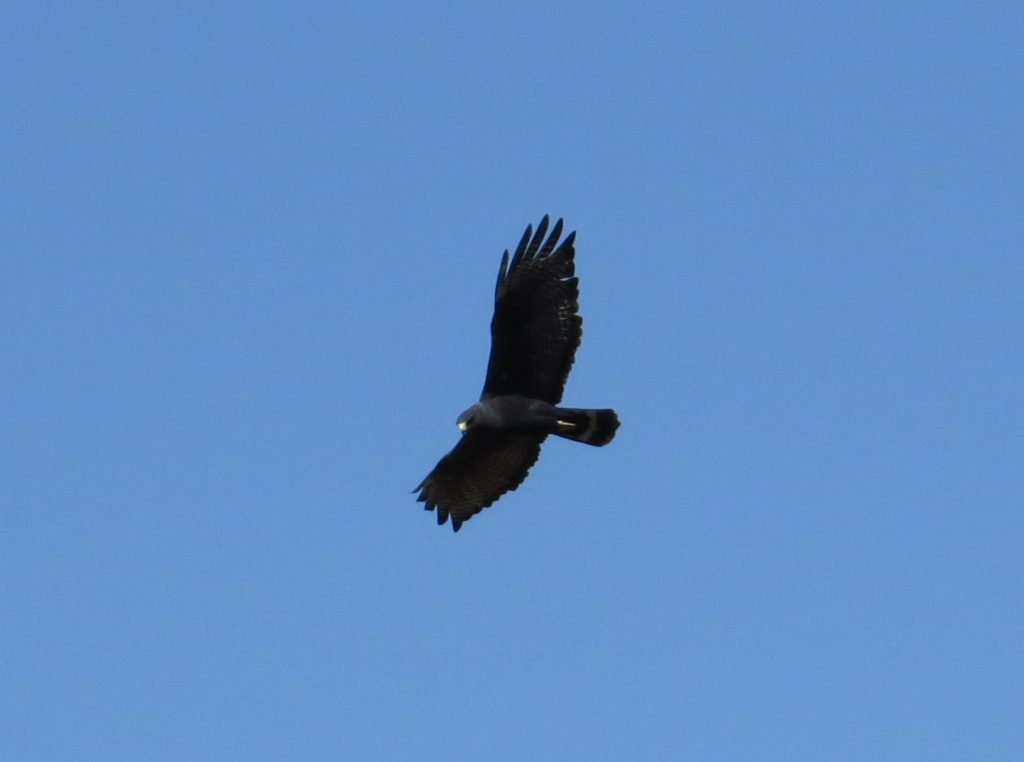 With one Mexican Warbler under our belts, it was time to go after another that had been showing in the Chiricahuas, the Slate-throated Redstart. I had tried for this ABA Code-3 a few years ago in Hunter Canyon. We barely had enough daylight to get all the way up and over the Chiris to Pinery Canyon where it had been seen. The views along the way were spectacular even if the road was a bit stressful with its curves and steep drop-offs. I’m glad Steve was driving.
With one Mexican Warbler under our belts, it was time to go after another that had been showing in the Chiricahuas, the Slate-throated Redstart. I had tried for this ABA Code-3 a few years ago in Hunter Canyon. We barely had enough daylight to get all the way up and over the Chiris to Pinery Canyon where it had been seen. The views along the way were spectacular even if the road was a bit stressful with its curves and steep drop-offs. I’m glad Steve was driving.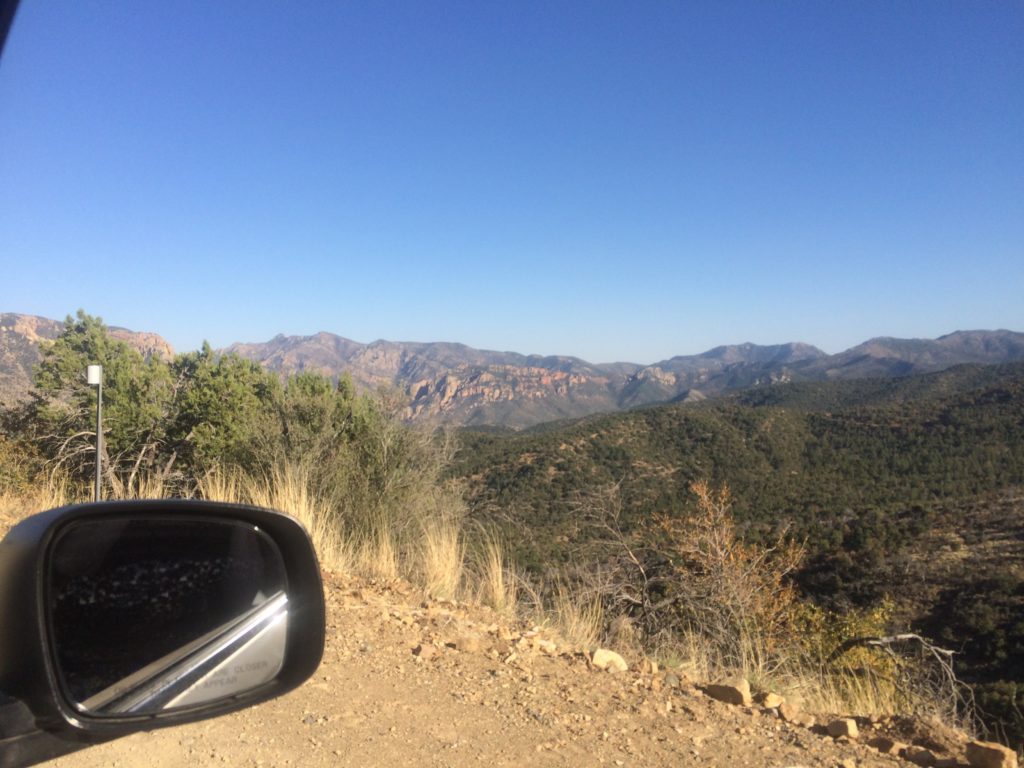
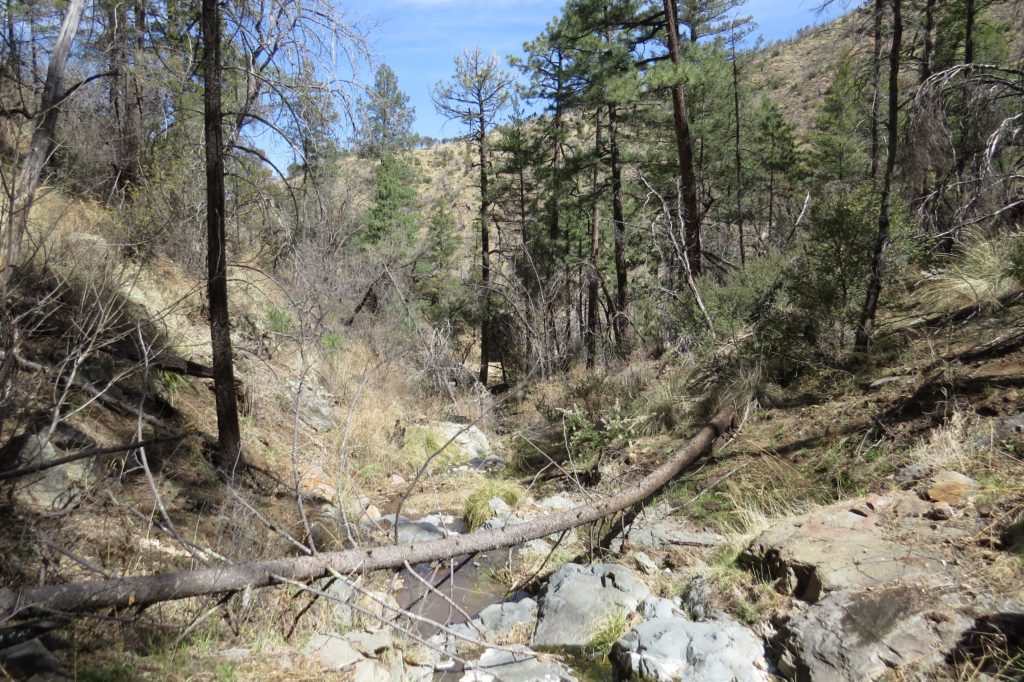
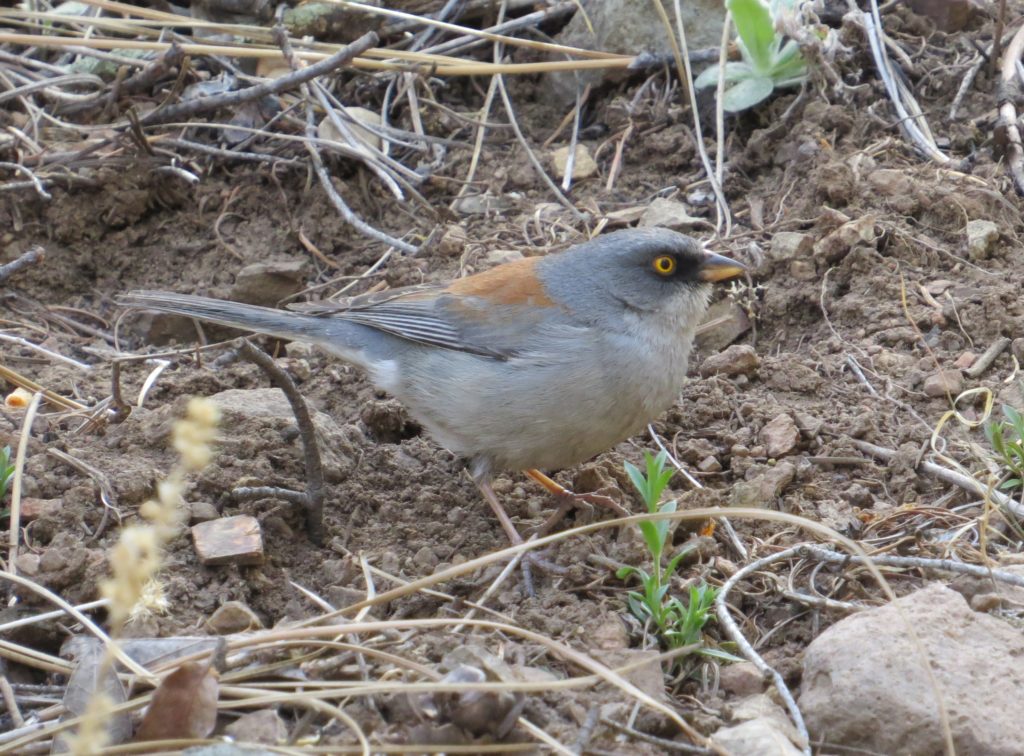
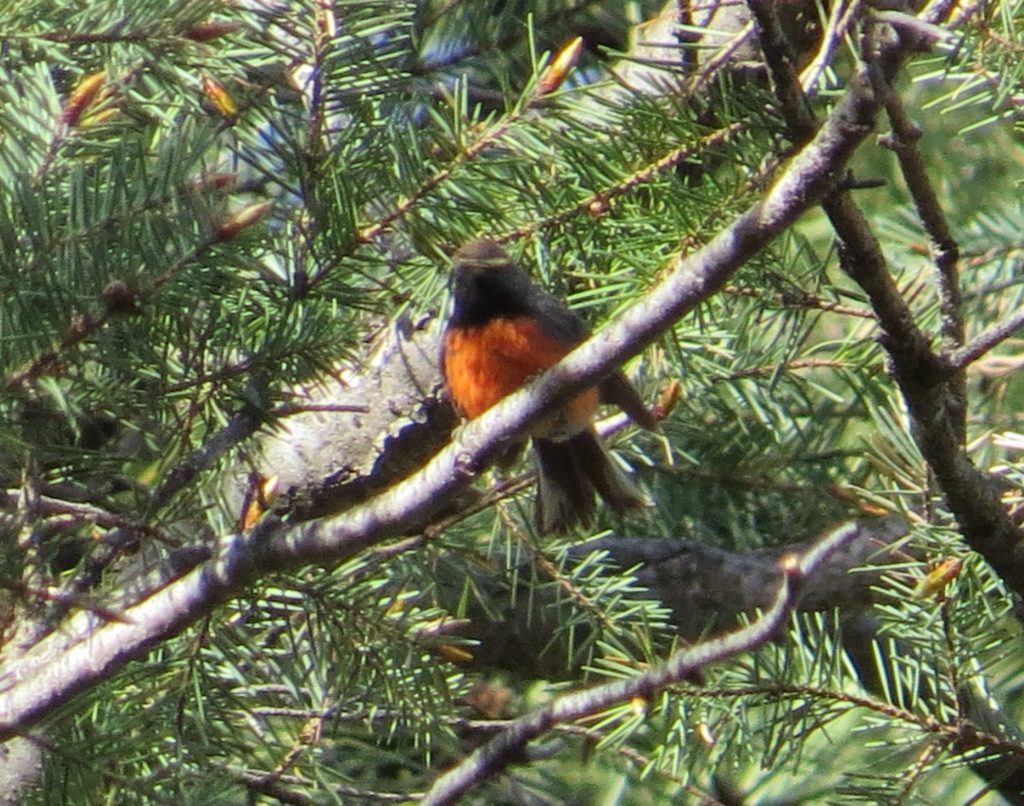
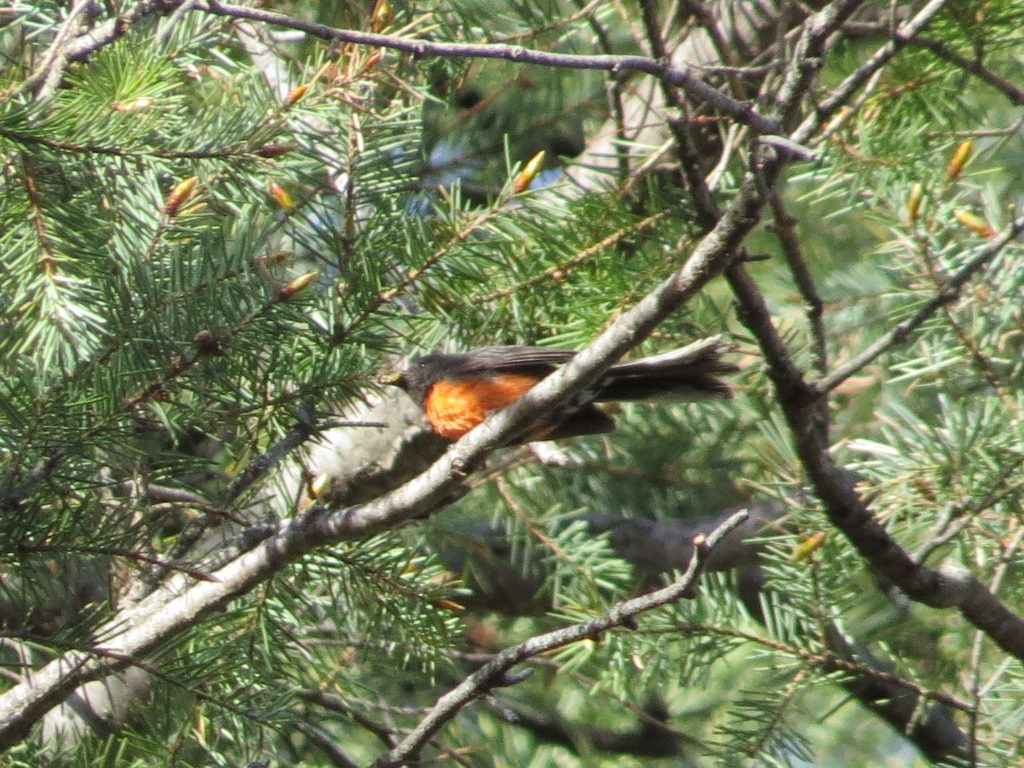
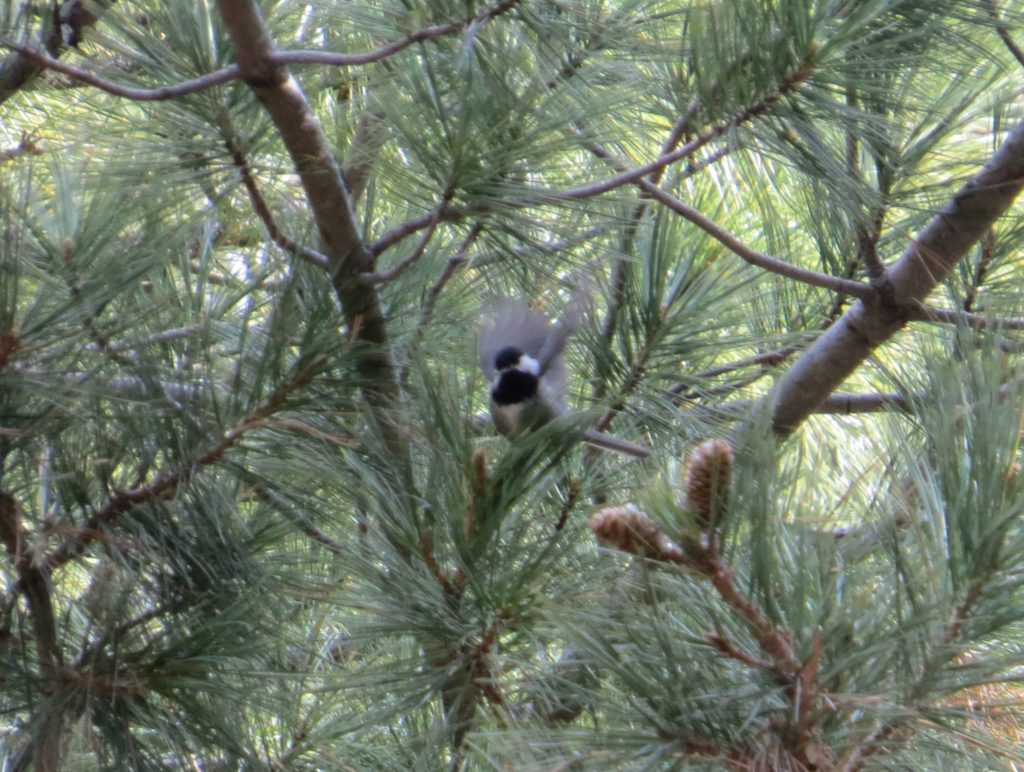 When you are literally on top of the world and have seen the Mexican Chickadee (and all kinds of other crazy good birds), a celebratory selfie is in order.
When you are literally on top of the world and have seen the Mexican Chickadee (and all kinds of other crazy good birds), a celebratory selfie is in order.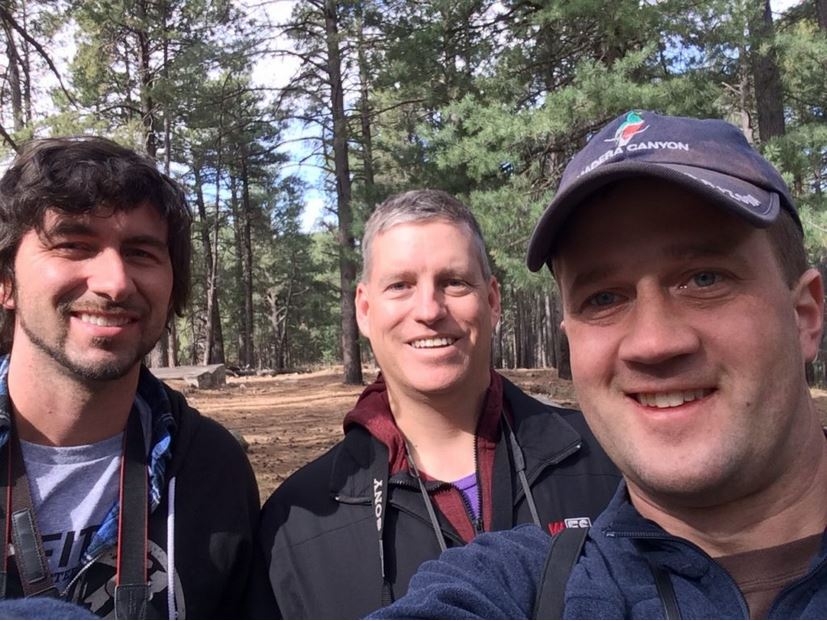
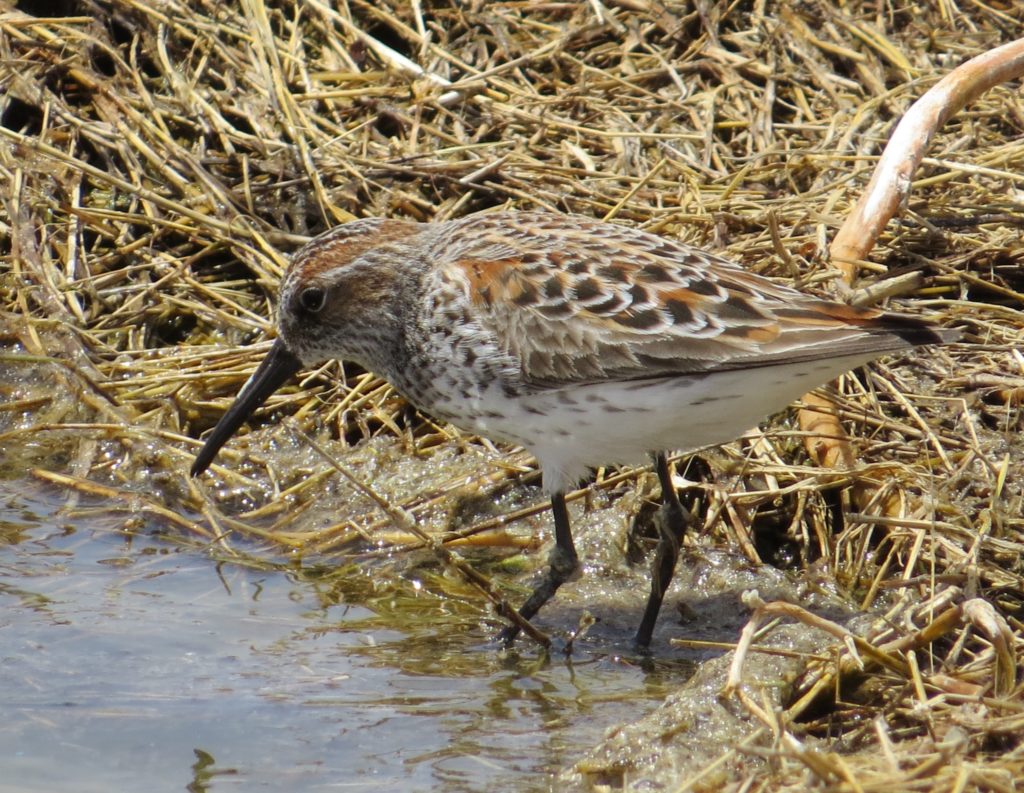 Cinnamon Teal never get old to this birder, and they were quite cooperative in Willcox as well.
Cinnamon Teal never get old to this birder, and they were quite cooperative in Willcox as well.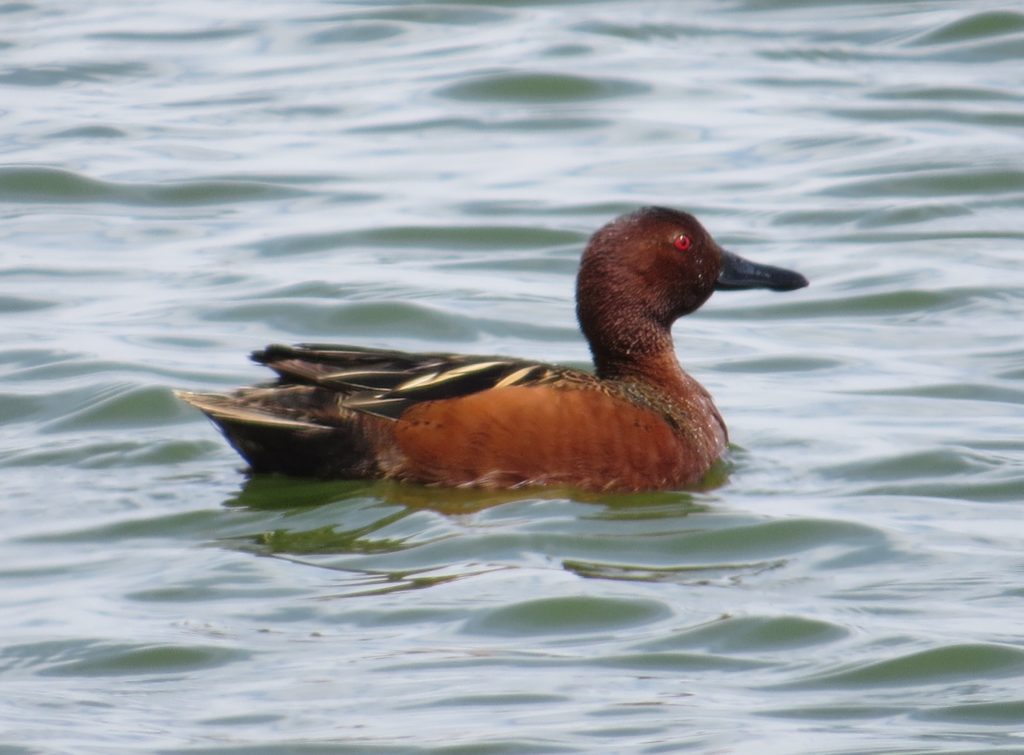 The trip was really over at this point. Steve and I had a flight to catch. That didn’t mean there wasn’t time to make one quick stop when we got close to my parents’ house in Maricopa. Tommy spotted this Burrowing Owl.
The trip was really over at this point. Steve and I had a flight to catch. That didn’t mean there wasn’t time to make one quick stop when we got close to my parents’ house in Maricopa. Tommy spotted this Burrowing Owl.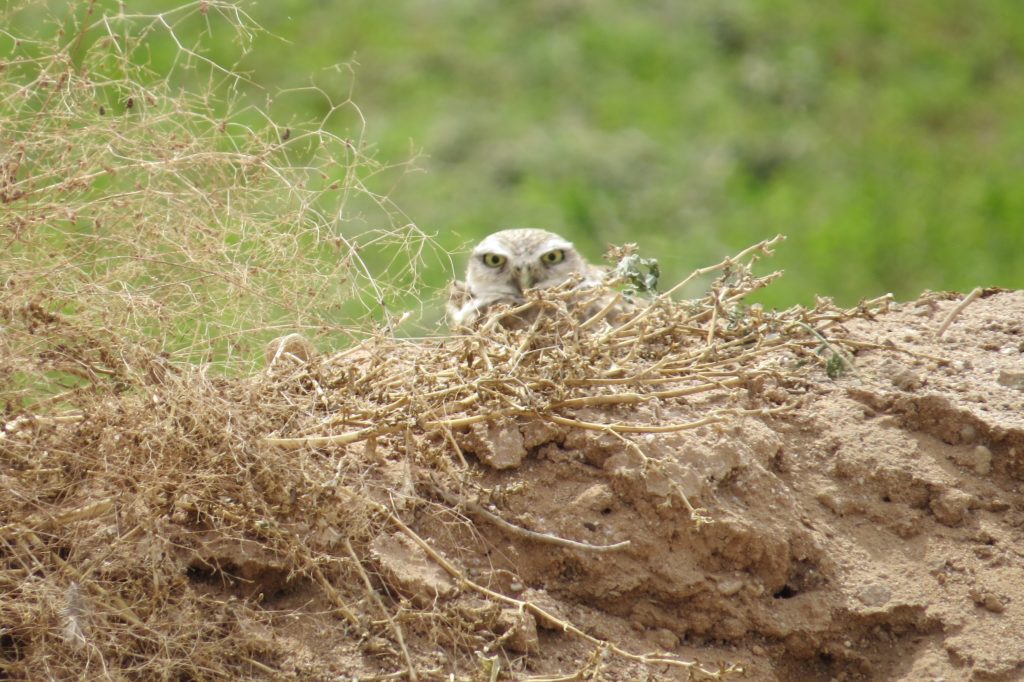
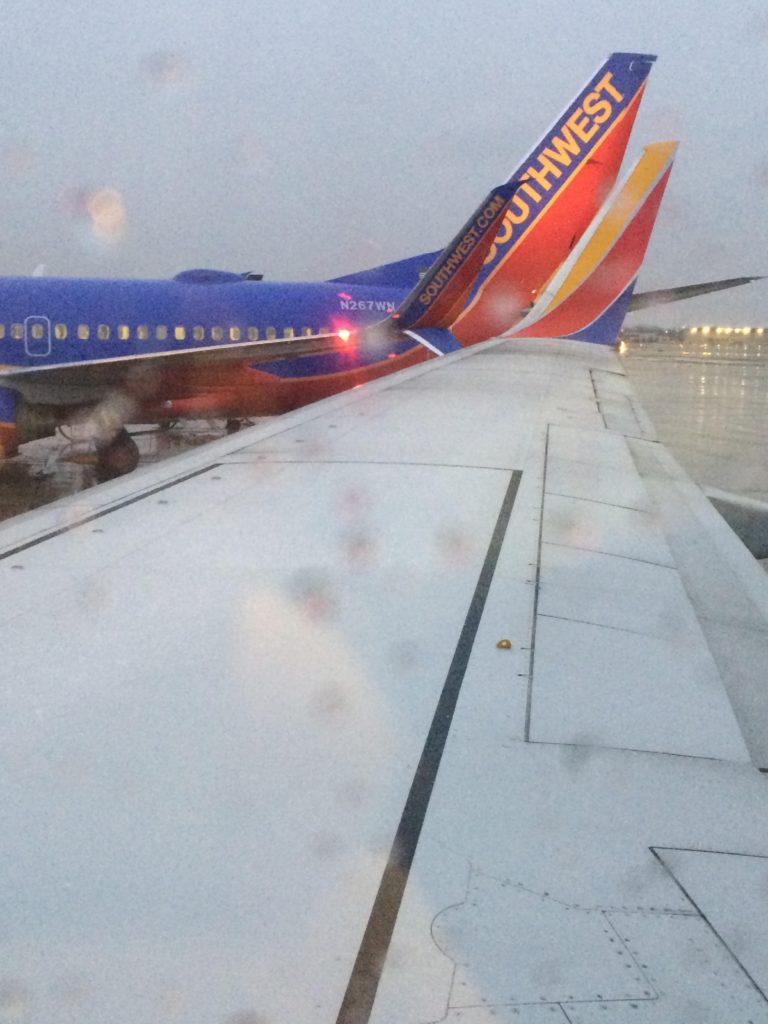
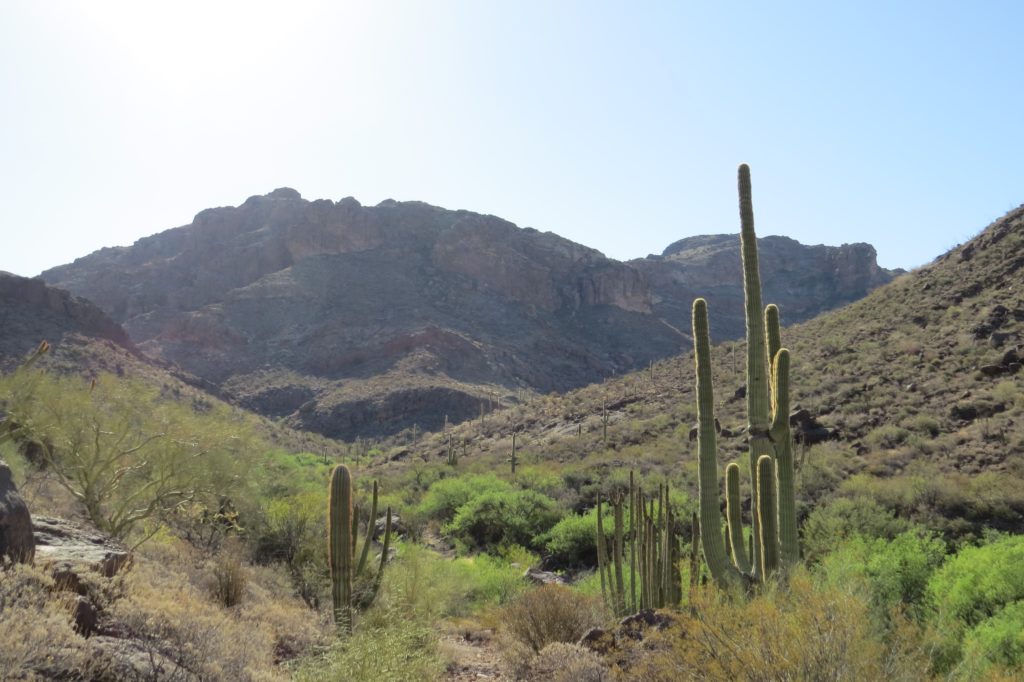 Owls aside, I think Steve and I were just enjoying not being in a blizzard. Our sympathies for our families back home were quickly eclipsed by the beautiful weather we were enjoying. We picked a great weekend to be in southern Arizona.
Owls aside, I think Steve and I were just enjoying not being in a blizzard. Our sympathies for our families back home were quickly eclipsed by the beautiful weather we were enjoying. We picked a great weekend to be in southern Arizona.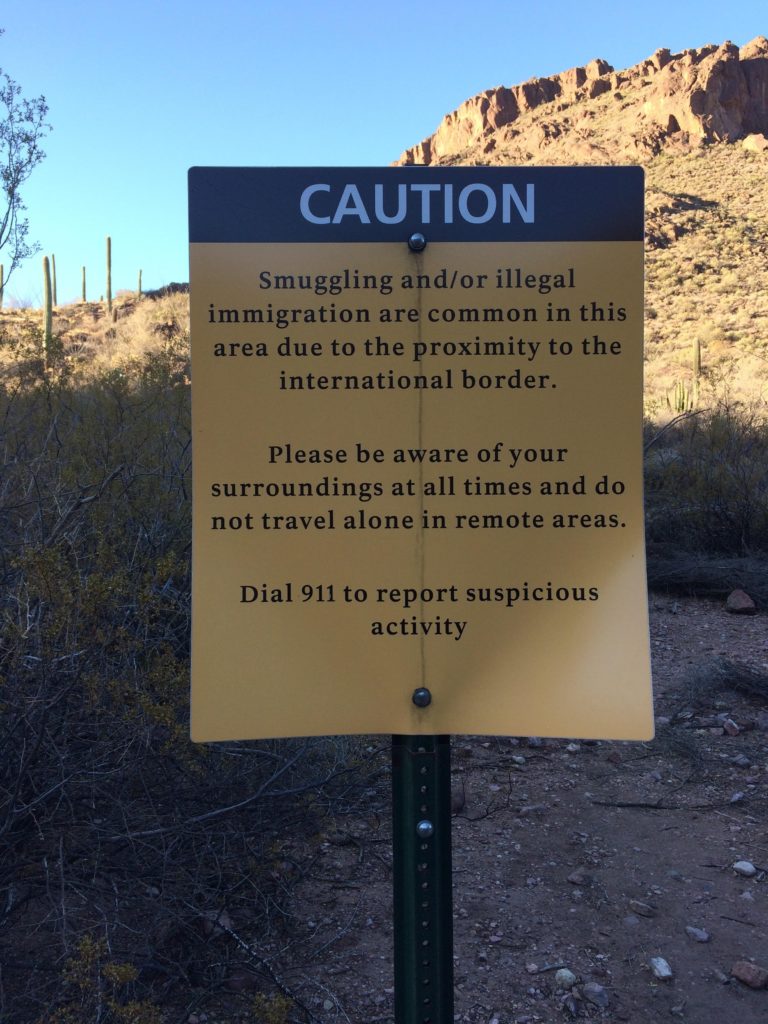
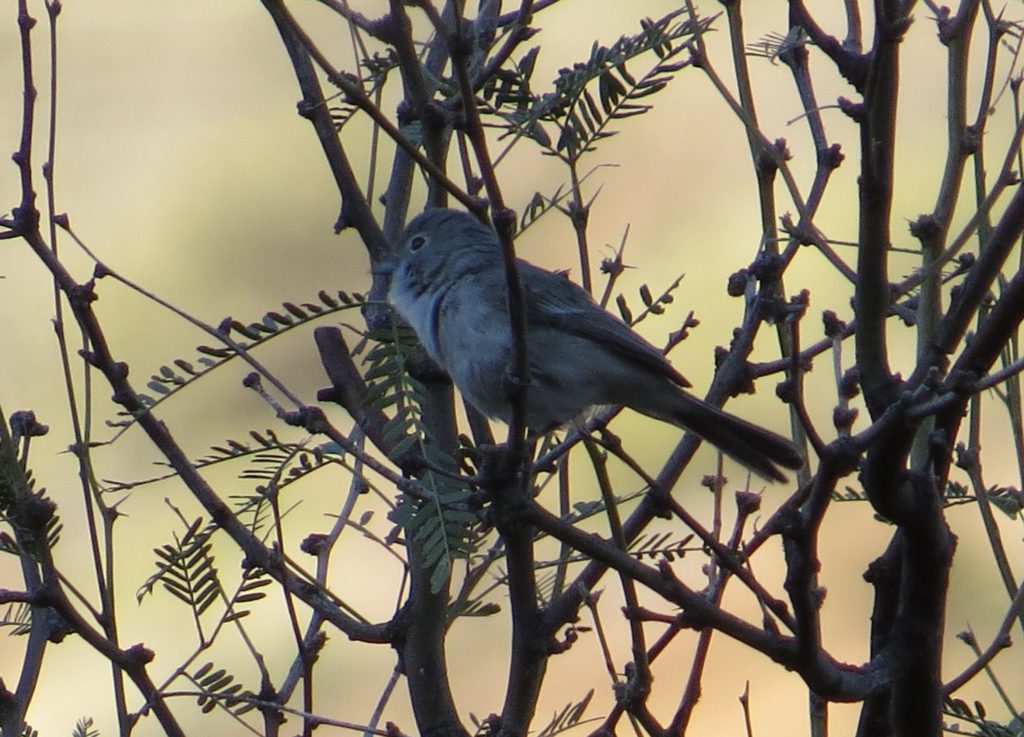 Not long after the Gray Vireo fun it was time to head back down canyon sans FEPO. A petty consolation came in the form of another Vireo lifer we missed on the way up, one of the Cassin’s variety.
Not long after the Gray Vireo fun it was time to head back down canyon sans FEPO. A petty consolation came in the form of another Vireo lifer we missed on the way up, one of the Cassin’s variety.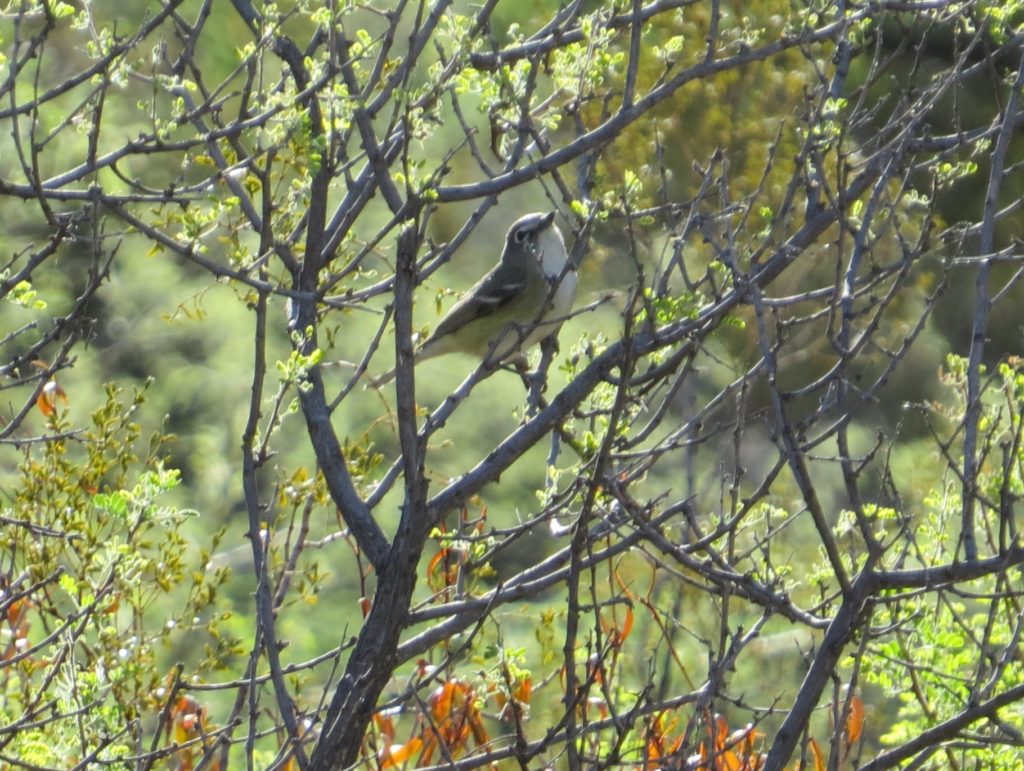
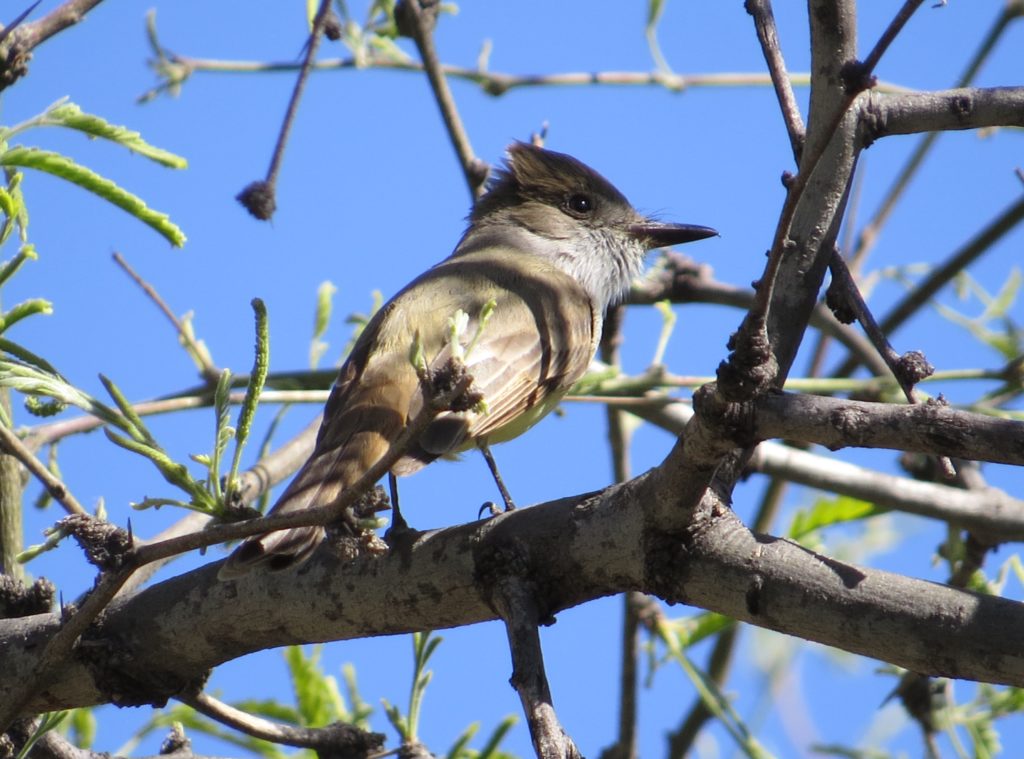
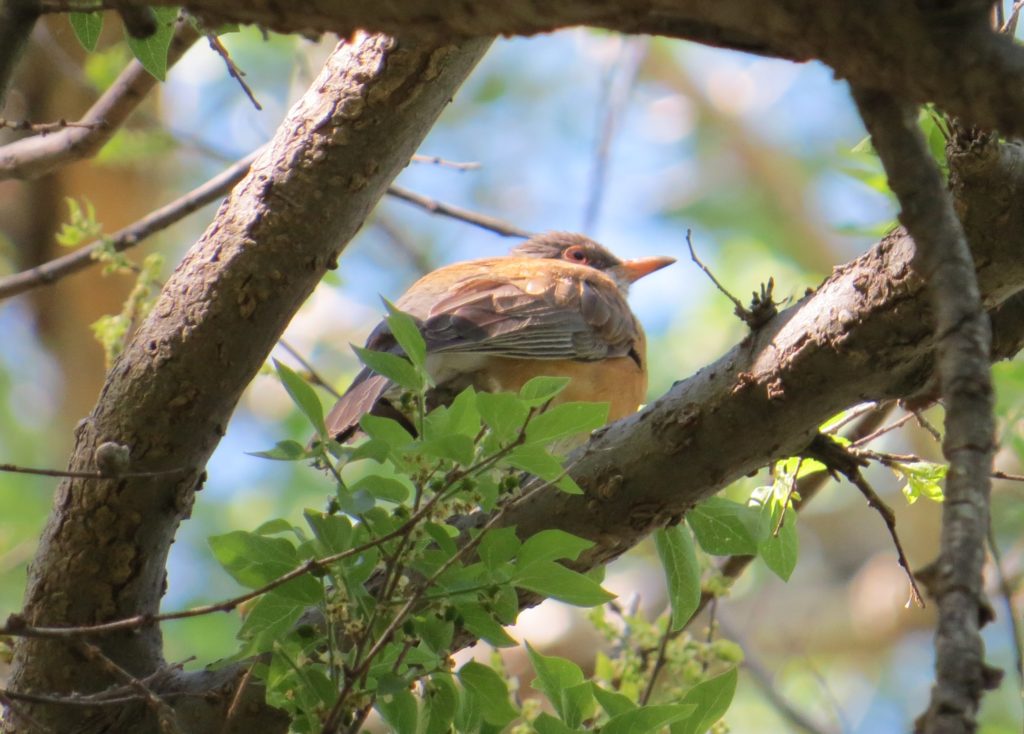
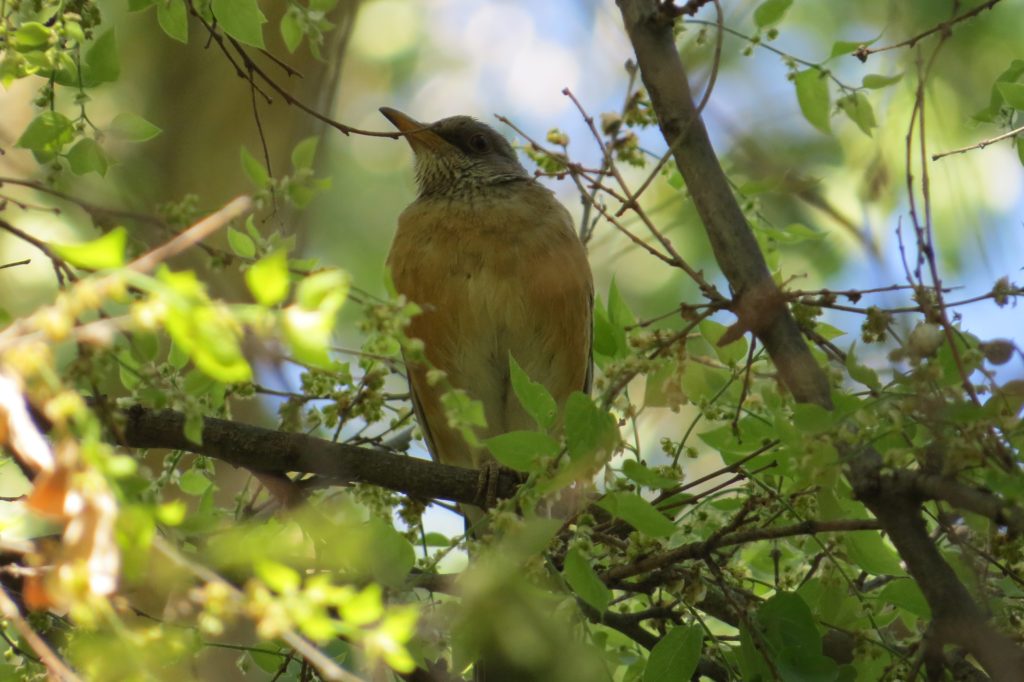
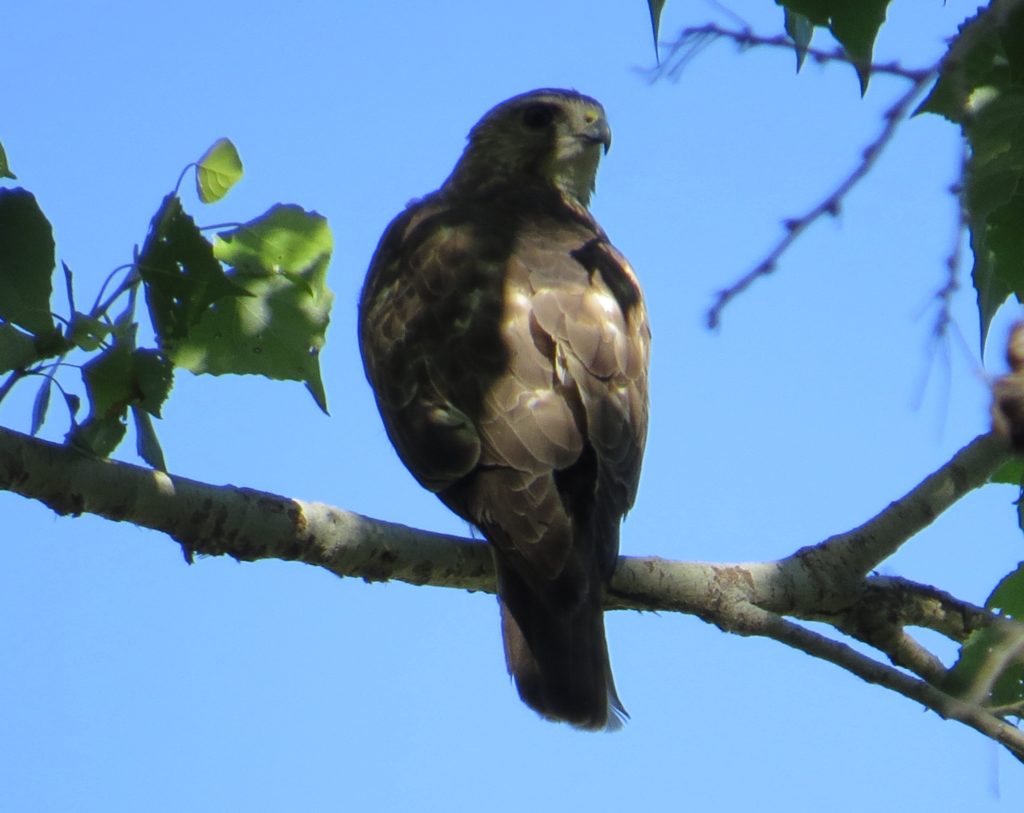 By this point in the afternoon, it was time we made our way to Madera Canyon. Not wanting to waste any burning daylight, we squeezed out every minute stopping briefly at Florida Canyon for Rufous-capped Warbler for Steve and Black-capped Gnatcatcher for both of us. Nada on those, but the effort was minimal. At least a Black-throated Gray Warbler was an nice lifer bonus for Steve. Next up was a stop at Proctor Road to try one more time for the Gnatcatcher. We did find a Gnatcatcher that was more Black-capped-like that Black-tailed, but the waning daylight and the bird’s fidgety behavior did not allow us to clinch the key field marks for an ID beyond a reasonable doubt. The regularity of this species makes it highly likely that it will eventually land on my list, just not this day.
By this point in the afternoon, it was time we made our way to Madera Canyon. Not wanting to waste any burning daylight, we squeezed out every minute stopping briefly at Florida Canyon for Rufous-capped Warbler for Steve and Black-capped Gnatcatcher for both of us. Nada on those, but the effort was minimal. At least a Black-throated Gray Warbler was an nice lifer bonus for Steve. Next up was a stop at Proctor Road to try one more time for the Gnatcatcher. We did find a Gnatcatcher that was more Black-capped-like that Black-tailed, but the waning daylight and the bird’s fidgety behavior did not allow us to clinch the key field marks for an ID beyond a reasonable doubt. The regularity of this species makes it highly likely that it will eventually land on my list, just not this day.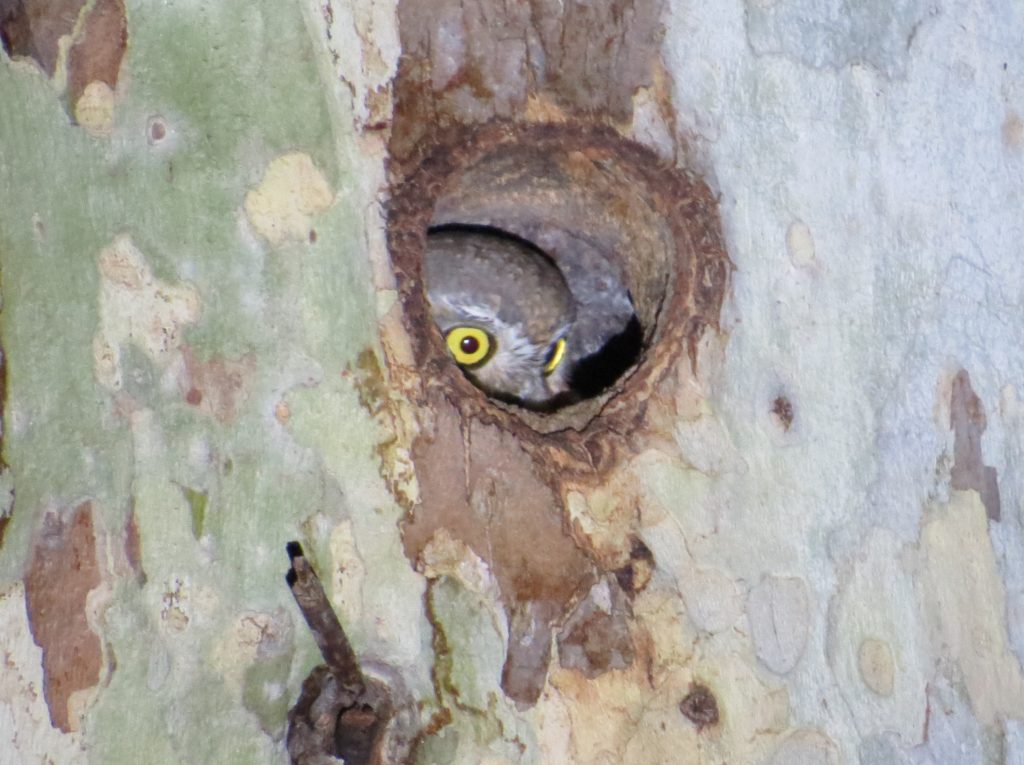
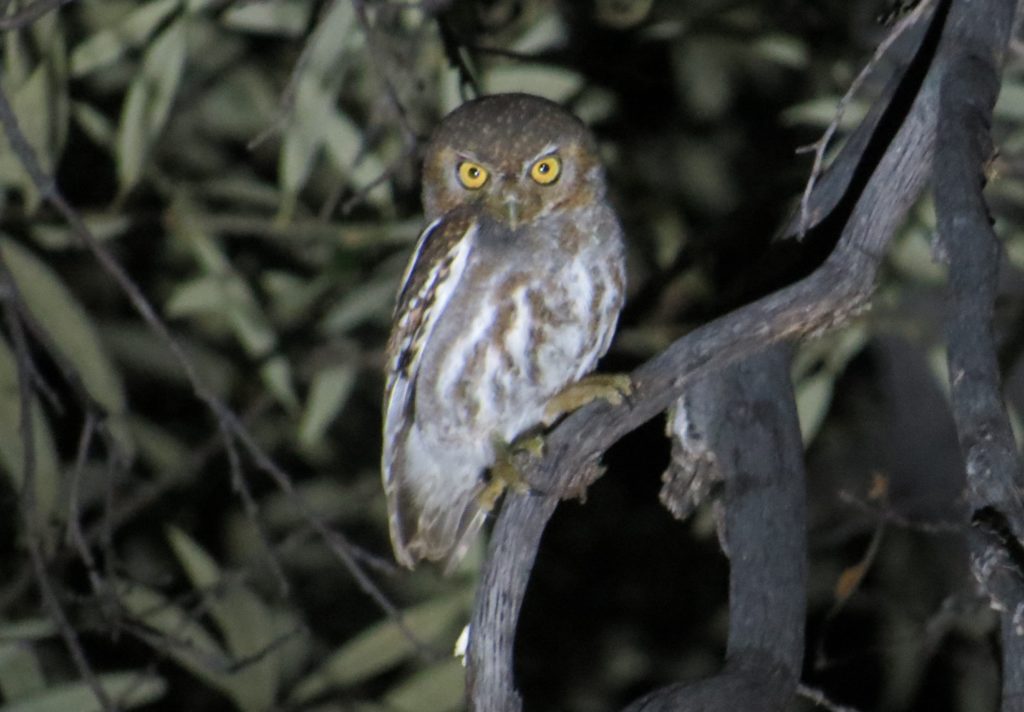

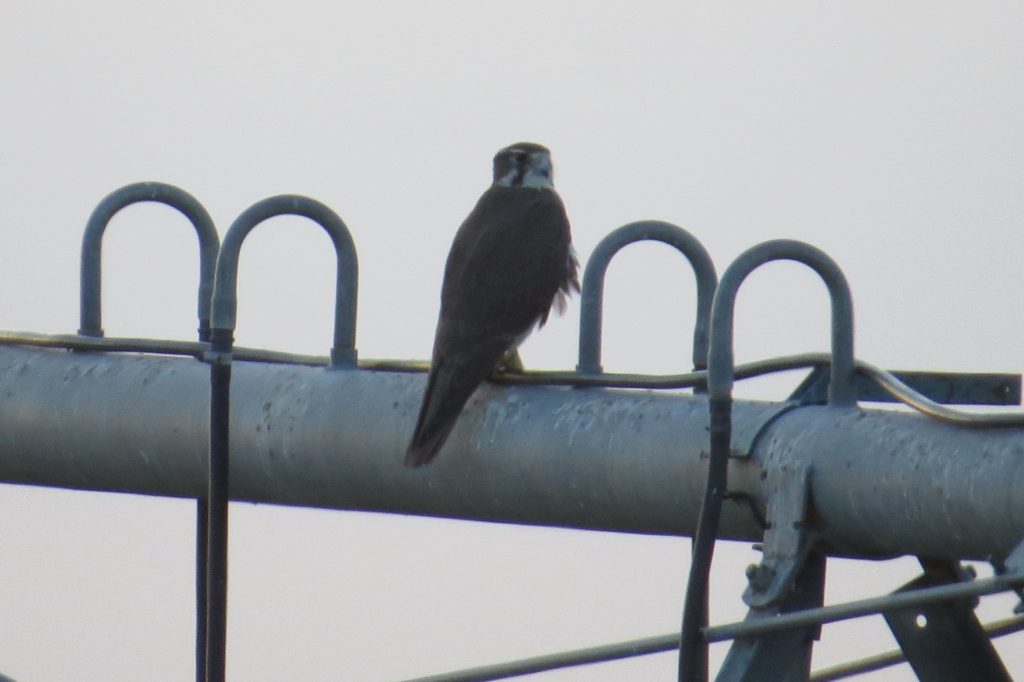 My clean-up operations are not haphazard–my strategy is to try to go after anything rare first and save the most common for later if need be. One of those rarities was the Rufous-backed Robin. This past winter was exceptional for this species with many records popping up in AZ. So that next day, my friend Gordon Karre took me on a mini-outing to stake out a gorgeous backyard in Paradise Valley to hopefully get one of two Robins that had been eating the berries of pyracantha bushes. The problem was that time and berries had run out for this particular Robin pair. We dipped.
My clean-up operations are not haphazard–my strategy is to try to go after anything rare first and save the most common for later if need be. One of those rarities was the Rufous-backed Robin. This past winter was exceptional for this species with many records popping up in AZ. So that next day, my friend Gordon Karre took me on a mini-outing to stake out a gorgeous backyard in Paradise Valley to hopefully get one of two Robins that had been eating the berries of pyracantha bushes. The problem was that time and berries had run out for this particular Robin pair. We dipped.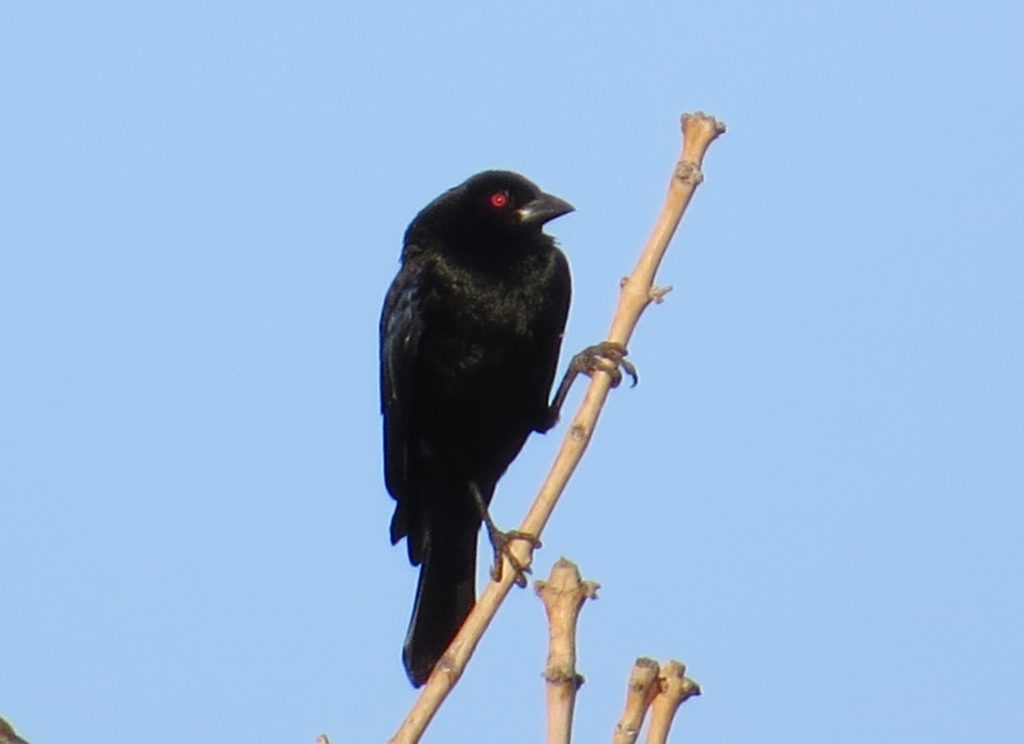 With that target achieved, the birding was put on hold until the next morning where Gordon, my Dad, and I would follow the same strategy–go after a key rarity and snag as many other lifers along the way. That rarity was the Ruddy Ground-Dove. Though we were going to originally go after one in the Phoenix area, it became a no-show just a couple days before the trip. We were then forced to go south to the Red Rock feedlot where several had been seen.
With that target achieved, the birding was put on hold until the next morning where Gordon, my Dad, and I would follow the same strategy–go after a key rarity and snag as many other lifers along the way. That rarity was the Ruddy Ground-Dove. Though we were going to originally go after one in the Phoenix area, it became a no-show just a couple days before the trip. We were then forced to go south to the Red Rock feedlot where several had been seen.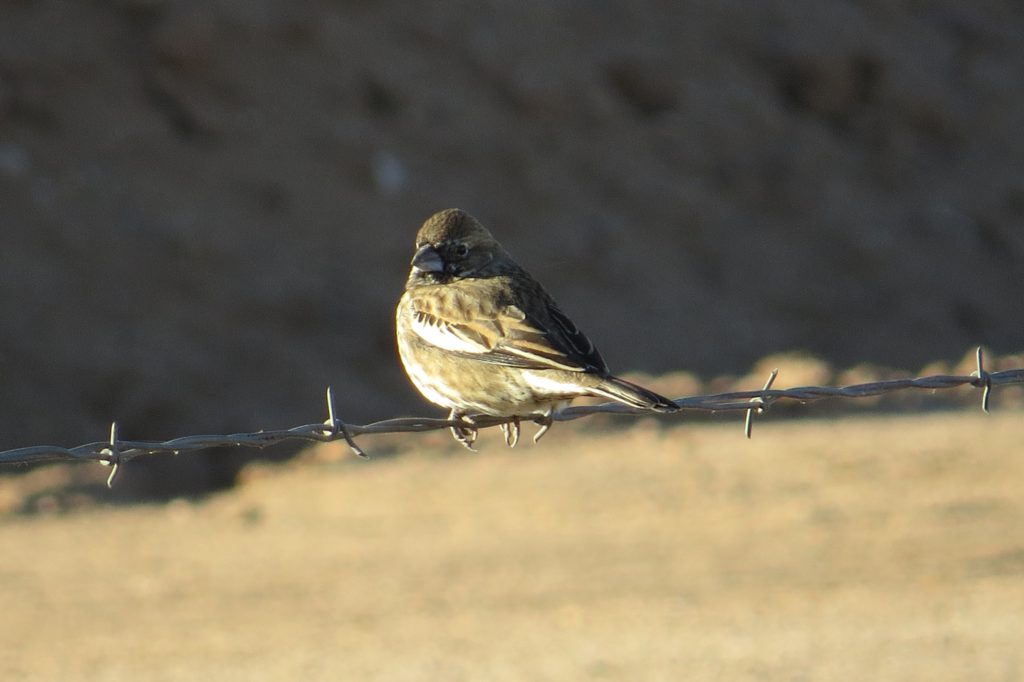 Finally we got on to the flock(!) of the rare Doves, finding five or six in all. Here are four of them with an Inca Dove that has identity issues, all huddling to keep warm on this chilly morning.
Finally we got on to the flock(!) of the rare Doves, finding five or six in all. Here are four of them with an Inca Dove that has identity issues, all huddling to keep warm on this chilly morning.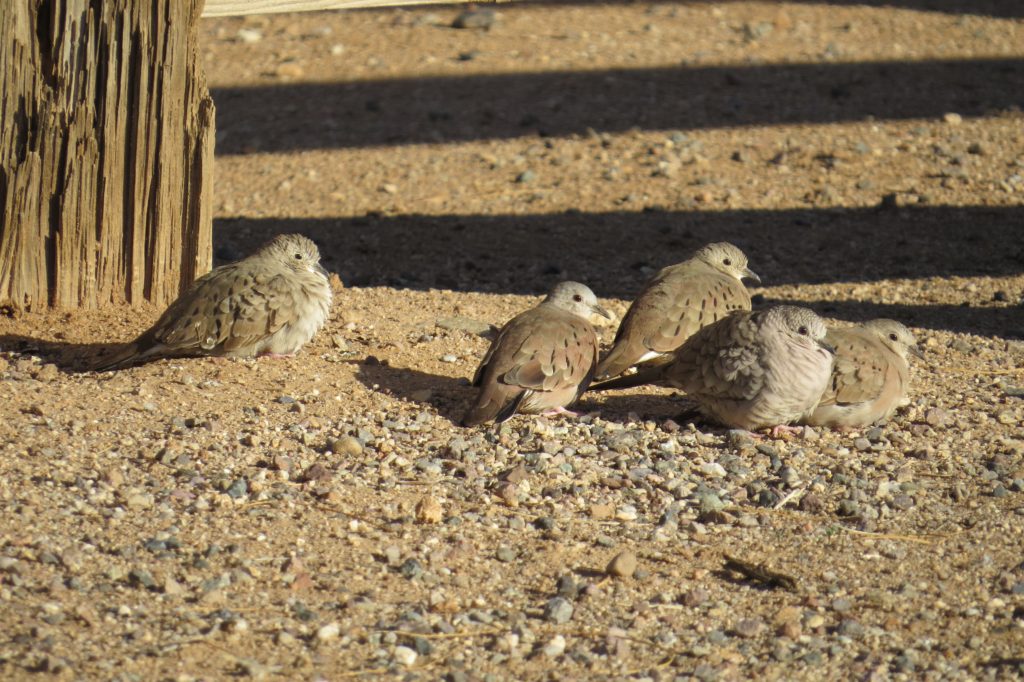
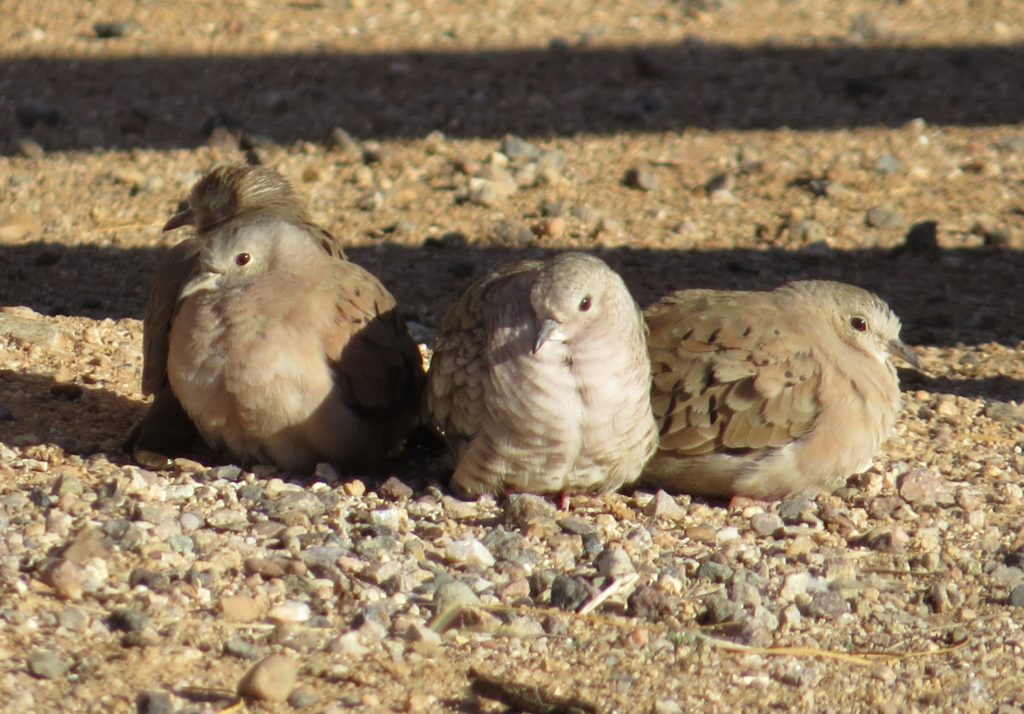
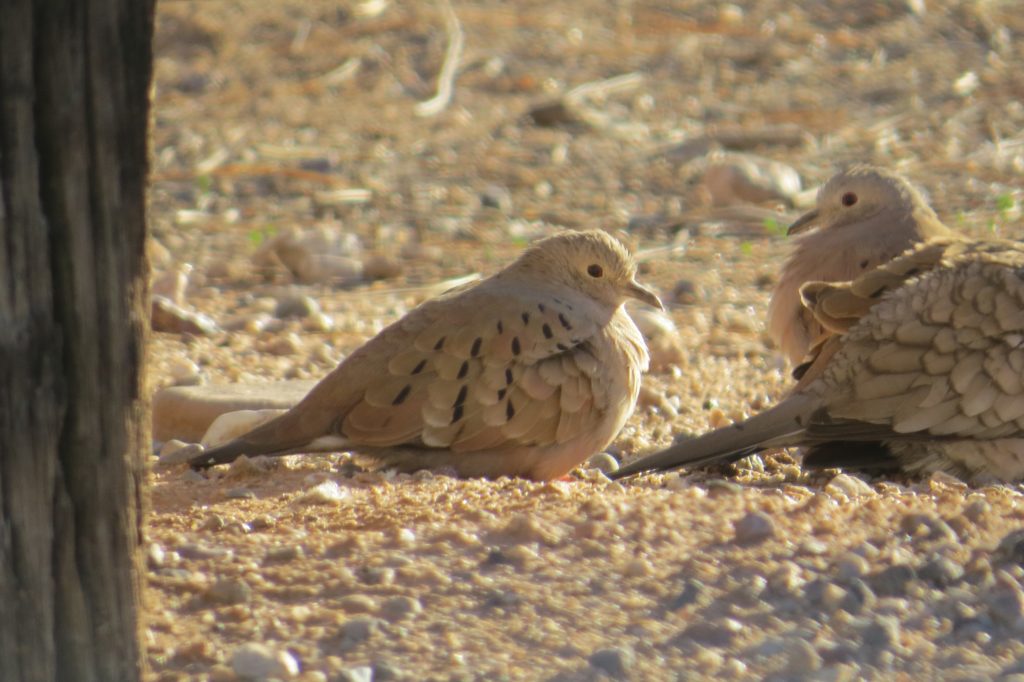
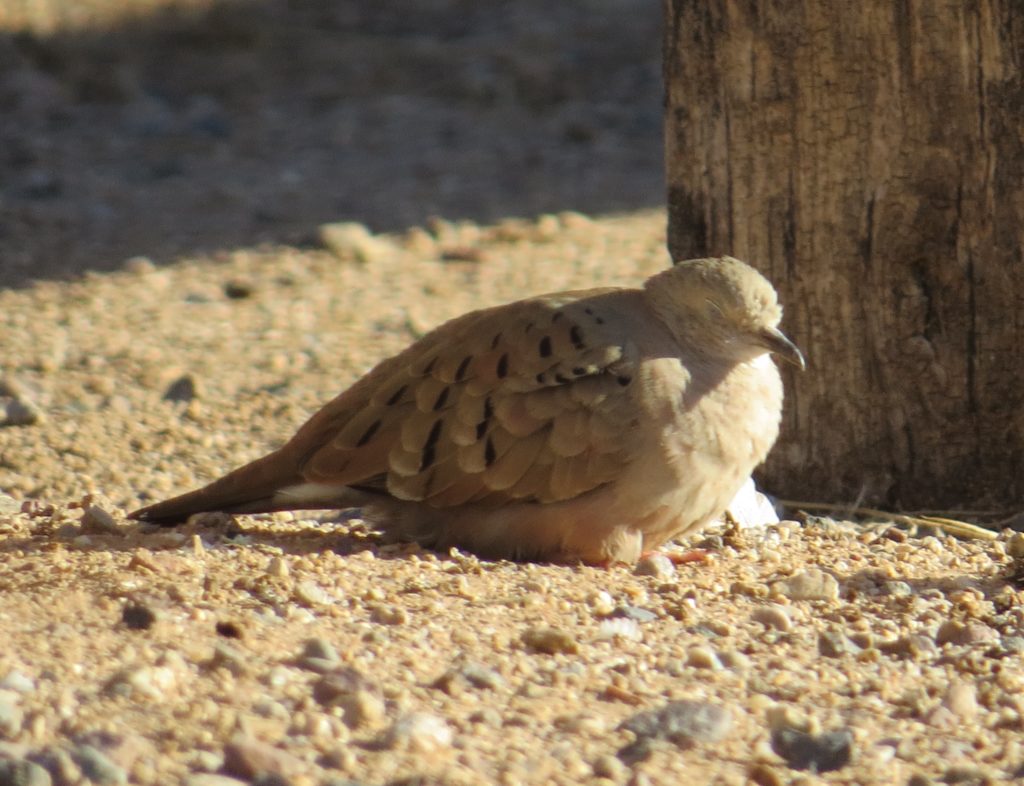 The plan was to cruise through the Santa Cruz Flats on the way home to try for two birds I had long been holding in reserve: Crested Caracara and Mountain Plover. The Santa Cruz Flats are fun place to bird where one can not only stumble across a Mark Ochs lifer but also see cool stuff like Harris’s Hawks.
The plan was to cruise through the Santa Cruz Flats on the way home to try for two birds I had long been holding in reserve: Crested Caracara and Mountain Plover. The Santa Cruz Flats are fun place to bird where one can not only stumble across a Mark Ochs lifer but also see cool stuff like Harris’s Hawks.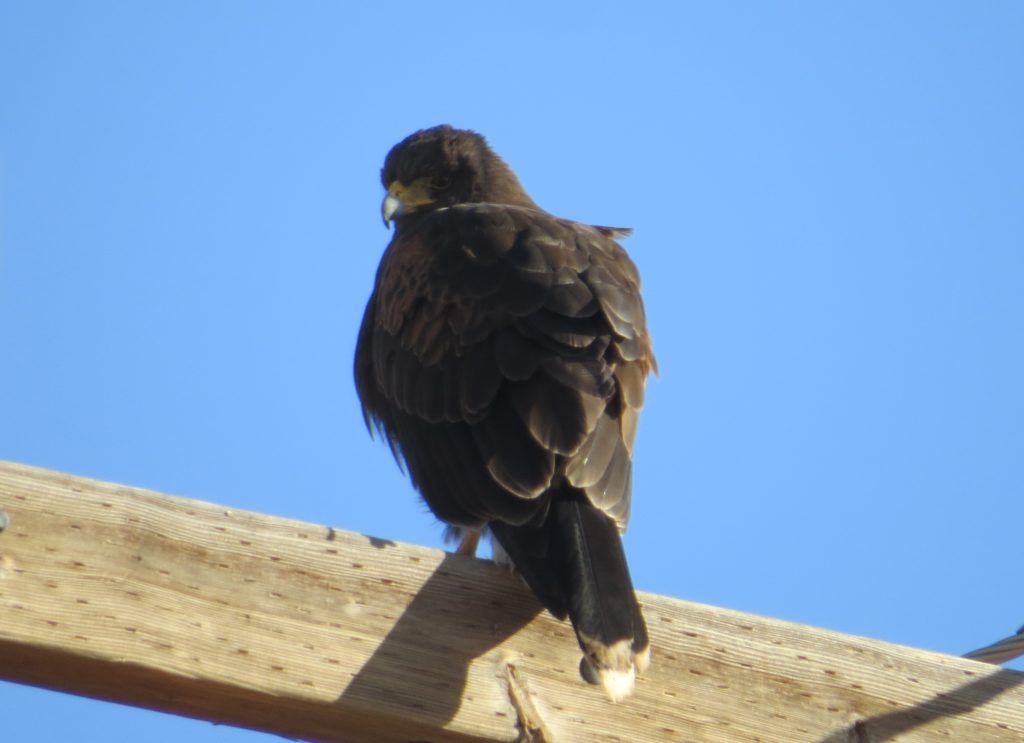
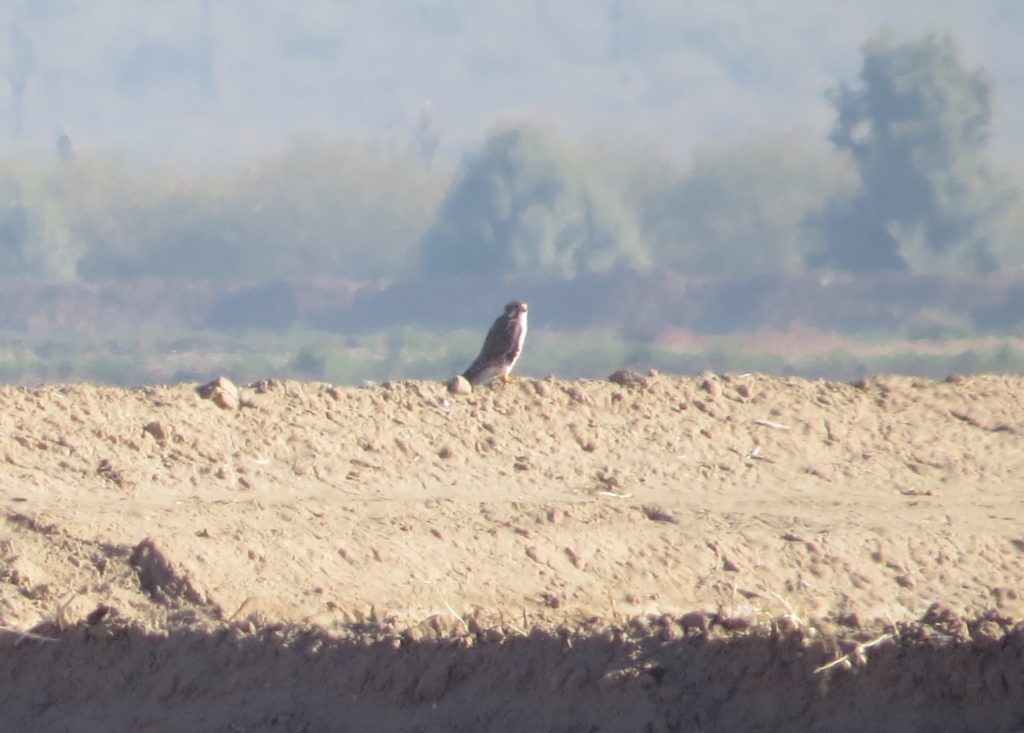 Then, thanks to our trusty guide, we finally got onto one of the two targets–a whole heap of Crested Caracaras.
Then, thanks to our trusty guide, we finally got onto one of the two targets–a whole heap of Crested Caracaras. 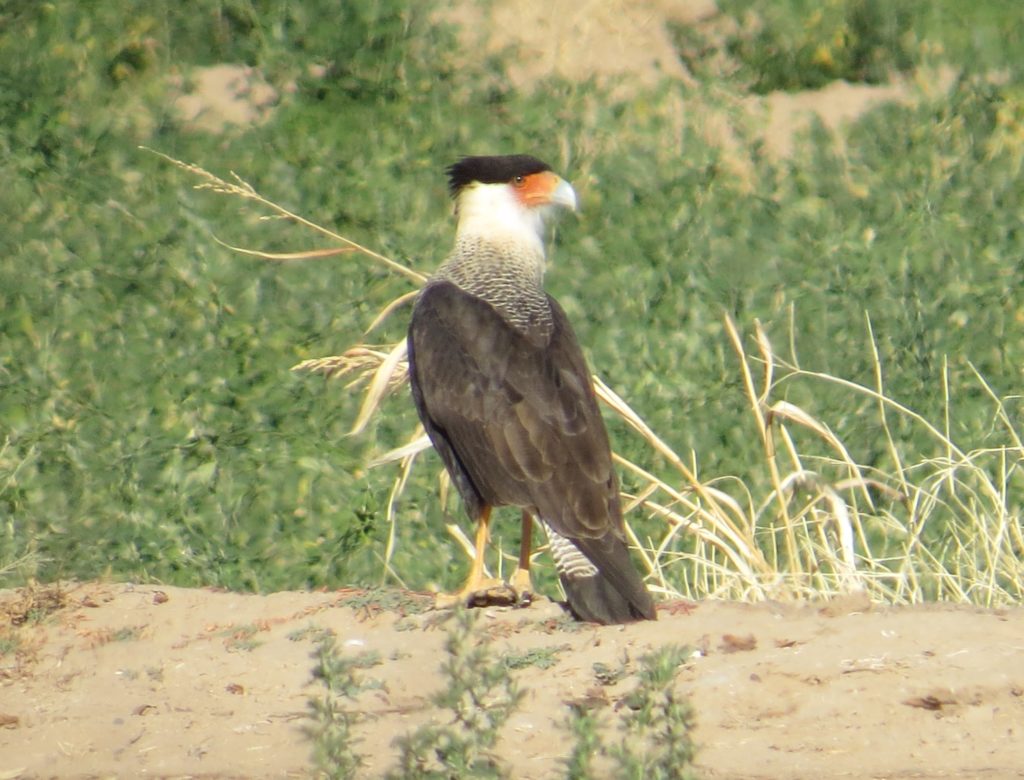
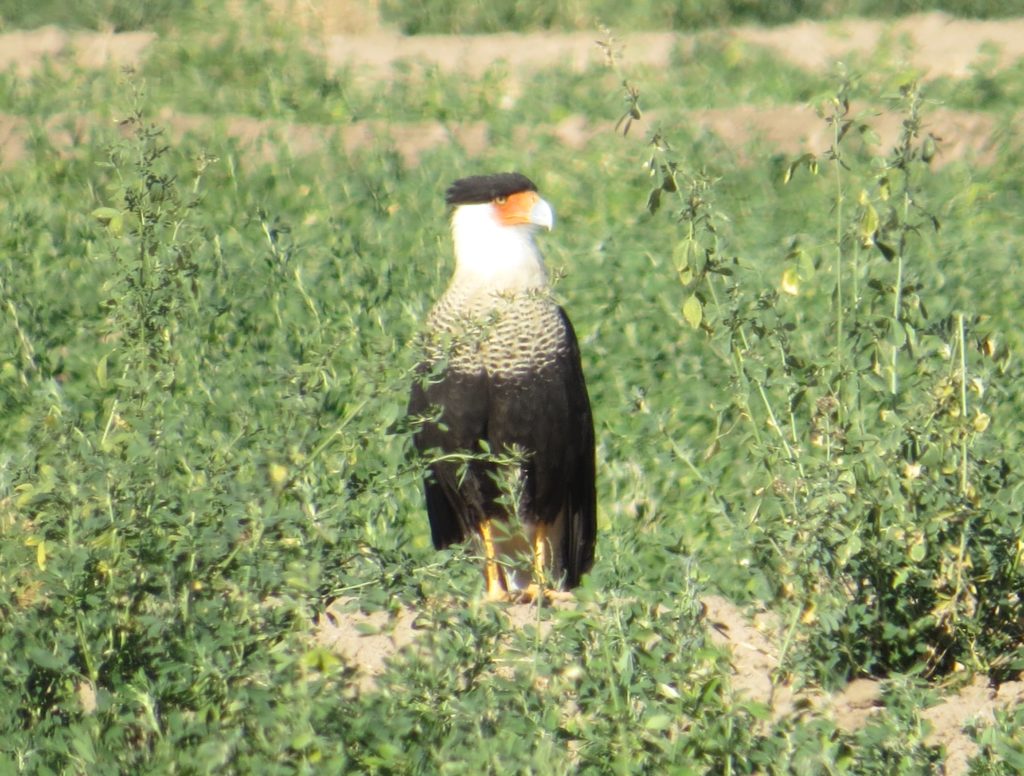 Not long after, Gordon had found us some Mountain Plovers.
Not long after, Gordon had found us some Mountain Plovers.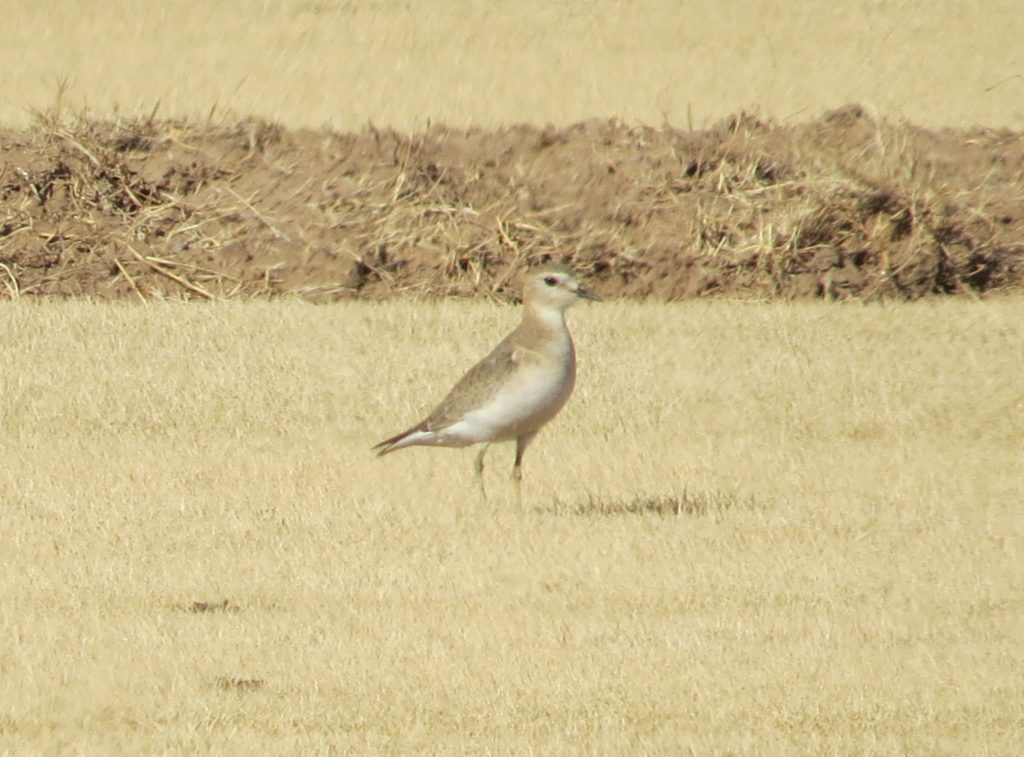
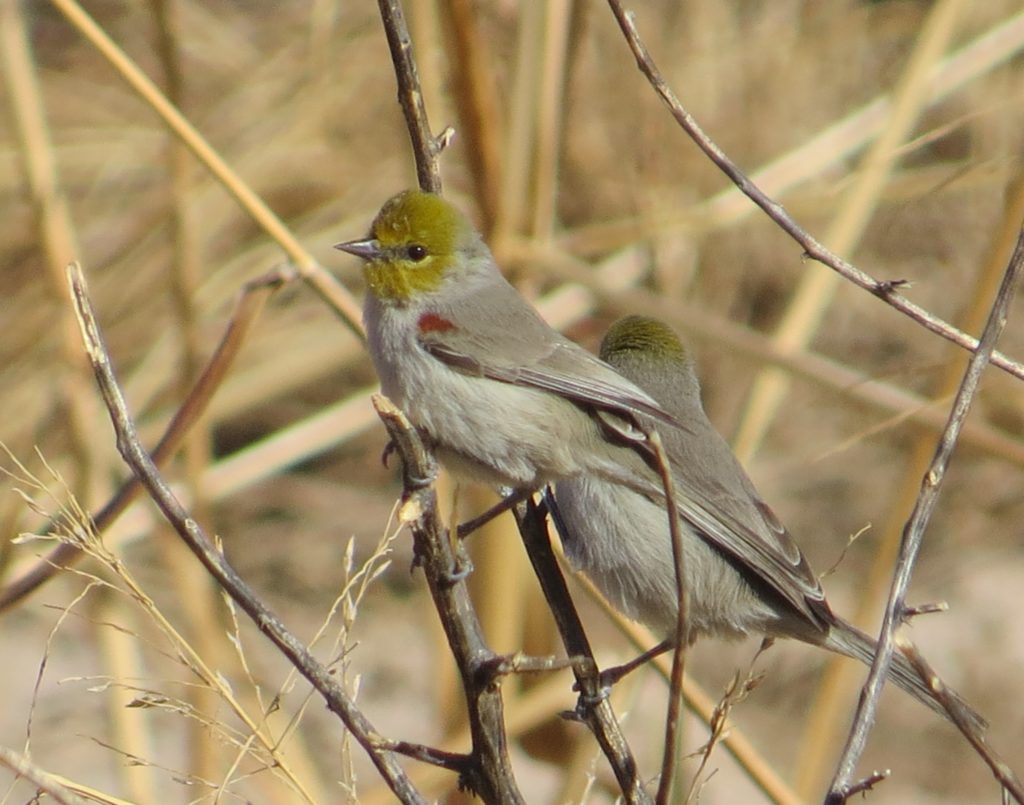 Some birds practically throw themselves at you when you’re just out walking in the neighborhood. Vermilion Flycatchers seem to be becoming more prolific in the area of Maricopa where Mom and Dad live. I don’t mind.
Some birds practically throw themselves at you when you’re just out walking in the neighborhood. Vermilion Flycatchers seem to be becoming more prolific in the area of Maricopa where Mom and Dad live. I don’t mind.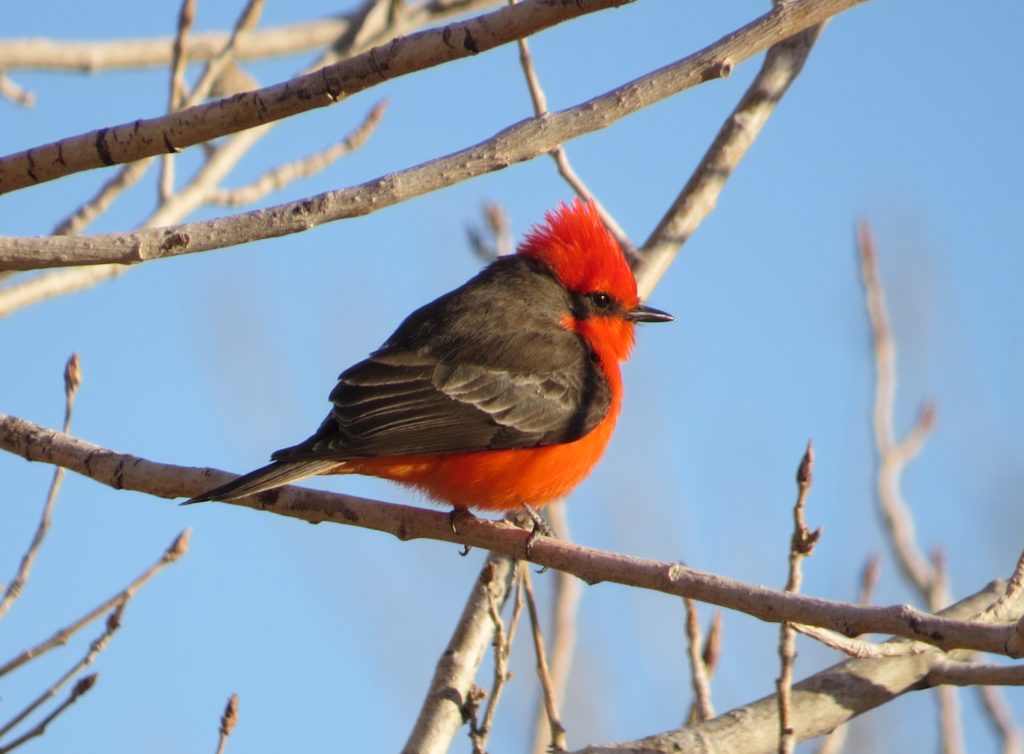
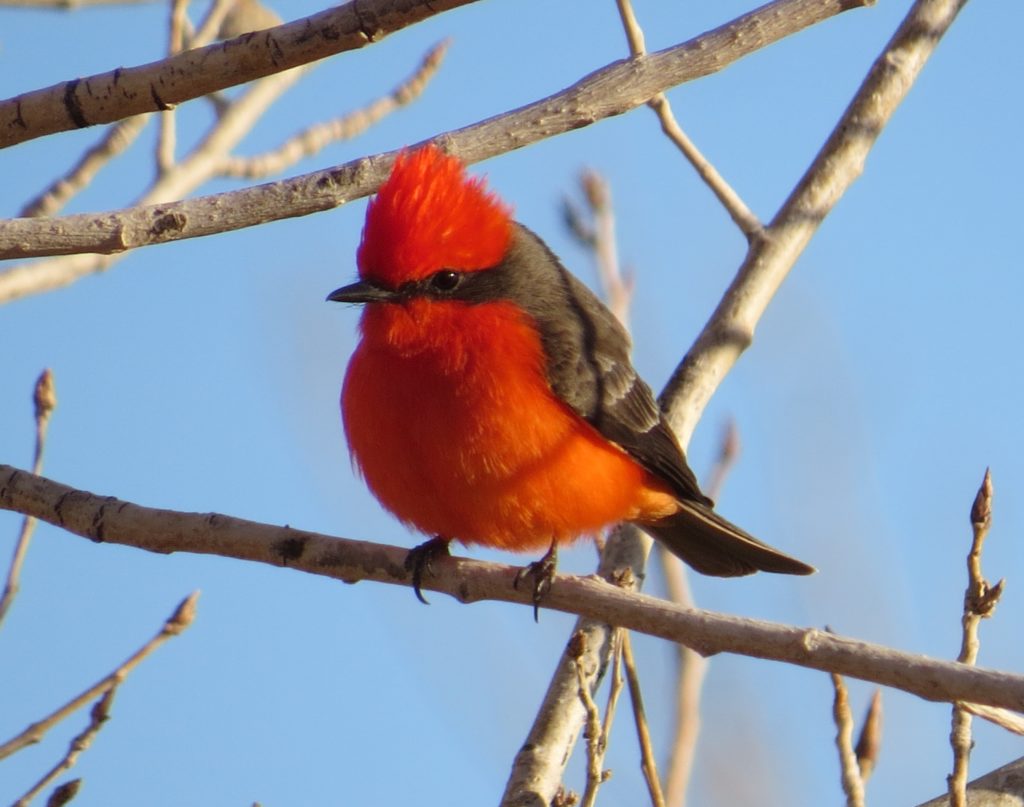 Last, but certainly not least, checking on our neighborhood buddy is an annual tradition.
Last, but certainly not least, checking on our neighborhood buddy is an annual tradition.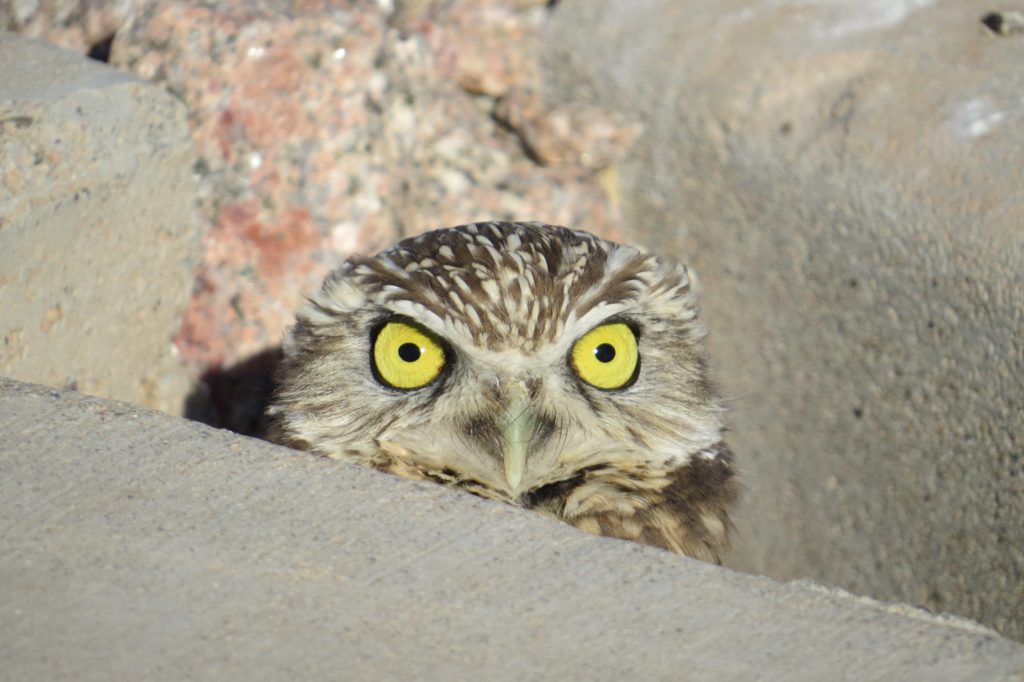 So that’s it from this trip. Pretty tame by previous standards, but that will more than be made up for on an upcoming post detailing another trip to Arizona that was focused exclusively on birding. But first, we have to cover another excursion to Duluth. There was an irruption going on this winter, after all.
So that’s it from this trip. Pretty tame by previous standards, but that will more than be made up for on an upcoming post detailing another trip to Arizona that was focused exclusively on birding. But first, we have to cover another excursion to Duluth. There was an irruption going on this winter, after all.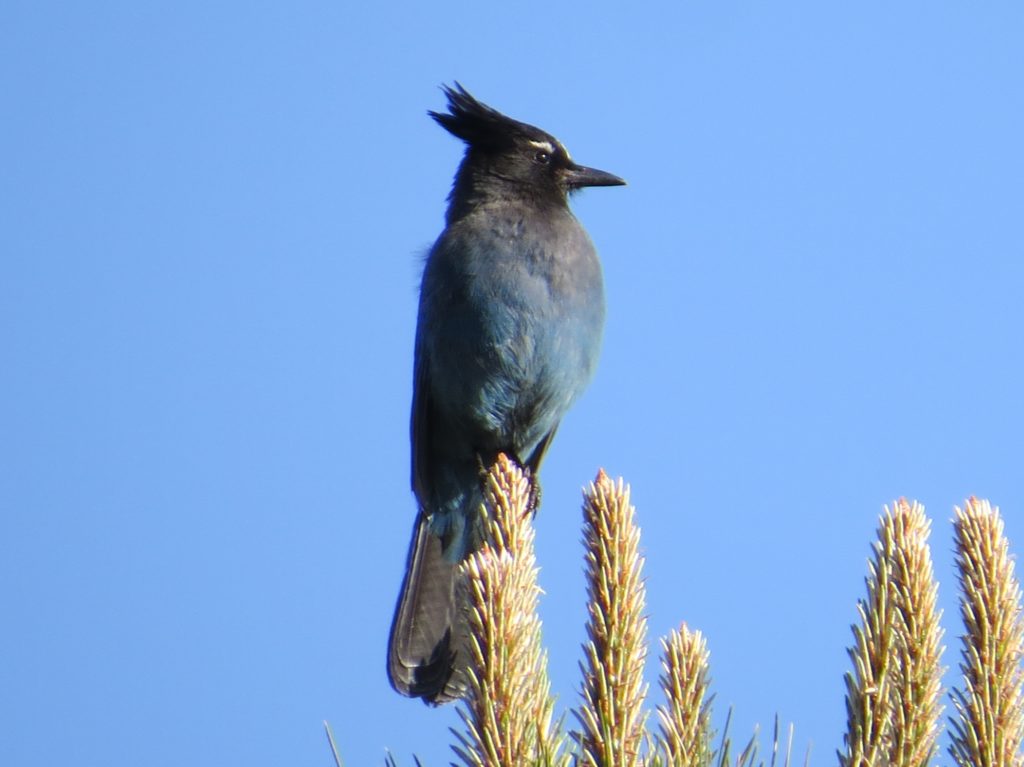
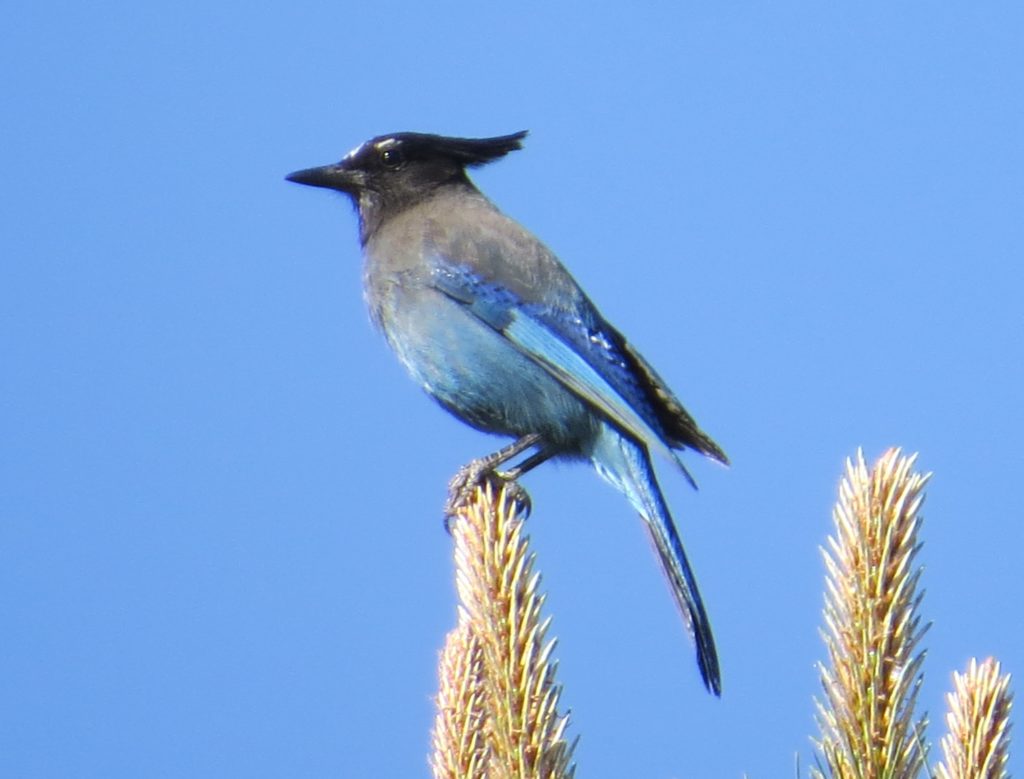 Another montane, neighborhood bird at the resort was the Black-headed Grosbeak. Though I’ve seen them in Colorado and South Dakota, the views have always been fleeting and unsatisfying. This encounter went a long way toward rectifying that.
Another montane, neighborhood bird at the resort was the Black-headed Grosbeak. Though I’ve seen them in Colorado and South Dakota, the views have always been fleeting and unsatisfying. This encounter went a long way toward rectifying that.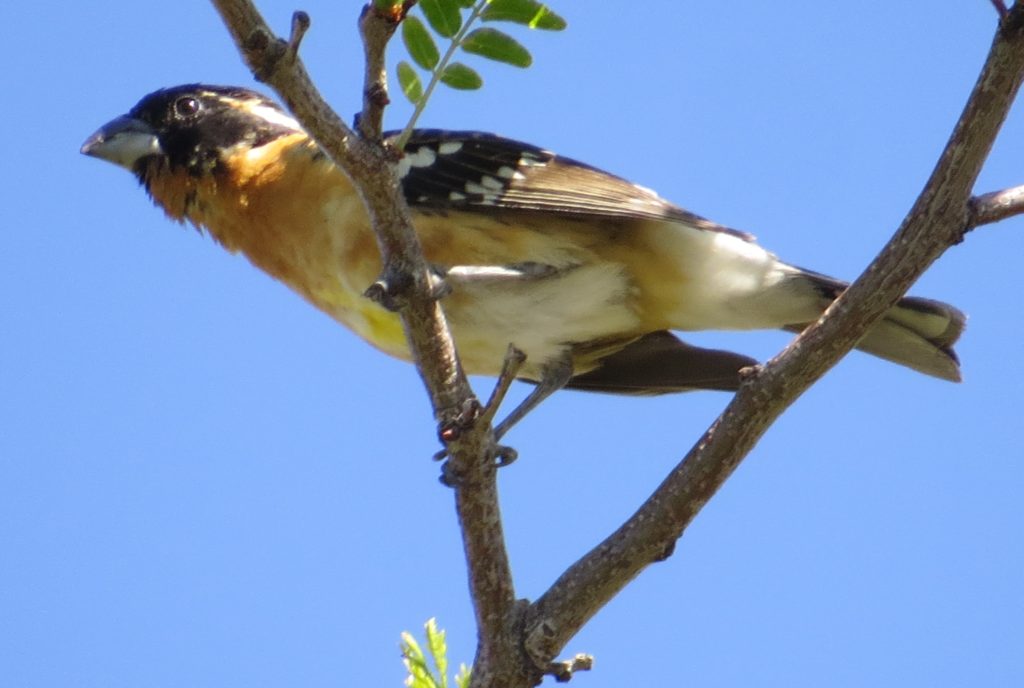
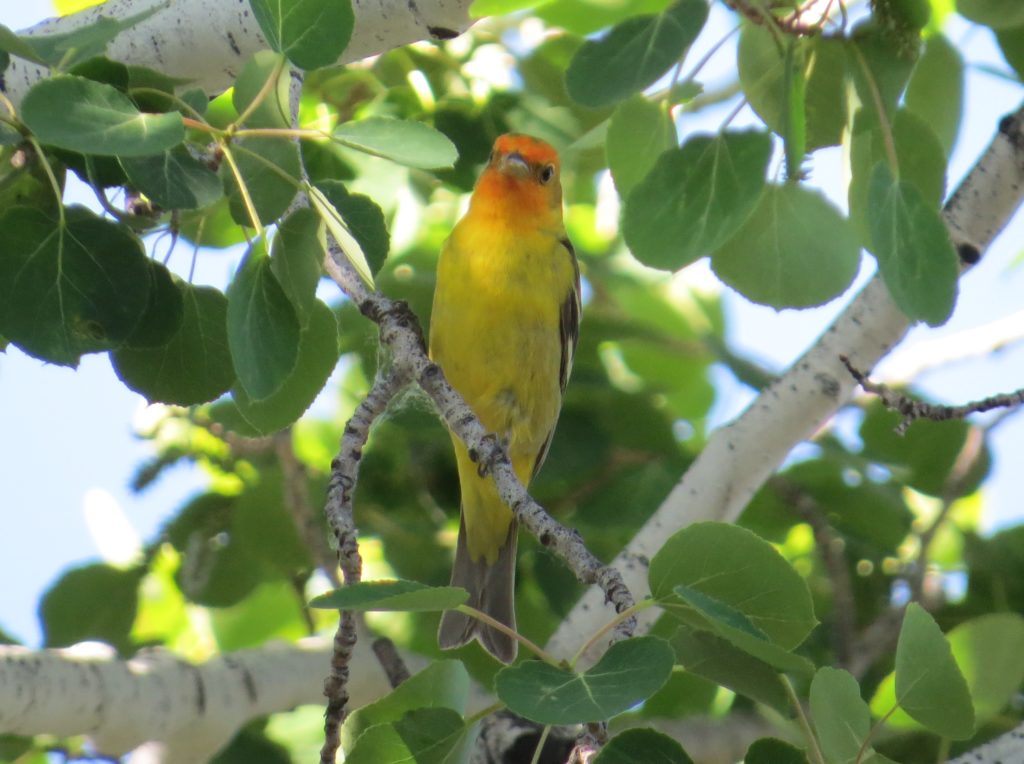
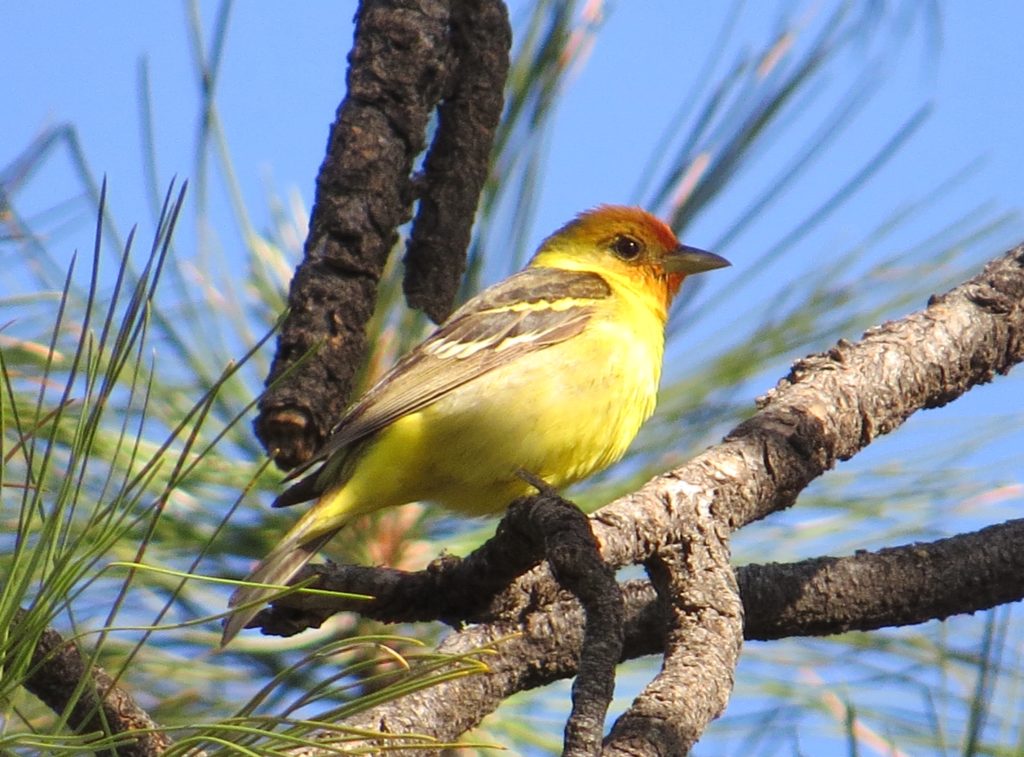
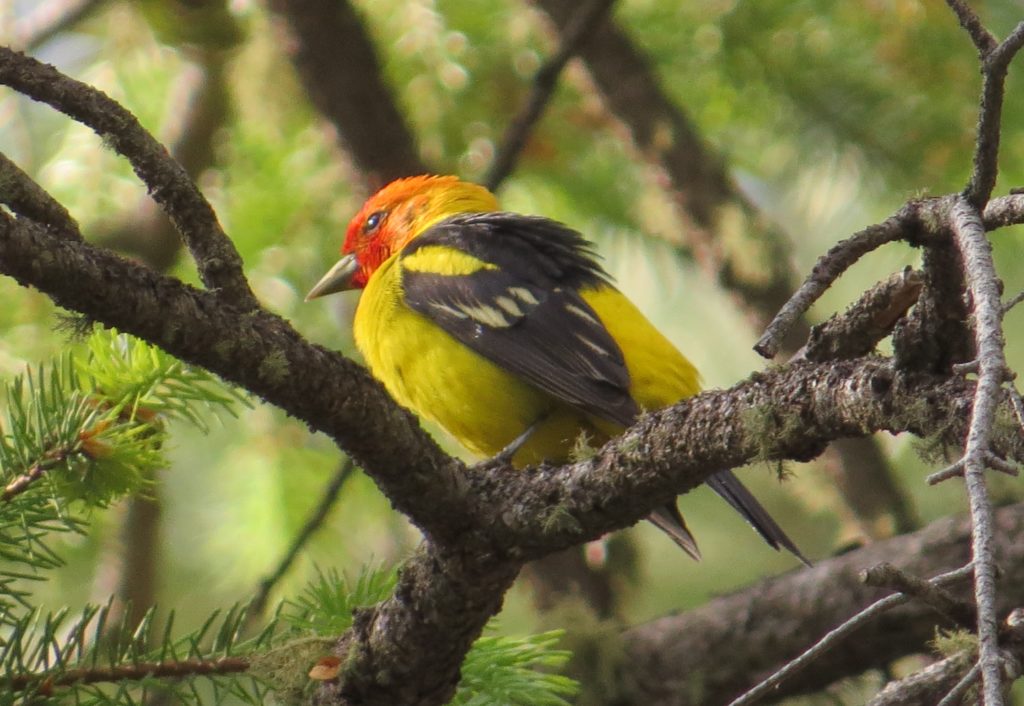 Literally a neighbor bird inhabiting the Ponderosa Pines right outside our balcony was the Pygmy Nuthatch. These guys are industrious little busy-bodies. As such, my only other time seeing them in the past resulted in a poor photo op. Not much changed on this trip despite being merely 5 feet away. Pygmy Nuthatch could see blog time again.
Literally a neighbor bird inhabiting the Ponderosa Pines right outside our balcony was the Pygmy Nuthatch. These guys are industrious little busy-bodies. As such, my only other time seeing them in the past resulted in a poor photo op. Not much changed on this trip despite being merely 5 feet away. Pygmy Nuthatch could see blog time again.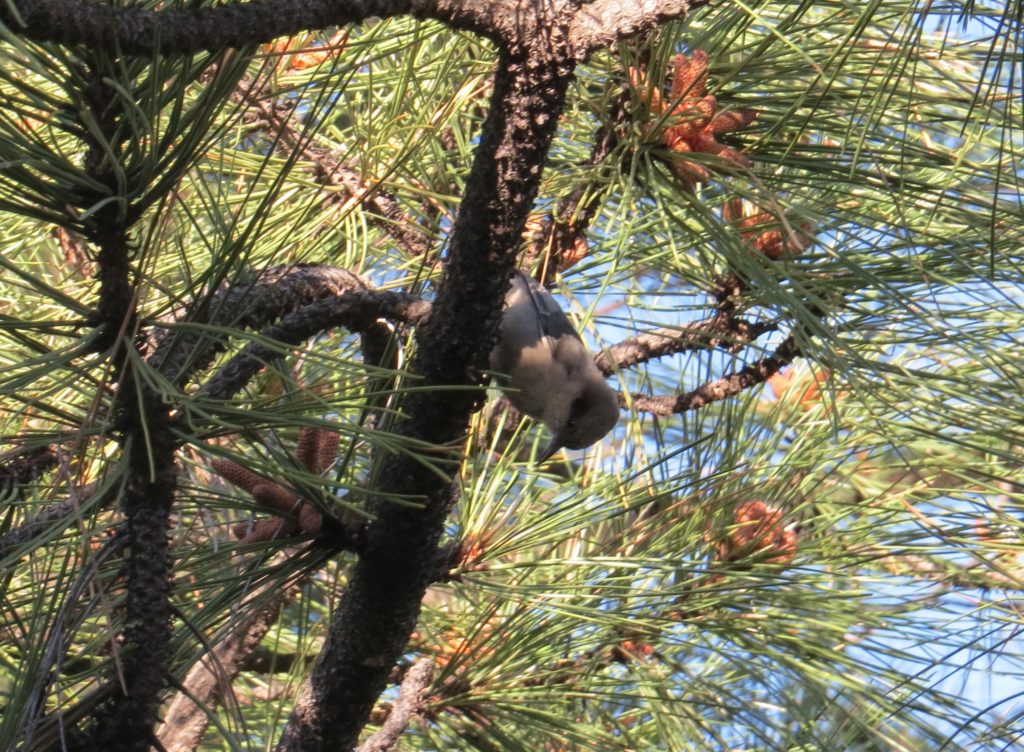
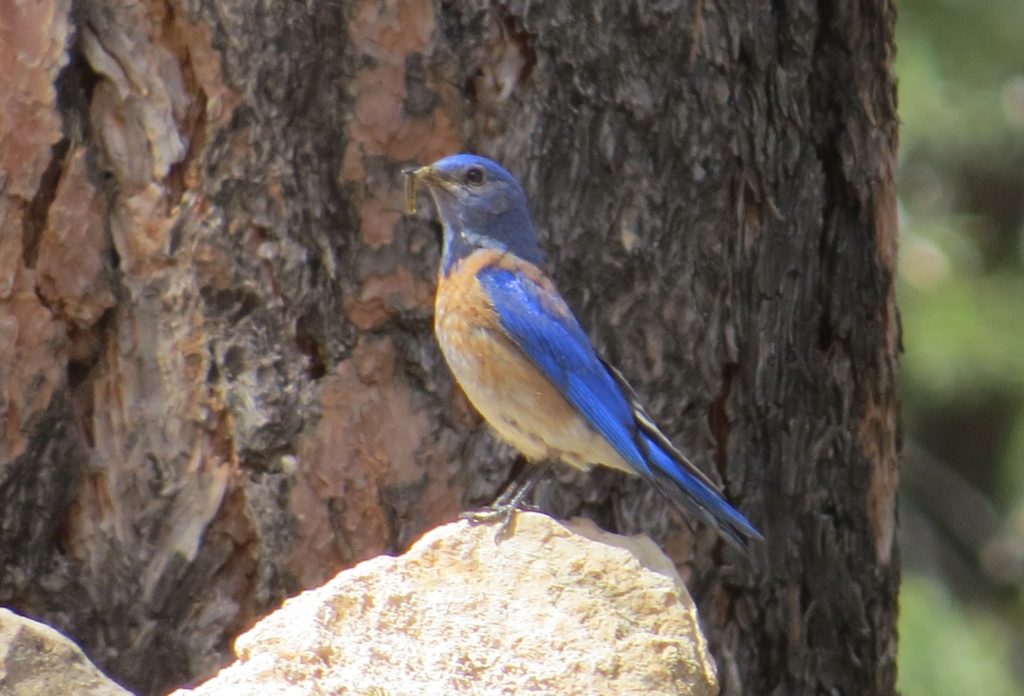
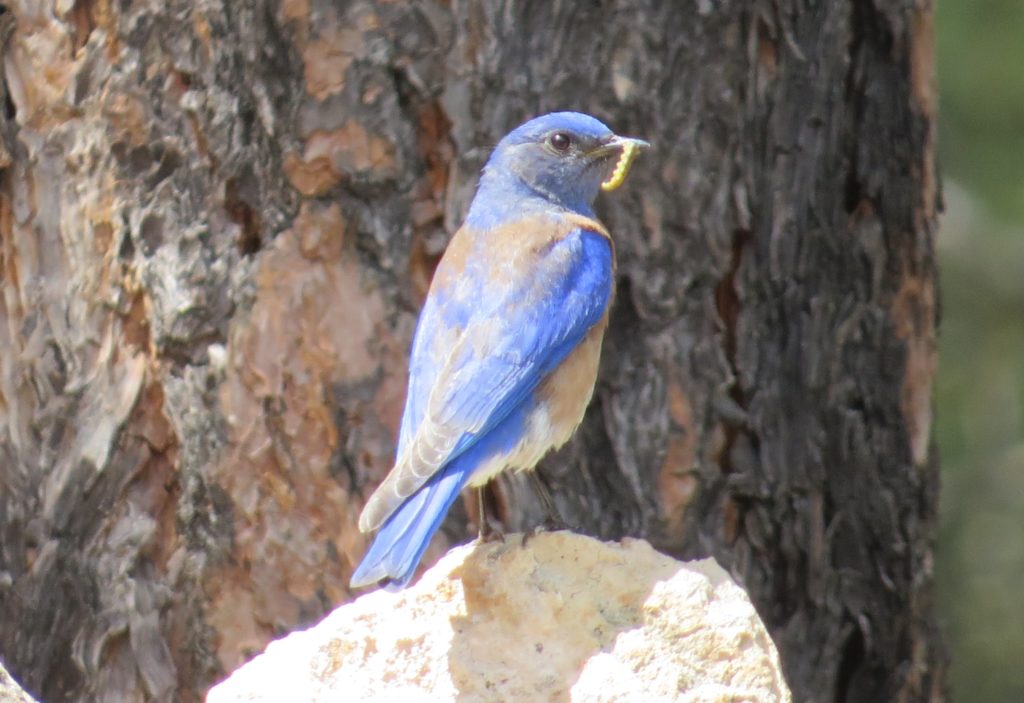 Away from the resort there were some other non-lifer favorites, like this American Three-toed Woodpecker along the Schultz Pass Road. Keep in mind that I had only ever seen one before just this past spring in Minnesota. This bird very much still has lifer freshness associated with it. While the unique drumming sound of this Woodpecker was the same as the one back home, its back was not. Note how white the back is on this Rocky Mountains subspecies of the ATTW; the back of the East Taiga subspecies that we have in Minnesota is nearly all black with small white flecks.
Away from the resort there were some other non-lifer favorites, like this American Three-toed Woodpecker along the Schultz Pass Road. Keep in mind that I had only ever seen one before just this past spring in Minnesota. This bird very much still has lifer freshness associated with it. While the unique drumming sound of this Woodpecker was the same as the one back home, its back was not. Note how white the back is on this Rocky Mountains subspecies of the ATTW; the back of the East Taiga subspecies that we have in Minnesota is nearly all black with small white flecks.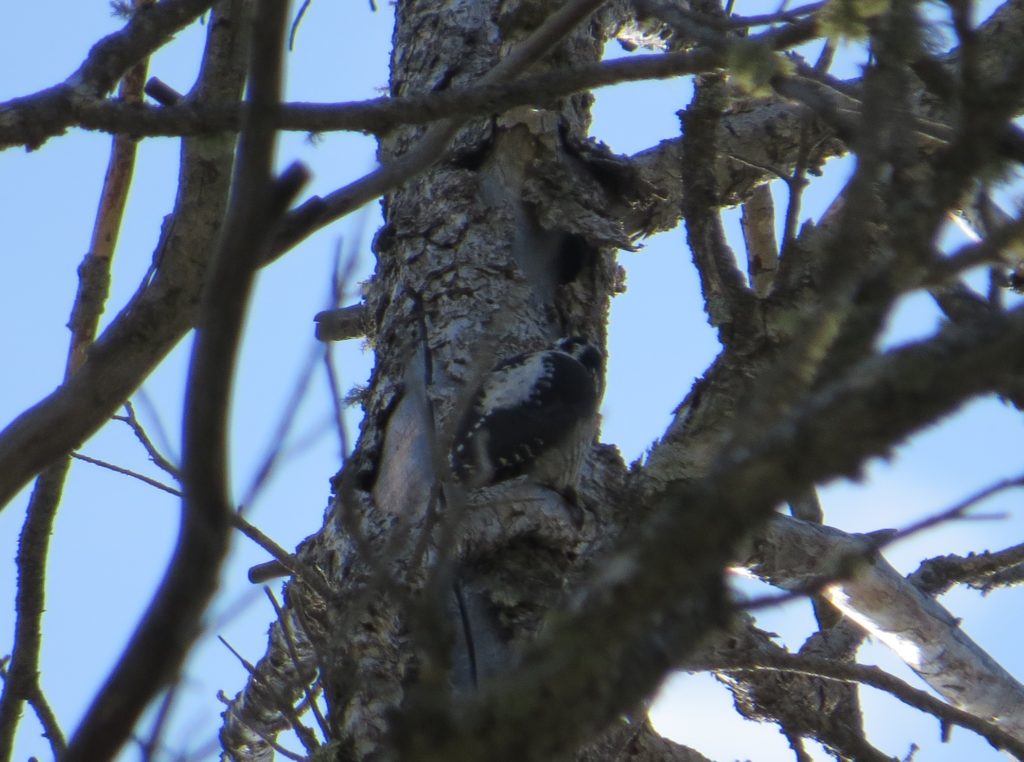 In Oak Creek Canyon at Grasshopper Point Recreation Area, a Bridled Titmouse was a pleasant surprise.
In Oak Creek Canyon at Grasshopper Point Recreation Area, a Bridled Titmouse was a pleasant surprise.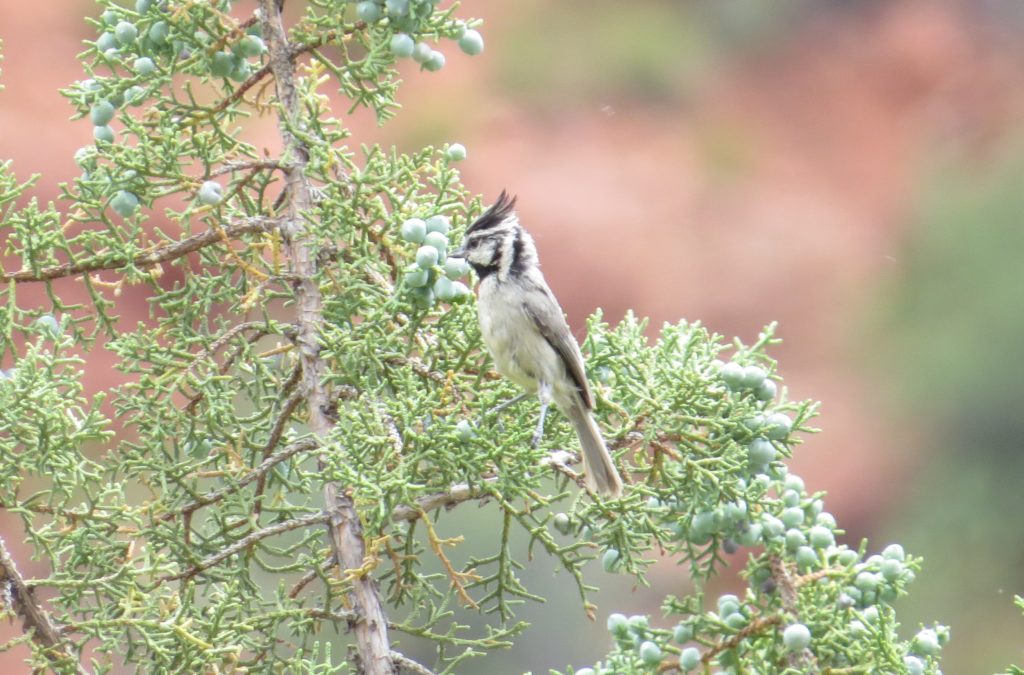 And the Grand Canyon is never more grand than when it serves as a backdrop from a rim-perching Black-throated Gray Warbler, a bird I have wished to have better photographs of for a long time.
And the Grand Canyon is never more grand than when it serves as a backdrop from a rim-perching Black-throated Gray Warbler, a bird I have wished to have better photographs of for a long time.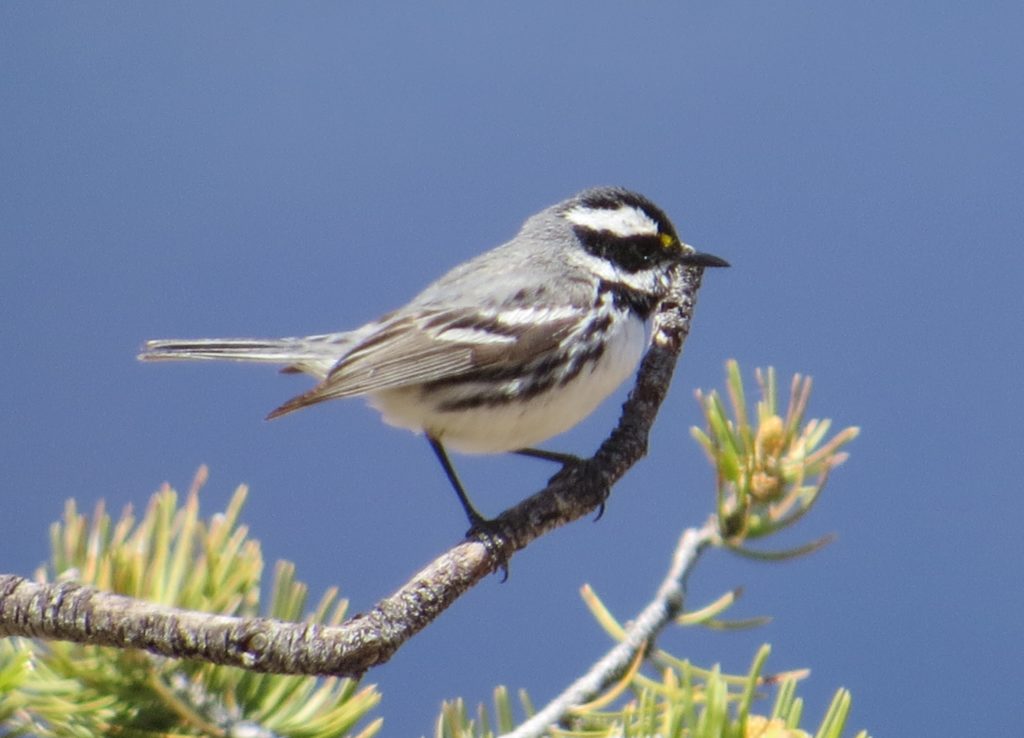
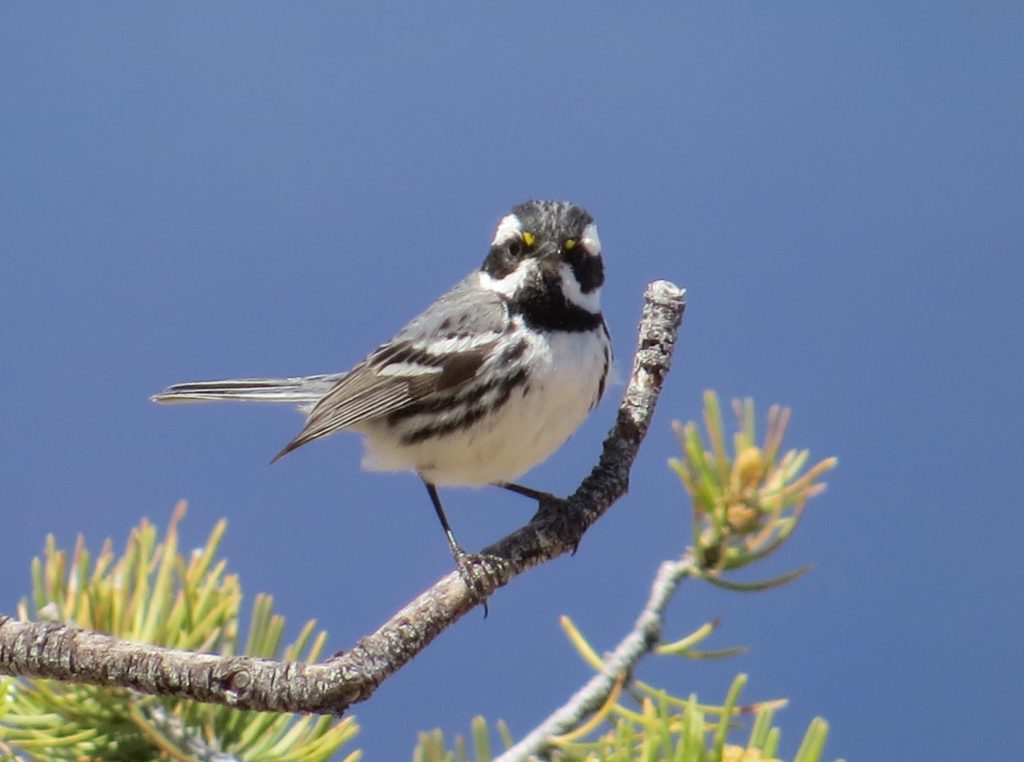 That’s it for Arizona this time. There will be more this winter. For the next post we’re headed to Wisconsin’s Apostle Islands for some Warble action.
That’s it for Arizona this time. There will be more this winter. For the next post we’re headed to Wisconsin’s Apostle Islands for some Warble action.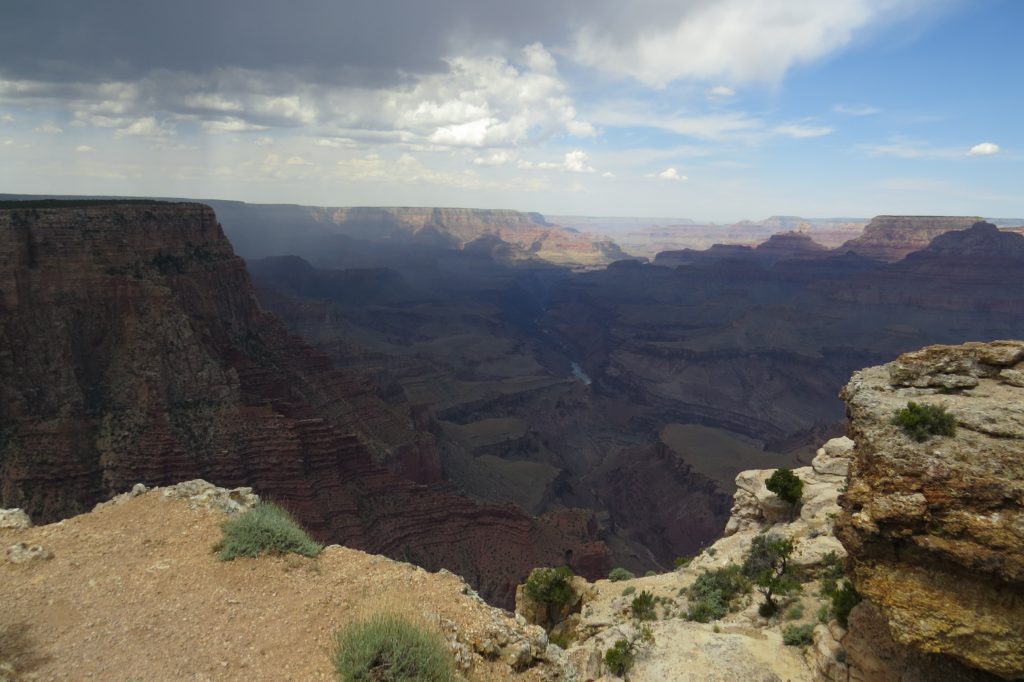 Technically speaking it was not a lifer for me as I had been here as a small child. Since I have no memory of it and I have a family of my own who hadn’t seen it, the time was right for a visit. Plus, the visit to Grand Canyon National Park was completely FREE thanks to the government’s Every Kid in a Park program where each 4th grade student in America can get his/her entire family and vehicle into any national park all summer long at no cost. The lack of entry fee was definitely the icing on the cake because this place is impressive regardless. The grandeur of the Grand Canyon and how it makes you feel when you are standing next to that vastness is nearly impossible to describe in words and capture in photographs. Hopefully these kids will at least remember the experience.
Technically speaking it was not a lifer for me as I had been here as a small child. Since I have no memory of it and I have a family of my own who hadn’t seen it, the time was right for a visit. Plus, the visit to Grand Canyon National Park was completely FREE thanks to the government’s Every Kid in a Park program where each 4th grade student in America can get his/her entire family and vehicle into any national park all summer long at no cost. The lack of entry fee was definitely the icing on the cake because this place is impressive regardless. The grandeur of the Grand Canyon and how it makes you feel when you are standing next to that vastness is nearly impossible to describe in words and capture in photographs. Hopefully these kids will at least remember the experience.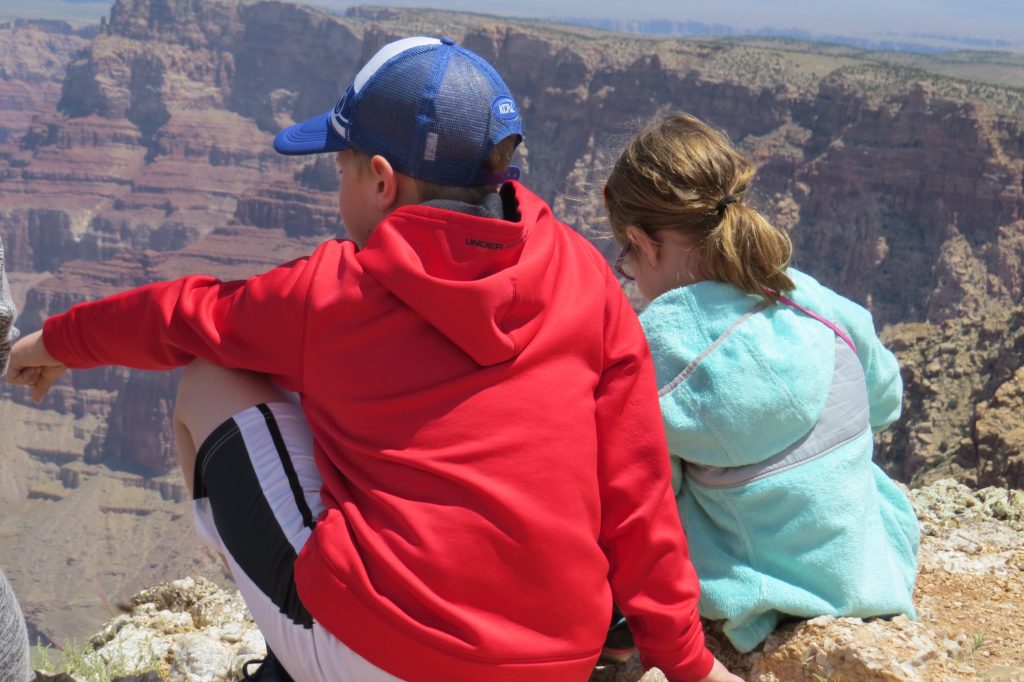
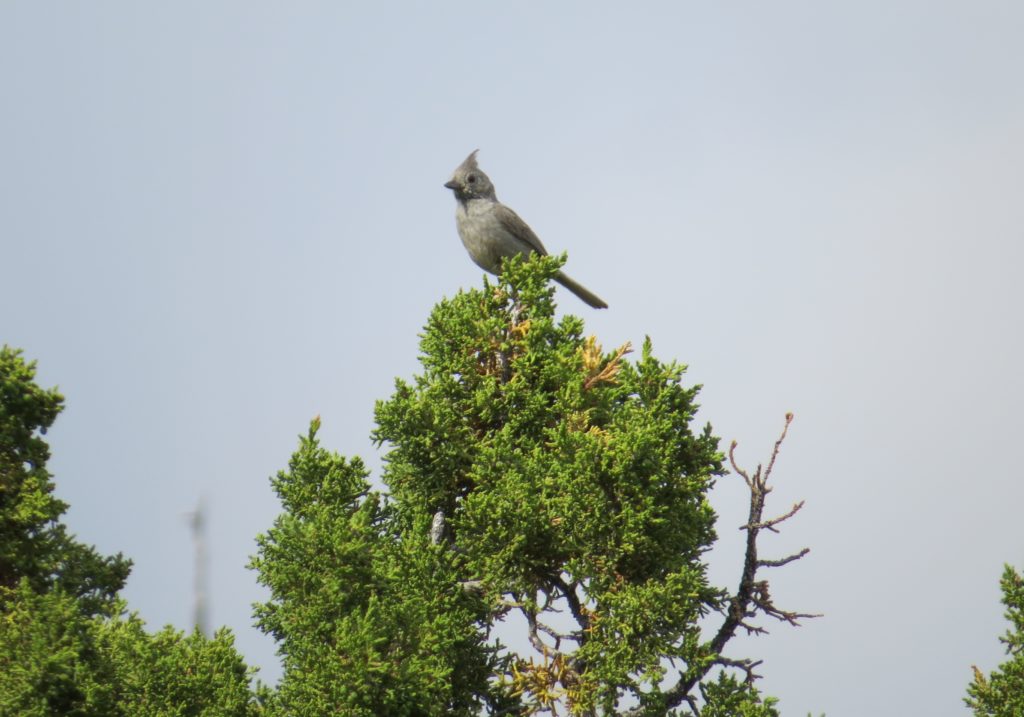
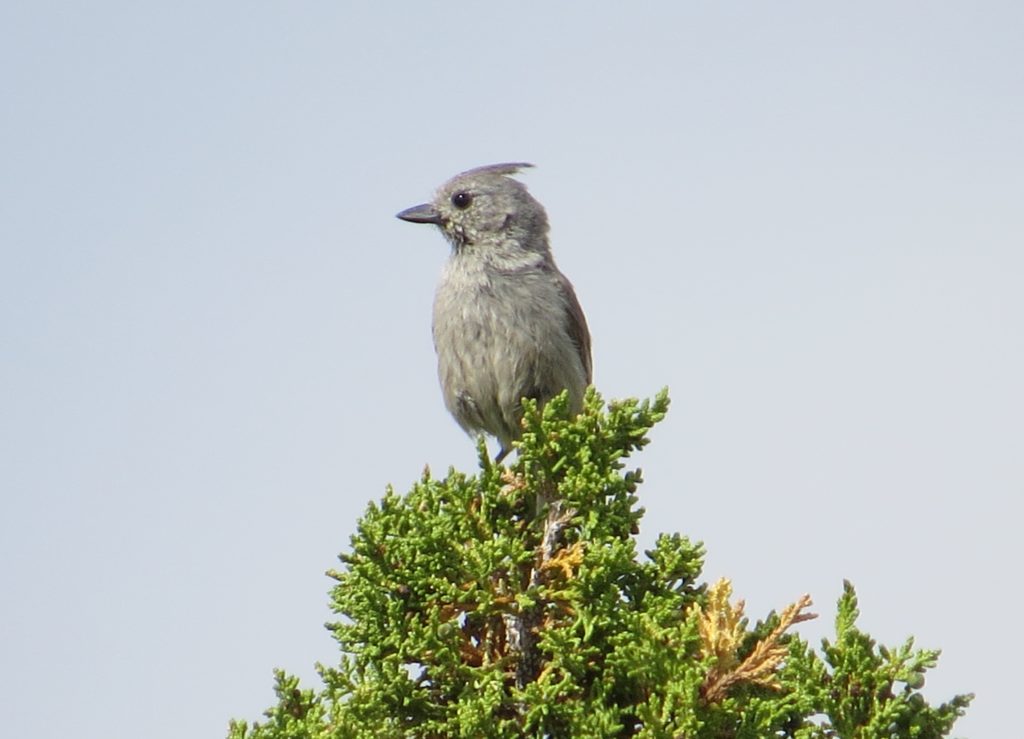 Tommy found me this bird while we were stopped for a different lifer. As I had been driving I knew to be vigilant for Pinyon Jays. There were a couple times while cruising at highway speeds that I thought I saw blue-colored birds cross the highway, but with no shoulder on which to pull off, I couldn’t stop to check. All doubt was erased at one point, though, when several blue-colored birds were flying across the highway in groups. I found a spot to pull over and observe my lifer Pinyon Jay. Photographing them proved impossible as the birds were between me and the sun. They also hid remarkably well in the junipers, only giving away there presence as they flushed away. This happened over and over as we probably saw over 50 in all, flushing in small groups. It was frustrating but still fun to see the behavior of this bird and hear its fun, laughing call.
Tommy found me this bird while we were stopped for a different lifer. As I had been driving I knew to be vigilant for Pinyon Jays. There were a couple times while cruising at highway speeds that I thought I saw blue-colored birds cross the highway, but with no shoulder on which to pull off, I couldn’t stop to check. All doubt was erased at one point, though, when several blue-colored birds were flying across the highway in groups. I found a spot to pull over and observe my lifer Pinyon Jay. Photographing them proved impossible as the birds were between me and the sun. They also hid remarkably well in the junipers, only giving away there presence as they flushed away. This happened over and over as we probably saw over 50 in all, flushing in small groups. It was frustrating but still fun to see the behavior of this bird and hear its fun, laughing call.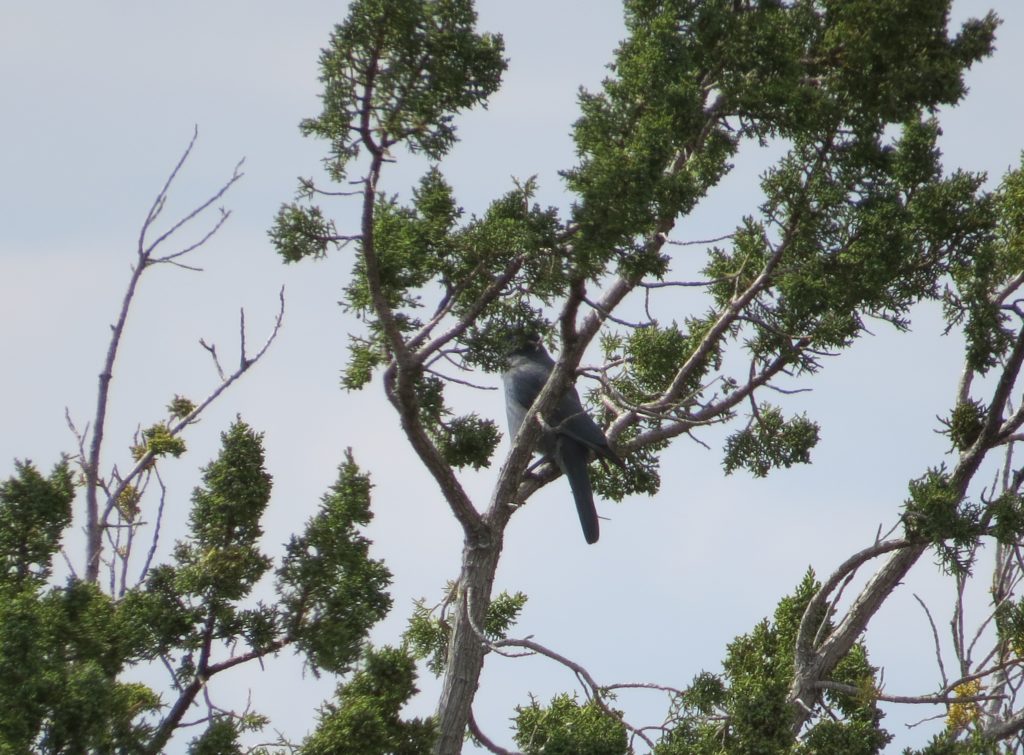
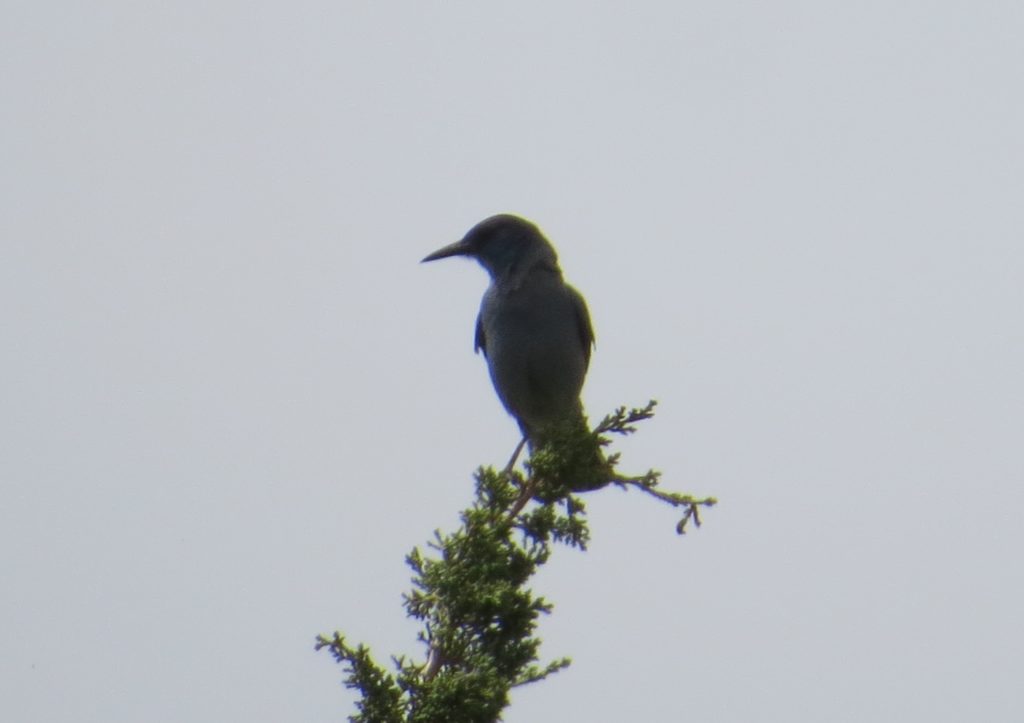 The morning after the Grand Canyon adventure, Tommy and I birded the Flagstaff area hitting up Elden Springs Road and the Schultz Pass Road. The birding was incredible, but since this is just a lifer post, we’ll stick to those. The first lifer was the Grace’s Warbler, a striking bird that loves the Pines.
The morning after the Grand Canyon adventure, Tommy and I birded the Flagstaff area hitting up Elden Springs Road and the Schultz Pass Road. The birding was incredible, but since this is just a lifer post, we’ll stick to those. The first lifer was the Grace’s Warbler, a striking bird that loves the Pines.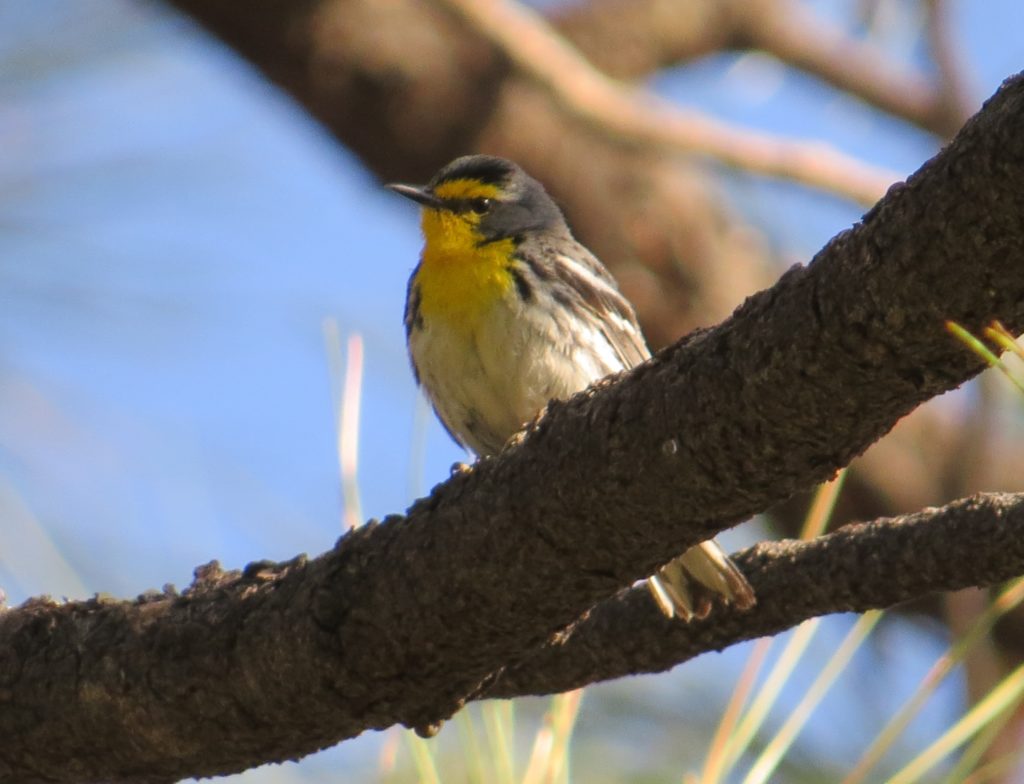
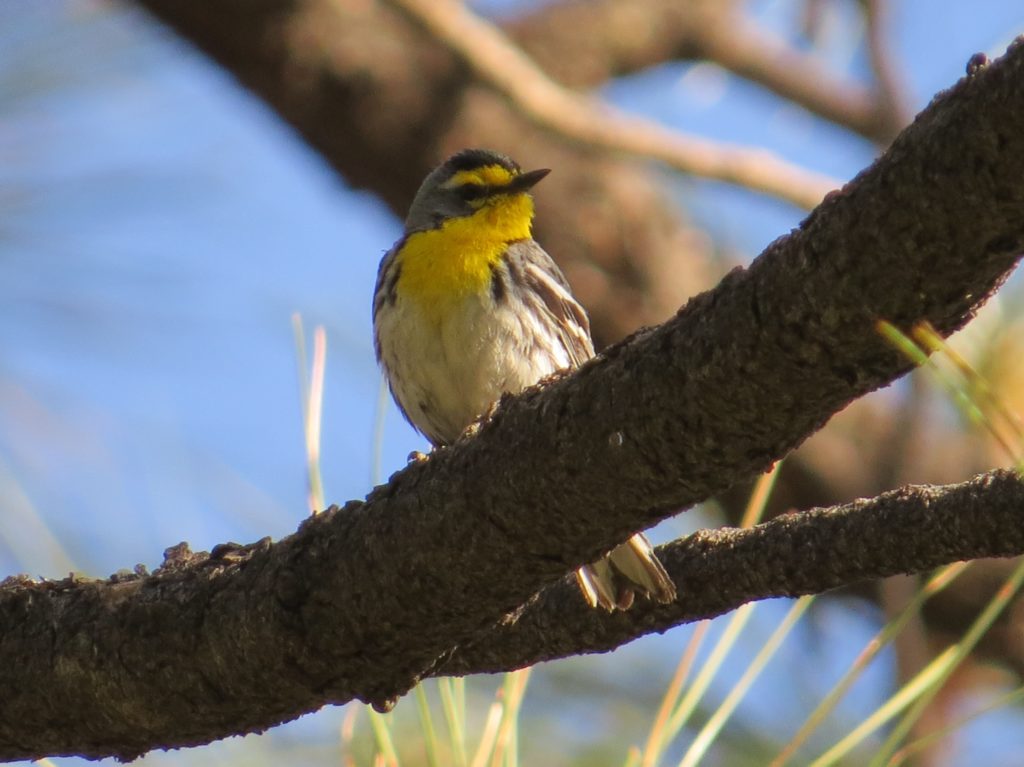 While lifering on this bird, I simultaneously lifered on Plumbeous Vireo. This is another bird that loves life in the Pines. Both my new lifers could be heard and seen at the same time, sometimes even in the same tree!
While lifering on this bird, I simultaneously lifered on Plumbeous Vireo. This is another bird that loves life in the Pines. Both my new lifers could be heard and seen at the same time, sometimes even in the same tree!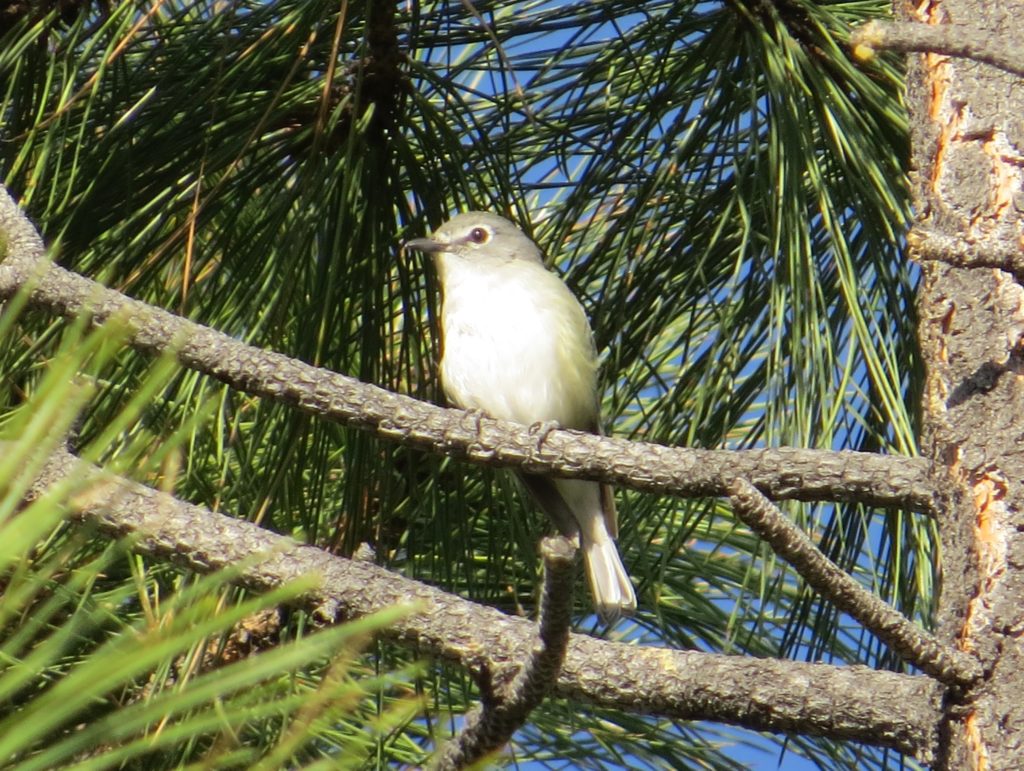
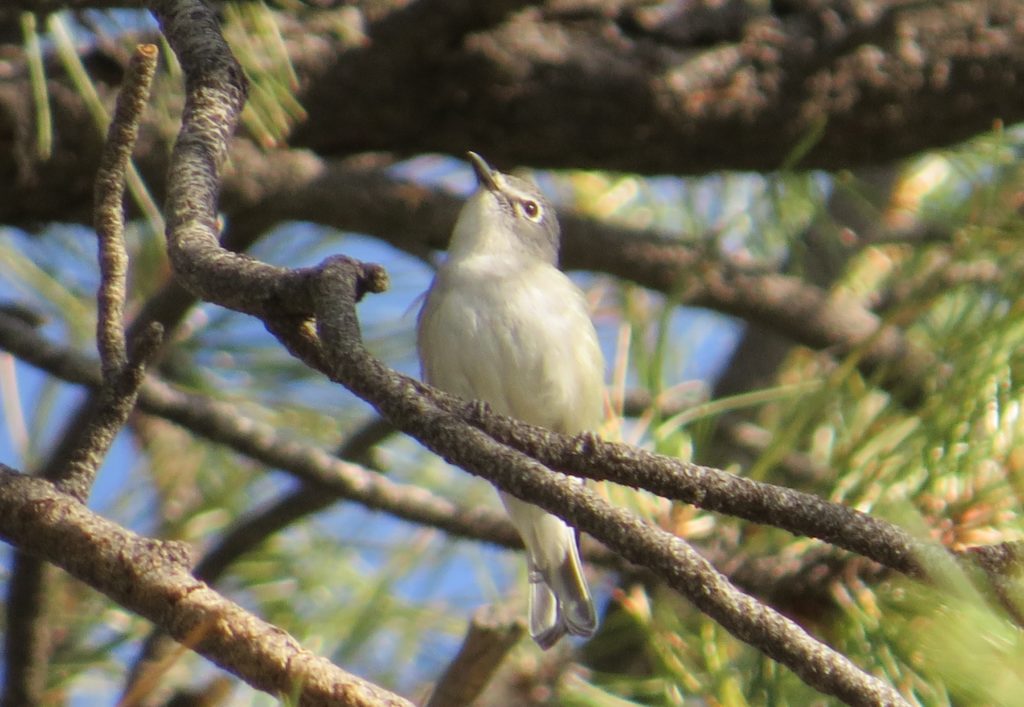 Elden Springs Road merges on to Schultz Pass Road, which was a reported location of numerous individuals of the bird I wanted to see most, the Red-faced Warbler. Tommy had me stop at a spot that looked like good habitat for this warbler–dense stands of Douglas Fir on a slope next to a somewhat open area of Aspens. Sure enough, Tommy picked out a singing Red-faced Warbler almost immediately. As we were trying to get visuals on it, Tommy spotted another lifer for me and one I had been hoping for–a male Williamson’s Sapsucker! Even though the Red-faced Warbler was my most wanted bird after the Flam, we know that would be a relatively easy bird along Schultz Pass Road. Therefore, we ditched the Red-face we had been hearing in an effort to track down the dapper and somewhat elusive Sapsucker. It sure was a tease at first and not offering up much to view.
Elden Springs Road merges on to Schultz Pass Road, which was a reported location of numerous individuals of the bird I wanted to see most, the Red-faced Warbler. Tommy had me stop at a spot that looked like good habitat for this warbler–dense stands of Douglas Fir on a slope next to a somewhat open area of Aspens. Sure enough, Tommy picked out a singing Red-faced Warbler almost immediately. As we were trying to get visuals on it, Tommy spotted another lifer for me and one I had been hoping for–a male Williamson’s Sapsucker! Even though the Red-faced Warbler was my most wanted bird after the Flam, we know that would be a relatively easy bird along Schultz Pass Road. Therefore, we ditched the Red-face we had been hearing in an effort to track down the dapper and somewhat elusive Sapsucker. It sure was a tease at first and not offering up much to view.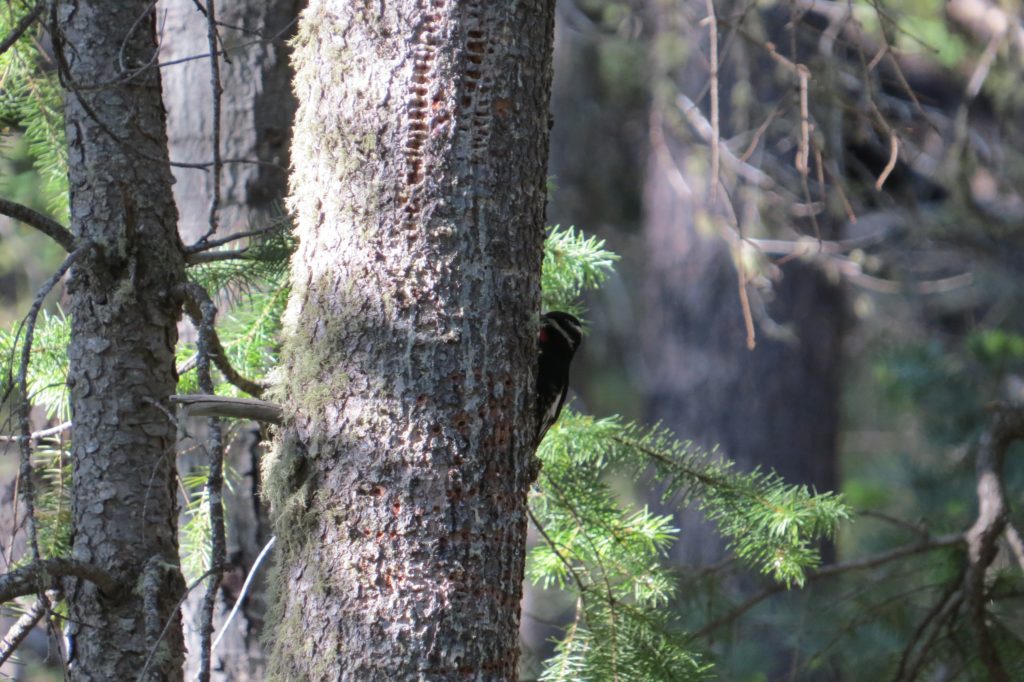 Eventually we got the full monty as it was too busy drilling sap wells to care about a couple of gawkers.
Eventually we got the full monty as it was too busy drilling sap wells to care about a couple of gawkers.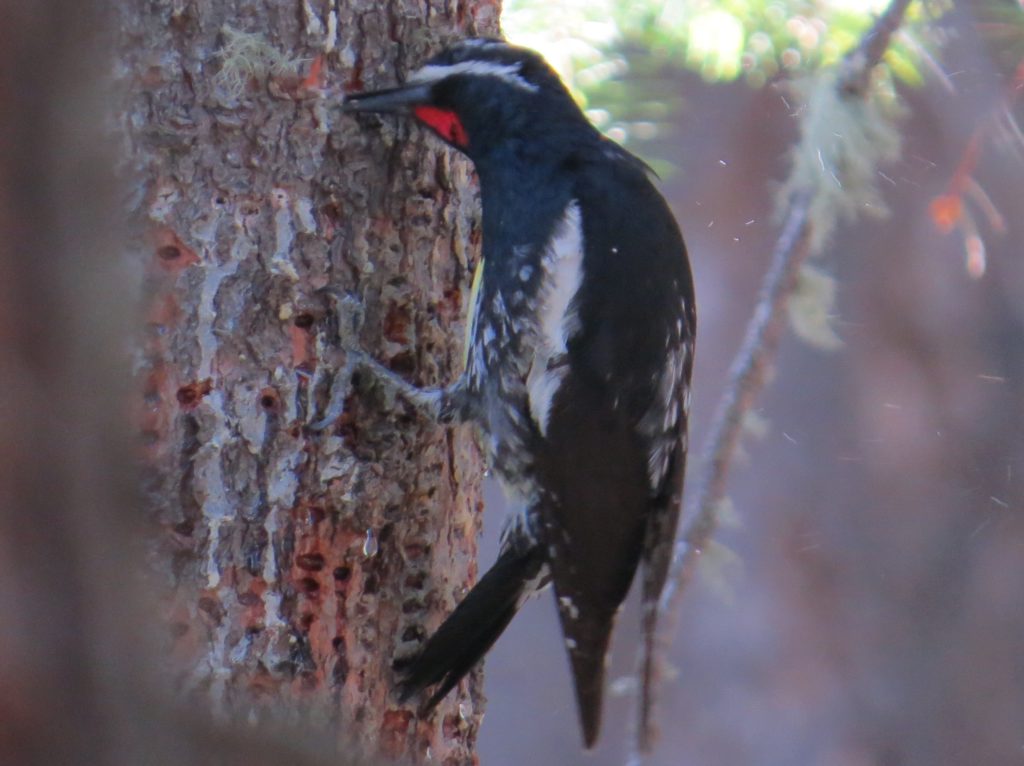
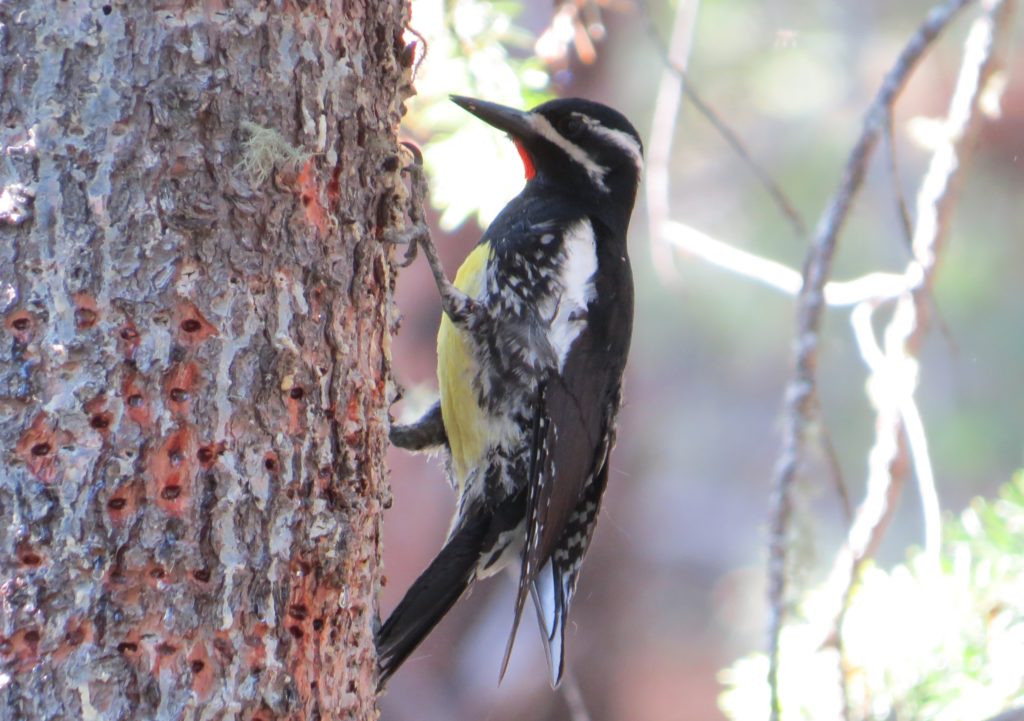 Once the Williamson’s was fully enjoyed, we turned our attention to the Red-faced Warbler. I was highly impatient to finally see this bird that we were hearing. And then it finally happened, and it was glorious.
Once the Williamson’s was fully enjoyed, we turned our attention to the Red-faced Warbler. I was highly impatient to finally see this bird that we were hearing. And then it finally happened, and it was glorious.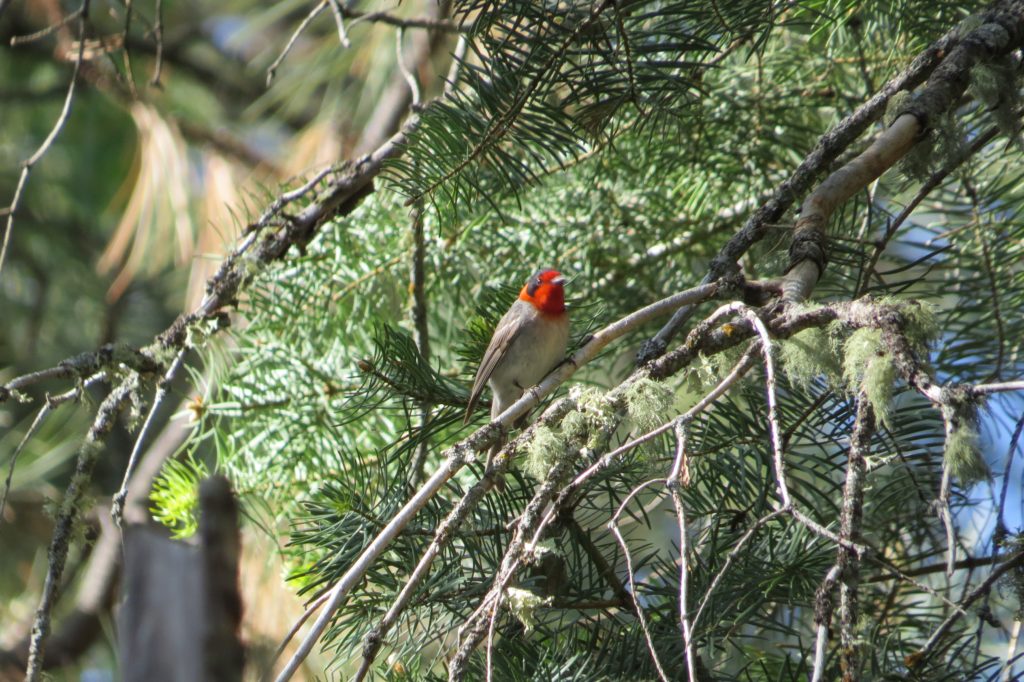 Adding to the pleasure of finally seeing this bird is that Red-faced Warblers are curious and therefore crushable.
Adding to the pleasure of finally seeing this bird is that Red-faced Warblers are curious and therefore crushable.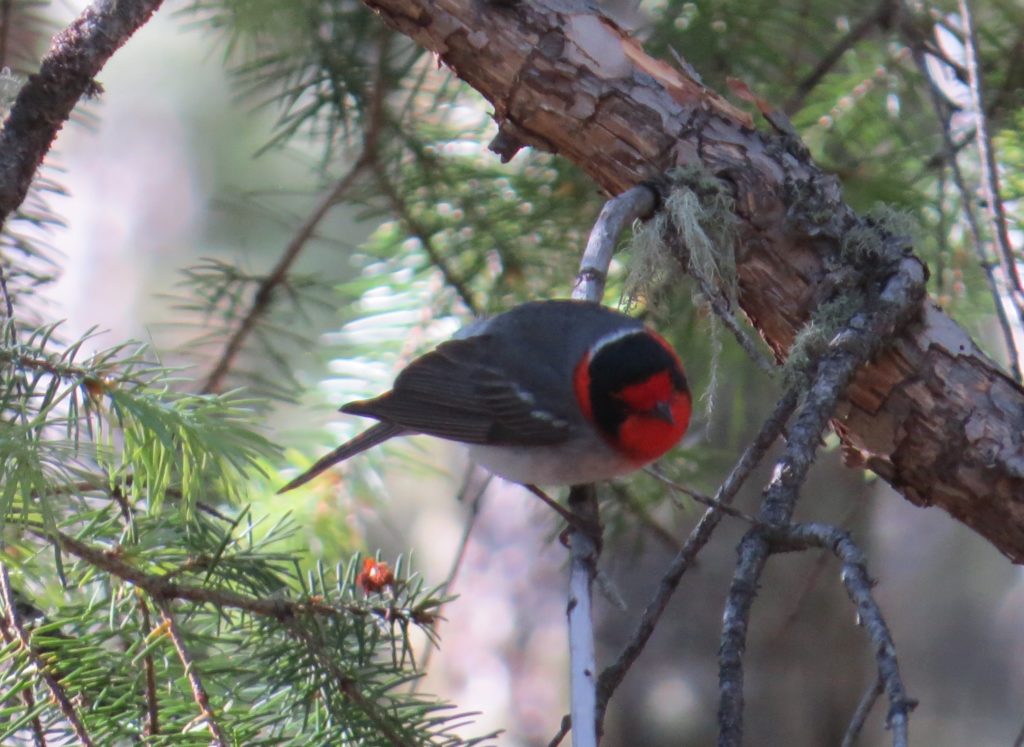
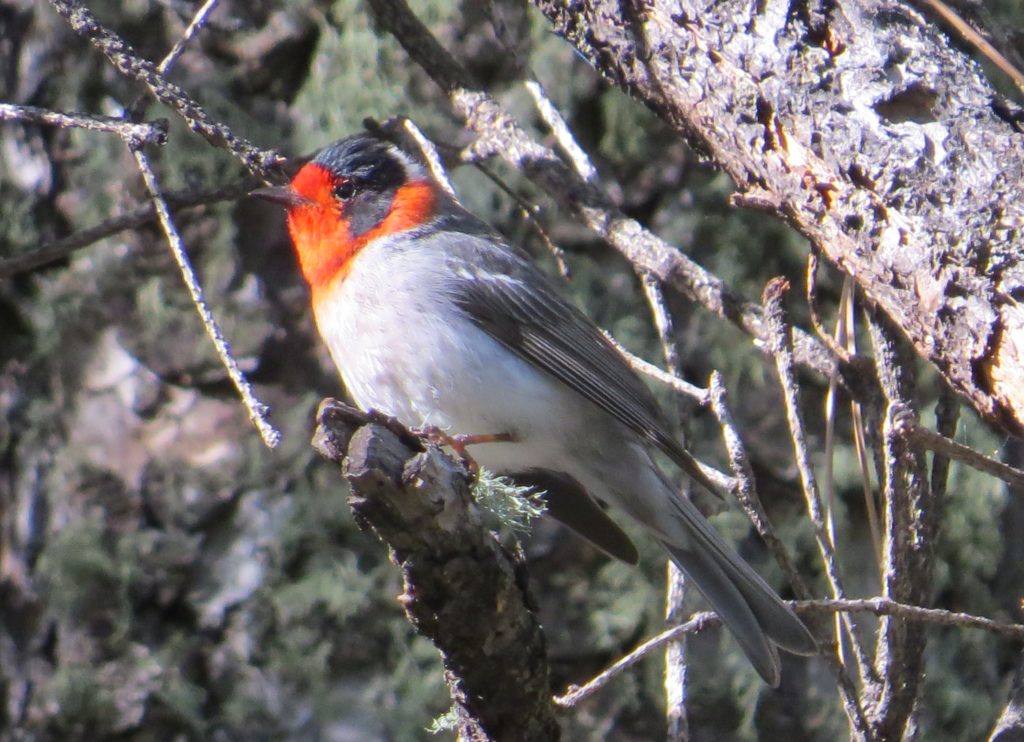
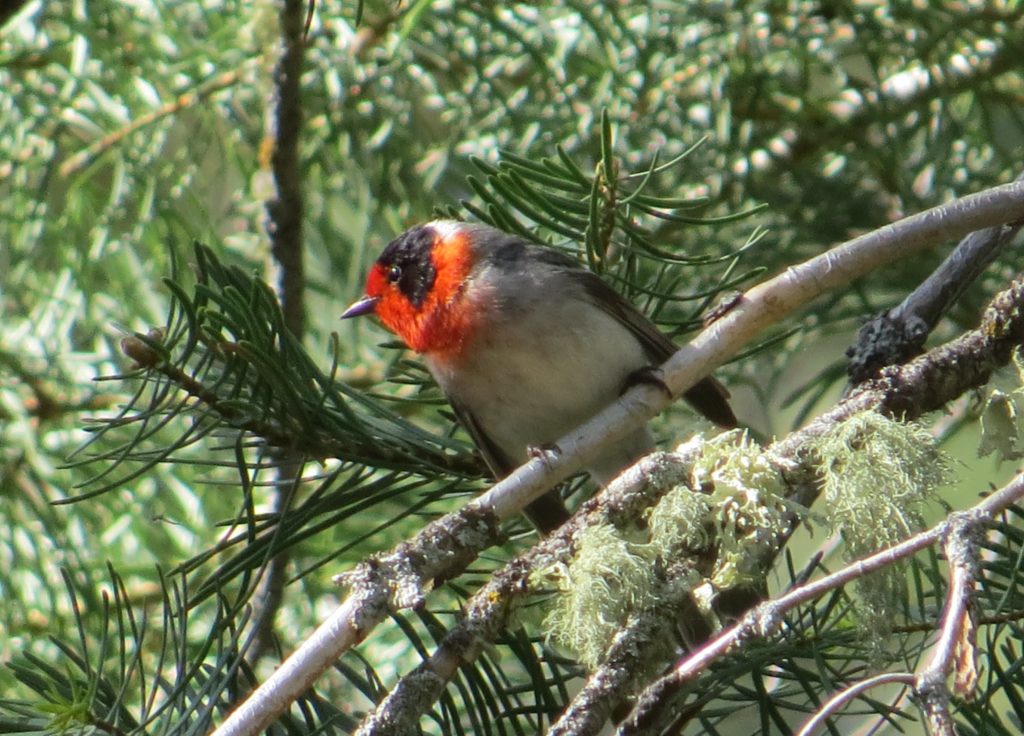 By the time we were done birding Schultz Pass Road, we had seen several of these Warblers. Each was just as exciting as the last. Even Tommy has to stop and look at each one, they are that captivating.
By the time we were done birding Schultz Pass Road, we had seen several of these Warblers. Each was just as exciting as the last. Even Tommy has to stop and look at each one, they are that captivating.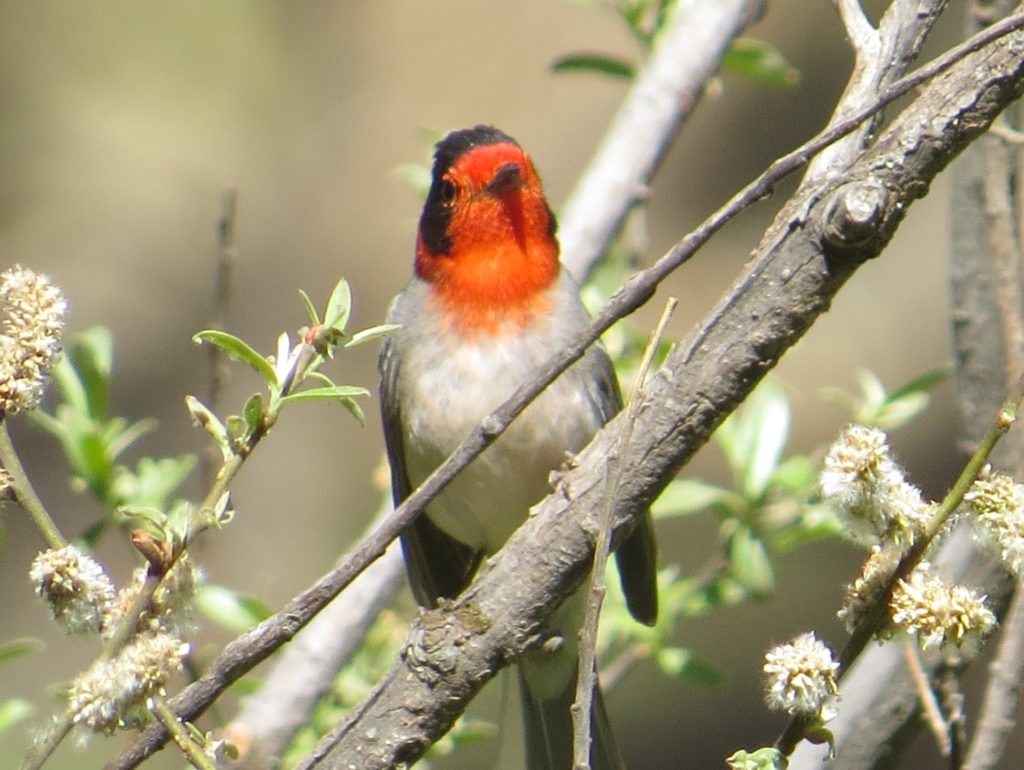 There were no more lifers on this morning of birding around Flagstaff. Tommy and I had found all my targets with relative ease, and there was really nothing left to go after. I’m kicking myself for not doing more research because MacGilivray’s Warblers breed in the area by Hart Prairie which is just northwest of Flagstaff. Oh well, something to add to my northern Arizona to-do list next time we come back to view the Grand Canyon (and the California Condors!)
There were no more lifers on this morning of birding around Flagstaff. Tommy and I had found all my targets with relative ease, and there was really nothing left to go after. I’m kicking myself for not doing more research because MacGilivray’s Warblers breed in the area by Hart Prairie which is just northwest of Flagstaff. Oh well, something to add to my northern Arizona to-do list next time we come back to view the Grand Canyon (and the California Condors!)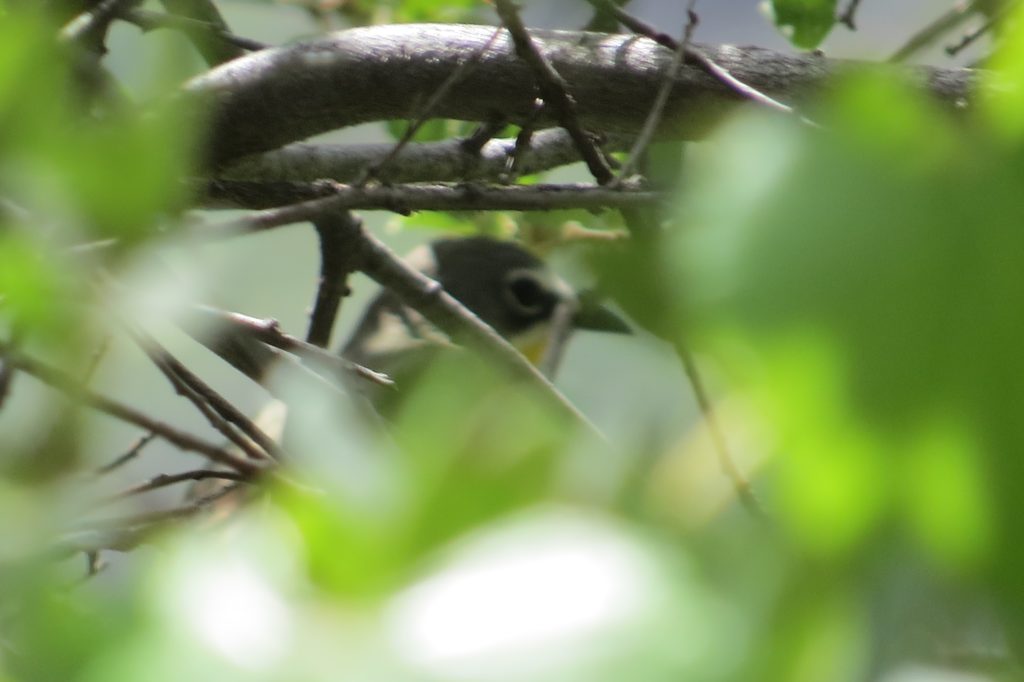 I’m not naive. I understand this is a typical experience with this bird species. It was still frustrating. At one point I could hear a Chat singing in the thicket right in front of me. I figured it had to be perched on top somewhere. So I climbed a rock, held the camera above my head, snapped a picture, and hoped for the best. Well, I got him. Can you see it?
I’m not naive. I understand this is a typical experience with this bird species. It was still frustrating. At one point I could hear a Chat singing in the thicket right in front of me. I figured it had to be perched on top somewhere. So I climbed a rock, held the camera above my head, snapped a picture, and hoped for the best. Well, I got him. Can you see it?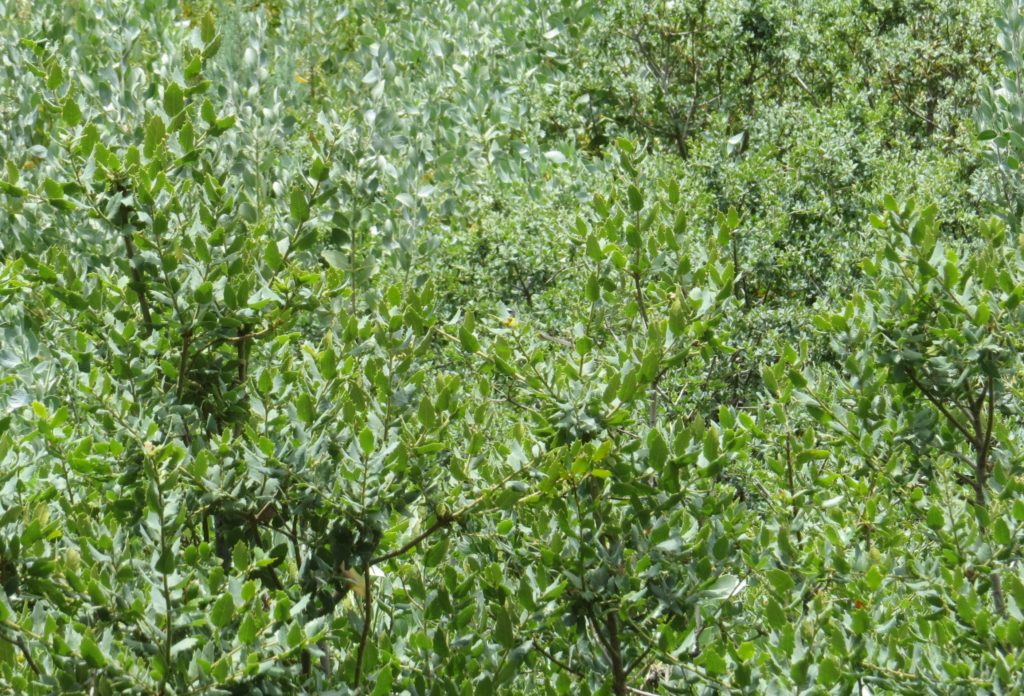 Here it is at a different perch. Same effect.
Here it is at a different perch. Same effect.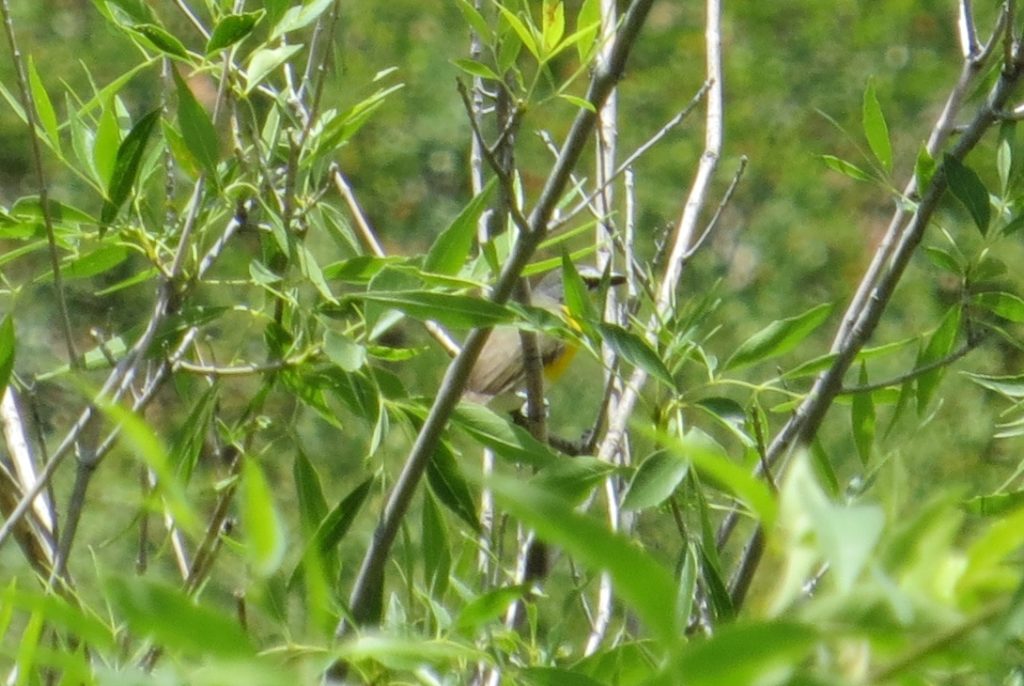 Yellow-breasted Chat is just one more bird to add to the list of ‘Better Looks Desired’ birds. At one point I saw a Chat fly into a tree in the distance, and I saw a fleck of yellow among the green leaves, so I just snapped photos of that yellow spot like crazy. Turns out I got a lot of photos of a yellow leaf instead. What an aggravating bird.
Yellow-breasted Chat is just one more bird to add to the list of ‘Better Looks Desired’ birds. At one point I saw a Chat fly into a tree in the distance, and I saw a fleck of yellow among the green leaves, so I just snapped photos of that yellow spot like crazy. Turns out I got a lot of photos of a yellow leaf instead. What an aggravating bird.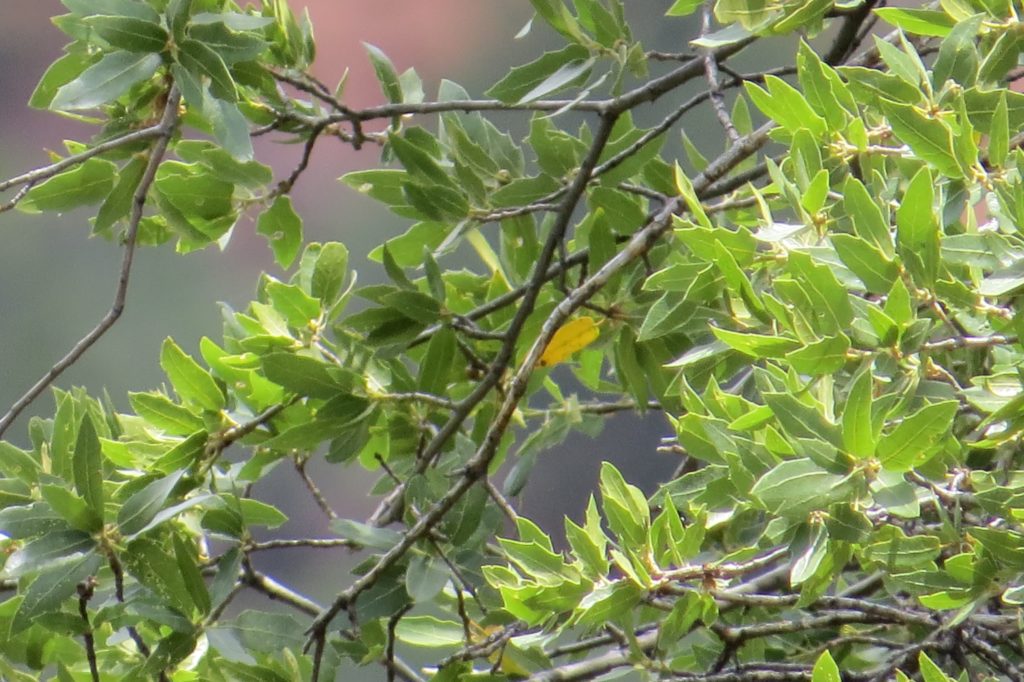 As we continued our drive to Sedona enjoying the views of the canyon walls from the bottom of Oak Creek Canyon, we decided to pull into the National Forest Service’s Grashopper Point recreation site. This was another fee area that we got into for free–thanks Evan. The draw of this site is that people like to cool off in Oak Creek here. More specifically, people cliff jump off a high rock face into a 15-foot wide creek below! Apparently this narrow creek is quite deep, allowing the people we saw jumping to come out unscathed. We did not attempt it. I was not completely sold on its safety.
As we continued our drive to Sedona enjoying the views of the canyon walls from the bottom of Oak Creek Canyon, we decided to pull into the National Forest Service’s Grashopper Point recreation site. This was another fee area that we got into for free–thanks Evan. The draw of this site is that people like to cool off in Oak Creek here. More specifically, people cliff jump off a high rock face into a 15-foot wide creek below! Apparently this narrow creek is quite deep, allowing the people we saw jumping to come out unscathed. We did not attempt it. I was not completely sold on its safety.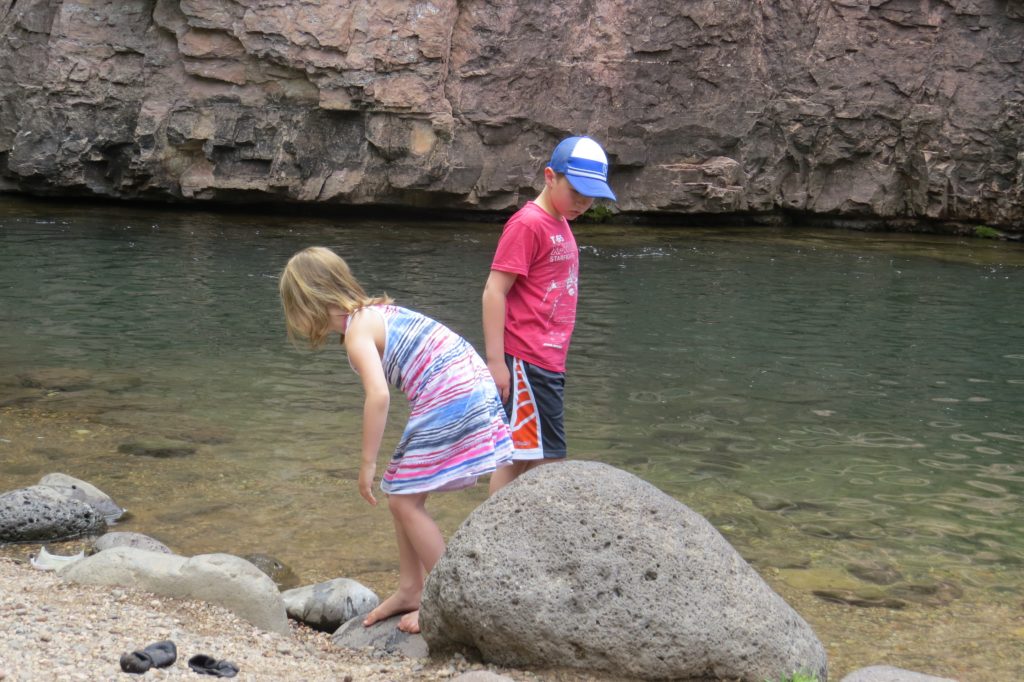 The deep part of the water is quite narrow as you can see the wading area takes up almost half the creek width. This spot where Evan and Marin are wading is where teenagers were jumping into the water from 15-20 feet up the rock face! As I kept an eye on my kids, I also kept an eye out for a Common Black-Hawk in the riparian corridor. Unfortunately one never materialized. I was also keeping an eye and an ear out for a family of Brown-crested Flycatchers that had been reported here. I had actually given up on them too, but seconds before we got in the car to leave I spied a silent flycatcher on top of a snag a long ways away. I snapped some photos and was pleasantly surprised to see I had captured my lifer Brown-crested Flycatcher!
The deep part of the water is quite narrow as you can see the wading area takes up almost half the creek width. This spot where Evan and Marin are wading is where teenagers were jumping into the water from 15-20 feet up the rock face! As I kept an eye on my kids, I also kept an eye out for a Common Black-Hawk in the riparian corridor. Unfortunately one never materialized. I was also keeping an eye and an ear out for a family of Brown-crested Flycatchers that had been reported here. I had actually given up on them too, but seconds before we got in the car to leave I spied a silent flycatcher on top of a snag a long ways away. I snapped some photos and was pleasantly surprised to see I had captured my lifer Brown-crested Flycatcher!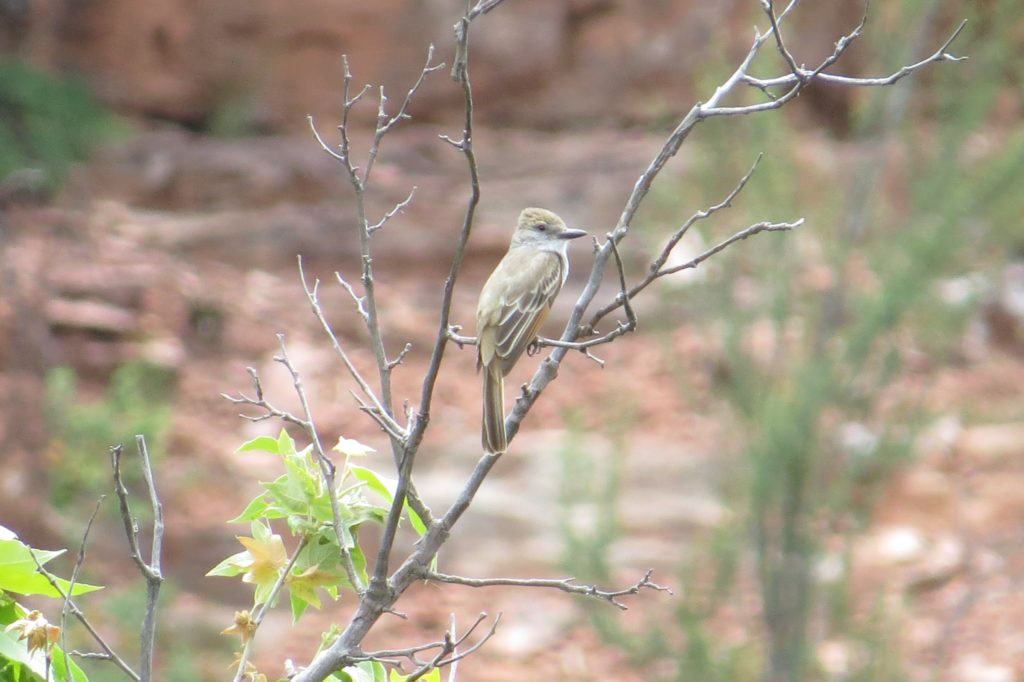 The Brown-crested Flycatcher is distinguished from the similar-looking Ash-throated Flycatcher which inhabits the same area by its larger bill, completely rufous tail underneath, and a brighter yellow belly. Thankfully, this Flycatcher turned around to make sure I could see all the appropriate field marks.
The Brown-crested Flycatcher is distinguished from the similar-looking Ash-throated Flycatcher which inhabits the same area by its larger bill, completely rufous tail underneath, and a brighter yellow belly. Thankfully, this Flycatcher turned around to make sure I could see all the appropriate field marks.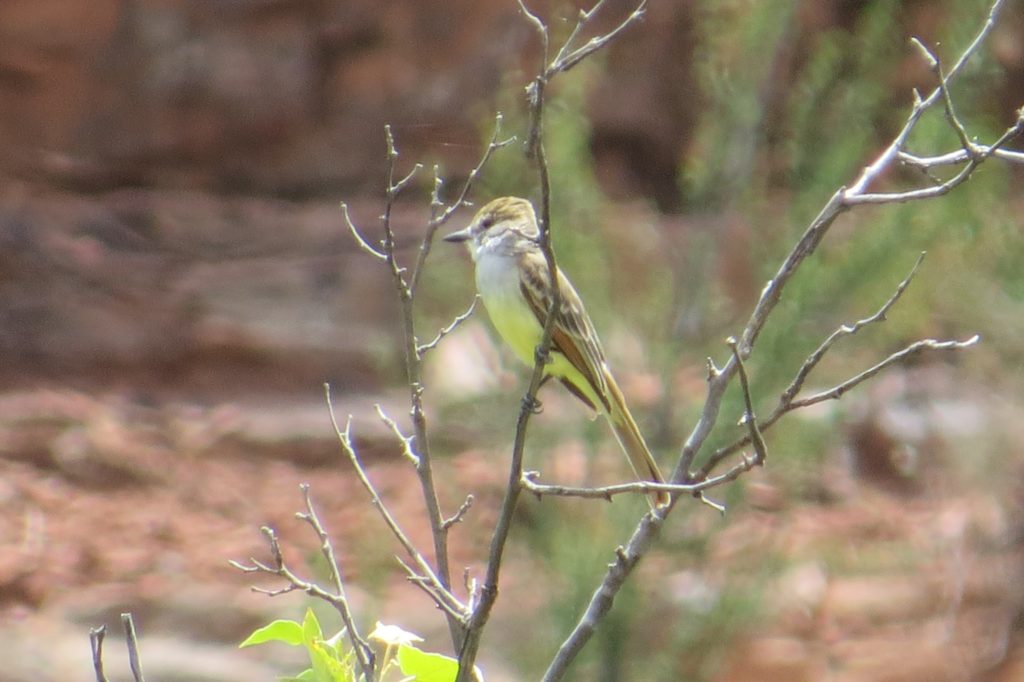 The lifering on this fifth trip to AZ was definitely a quality over quantity sort of thing. And unless I make a summer trip to SE AZ, the lifering will be significantly limited on subsequent trips to visit my parents in central AZ in the winter months. Regardless of lifers being available, good birds can ALWAYS be had in Arizona. In the next post, I’ll highlight my favorite non-lifers from this most recent trip.
The lifering on this fifth trip to AZ was definitely a quality over quantity sort of thing. And unless I make a summer trip to SE AZ, the lifering will be significantly limited on subsequent trips to visit my parents in central AZ in the winter months. Regardless of lifers being available, good birds can ALWAYS be had in Arizona. In the next post, I’ll highlight my favorite non-lifers from this most recent trip.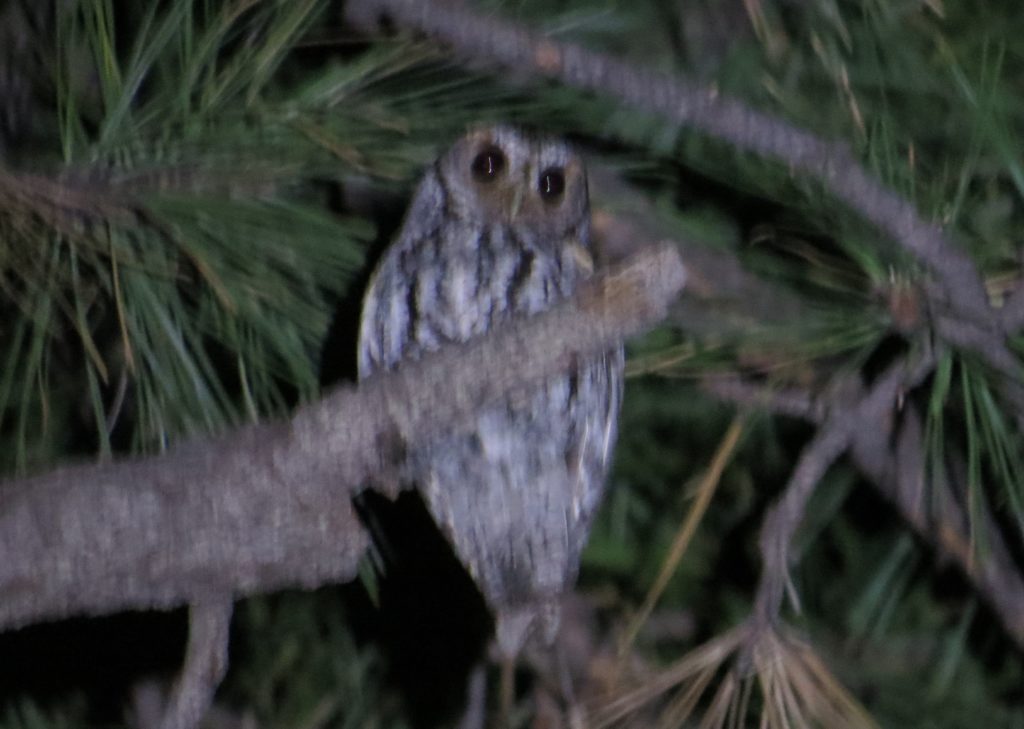
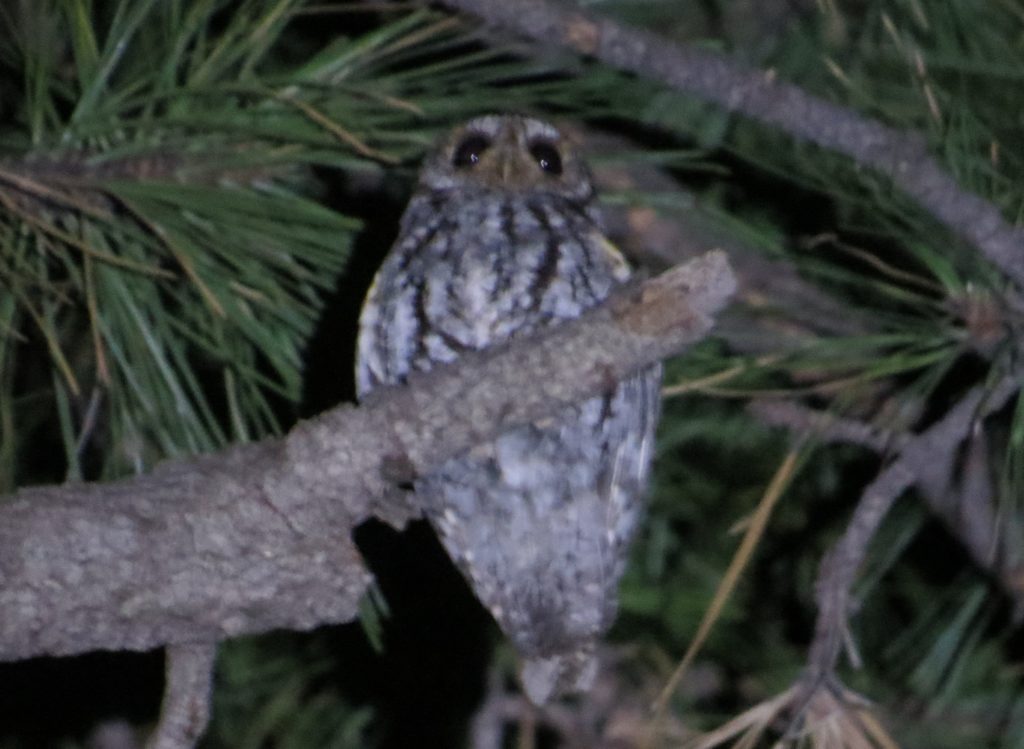
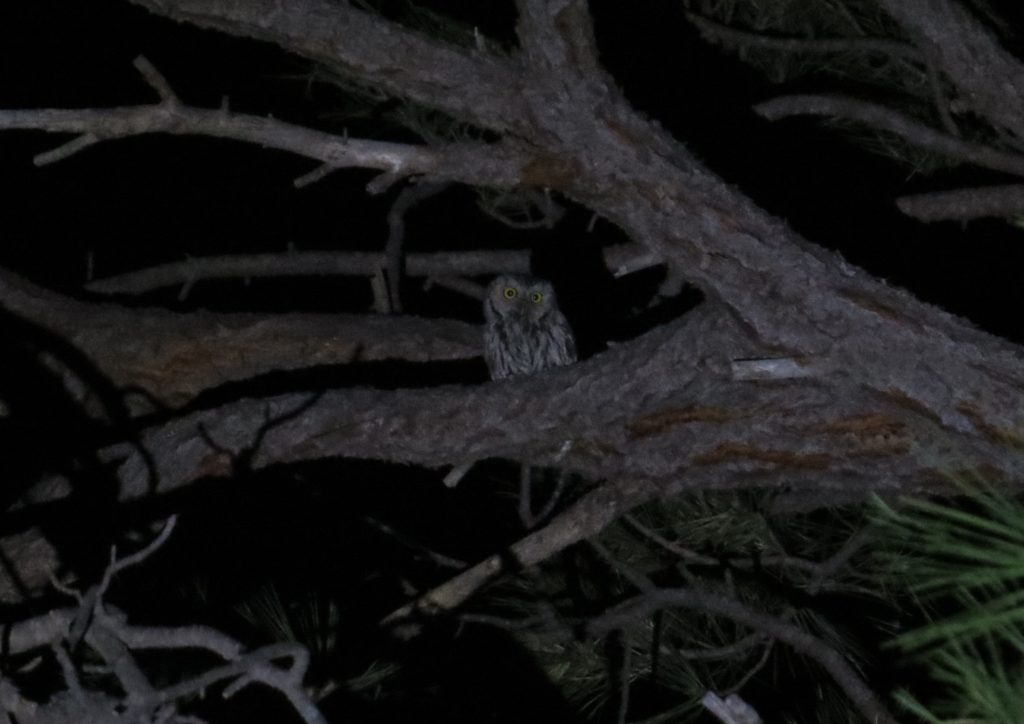
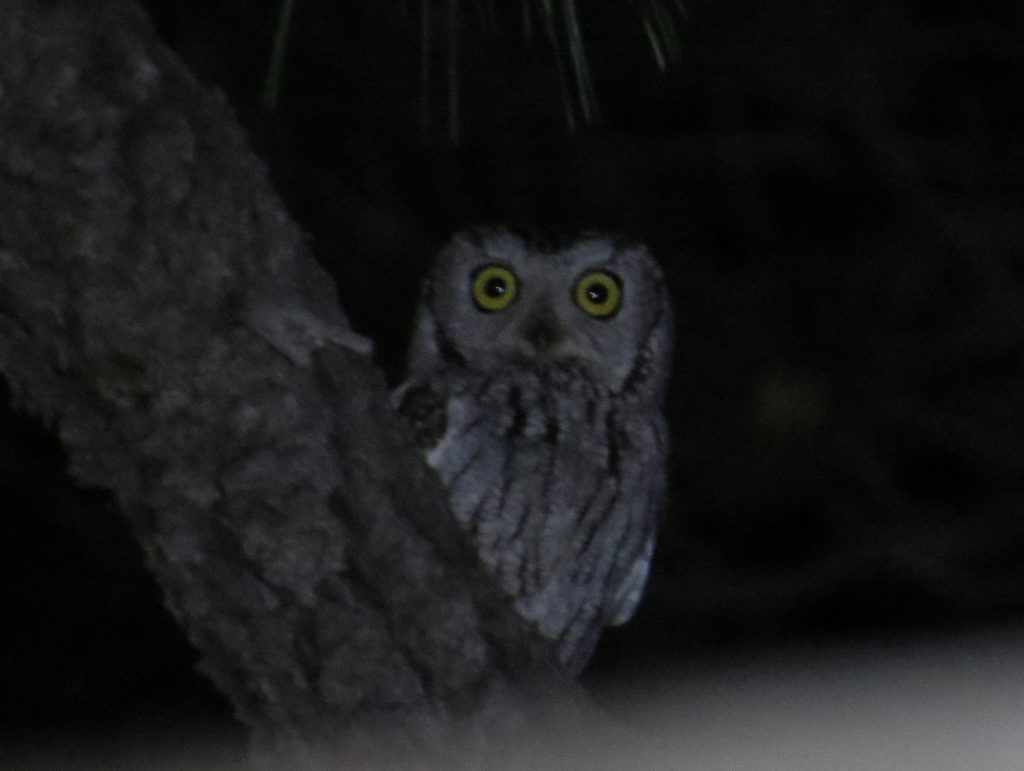 After the Screech-Owl fun, we kept up our search for Flams with no further sightings. A pair of dueting Great Horned Owls did give us a three-Owl night, however. With Flammulated Owl locked down and photo-documented as my 17th Owl lifer, the trip was a huge success. A fun coincidence is that the Flam was Tommy’s 17th Owl species for TOBY. I can’t thank Tommy enough for all the Owl species he has shown me (7 in all!). The next day we celebrated in a most appropriate way–eating at the Toasted Owl Cafe right by our resort in Flagstaff. It’s very good, by the way.
After the Screech-Owl fun, we kept up our search for Flams with no further sightings. A pair of dueting Great Horned Owls did give us a three-Owl night, however. With Flammulated Owl locked down and photo-documented as my 17th Owl lifer, the trip was a huge success. A fun coincidence is that the Flam was Tommy’s 17th Owl species for TOBY. I can’t thank Tommy enough for all the Owl species he has shown me (7 in all!). The next day we celebrated in a most appropriate way–eating at the Toasted Owl Cafe right by our resort in Flagstaff. It’s very good, by the way.

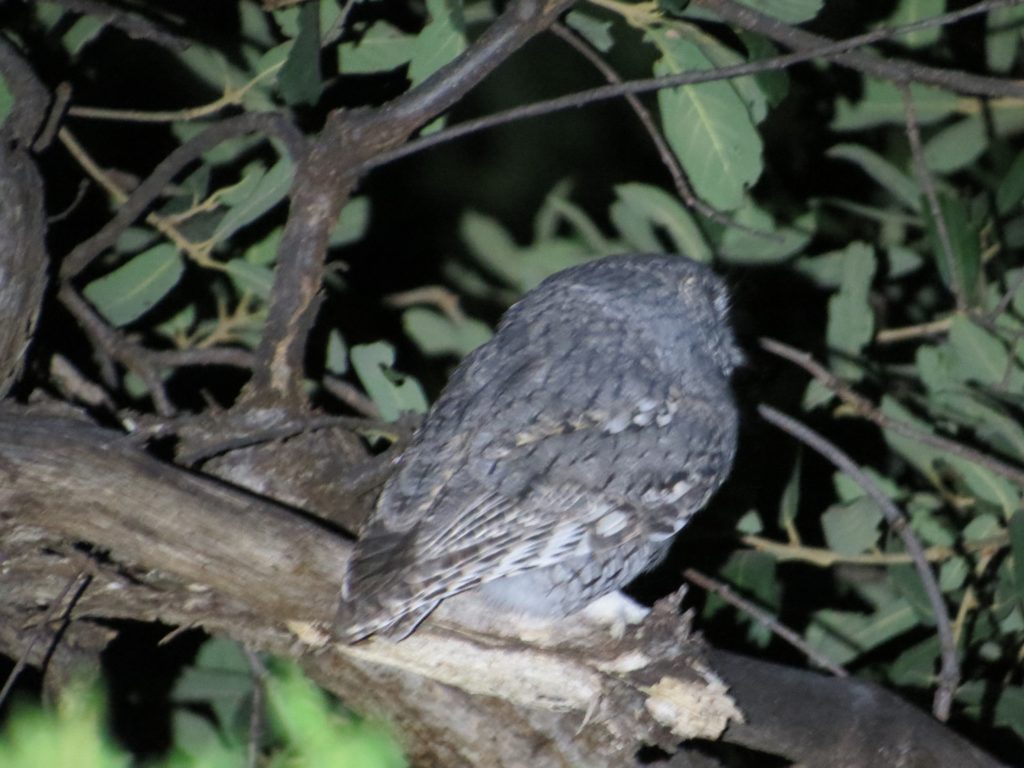 As we crept along the canyon hillside to get in a better position to see the Owl’s face, it suddenly flew off! We could not find it again. The satisfaction of getting the lifer was muted by the Owl showing us his bad side and only briefly at that. Would this be my lifer sighting–the side view of a bird? The discouragement was returning the longer we weren’t finding it. Again, Tommy never panicked or wavered; he just kept that flashlight moving. And then I heard him say those awesome words that I have heard him say so many times before, “Hey, Josh!”
As we crept along the canyon hillside to get in a better position to see the Owl’s face, it suddenly flew off! We could not find it again. The satisfaction of getting the lifer was muted by the Owl showing us his bad side and only briefly at that. Would this be my lifer sighting–the side view of a bird? The discouragement was returning the longer we weren’t finding it. Again, Tommy never panicked or wavered; he just kept that flashlight moving. And then I heard him say those awesome words that I have heard him say so many times before, “Hey, Josh!”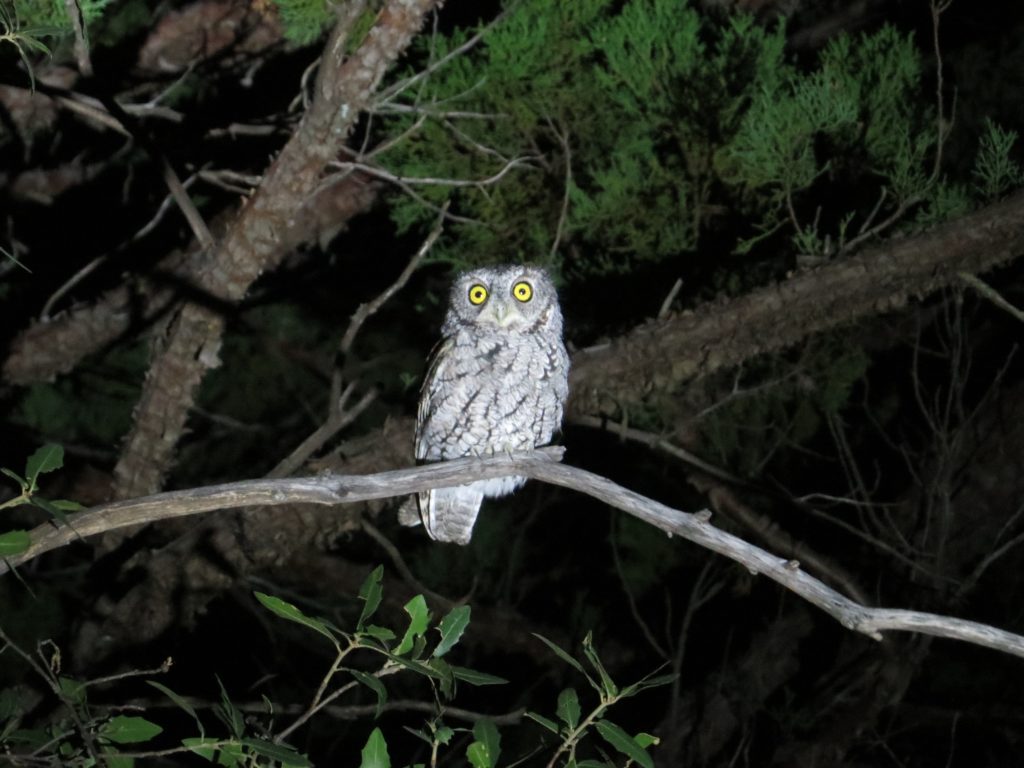 This, this is what I had been waiting/hoping for. Tommy did it.
This, this is what I had been waiting/hoping for. Tommy did it.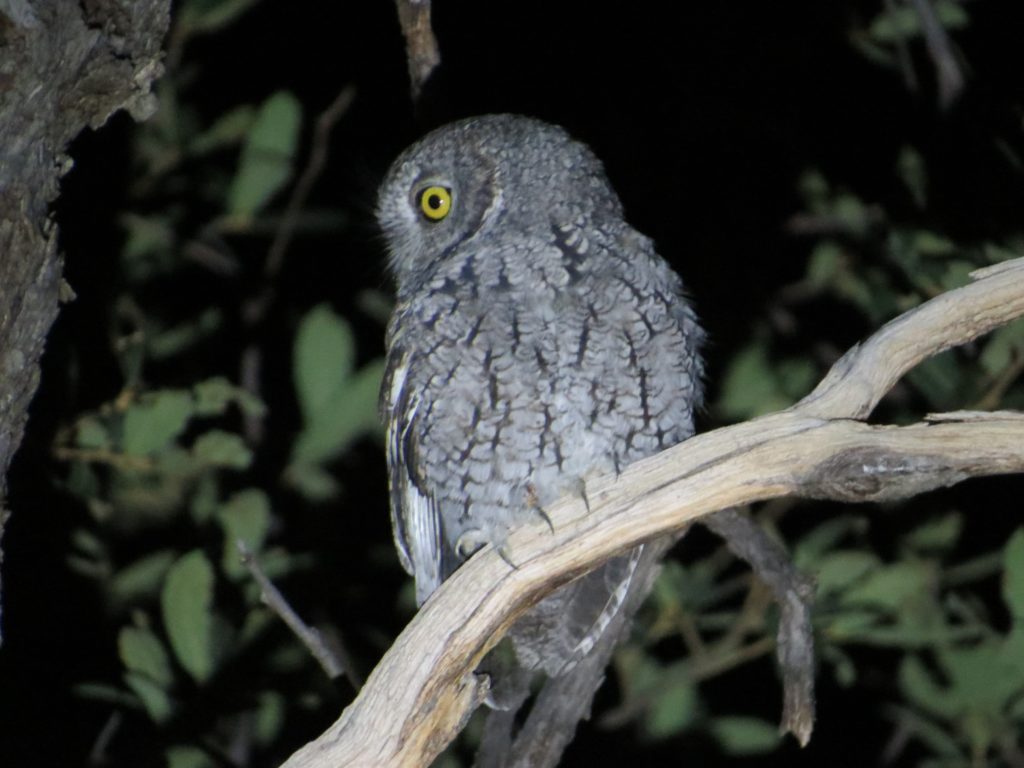
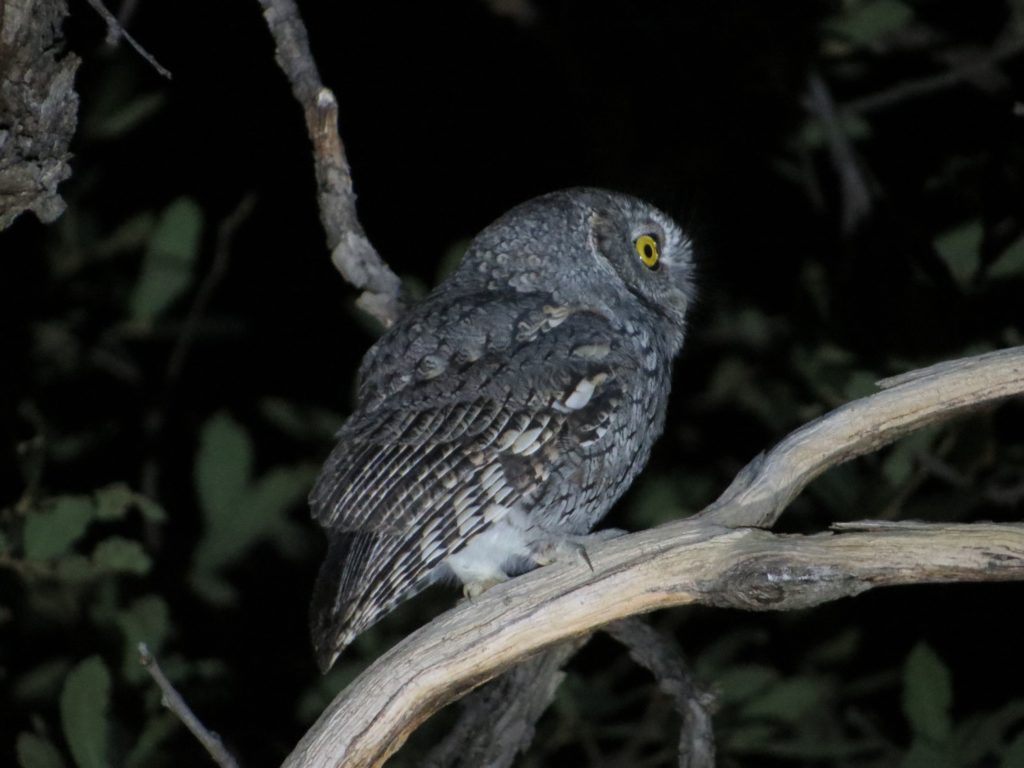 Maybe I had it backwards. Maybe it was the Owl who was enjoying the show of four happy birders who had just succeeded on their mission.
Maybe I had it backwards. Maybe it was the Owl who was enjoying the show of four happy birders who had just succeeded on their mission.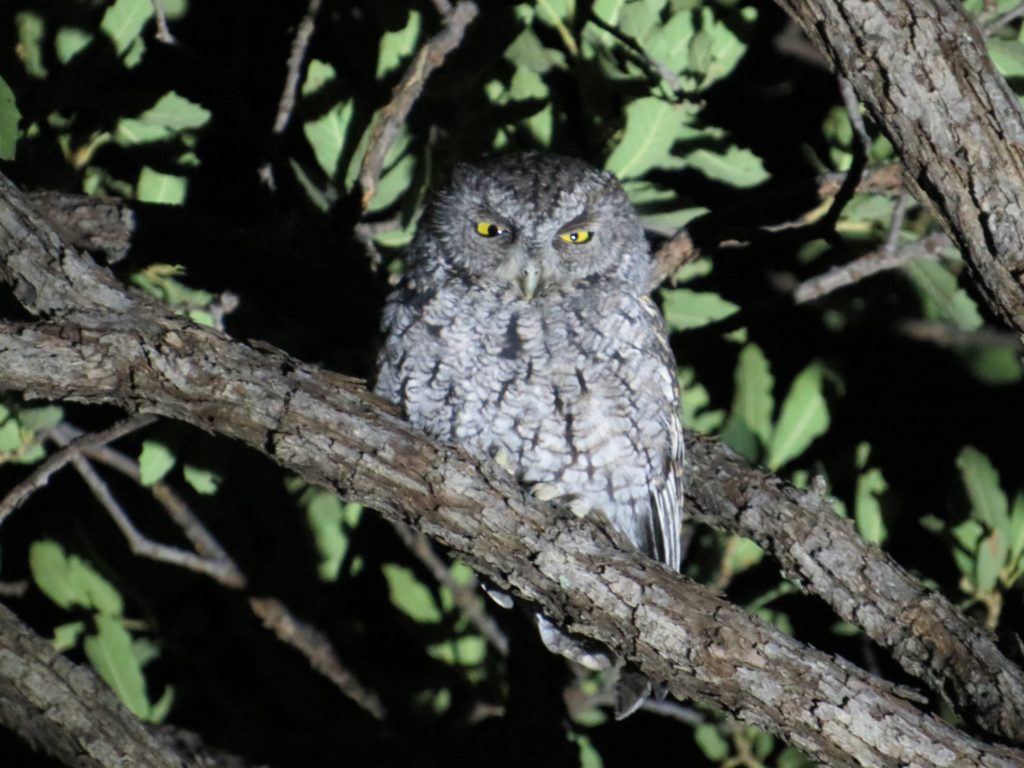
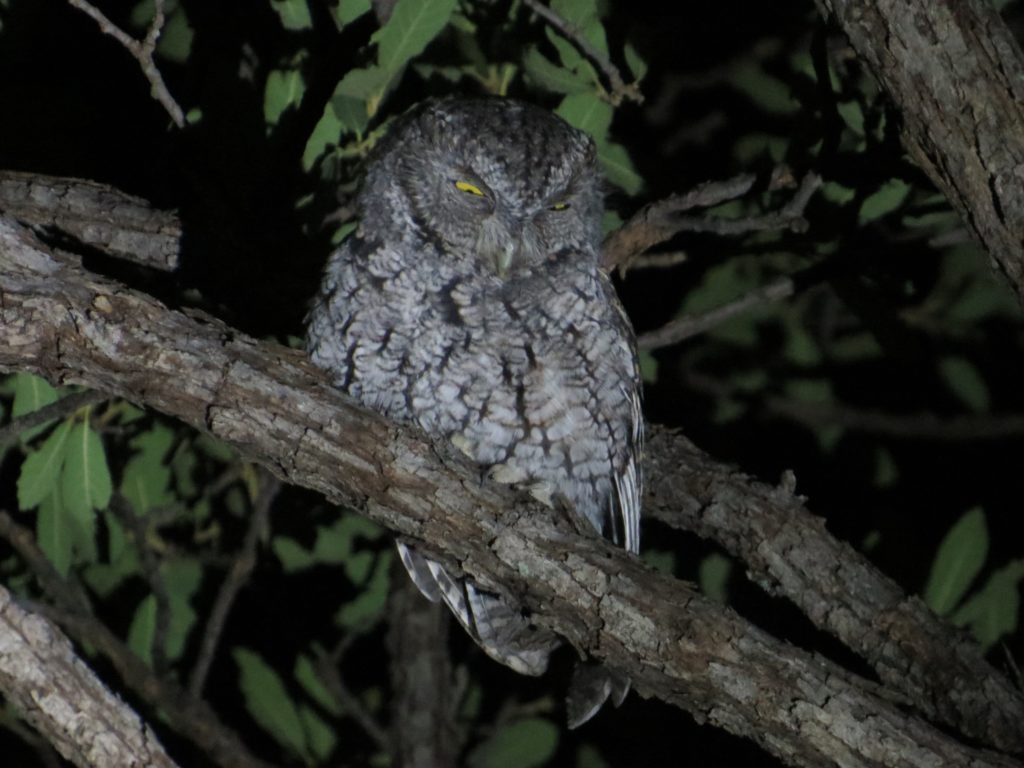
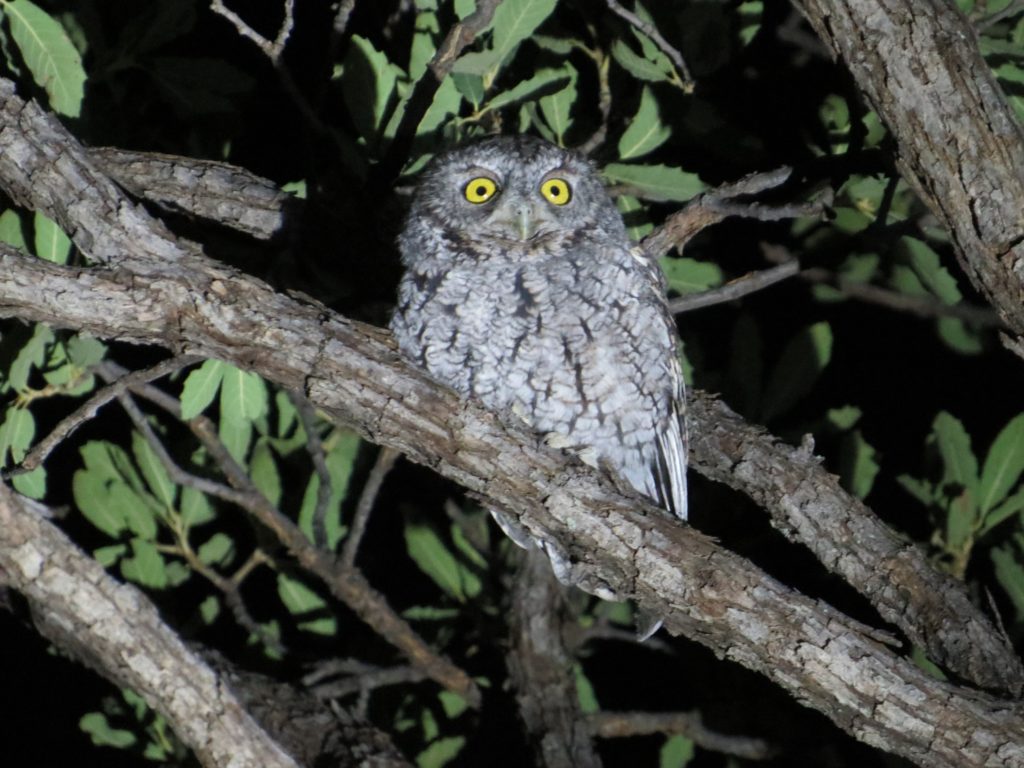 At this point Dad went back to the car on account of a knee that was giving him fits. Gordon, Tommy, and I decided we would try for more Whiskered Screeches. Why not?
At this point Dad went back to the car on account of a knee that was giving him fits. Gordon, Tommy, and I decided we would try for more Whiskered Screeches. Why not?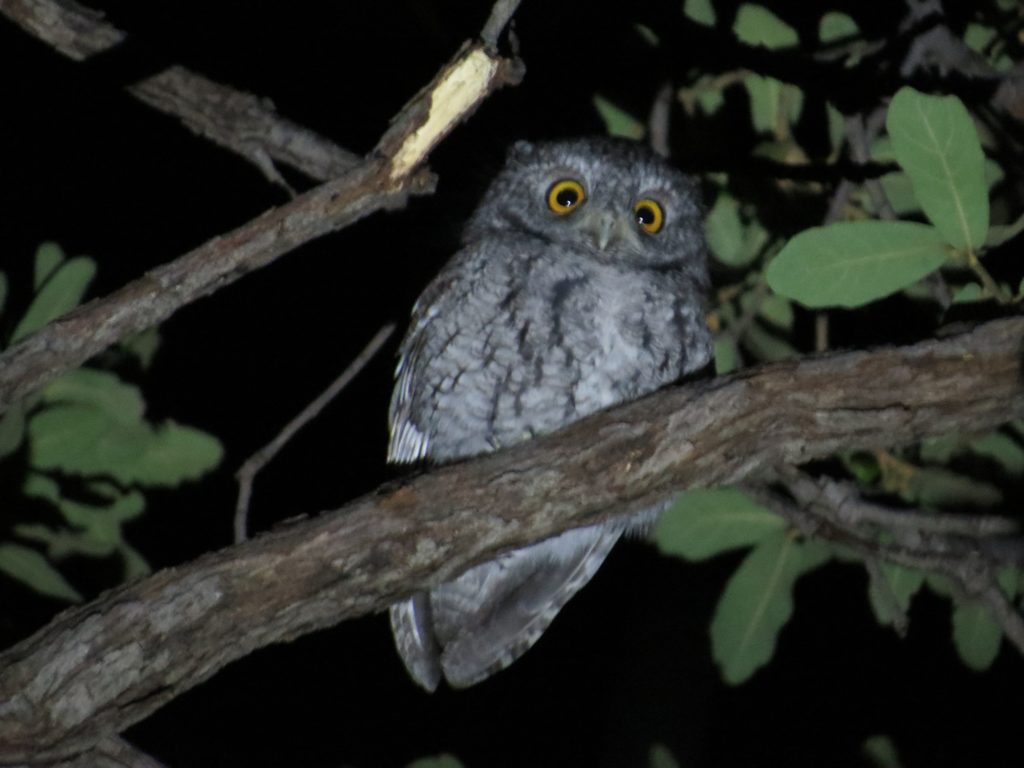 Hearing this vocalization was an exciting learning experience for Tommy. It wasn’t as cool as the Morse-code calling we heard the adult make earlier, but it was still pretty neat regardless. Have a listen for yourself:
Hearing this vocalization was an exciting learning experience for Tommy. It wasn’t as cool as the Morse-code calling we heard the adult make earlier, but it was still pretty neat regardless. Have a listen for yourself: Two Owl lifers remain for me in Arizona. The question is not whether Tommy can help find them, but rather, will it happen in 2017? Time will tell.
Two Owl lifers remain for me in Arizona. The question is not whether Tommy can help find them, but rather, will it happen in 2017? Time will tell.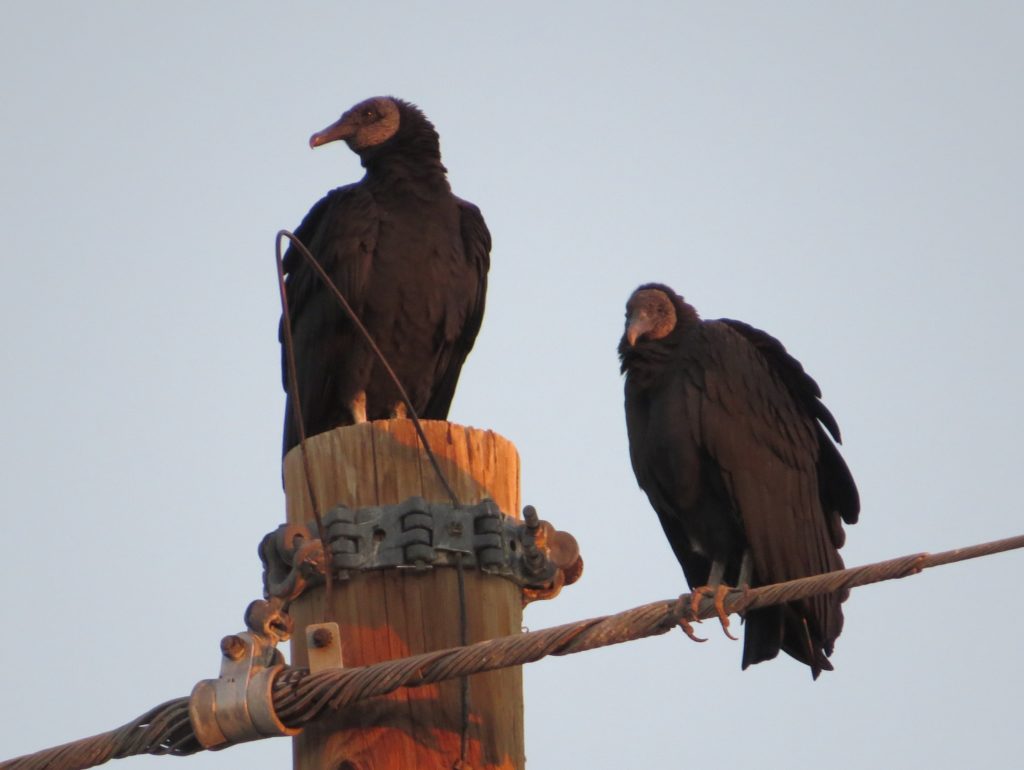
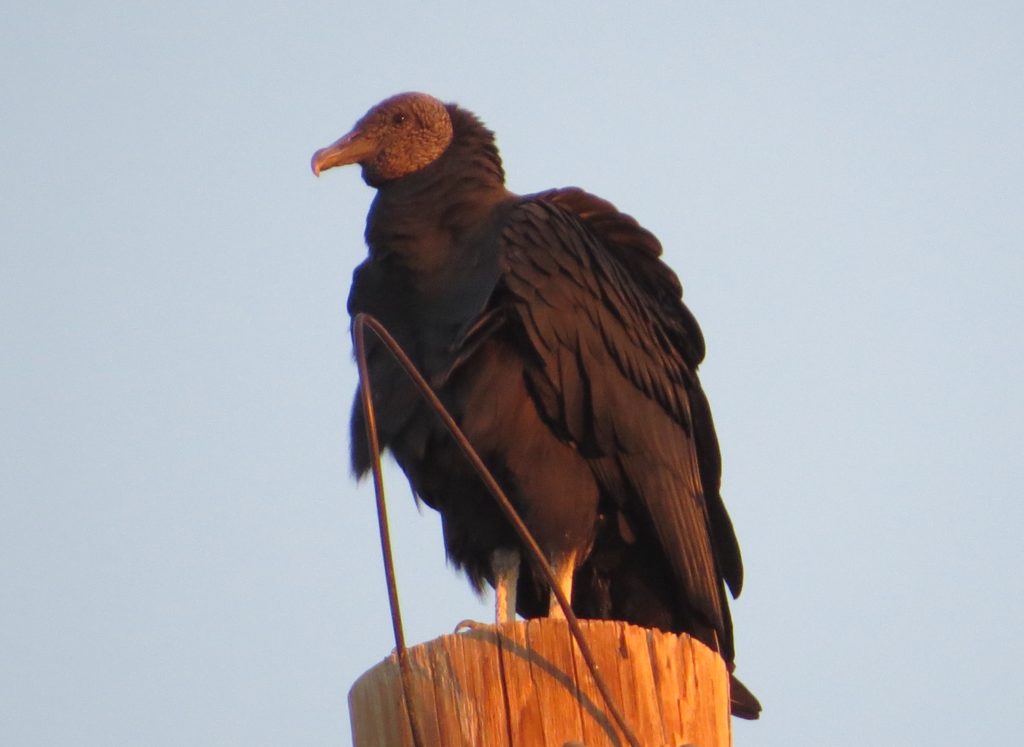 Eventually they did lift off allowing us to see the white “hands” of the underwing, but I wasn’t able to capture a photo of it. Later in the trip, though, I spied a small kettle of this new-to-me Vulture and was able to photograph them in flight.
Eventually they did lift off allowing us to see the white “hands” of the underwing, but I wasn’t able to capture a photo of it. Later in the trip, though, I spied a small kettle of this new-to-me Vulture and was able to photograph them in flight.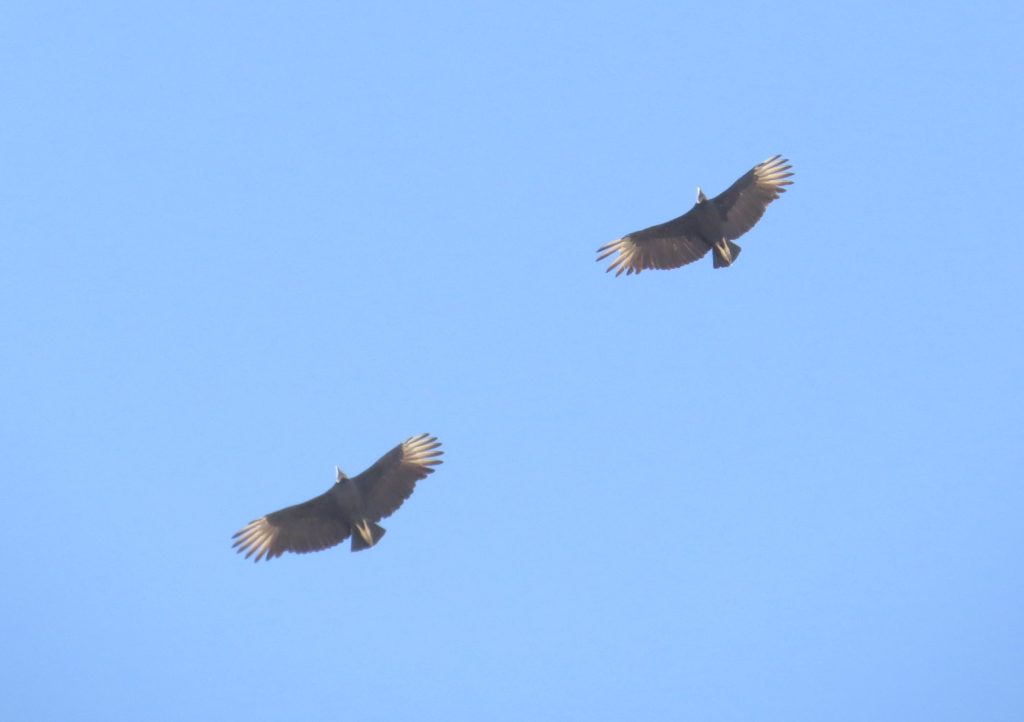 While I was Vulture-hunting with Dad and Gordon, Tommy called saying he had located the Tricolored Heron. So we headed over. Unfortunately it was distant and horribly back-lit and not providing the shocking, up-close looks a lot of birders have gotten of it recently. Tommy and I spent a lot of time trying to find a way to get closer to the bird but we were striking out. On our way out of GWR, we spotted it flying to a better location and I was able to get some photos.
While I was Vulture-hunting with Dad and Gordon, Tommy called saying he had located the Tricolored Heron. So we headed over. Unfortunately it was distant and horribly back-lit and not providing the shocking, up-close looks a lot of birders have gotten of it recently. Tommy and I spent a lot of time trying to find a way to get closer to the bird but we were striking out. On our way out of GWR, we spotted it flying to a better location and I was able to get some photos.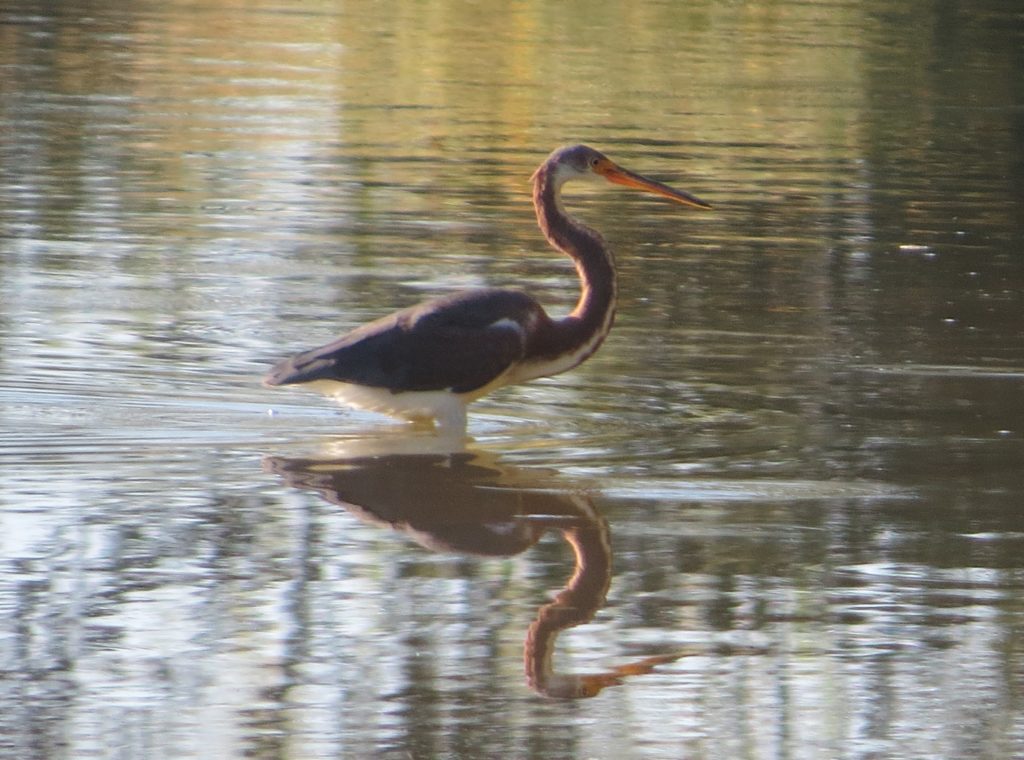 After this brief morning outing with the main objective birds secured, we parted company with Tommy and Gordon–we would all later be meeting up that evening in Madera Canyon in southern Arizona to go after the #1 bird of the trip. Once the family was all settled in our Green Valley hotel, Dad and I headed out once again to meet Tommy and Gordon at the Santa Rita Lodge. After watching a couple Magnificent Hummingbirds on the feeders, we decided to use the last half hour of daylight to try for one more lifer, a Rufous-winged Sparrow. Tommy knew just where to go, and he did not disappoint.
After this brief morning outing with the main objective birds secured, we parted company with Tommy and Gordon–we would all later be meeting up that evening in Madera Canyon in southern Arizona to go after the #1 bird of the trip. Once the family was all settled in our Green Valley hotel, Dad and I headed out once again to meet Tommy and Gordon at the Santa Rita Lodge. After watching a couple Magnificent Hummingbirds on the feeders, we decided to use the last half hour of daylight to try for one more lifer, a Rufous-winged Sparrow. Tommy knew just where to go, and he did not disappoint.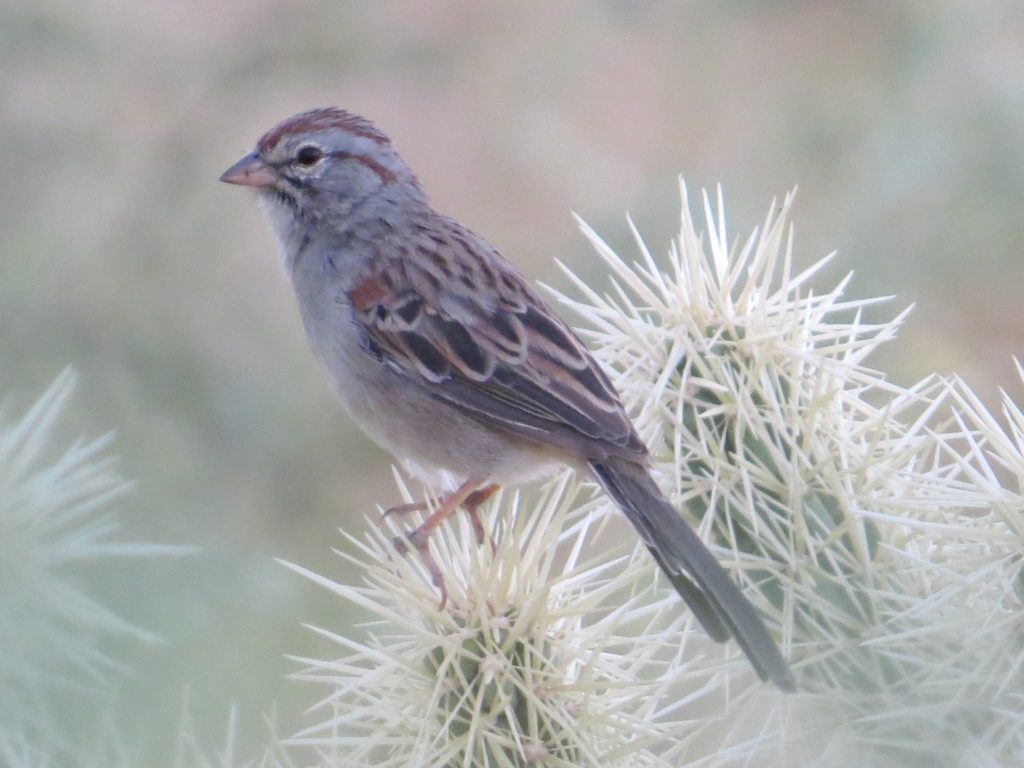
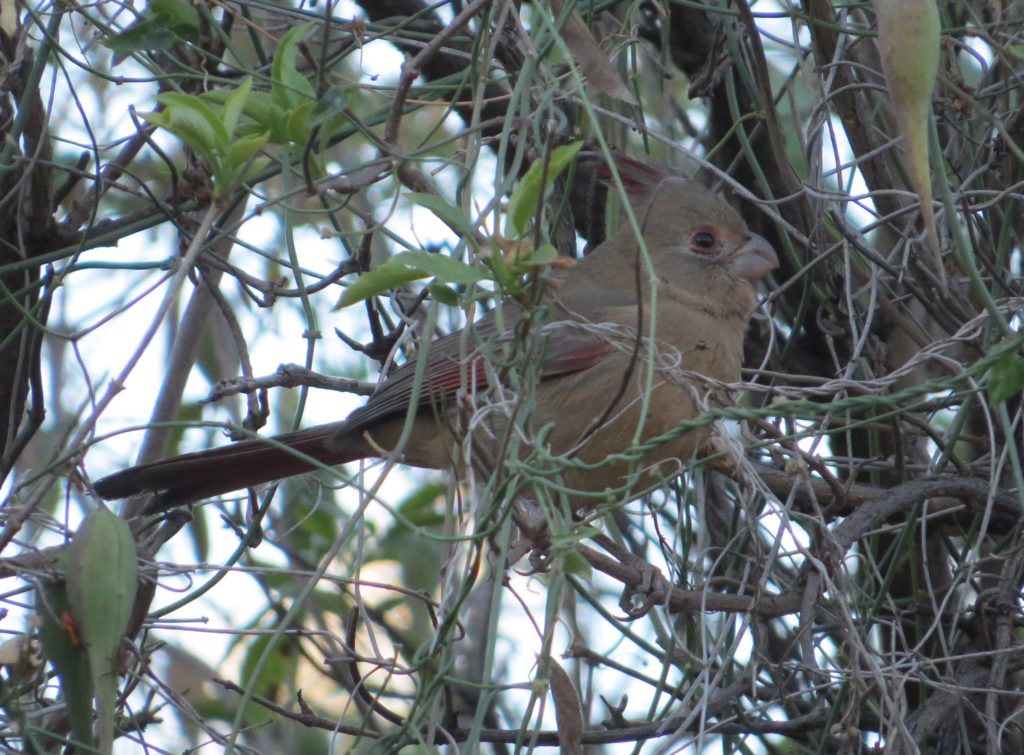 The only other lifer on this walk was a Gray Flycatcher that Tommy detected. I continue to be amazed by how much I find myself liking Empids.
The only other lifer on this walk was a Gray Flycatcher that Tommy detected. I continue to be amazed by how much I find myself liking Empids.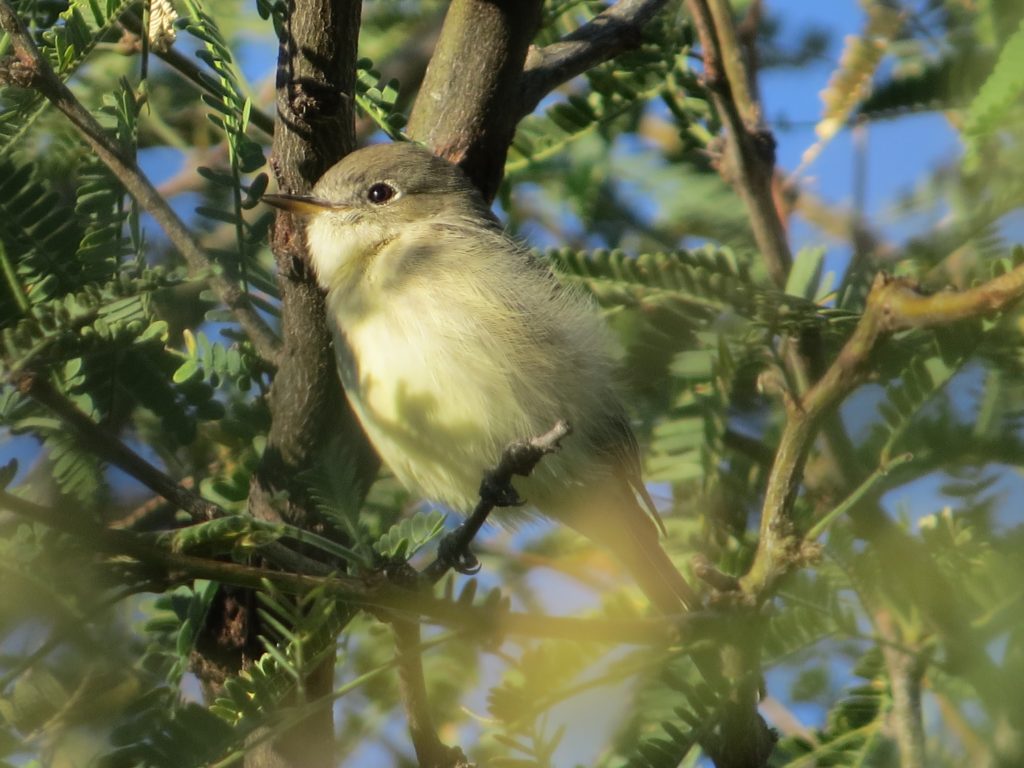 Finally, the last lifer is one I picked up in the desert scrub around the hotel. Lifering around the parking lot while waiting for the family has become sort of a tradition now. While last year I picked up Rock Wren and Cassin’s Kingbird lifers at the hotel, this year I found a cheerful little flock of Brewer’s Sparrows.
Finally, the last lifer is one I picked up in the desert scrub around the hotel. Lifering around the parking lot while waiting for the family has become sort of a tradition now. While last year I picked up Rock Wren and Cassin’s Kingbird lifers at the hotel, this year I found a cheerful little flock of Brewer’s Sparrows.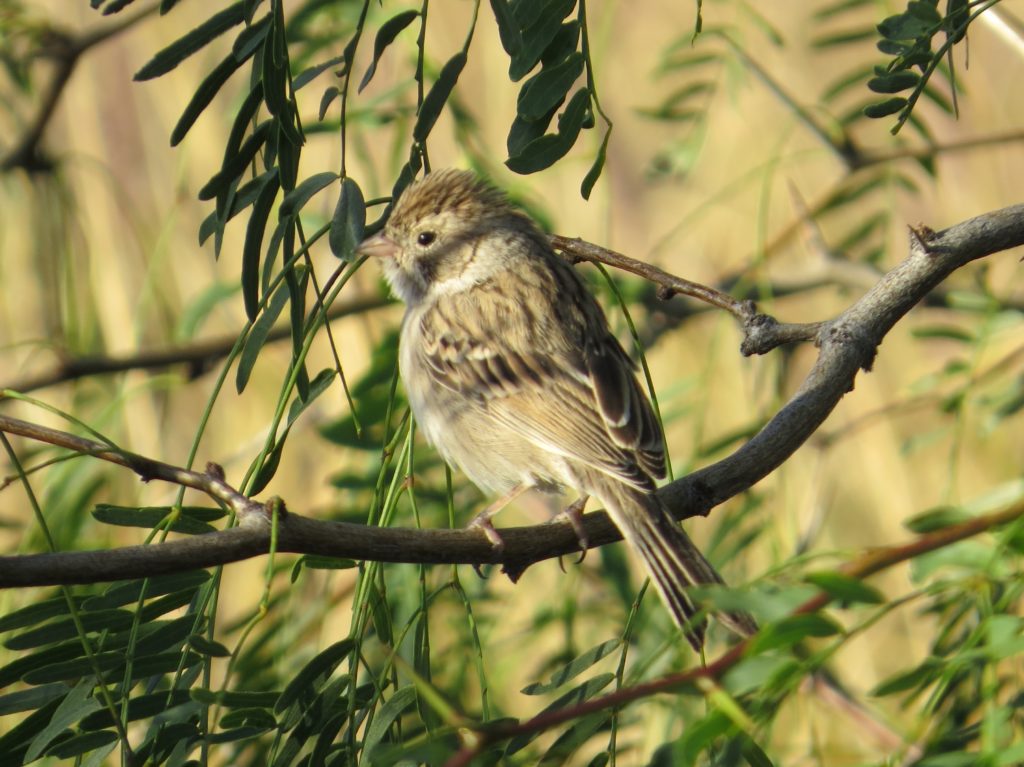 I’m saving the best for last and putting it in a post all on its own. Nightbirding usually means one thing: Owls. Coming up is a multimedia post of our successful night. Stay tuned!
I’m saving the best for last and putting it in a post all on its own. Nightbirding usually means one thing: Owls. Coming up is a multimedia post of our successful night. Stay tuned!